
A Mathematician's Journey to the Edge of the Universe:
What's the Ultimate Question?
"The only true wisdom is in knowing you know nothing."
Socrates
Manjunath.R
#16/1, 8th Main Road, Shivanagar, Rajajinagar, Bangalore560010, Karnataka, India
*Email: manjunath5496@gmail.com
Despite my best efforts to assure the accuracy of the material in this book, I do not accept and hereby disclaim any liability to any party for any loss, damage, or disruption caused by mistakes or omissions, whether caused by negligence, accident, or anyother cause.
For anysuggestions or concerns, please write to me: manjunath5496@gmail.com
© Copyright 2019 Manjunath.R
(CC BY-NC-SA 4.0)
Under the terms ofthe cc-4.0-by license, you may:
Share – copyand distribute the content in any form or media
Remix, alter, and build upon the content for any non-commercialobjective
As long as you comply bythe conditions ofthe license, the licensor cannot revokethese rights. You have to
Provide proper recognition;
Cite the license by including a link to it (https://creativecommons.org/licenses/by-nc-sa/4.0/); and
Specifywhether (and if so, which) changes were made fromthe original.
Disclaimer
This work is licensed under a Creative Commons Attribution-NonCommercial-ShareAlike International License
.
Dedication
I dedicate this book to everyone who has contributed significantly to our understanding of the universe as a whole, why it is the way it is, and why it even exists.

Acknowledgements
Without the amazing work of some renowned cosmologists and physicists, their creativity, and their inventiveness in thefield of cosmology, this book would not have been accomplished. I would like to use this opportunity to thank my dearest friend and well-wisher "Lawrence" for his unwavering support during the COVID crisis and for giving me access to all the resources I needed to finish this book. I want to express my gratitude to my family for their support and encouragement as I wrote this book, especially to my mother, who has been a tremendous source of inspiration in my life. I owe a lot of gratitude to my mother for teaching me how to be perseverant and strong in life. Finally, I want to emphasize how crucial patience is when writing a book or taking on any other project in life.

"Look up at the stars and not down at your feet. Try to make sense of what you see, and wonder about what makes the universe exist. Be curious."
Stephen Hawking
We as a species who are ourselves mere collections of elementary particles of nature –blindly refuse to accept reality as it is try to comprehend the current state, the beginnings, and the operation of the forces that make up our universe − wonder, seek answers and gazing at the immense heavens above, we have always asked a multitude of questions: What does Matter under Extreme Conditions Look Like and How Does It Act? What is Dark Matter? Why is it obscure to us? And what connection does it have to the Big Bang and dark energy? Are there any intellectual beings in the universe than us? What will happen at the end of time? What is Dark Energy? How Has the Universe's Elemental Components changed over Time? What resides within a black hole? Does the graviton have mass? How do Superstrings work? How can we calculate the universe's size and age? Is it worthwhile to travel to space? What prevents us from going back in time? Can things travel away from us more quickly than the speed of light? What are the determinants of particle masses and what sorts of masses do Neutrinos Have? Has planet Earth ever been visited by extraterrestrial species? What does the universe grow into? How can Quantum Mechanics and Einstein Gravity be made consistent? What makes space devoid of gravity? What location is the universe's center? How far does the universe extend? The Big Bang: Is it a Black Hole? Many others! Though attempting to revolve our collective consciousness around the universe's key questions is generally hard, doing so can be a lifeaffirming journey and these questions continue to trouble us despite the massive amounts of data coming in from observatories around the globe and from particle physics experiments like the Large Hadron Collider in Switzerland, as well as despite the countless hours that we spend in front of a blackboard or running computational simulations.
We do not understand the purpose of the universe, which may raise questions about the cosmic intelligence. However, in the realm of theoretical physics, we are unsure of which theoretical approaches might be correct, despite the fact that they are highly tempting and intriguing to address the topic. Advances in our understanding of basic physics, quantum gravity, and the
Introduction
ultimate unified theory are necessary for understanding the cosmos. There are numerous things we still don't understand, ranging from the nature of the world to the meaning of dreams. This book is a glimpse into the living story of our universe and a clear, readable and self-contained introduction to the story of how our understanding of the cosmos has evolved significantly over time. It fills the gap and addresses the issues that are important to everyone, or at least to everyone reading this book, and it inspires us to explore the entire cosmos from creation to ultimate destruction, with a wealth of secrets at every turn. As we read this book, we will learn about the vast variety of celestial objects in the universe, from planetary systems to stars to black holes, and we will get a deeper understanding of astronomy as a discipline. This book concentrates on presenting the subject from the understanding perspective of cosmology and brings the reader right up to date with curious aspects of cosmology established over the last few centuries. This book assumes cosmology a journey not a destination and the advance of knowledge is an infinite progression towards a goal that forever recedes. This book will be of interest to students, teachers and general science readers interested in fundamental ideas of cosmology from the quarks to the physics of the universe
Why something? Why not nothing?
is
Science
Why
There Universe rather Than Nothing?
scrambles, Nature mystifies.
Image credit: Wikimedia Commons
License: Public Domain
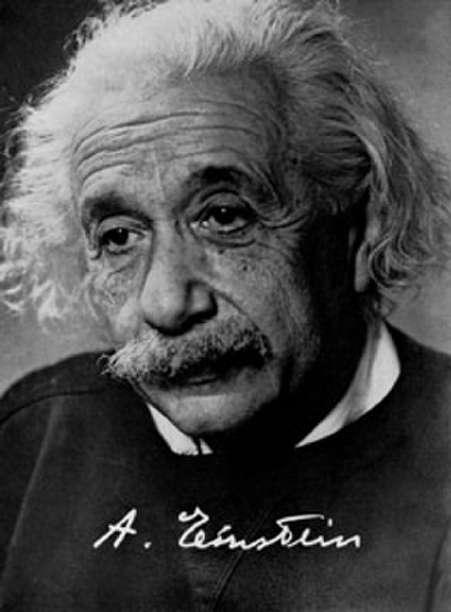

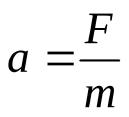
As long back as history is known, physicists and scientists have investigated a variety of theories over the years to explain our universe and its future. Everything exists in the cosmos. It encompasses all of space as well as the matter and energy that it holds. Even time is a part of it, and we are obviously a part of it. Since the dawn of the history of science from Copernicus (who took the details of Ptolemy, and found a way to look at the same construction from a slightly different perspective and discover that the Earth is not the center of the universe) and Galileo to the present, we (a hoard of talking monkeys who's consciousness is from a collection of connected neurons − hammering away on typewriters and by pure chance eventually ranging the values for the fundamental numbers that would allow the development of any form of intelligent life) have gazed at the stars and attempted to chart the heavens and still discovering the fundamental laws of nature often get asked:
Why is there a universe instead of nothing? Was the Big Bang the universe's initial point of origin? Aside than the Big Bang, are there any other theories? What is the evidence for the Big Bang? Are there exotic properties in the geometry of spacetime and does there exist a multiverse? How numerous are Life Forms in the Universe? Why is time different from space, where does spacetime come from, and why is it four dimensional?
Does time exist independently of the universe? How old is the Universe? Is the Universe infinite? Could the universe have a boundary? Why are the energies of known particles so small in comparison to the Planck Energy Scale, and Does Supersymmetry Exist?
Is the cosmos stable? What is Human Consciousness? How Consistent Is Physics Mathematically? Is Quarks constricted inside the Particles they constitute every time? What further new Particles need to be found?
We believe that there is more of everything, including stars, galaxies, planets, and other celestial objects, beyond the boundary of the observable universe. However, we do not know the size of the entire cosmos because it cannot be observed. According to inflation theory, the universe must be at least 1062 times larger in circumference than what can be observed. Beginning at Stonehenge and ending with the current crisis in String Theory, the story of this eternal question to uncover the mysteries of the universe describes a narrative that includes some of the greatest discoveries of all time and leading personalities, including Aristotle, Johannes Kepler, and Isaac Newton, and the rise to the modern era of Einstein, Eddington, and Hawking.
1
THE HISTORY OF THE UNIVERSE IN 1000 WORDS OR LESS
Cosmic Event
Big Bang: The model describes how the universe expanded from a very high density and hightemperature state, and offers a comprehensive explanation for a broad range of phenomena, including the abundance of light elements, the cosmic microwave background (CMB) radiation whose temperature at any redshift z is: T = 2.725 ± 0.002 (1 + z) and, large-scale structure and Hubble's law (the farther away galaxies are, the faster they are moving away from Earth).
Big Bounce: It is a hypothetical scientific theory of the formation of the universe which boils down to the idea that the universe is caught in a cycle where it expands after the Big Bang, then begins to contract. It was originally suggested as a phase of the cyclic model or oscillatory universe interpretation of the Big Bang, where the first cosmological event was the result of the collapse of a previous universe − so in this way the universe would last forever, but would pass through phases of expansion (Big Bang) and contraction (Big Crunch). When it comes to models of the universe, the Big Bang theory is almost accepted as a fact. However, it's still uncertain, and some believe that the universe didn't kick-started with a bang, but a bounce.
Spontaneous creation: An interesting idea is that the universe could be spontaneously created from nothing and the problem of singularity can be avoided naturally.
in which our universe was born.
or or
2
Inflation in which the Grand Unified Force was separated into the Four Forces of Nature as We Now Know Them, and the Universe started to Expand to Many Times Its Original Size by a factor of the order of 1026 over a time of the order of 10 33 to 10 32 seconds – Rapid expansion in which the universe cooled from about 1027 down to 1022 Kelvin, though not Quite as Quickly. The concept of charge and spin had a central and fundamental position. So, quantities such as charge and spin were correlated with mass.
What took place was not destruction; it was transformation. PARTICLEANTIPARTICLE ANNIHILATION in which All the Antiparticles in the Universe Annihilated Almost All the Particles, Creating a Universe Made up of Matter and Photons (bursts of electromagnetic radiation) and no antimatter. Several conservation laws were satisfied during the annihilation process, including:
Conservation of electric charge.
Conservation of linear momentum and total energy.
Conservation of angular momentum.
The mass that vanished multiplied by the square of the speed of light in a vacuum, was the quantity of energy created by annihilation. Annihilation served as a concrete demonstration of the half an inch long Albert Einstein's most famous equation: E = mc2 a victory of the strength and elegance of fundamental physics
DEUTERIUM AND HELIUM PRODUCTION in which Many of the Protons and Neutrons in the Early Universe Combined to Form Heavy Hydrogen and Helium. Deuterium consisted of a proton and a neutron held together by the strong nuclear force and helium consisted of (2 protons + 2 neutrons).
There was a continuous exchange of virtual photons between the nuclei and the electrons. And the exchange was good enough to produce what else? A force (proportional to a quantity called their charge and inversely proportional to the square of the distance between them). And that force pulled the electrons towards the nuclei to form neutral atoms. RECOMBINATION in which negatively charged Electrons Combined with Hydrogen and Helium Nuclei, Producing Neutral Atoms. The atoms reflected, absorbed and scattered photons. And there was cosmic microwave background radiation.
3
The number of protons in the nucleus of a neutral atom was equal to the number of electrons in its orbit. The weak force's range was 10 17 m, while the strong force's was 10 15 m. The usual diameter of an atom was about 10 10 m and hence the range of these forces was lower than atomic sizes. A photon of wavelength "λ" had energy "E" given by: E = hc λ (where h denoted the fundamental physical constant of crucial significance in quantum mechanics that defined the quantum nature of energy and c was the cosmic speed limit) There was a continuous exchange of a massless graviton between one matter and the other. And the exchange was good enough to produce a force called gravity. And the dragging pull of gravity caused the expansion rate of the universe to slow down.
GALAXY FORMATION in which the Milky Way Galaxy was Formed
TURBULENT FRAGMENTATION in which a Giant Cloud of Gas Fragments broke into Smaller Clouds, which later Became Protostars – MASSIVE STAR FORMATION in which a Massive Star was Formed.
STELLAR EVOLUTION in which Stars Evolved and Eventually Died – IRON PRODUCTION in which Iron was Produced in the Core of a Massive Star, Resulting in a Disaster called SUPERNOVA EXPLOSION in Which a Massive Star Ended Its Life by Exploding – STAR FORMATION in which the Sun was Formed. The singularities produced by gravitational collapse occurred only in places, like black holes, where they were decently hidden from outside view by an event horizon.
PLANETARY DIFFERENTIATION in which the Planet Earth was Formed –VOLATILE GAS EXPULSION in which the Atmosphere of the Earth was Produced In addition to providing the oxygen that living organisms required to survive, the atmosphere also shielded them from dangerous Ultraviolet solar radiation
MOLECULAR REPRODUCTION in which Life on Earth was created.
PROTEIN CONSTRUCTION in which Proteins was built from Amino Acids –FERMENTATION in which Bacteria Obtained Energy from Their Surroundings
CELL DIFFERENTIATION in which Eukaryotic Life had a beginning.
RESPIRATION in which Eukaryotes Evolved to Survive in an Atmosphere with Increasing Amounts of Oxygen – MULTICELLULAR ORGANISMS CREATION In Which Organisms Composed of Multiple Cells emerged – SEXUAL REPRODUCTION
–
–
–
4
in Which a New Form of Reproduction Occurred and with the invention of sex, two organisms exchanged whole paragraphs, pages and books of their DNA helix, producing new varieties for the sieve of natural selection. And the natural selection was a choice of stable forms and a rejection of unstable ones. And the variation within a species occurred randomly, and that the survival or extinction of each organism depended upon its ability to adapt to the environment. And organisms that found sex uninteresting quickly became extinct. Every organism was endowed with two elements: a set of instructions that tell them how to sustain and multiply themselves, and a mechanism to carry out the instructions. The two elements were genes and metabolism
EVOLUTIONARY DIVERSIFICATION in which the Diversity of Life Forms on Earth Increased Greatly in a Relatively Short Time – TRILOBITE DOMINATION In Which Trilobites (an extremely successful subphylum of the arthropods that were at the top of the food chain in Earth's marine ecosystems for about 250 million years) Ruled the Earth.
LAND EXPLORATION In Which Animals First Venture was Onto Land – COMET COLLISION in which a Comet (cosmic snowball of frozen gases, rock and dust) smashed the Earth – DINOSAUR EXTINCTION In Which the Dinosaurs (a group of reptiles that dominated Earth's terrestrial ecosystem for around 245 million years, during the Mesozoic Era) Died.
MAMMAL EXPANSION in which Many Species of Mammals was developed – HOMO SAPIENS MANIFESTATION In Which our caveman ancestors Appeared. The grass cells possessed tiny molecular factories, called chloroplasts, which were in charge of a dye sensitized photochemical redox process - the conversion of sunlight, water and carbon dioxide into carbohydrates and oxygen. And the eukaryotic cells in a drop of blood contained a different sort of molecular factory, the mitochondrion, which combined respiratory substrates with oxygen to extract useful energy in the form of ATP molecules.
LANGUAGE ACQUISITION in which something called curiosity ensued which triggered the breath of perception and our caveman ancestors became conscious of their existence and they learned to talk and they Developed Spoken Language –GLACIATION in which a Thousand-Year Ice Age Began.
INNOVATION in which Advanced Tools were widely made and Used – RELIGION In Which a Diversity of Beliefs, practices and systems emerged pertaining to the worship of
5
supernatural entity – ANIMAL DOMESTICATION in which Humans Domesticated Animals for food, work, clothing, medicine and many other uses
FOOD SURPLUS PRODUCTION In Which Humans Developed and promoted Agriculture. Most of the food and textiles in the world were provided by agriculture
INSCRIPTION In Which Writing was Invented and it allowed the communication of ideas, opinions and plans.
WARRING NATIONS In Which Nation Battled Nation for Resources – EMPIRE CREATION AND DESTRUCTION In Which the First Empire in Human History Came and went – CIVILIZATION In Which Many and Sundry Events Occurred.
CONSTITUTION In Which a Constitution was Written – INDUSTRIALIZATION in Which Automated Manufacturing and Agriculture Revolutionized the World
WORLD CONFLAGRATIONS In Which Most of the World was at War. In addition to destroying empires, cities and communities, war halted the growth of a country's social and economic structure.
FISSION EXPLOSIONS In Which Humans Developed Nuclear Weapons
COMPUTERIZATION In Which Computers were Developed to store and manage data.
SPACE EXPLORATION In Which Humans Began to Explore Outer Space with the aid of astronomy and space technology – POPULATION EXPLOSION In Which the Human Population of the Earth Increased at a Very Rapid Pace. Population explosion had a number of negative consequences, including competition for resources, increased environmental contamination, and a lack of energy.
SUPERPOWER CONFRONTATION In Which Two Powerful Nations Risked it All
INTERNET EXPANSION In Which a Network of Computers built to transport a wide variety of information resources and services.
RESIGNATION In Which One Human Quitted His Job – REUNIFICATION In Which a Wall went Up and Then Came Down.
WORLD WIDE WEB CREATION In Which a New Medium was Created aiming to provide unrestricted access to a vast array of documents
COMPOSITION In Which a Book was Written – EXTRAPOLATION In Which Future Events were Discussed.
–
–
–
–
–
6
For millions of years, mankind lived just like the animals. Then something happened which unleashed the power of our imagination. We learned to talk and we learned to listen.
Speech has allowed the communication of ideas, enabling human beings to work together to build the impossible. Mankind's greatest achievements have come about by talking, and its greatest failures by not talking. It doesn't have to be like this. Our greatest hopes could become reality in the future.
With the technology at our disposal, the possibilities are unbounded. All we need to do is make sure we keep talking.
― Stephen Hawking
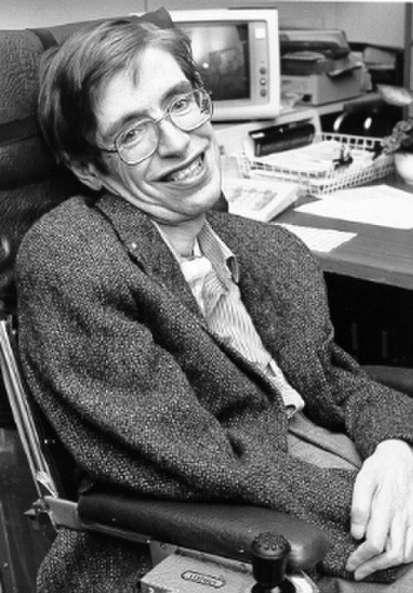
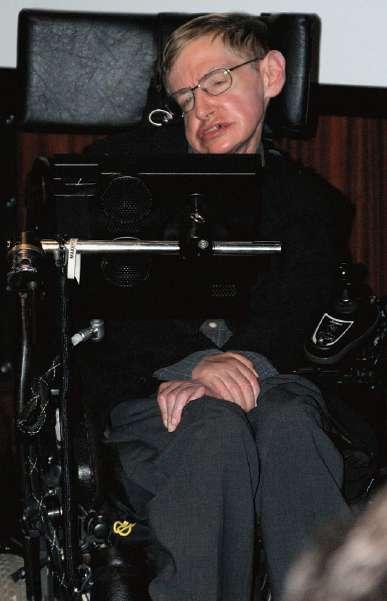
7
Ever since the beginning of human civilization, we have not been in a state of satisfaction to watch things as incoherent and unexplainable. While we have been thinking whether the universe began at the big bang singularity and would come to an end either at the big crunch singularity, we have converted at least a thousand joules of energy in the form of thoughts. This has decreased the disorder of the human brain by about few million units. Thus, in a sense, the evolution of human civilization in understanding the universe has established a small corner of the order in a human brain. However, the burning questions still remain unresolved, which set the human race to keep away from such issues. Many early native postulates have fallen or are falling aside – and there now alternative substitutes. In short, while we do not have an answer, we now have a whisper of the grandeur of the problem. With our limited brains and tiny knowledge, we cannot hope to have a complete picture of unlimited speculating about the gigantic universe we live in.
In 1911, fresh from completion of his PhD, the young Danish physicist Niels Bohr left Denmark on a foreign scholarship headed for the Cavendish Laboratory in Cambridge to work under J. J. Thomson on the structure of atomic systems. At the time, Bohr began to put forth the idea that since light could no long be treated as continuously propagating waves, but instead as discrete energy packets (as articulated by Planck and Einstein), why should the classical Newtonian mechanics on which Thomson's model was based hold true? It seemed to Bohr that the atomic model should be modified in a similar way. If electromagnetic energy is quantized, i.e. restricted to take on only integer values of hυ, where υ is the frequency of light, then it seemed reasonable that the mechanical energy associated with the energy of atomic electrons is also quantized. However, Bohr's still somewhat vague ideas were not well received by Thomson, and Bohr decided to move from Cambridge after his first year to a place where his concepts about quantization of electronic motion in atoms would meet less opposition. He chose the University of Manchester, where the chair of physics was held by Ernest Rutherford. While in Manchester, Bohr learned about the nuclear model of the atom proposed by Rutherford. To overcome the difficulty associated with the classical collapse of the electron into the nucleus, Bohr proposed that the orbiting electron could only exist in certain special states of motion - called stationary
8
states, in which no electromagnetic radiation was emitted. In these states, the angular momentum of the electron L takes on integer values of Planck's constant h divided by 2π, denoted by ħ = h
2π (pronounced h-bar). In these stationary states, the electron angular momentum can take on values ħ, 2ħ, 3ħ... but never non-integer values. This is known as quantization of angular momentum, and was one of Bohr's key hypotheses. Bohr Theory was very successful in predicting and accounting the energies of line spectra of hydrogen i.e. one electron system. It could not explain the line spectra of atoms containing more than one electron. For lack of other theories that can accurately describe a large class of arbitrary elements to must make definite predictions about the results of future observations, we forcibly adore the theories like the big bang, which posits that in the beginning of evolution all the observable galaxies and every speck of energy in the universe was jammed into a very tiny mathematically indefinable entity called the singularity (or the primeval atom named by the Catholic priest Georges Lemaitre, who was the first to investigate the origin of the universe that we now call the big bang). This extremely dense point exploded with unimaginable force, creating matter and propelling it outward to make the billions of galaxies of our vast universe. It seems to be a good postulate that the anticipation of a mathematically indefinable entity by a scientific theory implies that the theory has ruled out. It would mean that the usual approach of science of building a scientific model could anticipate that the universe must have had a beginning, but that it could not prognosticate how it had a beginning. Between 1920s and 1940s there were several attempts, most notably by the British physicist Sir Fred Hoyle (a man who ironically spent almost his entire professional life trying to disprove the big bang theory) and his co-workers: Hermann Bondi and Thomas Gold, to avoid the cosmic singularity in terms of an elegant model that supported the idea that as the universe expanded, new matter was continually created to keep the density constant on average. The universe didn’t have a beginning and it continues to exist eternally as it is today. This idea was initially given priority, but a mountain of inconsistencies with it began to appear in the mid 1960's when observational discoveries apparently supported the evidence contrary to it. However, Hoyle and his supporters put forward increasingly contrived explanations of the observations. But the final blow to it came with the observational discovery of a faint background of microwaves (whose wavelength was close to the size of water molecules) throughout space in 1965 by Arno Penzias and Robert Wilson, which was the "the final nail in the coffin of the big bang theory" i.e., the discovery and confirmation of the cosmic microwave
9
background radiation (which could heat our food stuffs to only about −270 degrees Centigrade 3 degrees above absolute zero, and not very useful for popping corn) in 1965 secured the Big Bang as the best theory of the origin and evolution of the universe. Though Hoyle and Narlikar tried desperately, the steady state theory was abandoned.
With many bizarre twists and turns of Humanity’s deepest desire for knowledge, super strings − a generalized extension of string theory which predicts that all matter consists of tiny vibrating strings and the precise number of dimensions: ten and has a curious history (It was originally invented in the late 1960s in an attempt to find a theory to describe the strong force). The usual three dimensions of space − length, width, and breadth − and one of time are extended by six more spatial dimensions − blinked into existence. Although the mathematics of super strings is so complicated that, to date, no one even knows the exact equations of the theory (we know only approximations to these equations, and even the approximate equations are so complicated that they as yet have been only partially solved) − The best choice we have at the moment is the super strings, but no one has seen a superstring and it has not been found to agree with experience and moreover there's no direct evidence that it is the correct description of what the universe is. Are there only 4 dimensions or could there be more: (x, y, z, t) + w, v, …? Can we experimentally observe evidence of higher dimensions? What are their shapes and sizes? Are they classical or quantum? Are dimensions a fundamental property of the universe or an emergent outcome of chaos by the mere laws of nature (which are shaped by a kind of lens, the interpretive structure of our human brains)? And if they exist, they could provide the key to unlock the deepest secrets of nature and Creation itself? We humans look around and only see four (three spatial dimensions and one time dimension i.e., space has three dimensions, I mean that it takes three numbers − length, breadth and height− to specify a point. And adding time to our description, then space becomes space-time with 4 dimensions) – why 4 dimensions? Where are the other dimensions? Are they rolled the other dimensions up into a space of very small size, something like a million million million million millionth of an inch − so small that our most powerful instruments can probe? Up until recently, we have found no evidence for signatures of extra dimensions. No evidence does not mean that extra dimensions do not exist. However, being aware that we live in more dimensions than we see is a great prediction of theoretical physics
10
and also something quite futile even to imagine that we are entering what may be the golden age of cosmology even our best technology cannot resolve their shape.
For n spatial dimensions: The gravitational force between two massive bodies is: FG = GMm rn−1, where G is the gravitational constant (which was first introduced by Sir Isaac Newton (who had strong philosophical ideas and was appointed president of the Royal Society and became the first scientist ever to be knighted.) as part of his popular publication in 1687 "Philosophiae Naturalis Principia Mathematica" and was first successfully measured by the English physicist Henry Cavendish), M and m are the masses of the two bodies and r is the distance between them. The electrostatic force between two charges is: FE = Qq 4πε0rn 1, where ε0 is the absolute permittivity of free space, Q and q are the charges and r is the distance between them. What do we notice about both of these forces? Both of these forces are proportional to rn 1. So in a 4 dimensional universe (3 spatial dimensions + one time dimension) forces are proportional to 1 r2; in the 10 dimensional universe (9 spatial dimensions + one time dimension) they're proportional to 1 r8.
Not surprisingly, at present no experiment is smart enough to solve the problem of whether or not the universe exists in 10 dimensions or more (i.e., to prove or disprove both of these forces are proportional to 1 r8 or proportional to > 1 r8). However, yet mathematically we can imagine many spatial dimensions but the fact that that might be realized in nature is a profound thing. So far, we presume that the universe exists in extra dimensions because the mathematics of superstrings requires the presence of ten distinct dimensions in our universe or because a standard four dimensional theory is too small to jam all the forces into one mathematical framework. But what we know about the spatial dimensions we live in is limited by our own abilities to think through many approaches, many of the most satisfying are scientific.
Among many that we can develop, the most well- known, believed theory at the present is the standard four dimensional theory. However, development and change of the theory always occurs as many questions still remain about our universe we live in. And if space was 2
11
dimensional then force of gravitation between two bodies would have been = GMm r (i.e., the force of gravitation between two bodies would have been far greater than its present value). And if the force of gravitation between two bodies would have been far greater than its present value, the rate of emission of gravitational radiation would have been sufficiently high enough to cause the earth to spiral onto the Sun even before the sun become a black hole and swallow the earth. While if space was 1 dimensional then force of gravitation between two bodies would have been = GMm (i.e., the force of gravitation between two bodies would have been independent of the distance between them).
The selection principle that we live in a region of the universe that is suitable for intelligent life which is called the Anthropic principle (a term coined by astronomer Brandon Carter in 1974) would not have seemed to be enough to allow for the development of complicated beings like us. The universe would have been vastly different than it does now and, no doubt, life as we know it would not have existed. And if spacial dimensions would have been > than 3, the force of gravitation between two bodies would have been decreased more rapidly with distance than it does in three dimensions. (In three dimensions, the gravitational force drops to 1 4 if one doubles the distance. In four dimensions it would drops to 1 5 , in five dimensions to 1 6, and so on.) The significance of this is that the orbits of planets, like the earth, around the sun would have been unstable to allow for the existence of any form of life and there would been no intelligent beings to observe the effectiveness of extra dimensions.
Although the proponents of string theory (which occupies a line in space at each moment of time) predict absolutely everything is built out of strings (which are described as patterns of vibration that have length but no height or width like infinitely thin pieces of string), it could not provide us with an answer of what the string is made up of? And one model of potential multiple universes called the M Theory − has eleven dimensions, ten of space and one of time, which we think an explanation of the laws governing our universe that is currently the only viable candidate for a "theory of everything": the unified theory that Einstein was looking for,
12
which, if confirmed, would represent the ultimate triumph of human reason− predicts that our universe is not only one giant hologram.
e+ + e → 2γ
Many theoretical physicists and scientists of a fast developing science have discussed about mass annihilation at different times. Even a level one graduate know that when an electron and a positron approach each other, they annihilate i.e., destroy each other. This process what a quantum physicists call the mass annihilation. During the process their masses are converted into energy in accordance with E = mc2. The energy thus released manifests as γ photons. A positron has the same mass as an electron but an opposite charge equal to +e. The energy released in the form of 2γ photons during the annihilation of a positron and an electron is therefore: E = 2hυ = 2m0c2 where m0 is the rest mass of the electron or positron.
Since υ = c/λ. Therefore:
But h m0c = λC (the Compton wavelength of the electron or positron). Therefore: λ = λC (i.e., wavelength of the resulted gamma photon is = Compton wavelength of the annihilated electron or positron).

where: TP imply the threshold temperature below which the electron or positron is effectively removed from the universe.
Is it a cutoff at which relativistic quantum field theory becomes crucial for its accurate description? The Compton wavelength of the electron or positron characterizes the length scale
2hυ = 2m0c2
λ = h m0c
m0c2 = kBTP
× TP = hc kB = c2
λC → h m0c
λ
(second radiation constant)
13
at which the wave property of an electron or a positron starts to show up. In an interaction that is characterized by a length scale larger than the Compton wavelength, electron or positron behaves classically (i.e., no observation of wave nature). For interactions that occur at a length scale comparable than the Compton wavelength, the wave nature of the electron or positron begins to take over from classical physics.
Like the formation of bubbles of steam in boiling water − Great many holograms of possible shapes and inner dimensions were created, started off in every possible way, simply because of an uncaused accident called spontaneous creation. Our universe was one among a zillion of holograms simply happened to have the right properties − with particular values of the physical constants right for stars and galaxies and planetary systems to form and for intelligent beings to emerge due to random physical processes and develop and ask questions, Who or what governs the laws and constants of physics? Are such laws the products of chance or a mere cosmic accident or have they been designed? How do the laws and constants of physics relate to the support and development of life forms? Is there any knowable existence beyond the apparently observed dimensions of our existence? However, M theory sounds so bizarre and unrealistic that there is no experiment that can credit its validity. Nature has not been quick to pay us any hints so far. That's the fact of it; grouped together everything we know about the history of the universe is a fascinating topic for study, and trying to understand the meaning of them is one of the key aspects of modern cosmology which is rather like plumbing, in a way.
And as more space comes into existence, more of the dark energy (an invisible and unexpected cosmological force which was a vanishingly small slice of the pie 13.7 billion years ago, but today it is about three times as much as visible matter and dark matter put together and it eclipses matter and hides in empty space and works for the universe’s expansion i.e., pushes the edges of the universe apart − a sort of anti-gravity) would appear. Unfortunately, no one at the present time has any understanding of where this "undetected substance" comes from or what exactly it is. Is it a pure cosmological constant (an arbitrary parameter from general relativity, has been taken to be zero for most of the twentieth century for the simple and adequate reason that this value was consistent with the data) or is it a sign of extra dimensions? What is the cause of the
14
dark energy? Why does it exist at all? Why is it so different from the other energies? Why is the composition of dark energy so large (of about 73% of our universe − we only make up 0.03% of the universe which include stars orbiting their galaxies much too fast to be held in orbit merely by the gravitational attraction of the observed galactic stars )?
String theory (a cutting-edge research that has integrated [Einstein's] discoveries into a quantum universe with numerous hidden dimensions coiled into the fabric of the cosmos - dimensions whose geometry may well hold the key to some of the most profound questions ever posed) gives us a clue, but there’s no definitive answer. Well, all know is that it is a sort of cosmic accelerator pedal or an invisible energy what made the universe bang and if we held it in our hand; we couldn't take hold of it. In fact, it would go right through our fingers, go right through the rock beneath our feet and go all the way to the majestic swirl of the heavenly stars. It would reverse direction and come back from the stately waltz of orbiting binary stars through the intergalactic night all the way to the edge of our feet and go back and forth. How near are we to understand the dark energy? The question lingers, answer complicates and challenges everyone who yearns to resolve. And once we understand the dark energy, can we understand the birth and the death of everything in the mankind's observable universe, from a falling apple to the huge furnace (that burns billions of pounds of matter each second and reaches temperatures of tens of millions of degrees at its core) and the earth (standing at the center of the universe, surrounded by eight spheres carrying all the known heavenly bodies) is also an?
Entropy (a thermodynamic quantity -- first introduced by the German physicist Rudolf Clausius (1822 1888) − a measure of untidiness in a system and a measure of how much information a system contains) is defined as: S = kB ln {number of states} which, for N particles of the same type, will be:
S = kB ln {(no of one-particle states) N}
S = kB N ln {a not-too-big number}
S = kB N
15
This means: the more particles, the more disorder. The entire universe is getting more disordered and chaotic with time i.e., the entropy of the universe is increasing toward greater disorder. And this observation is elevated to the status of a law, the so called Second law of thermodynamics (which was discovered by the great German physicist, Ludwig Boltzmann who laid down the second law of thermodynamics, committed suicide in 1906, in part because of the intense ridicule he faced while promoting the concept of atoms) i.e., the universe will tend toward a state of maximum entropy, such as a uniform gas near absolute zero (at this point, the atoms themselves almost come to a halt) and that there is nothing we have to do about it. No matter how advanced our conditions would be right for the generation of thoughts to predict things more or less, even if not in a simplest way, it can never squash the impending threat of the second law of thermodynamics (that will eventually result in the destruction of all intelligent life) nor it can bring us close to the answer of why was the entropy ever low in the first place. This makes cosmology (the study of the universe as a whole, including its birth and perhaps its ultimate fate) a bit more complicated than we would have hoped.
Explaining everything ... is one of the greatest challenges we have ever faced. Hence, it has been an endeavor of science to find a single theory which could explain everything, where every partial theory that we've read so far (in school) is explained as a case of the one cogent theory within some special circumstances. Despite being a mystery skeptic, the Unified Field Theory (which Albert Einstein sought [but never realized] during the last thirty years of his life and capable of describing nature's forces within a single, all-encompassing, coherent framework) presents an infinite problem. This is embarrassing. Because we now realize before we can work for the theory of everything, we have to work for the ultimate laws of nature. At the present, we’re clueless as to what the ultimate laws of nature really are. Are there new laws beyond the apparently observed dimensions of our universe? Do all the fundamental laws of nature unify? At what scale? Ultimately, however, it is likely that answers to these questions in the form of unified field theory may be found over the next few years or by the end of the century we shall know can there really be a complete unified theory that would presumably solve our problems? Or are we just chasing a mirage? Is the ultimate unified theory so compelling, that it brings about its own existence? However, if we − a puny and insignificant on the scale of the cosmos − do
16
discover a unified field theory, it should in time be understandable in broad principle by everyone, not just a few people. Then we shall all be able to take part in the discussion of the questions of how and when did the universe begin? Was the universe created? Has this universe been here forever or did it have a beginning at the Big Bang? If the universe was not created, how did it get here? If the Big Bang is the reason there is something rather than nothing, and then before the Big Bang there was NOTHING and then suddenly we got A HUGE AMOUNT OF ENERGY where did it come from? What powered the Big Bang? What is the fate of the Universe? Is the universe heading towards a Big Freeze (the end of the universe when it reaches near absolute zero), a Big Rip, a Big Crunch (the final collapse of the universe), or a Big Bounce? Or is it part of an infinitely recurring cyclic model? Is inflation a law of Nature? Why the universe started off very hot and cooled as it expanded? Is the Standard Big Bang Model right? Or is it the satisfactory explanation of the evidence which we have and therefore merits our provisional acceptance? Is our universe finite or infinite in size and content? What lies beyond the existing space and time? What was before the event of creation? Why is the universe so uniform on a large scale (even though uncertainty principle − which fundamentally differentiates quantum from classic reasoning− discovered by the German physicist Werner Heisenberg in 1927 − implies that the universe cannot be completely uniform because there are some uncertainties or fluctuations in the positions and velocities of the particles)? Why does it look the same at all points of space and in all directions? In particular, why is the temperature of the cosmic microwave back- ground radiation so nearly the same when we look in different directions? Why are the galaxies distributed in clumps and filaments? When were the first stars formed, and what were they like? Or if string theory (which is part of a grander synthesis: Mtheory and have captured the hearts and minds of much of the theoretical physics community while being apparently disconnected from any realistic chance of definitive experimental proof) is right i.e., every particle is a tiny one dimensional vibrating string of Planck length (the smallest possible length i.e., Planck time multiplied by the speed of light)?
Why most of the matter in the Universe is dark? Is anthropic principle a natural coincidence? If we find the answers to them, it would be the ultimate triumph of human reason i.e., we might hold the key to address the eternal conundrum of some of the most difficult issues in modern
17
physics. Yet those difficult issues are also the most exciting, for those who address big, basic questions: What do we really know about the universe? How do we know it? Where did the universe come from, and where is it going? It would bring to an end a long and glorious lesson in the history of mankind's intellectual struggle to understand the universe. For then we would know whether the laws of physics started off the universe in such an incomprehensible way or not. Chances are that these questions will be answered long after we’re gone, but there is hope that the beginnings of those answers may come within the next few years, as some aspects of bold scientific theory that attempts to reconcile all the physical properties of our universe into a single unified and coherent mathematical framework begin to enter the realm of theoretical and experimental formulation.
Up until recently, a multitude of revolutions in various domains, from literature to experimental science, has prevailed over established ideas of modern age in a way never seen before. But we do not know about what is the exact mechanism by which an implosion of a dying star becomes a specific kind of explosion called a supernova. All that we know is that: When a massive star runs out of nuclear fuel, the gravitational contraction continues increasing the density of matter. And since the internal pressure is proportional to the density of matter, therefore the internal pressure will continually increase with the density of matter. And at a certain point of contraction, internal pressure will be very much greater than gravitational binding pressure and will be sufficiently high enough to cause the star to explode, spraying the manufactured elements into space that would flung back into the gas in the galaxy and would provide some of the raw material for the next generation of stars and bodies that now orbit the sun as planets like the Earth. The total energy released would outshine all the other stars in the galaxy, approaching the luminosity of a whole galaxy (will nearly be the order of 10 to the power of 42 Joules). In the aftermath of the supernova, we find a totally dead star, a neutron star ‒ a cold star, supported by the exclusion principle repulsion between neutrons ‒ about the size of Manhattan (i.e., ten to 50 times the size of our sun).
Why are there atoms, molecules, solar systems, and galaxies? What powered them into existence? How accurate are the physical laws and equations, which control them? Why do the
18
Fundamental Constants of Nature have the precise values they do? The answers have always seemed well beyond the reach of Dr. Science since the dawn of humanity − until now (some would claim the answer to these questions is that there is a transcendent God (a cosmic craftsman
a transcendent being than which no being could be more virtuous) who chose to create the universe that way according to some perfect mathematical principle. Then the question merely reflects to that of who or what created the God). But the questions are still the picture in the mind of many scientists today who do not spend most of their time worrying about these questions, but almost worry about them some of the time. All that science could say is that: The universe is as it is now. But it could not explain why it was, as it was, just after the Big Bang. This is a disaster for science. It would mean that science alone, could not predict how the universe began. Every attempt is made to set up the connection between theoretical predictions and experimental results but some of the experimental results throw cold water on the theoretical predictions.
Back in 1700s, people thought the stars of our galaxy structured the universe, that the galaxy was nearly static, and that the universe was essentially unexpanding with neither a beginning nor an end to time. A situation marked by difficulty with the idea of a static and unchanging universe, was that according to the Newtonian theory of gravitation, each star in the universe supposed to be pulled towards every other star with a force that was weaker the less massive the stars and farther they were to each other. It was this force caused all the stars fall together at some point. So how could they remain static? Wouldn't they all collapse in on themselves? A balance of the predominant attractive effect of the stars in the universe was required to keep them at a constant distance from each other. Einstein was aware of this problem. He introduced a term so-called cosmological constant in order to hold a static universe in which gravity is a predominant attractive force. This had an effect of a repulsive force, which could balance the predominant attractive force. In this way it was possible to allow a static cosmic solution. Enter the American astronomer Edwin Hubble. In 1920s he began to make observations with the hundred inch telescope on Mount Wilson and through detailed measurements of the spectra of stars he found something most peculiar: stars moving away from each other had their spectra shifted toward the red end of the spectrum in proportion to the distance between them (This was a Doppler effect of light: Waves of any sort − sound waves, light waves, water waves − emitted at some frequency
–
19
by a moving object are perceived at a different frequency by a stationary observer. The resulting shift in the spectrum will be towards its red part when the source is moving away and towards the blue part when the source is getting closer). And he also observed that stars were not uniformly distributed throughout space, but were gathered together in vast collections called galaxies and nearly all the galaxies were moving away from us with recessional velocities that were roughly dependent on their distance from us. He reinforced his argument with the formulation of his well- known Hubble's law. The observational discovery of the stretching of the space carrying galaxies with it completely shattered the previous image of a static and unchanging cosmos (i.e., the motivation for adding a term to the equations disappeared, and Einstein rejected the cosmological constant a greatest mistake).
We story telling animals (who TALK ABOUT THE nature of the universe and discuss such questions as whether it has a beginning or an end) often claim that we know so much more about the universe. But we must beware of overconfidence. We have had false dawns before. At the beginning of this century, for example, it was thought that earth was a perfect sphere, but latter experimental observation of variation of value of "g = GM R2 " over the surface of earth confirmed that earth is not a perfect sphere. Today there is almost universal agreement that space itself is stretching, carrying galaxies with it, though we are experimentally trying to answer whether cosmic [expansion will] continue forever or slow to a halt, reverse itself [and] lead to a cosmic implosion. However, personally, we’re sure that the accelerated expansion began with a state of infinite compression and primeval explosion called the hot Big Bang. But will it expand forever or there is a limit beyond which the average matter density exceeds a hundredth of a billionth of a billionth of a billionth (10 29) of a gram per cubic centimeter so- called critical density (the density of the universe where the expansion of the universe is poised between eternal expansion and recollapse)... then a large enough gravitational force will permeate the cosmos to halt and reverse the expansion or the expansion and contraction are evenly balanced? We're less sure about that because events cannot be predicted with complete accuracy but that there is always a degree of uncertainty.
20
The picture of standard model of the Forces of Nature (a sensible and successive quantummechanical description developed by 1970s physicists) is in good agreement with all the observational evidence that we have today and remains consistent with all the measured properties of matter made in our most sophisticated laboratories on Earth and observed in space with our most powerful telescopes. Nevertheless, it leaves a number of important questions unanswered like the unanswered questions given in The Hitchhiker's Guide to the Galaxy (by Douglas Adams): Why are the strengths of the fundamental forces (electromagnetism, weak and strong forces, and gravity) are as they are? Why do the force particles have the precise masses they do? Do these forces really become unified at sufficiently high energy? If so how? Are there unobserved fundamental forces that explain other unsolved problems in physics? Why is gravity so weak? May because of hidden extra dimensions? Very likely, we are missing something important that may seem as obvious to us as the earth orbiting the sun – or perhaps as ridiculous as a tower of tortoises. Only time (whatever that may be) will tell.
The theory of evolution (which predicts: that the use of antiviral or antibacterial agents would result in the emergence of resistant strains. This principle is, of course, a mainstay of contemporary medicine and asserts that the natural selection is a choice of stable forms and a rejection of unstable ones. And the variation within a species occurs randomly, and that the survival or extinction of each organism depends upon its ability (an internal force or tendency) to adapt to the environment) lined up pictures of apes and humans and claimed that humans evolved from apes (i.e., the chimpanzee and the human share about 99.5 per cent of their evolutionary history). This spilled out onto the corridors of the academy and absolutely rocked Victorian England to the extent that people just barely raised their voice contradicting the biblical account of creation in the lecture hall rips of the architrave. And despite more than a century of digging straight down and passing through the fossil layers, the fossil record remains maddeningly sparse and provides us with no evidence that show evolutionary transition development of one species into another species. However, we are convinced that the theory of evolution, especially the extent to which it’s been believed with blind faith, which may turn to be one of the great fairy tales for adults in the history books of the future. Like raisins in expanding dough, galaxies that are further apart are increasing their separation more than nearer ones. And
21
as a result, the light emitted from distant galaxies and stars is shifted towards the red end of the spectrum. Observations of galaxies indicate that the universe is expanding: the distance D between almost any pair of galaxies is increasing at a rate V = HD − beautifully explained by the Hubble’s law (the law that agrees with Einstein's theory of an expanding universe). However, controversy still remains on the validity of this law. Andromeda, for example, for which the Hubble relation does not apply. And quantum theory (The revolutionary theory of the last century clashed with everyday experience which has proved enormously successful, passing with flying colors the many stringent laboratory tests to which it has been subjected for almost a hundred years) predicts that entire space is not continuous and infinite but rather quantized and measured in units of quantity called Planck length (10 33 cm – the length scale found at the big bang in which the gravitational force was as strong as the other forces and at this scale, spacetime was "foamy," with tiny bubbles and wormholes appearing and disappearing into the vacuum). However, at the present there is no conclusive evidence in favor of quantization of space and time and moreover nobody knows why no spatial or time interval shorter than the Planck values exists?
For length: Planck length (a hundred billion billion times [1020] smaller than an atomic nucleus
and 10 20 times the diameter of a proton) = √Gћ c3 = 1.6 × 10 33 centimeter.
For time: Planck time (represents a rough time scale at which quantum gravitational effects are likely to become important) = √Gћ c5 = 5 × 10 44 seconds.
On the other hand, there is no evidence against what the quantum model inform us about the true nature of reality. But in order to unify Albert Einstein's general relativity (a theoretical framework for understanding the universe on the largest of scales: the immense expanse of the universe itself and it breaks down at times less than the Planck time and at distances smaller than the Planck length, predicts the existence of wormhole − a passageway between two universes –gives us a better way of grasping reality than Newtonian mechanics, because it tells us that there can be black holes, because it tells us there's a Big Bang) with the quantum physics that describe fundamental particles and forces, it is necessary to quantize space and perhaps time as well. And
22
for a universe to be created out of nothing, the positive energy of motion should exactly cancel out the negative energy of gravitational attraction i.e., the net energy of the universe should be = zero. And if that's the case, the spatial curvature of the universe, Ωk, should be = 0.0000 (i.e., perfect flatness). But the Wilkinson Microwave Anisotropy Probe (WMAP) satellite has established the spatial curvature of the universe, Ωk, to be between − 0.0174 and + 0.0051. Then, how can it cost nothing to create a universe, how can a whole universe be created from nothing?
On the other hand, there is a claim that the sum of the energy of matter and of the gravitational energy is equal to zero and hence there is a possibility of a universe appearing from nothing and thus the universe can double the amount of positive matter energy and also double the negative gravitational energy without violation of the conservation of energy. However, energy of matter + gravitational energy is = zero is only a claim based on Big Bang implications. No human being can possibly know the precise energy content of the entire universe. In order to verify the claim that the total energy content of the universe is exactly zero, one would have to account for all the forms of energy of matter in the universe, add them together with gravitational energy, and then verify that the sum really is exactly zero. But the attempt to verify that the sum really is exactly zero is not an easy task. We need precision experiments to know for sure.
Gazing at the at the blazing celestial beauty of the night sky and asking a multitude of questions that have puzzled and intrigued humanity since our beginning − WE'VE DISCOVERED a lot about our celestial home; however, we still stand at a critical cross road of knowledge where the choice is between spirituality and science to accomplish the hidden truth behind the early evolution of the universe. In order to throw light on a multitude of questions that has so long occupied the mind of scientists and the people who have argued over the years about the nature of reality and whose business it is to ask why, the philosophers: Where did we and the universe come from? Where are we and the universe going? What makes us and the universe exists? Why we born? Why we die? Whether or not the universe had a beginning? If the universe had a beginning, why did it wait an infinite time before it began? What was before the beginning? Is our universe tunneled through the chaos at the Planck time from a prior universe that existed for all previous time? We must either build a sound, balanced, effective and extreme imaginative knowledge beyond our limit. Many theories were put forth by the scientists to look into the early
23
evolution of the universe but none of them turned up so far. And if, like me, you have wondered looking at the star, and tried to make sense of what makes it shine the way it is. Did it shine forever or was there a limit beyond which it cannot or may not shine? And, where did the matter that created it all come from? Did the matter have a beginning in time? Or had the matter existed forever and didn’t have a beginning? In other words, what cause made the matter exist? And, what made that cause exist? Some would claim the answer to this question is that matter could have popped into existence 13.9 billion years ago as a result of just the eminent physical laws and constants being there. Any "meta" or "hyper" laws of physics that would allow (even in postulate) a matter to pop into existence are completely outside our experience. The eminent laws of physics, as we know them, simply are not applicable here. Invoking the laws of physics doesn’t quite do the trick. And the laws of physics are simply the human-invented ingredients of models that we introduce to describe observations. They are all fictitious, as far as we find a reference frame in which they are observed. The question of matter genesis is clear, and deceptively simple. It is as old as the question of what was going on before the Big Bang. Usually, we tell the story of the matter by starting at the Big Bang and then talking about what happened after. The answer has always seemed well beyond the reach of science. Until now.
Over the decades, there have been several heroic attempts to explain the origin of matter, all of them proven wrong. One was the so-called Steady State theory. The idea was that, as the galaxies moved apart from each other; new galaxies would form in the spaces in between, from matter that was spontaneously being created. The matter density of the universe would continue to exist, forever, in more or less the same state as it is today. In a sense disagreement was a credit to the model, every attempt was made to set up the connection between theoretical predictions and experimental results but the Steady State theory was disproved even with limited observational evidence. The theory therefore was abandoned and the idea of spontaneous creation of matter was doomed to fade away into mere shadows. As crazy as it might seem, the matter may have come out of nothing! The meaning of nothing is somewhat ambiguous here. It might be the pre-existing space and time, or it could be nothing at all. After all, no one was around when the matter began, so who can say what really happened? The best that we can do is
24
work out the most vain imaginative and foolish theories, backed up by numerous lines of scientific observations of the universe.
Cats are alive and dead at the same time. But some of the most incredible mysteries of the quantum realm (a jitter in the amorphous haze of the subatomic world) get far less attention than Schrödinger’s famous cat. Due to the fuzziness of quantum theory (that implies: the cosmos does not have just a single existence or history), and specifically Heisenberg’s uncertainty principle (which fundamentally differentiates quantum from classic reasoning − discovered by the German physicist Werner Heisenberg in 1927), one can think of the vacuum fluctuations as virtual matter –antimatter pairs that appear together at some time, move apart, then come together and annihilate one another and revert back to energy. Spontaneous births and deaths of roiling frenzy of particles so called virtual matter –antimatter pairs momentarily occurring everywhere, all the time – is the evidence that mass and energy are interconvertible; they are two forms of the same thing. If one argue that matter was a result of such a fluctuation. So then the next question is what cause provided enough energy to make the virtual matter – antimatter pairs materialize in real space. And if we assume some unknown cause has teared the pair apart and boosted the separated virtual matter –antimatter into the materialized state. The question then is what created that cause. In other words, what factor created that cause? And what created that factor. Or perhaps, the cause, or the factor that created it, existed forever, and didn't need to be created. The argument leads to a never-ending chain that always leaves us short of the ultimate answer. Unfortunately, Dr. Science cannot answer these questions. So, the problem remains. However, quantum origin and separation of the matter still delights theoretical physicists but boggles the mind of mere mortals, is the subject of my thought; have the quantum laws found a genuinely convincing way to explain matter existence apart from divine intervention? If we find the answer to that, it would be the ultimate triumph of human reason – for then we would know the ultimate Cause of the Matter. Over the decades, we’re trying to understand how the matter began and we’re also trying to understand all the other things that go along with it. This is very much the beginning of the story and that story could go in, but I think there could be surprises that no one has even thought of. Something eternal can neither be created nor destroyed. The first law of thermodynamics (a version of the law of conservation of energy, adapted for thermodynamic
25
systems) asserts that matter or energy can neither be created nor destroyed; it can be converted from one form to another.
The overwhelming experience of experimental science (science based on experimental research that plays the role of testing hypothesis, typically in controlled laboratory settings) confirms this first law to be a fact. But if the matter prevails in the boundary of understanding in that it neither started nor it ends: it would simply be. What place then for an evidence exposing that we live in a finite expanding universe which has not existed forever, and that all matter was once squeezed into an infinitesimally small volume, which erupted in a cataclysmic explosion which has become known as the Big Bang. However, what we believe about the origin of the matter is not only sketchy, but uncertain and based purely on human perception. There is no reliable and genuine evidence to testify about how the matter began and what may have existed before the beginning of the matter. The laws of physics tell us that the matter had a beginning, but they don’t answer how it had begun. Mystery is running the universe in a hidden hole and corner, but one day it may wind up the clock work with might and main. The physical science can explain the things after big bang but fails to explain the things before big bang. We know that matter can be created out of energy, and energy can be created out of matter. This doesn't resolve the dilemma because we must also know where the original energy came from.
The electrostatic and gravitational forces according to Coulomb's and Newton's laws are both inverse square forces, so if one takes the ratio of the forces, the distances cancel. For the electron and proton, the ratio of the forces is given by the equation:
FG = e2 4πε0Gmpme , where e is the charge = 1.602 × 10 – 19 Coulombs, G is the gravitational constant, ε0 is the absolute permittivity of free space = 8.8 × 10 – 12 �� �� , mp is the mass of the proton = 1.672 × 10 –27 kg and
FE
FE
FG = 1039 which means: FE is > FG. So, it was argued by a German mathematician, theoretical physicist and
me is the mass of the electron = 9.1 × 10 –31 kg. Plugging the values we get:
26
philosopher (some say it was Hermann Weyl), if the gravitational force between the proton and electron were not much smaller than the electrostatic force between them, then the hydrogen atom would have collapsed to neutron long before there was a chance for stars to form and life to evolve. FE > FG must have been numerically fine-tuned for the existence of life. Taking
1039 as an example in most physics literature we will find that gravity is the weakest of all forces, many orders of magnitude weaker than electromagnetism. But this does not make sense any way and it is not true always and in all cases. Note that the ratio
is not a universal constant; it's a number that depends on the particles we use in the calculation. For example: For two particles each of Planck mass (mass on the order of 10 billion billion times that of a proton) and Planck charge the ratio of the forces is 1 i.e.,
= 1. Moreover, when the relativistic variation of electron mass with velocity is taken into account then the ratio
becomes velocity dependent.
Does our universe exist inside a black hole of another universe? The question lingers, unanswered until now. Even though the existence of alternative histories with black holes, suggests this might be possible i.e., our universe lies inside a black hole of another universe, we cannot prove or disprove this conjecture any way. Meaning that the event horizon of a black hole is boundary at which nothing inside can escape and then how might one can cross its event boundary and testify whether or not our universe exist inside a black hole of another universe. Thus we cannot answer the central question in cosmology: Does our universe exist inside a black hole of another universe? However, the fact that we are simply an advanced breed of talking monkeys surviving on a sumptuous planet, have been reckoning at least from last hundred years − turning unproved belief into unswerving existence through the power of perception and spending our brief time in the sun working at understanding the deepest mysteries of nature by doing repeated calculations and getting some answer that seem very likely makes us feel something very special a bit premature to buy tickets to the nearest galaxy to visit the next goldilocks planet or hunt dinosaurs.
FE FG
FE FG
F
FG
FE FG
=
E
27
The physicist has been spending a month, as he or she does each year, sequestered with colleagues, such as fellow theoretical physicists, to discuss many great mysteries of the cosmos. But despite its simple approximation as a force, and its beautifully subtle description as a property of space-time which in turn can be summarized by Einstein's famous equation, which essentially states: Matter-energy → curvature of space- time, we've come to realize over the past century that we still don't know what gravity actually is. It has been a closed book ever since the grand evolution of human understanding and all physicists hang this book up on their wall and distress about it. Unhesitatingly you would yearn to know where this book comes from: is it related to metaphysical science or perhaps to the greatest blast puzzles of physics still to be discovered, like cosmic string and magnetic monopoles? Nobody knows and for the moment, nature has not said yes in any sense. It's one of the 10,000 bits puzzling cosmic story with a cracking title. You might say the laws of physics designed that book, and we don’t know how they designed that book. The elevated design of this book, an extract of which appears in the cosmic art gallery, sets out to the belief that it must have designed as it could not have created out of chaos. In some sense, the origin of the cosmic problem today remains what it was in the time of Newton (who not only put forward a theory of how bodies move in space and time, but he also developed the complicated mathematics needed to analyze those motions) – one of the greatest challenges of 21st Century science certainly keep many an aficionado going. Yet, we toasting each other with champagne glasses in laboratories around the world have made a bold but brilliant move. In less than a hundred years, we have found a new way to wonder what gravity is. The usual approach of science of constructing a set of rules and equations cannot answer the question of why if you could turn off gravity, space and time would also vanish. In short, we don’t have an answer; we now have a whisper of the grandeur of the problem. We don’t know exactly how it is intimately related to space and time. It’s a mystery that we’re going to chip at from quantum theory (the theory developed from Planck's quantum principle and Heisenberg’s uncertainty principle which deals with phenomena on extremely small scales, such as a millionth of a millionth of an inch). However, when we try to apply quantum theory to gravity, things become more complicated and confusing.
28
One second after the big bang, the temperature was around 15 billion degrees Kelvin.
The particle is moving relativistically
To solve the singularity problem, the well known inflationary universe theory was developed in the 1980s.
Because it was unable to provide a coherent explanation for light nuclear abundances and the cosmic microwave background, the steady state model was abandoned.
Why is the electrostatic force acting between 2 electrons taken into account and the gravitational force ignored?
The electrostatic and gravitational forces acting between the 2 electrons are:
Electrostatic repulsion between two electrons is far stronger than the gravitational force of attraction between them.
If kBT >> m0c2
electrostatic = e2 4πε0r2 = (9 ×109) × (1.602×10 19)2 r2
gravitation = Gme 2 r2 = (6.73 ×10 11) × (9.1×10 31)2 r2
gravitation
F
F
Felectrostatic F
= 4.2 × 1042
29
The energy, wavelength and frequency of a photon are related through the equation:
E = hυ = hc λ
The shorter the wavelength of the photon, the higher the photon energy
where υ and λ denote the frequency and wavelength of the photon, respectively, h is the Planck's constant, and c the speed of photon in vacuum. The frequency and wavelength of a leV photon (with h = 6.625 × 10 34 Is, and E = 1 eV = 1.602 × 10 19 J) are:
υ = E h = 1602×10 19J 6625×10 34Js = 2.418 × 1014 Hz
λ = c υ = 3×108m/s 2418×1014Hz = 1.240 × 10 6 m = 1240 nm
A1 eV photon has a wavelength of λ = 1240 nm, and a frequency of υ = 2.418 × 1014 Hz, that lies in the infrared region of the electromagnetic radiation spectrum.
Roche's limit of the Sun is the distance at which the gravitational pull of the Sun is sufficiently powerful enough to disturb any celestial object like comet. The Roche's limit "d" of the Sun for a comet may be obtained by the relation:
d = radius of the Sun ×
The sphere of influence radius of a planet is given by:
rSOI = radius of the planet's orbit around the Sun × ( Massoftheplanet Massofthesun ) 2/5
The sphere of influence of larger planet or planet farther from the Sun is larger.
√2× densityoftheSun densityofacomet 3
30
The thermonuclear reactions occurring inside of the sun are what produce the energy it radiates. The amount of energy the sun emits into space each day is 8.33 × 1024 kilowatt hour 4.14 × 1015 kilowatt hour of this energy is delivered to the earth each day.
Except for Pluto, all planets have almost circular orbits.
One of the most crucial evidence in support of the Big Bang theory (which predicts that helium should make up roughly 25% of the cosmos) is a radiation that Penzias and Wilson detected in 1964 and had a temperature of about 3 K.
The universe was a hot, dense mixture of protons, electrons, neutrons, neutrinos, and photons when it was only around one second old.
Standard Model of High Energy Physics (1928)
Dirac equation + Maxwell equation + Einstein equation for gravity
Despite the fact that radioactivity was known, the strong and weak interactions were not yet understood at that time
Standard Model of High Energy Physics (1988)
Gauge theory of strong and electroweak interactions
31
English physicist and chemist Michael Faraday noticed electricity flowing through a coil in 1821 as he pushed a magnet toward or away from a coil that was attached to a galvanometer. No electricity was seen in the coil when the magnet was kept motionless close to it. Faraday postulated that a coil's fluctuating magnetic field produced a coil current. Later, electromagnetic induction was used to describe this phenomenon. Magnetism and electricity were linked by this.
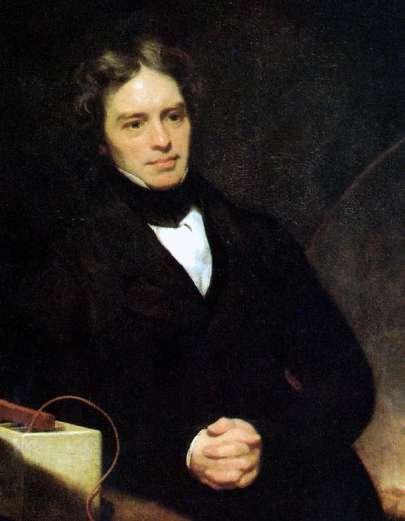
A substance that specifically absorbs green light won't appear green. We perceive the colours that are not absorbed. The complement of the absorbed colour is said to be the observed colour. For example: Colour
The First Law of Thermodynamics states that when heat energy is transmitted from one body to another, the receiving body does work and experiences a change in internal energy. The following can be expressed mathematically: ∆Q = ∆U + W.
absorbed
observed
Purple Blue Orange 32
Colour
Green
∆Q = heat energy supplied to the body
∆U = change in internal energy of the body
W = work done by the body.
The direction in which the transfer occurs, that is, whether heat is moved from hotter to colder bodies or vice versa, is not provided by this law. The direction of the transfer of heat is provided by the second law of thermodynamics.
Up and down quarks, electrons, and electron neutrinos make up the majority of the elements in our universe. Leptons, such as the electron, only experience the electromagnetic force and the weak beta decay force; they are not affected by the nuclear force.
Only electronneutrinos are produced by the sun.
Marie Curie gave radioactivity its name. For the purpose of separating radioactive elements from natural ores, the Curie invented a novel technique known as radiochemistry
Using Pauli's conception, the Italian physicist Enrico Fermi created a hypothesis of beta decay in 1934 and assigned the new particle the Italian name neutrino, which means "little neutral one."
John Dalton proposed the idea that all matter is composed of atoms in 1803. Albert Einstein's 1905 Brownian motion paper was a significant turning point that helped many people come to believe in the actual existence of atoms.
Avogadro number → 6.023 × 1023 mol 1
Number of atoms in one mole of any substance
It would take roughly 2 billion years to count all of the atoms in a mole if we were to count them at a rate of 10 million per second.
33
In the sun, 600,000,000 tons of hydrogen is consumed each second.
Approximately 200 times heavier than an electron, the muon was first identified in cosmic rays in 1937.
The weak force, which is stronger than gravitation but weaker than the electromagnetic force, is what causes radioactivity and the decay of unstable particles like muons.
Neutrons do not experience Electrostatic repulsive force. However, people who are familiar with quantum phenomena will be aware that the Pauli Exclusion Principle and the Heisenberg's uncertainty principle really work to prevent neutrons from approaching too closely. Therefore, even neutrons cannot be held together since the nuclear attraction rapidly declines.
If the positron and electron are moving very slowly, they may enter an orbit around one another and create the atom-like entity known as positronium. Because of its extreme instability, positronium will always result in the destruction of both the positron and the electron.
34
The most effective working theory of nature is quantum mechanics, and there is no documented example of a discrepancy between its predictions and experimentally observed findings.
Mankind's deepest desire for scientific intervention introduced a new idea that of time. Most of the underlying assumptions of physics are concerned with time. Time may sound like a genre of fiction, but it is a well-defined genuine concept. Some argue that time is not yet discovered by us to be objective features of the mundane world: even without considering time an intrinsic feature of the mundane world, we can see that things in the physical world change, seasons change, people adapt to that drastic changes. The fact that the physical change is an objective feature of the physical world, and time is independent of under whatever circumstances we have named it. Others think time as we comprehend it does not endure beyond the bounds of our physical world. Beyond it, maybe one could run forward in time or just turn around and go back. This could probably mean that one could fall rapidly through their former selves. In a bewildering world, the question of whether the time never begin and has always been ticking, or whether it had a beginning at the big bang, is really a concern for physicists: either science could account for such an inquiry. If we find the answer to it, it would be the ultimate triumph of human justification for our continuing quest. And, our goal of a complete description of the universe we live in is selfjustified. The understanding we have today is that time is not an illusion like what age-old philosophers had thought, but rather it is well defined mathematical function of an inevitable methodical framework for systematizing our experiences. If one believed that the time had a beginning, the obvious question was how it had started? The problem of whether or not the time had a beginning was a great concern to the German Philosopher, Immanuel Kant (who believed that every human concept is based on observations that are operated on by the mind so that we have no access to a mind- independent reality). He considered the entire human knowledge and came to the conclusion that time is not explored by humans to be objective features of the mundane world domain, but is a part of an inevitable systematic framework for coordinating our experiences. How and when did the time begin? No other scientific question is more fundamental or provokes such spirited debate among physicists. Since the early part of the 1900s, one explanation of the origin and fate of the universe, the Big Bang theory, has dominated the discussion. Although singularity theorem (a theorem showing that a singularity, a point where general relativity (a theory which predicts that time would come to an end inside a black hole – an invisible astrophysical entity that no one has seen, but scientists have observed gravitational evidence consistent with predictions about it, so most scientists believe it exists) breaks down, must exist under certain circumstances; in particular, that the universe must have
35
started with a singularity) predicted that the time, the space, and the matter or energy itself had a beginning, they didn’t convey how they had a beginning. It would clearly be nice for singularity theorems if they had a beginning, but how can we distinguish whether they had a beginning? In as much as the time had a beginning at the Big Bang it would deepen implication for the role of supreme divine creator (that much of humanity worships as the source of all reality) in the grand design of creation.
But if it persists in the bounds of reason in that it has neither beginning nor end and nothing for a Creator to do. What role could ineffable benevolent creator have in creation? Life could start and new life forms could emerge on their own randomly sustaining themselves by reproducing in the environment fitted for the functional roles they perform. Personally, we're sure that the time began with a hot Big Bang. But will it go on ticking forever? If not, when it will wind up its clockwork of ticking? We’re much less sure about that. However, we are just a willful gene centered breed of talking monkeys on a minor planet of a very average galaxy. But we have found a new way to question ourselves and we have learned to do them. That makes us something very special. Moreover, everything we think we understand about the universe would need to be reassessed. Every high school graduate knows cosmology, the very way we think of things, would be forever altered. The distance to the stars and galaxies and the age of the universe (13.7 billion years − number has now been experimentally determined to within 1% accuracy) would be thrown in doubt. Even the expanding universe theory, the Big Bang theory, and black holes would have to be re- examined. The Big Bang theory of universe assumes the present form of the universe originated from the hot fire ball called singularity and it assumes time did not exist before the Big Bang. But Erickcek deduced on the basis of NASA's, Wilkinson Microwave Anisotropy Probe (WMAP) that the existence of time and empty space is possible before the Big Bang.
But what would happen if you travel back in time and kill your grandfather before he conceives your father? Would the arrow of time reverse? Because motion makes the clock tick slower, can we travel back in time and kill our grandfather before he conceive our father? If not, why the universe avoids the paradox? Time Travel − Science Fiction? Taking the laws of physics and
36
punching them in the stomach and throwing them down the stairs – it's possible for you to break the universal speed limit. It is mind boggling to think about it – you're actually travelling backwards in time. What if you went back in time and prevented big bang from happening? You would prevent yourself from ever having been born! But then if you hadn’t been born, you could not have gone back in time to prevent big bang from happening. The concept of time travel may sound something impressive and allow science fiction like possibilities for people who survived from the past, but somewhat it seems to be incredible like seeing broken tea cups gathering themselves together off the floor and jumping back on the table promoting cup manufacturers go out of business. However, travelling through time may not be the far- fetched science fiction theory. At the same time, can we open a portal to the past or find a shortcut to the future and master the time itself is still in question and forbidden by the second law of thermodynamics (which states that in any closed system like universe randomness, or entropy, never decreases with time). Of course, we have not seen anyone from the past (or have we?).
We asked how stars are powered and found the answer in the transformations of atomic nuclei. But there are still simple questions that we can ask. And one is: Is our universe merely the byproduct of a cosmic accident? If the universe were merely the by-product of a grand accident, then our universe could have been a conglomeration of objects each going its own way. But everything we see in the universe obeys rules which are governed by a set of equations, without exception − which give philosophy a lot more attention than science. However, this does not mean that the universe obey rules because it exists in a plan which is created and shaped by a grinding hand.
Maybe the universe is a lucky coincidence of a grand accident emerged with ingredients such as space, time, mass, and energy exist in one-to-one correspondence with the elements of reality, and hence it obeys a set of rational laws without exception. At this moment it seems as though Dr. Science will never be able to raise the curtain on the mystery of creation. Moreover, traditional philosophy is dead, that it has not kept up with modern developments in science, and there is no reason at justifying the grinding hand because the idea of God is extremely limited and goes no further than the opening sentence of the classical theology (which has always
37
rejected the idea that God can classified or defined), and much is still in the speculative stage, and we must admit that there are yet no empirical or observational tests that can be used to test the idea of an accidental origin. No evidence. No scientific observation. Just a speculation. For those who have lived by their faith in the power of reason, the story may end like a bad dream since free will is just an illusion.
From the Big Bang to the Bodies such as stars or black holes including basic facts such as particle masses and force strengths, the entire universe works because the laws of physics make things happen. But if Meta or hyper laws of physics were whatever produced the universe then what produced those laws. Or perhaps, the laws, or the cause that created them, existed forever, and didn't need to be created. We must admit that there is ignorance on some issues, that is, we don't have a complete set of laws …. We are not sure exactly does the existing laws hold everywhere and at all time. Dr. Science gives us a clue, but there’s no definitive answer to provide a purely natural, non-causal explanation for the existence of laws of physics and our place in it. So let's just leave it at the hypothetical laws of physics. The question, then, is why are there laws of physics? And we could say, well, that required a biblical deity, who created these laws of physics and the spark that took us from the laws of physics to the notions of time and space. Well, if the laws of physics popped into existence 13.8 billion years ago with divine help whatsoever, like theologians say, why aren't we seeing a at least one evidence of an ineffable creator in our observable universe every now and then? The origin of the Meta or hyper laws of physics remains a mystery for now. However, recent breakthroughs in physics, made possible in part by fantastic revolutionary understanding of the true nature of the mathematical quantities and theories of physics, may suggest an answer that may seem as obvious to us as the earth orbiting the sun – or perhaps as ridiculous as earth is a perfect sphere. We don't know whatever the answer may be because the Meta or hyper laws of physics are completely beyond our experience, and beyond our imagination, or our mathematics. This fact leads us to a big mystery and awaits the next generation of high energy experiments, which hope to shed light on the farreaching answer that might be found in the laws that govern elemental particles.
38
The study of the nature of light had a key role in the development of quantum mechanics.
The significant occurrences and developments that paved the way for the emergence of quantum mechanics:
Black-body radiation spectrum (Max Planck, 1901)
Photoelectric effect (Albert Einstein, 1905)
Model of the atom (Ernest Rutherford, 1911)
Atomic spectra (Niels Bohr, 1913)
Scattering of photons by electrons (Arthur Holly Compton, 1922)
Exclusion principle (Wolfgang Ernst Pauli, 1922)
Hypothesis of matter waves (Louis de Broglie, 1925)
Experimental confirmation of the existence of matter waves (C.J. Davisson and L.H. Germer, 1927)
In the 19th century, the wave hypothesis took over as the most popular and widely accepted explanation of how light behaves.
Albert Einstein's description of the photoelectric effect and its discovery solidified the idea that radiation has a dual nature.
The popular steady state hypothesis was ultimately made redundant as a result of the discovery of the cosmic microwave background radiation.
How is the Sun illuminated? The answer is thermonuclear fusion reaction. The only direct experimental support for this idea is the discovery of neutrinos from the Sun. This signifies the importance of neutrino detection.
39
Nuclear fusion
Four protons are fused to create an alpha particle in the overall process, along with the emission of two positrons and two neutrinos.
Pair production
There is a chance that a photon will become an electron positron pair when its energy is more than 1.02 MeV, which is twice the rest mass of an electron. This process can take place only in the presence of Coulomb field of the nucleus which assists in balancing energy and momentum.
The CNO cycle was recognized by German-American theoretical physicist "Hans Albrecht Bethe" as the energy source of the heavier stars in the main sequence in a seminal study that was published in March 1939 in Physical Review.
A piece of iron is significantly hotter than a piece of wood when they are both left in the sun for the same amount of time.
The famed American astronomer Edwin Hubble observed that spectroscopic lines were moved to the red end as if there was some sort of Doppler redshift in 1929 while studying the spectrum of light from galaxies.
40
A proton has a mass of about 938 MeV/c2, although only three of its constituents the quarks contribute significantly to the proton's mass; the rest is provided by the quantum chromodynamic binding energy.
The neutrino was hypothesized by Pauli, and Fermi incorporated it into his theory of weak interactions.
Because it can explain why the universe only contains matter, Cronin and Fitch's discovery of matter-antimatter asymmetry in the weak decays of neutral kaons is of key significance.
The Electroweak theory was built on the foundation of Yang-Mills theory, a generalization of Maxwell's electrodynamics.
The quarks and leptons are affected by weak interaction at the fundamental level.
The fact that neutrinos have non-zero masses was discovered as a result of neutrino oscillations.
Atoms → Nuclei → Nucleons → Quarks → ?
The Standard Model is currently understood to be the foundation for nearly the whole of known physics, with the exception of gravitation. It is the strong and weak nuclear forces' and electromagnetism's dynamical theory. It was created by generalizing Michael Faraday and James Maxwell's electrodynamics, which dates back a century.
10 8cm 10 12cm 10 13cm 10 17cm
Electrodynamics + Weak forces → Electroweakdynamics 41
We have only reached 10 17 cm, compared to the fundamental scale of quantum gravity, which is 10 33 cm. The Inward driven quest is still ongoing, and we have a long way to go. The most basic issue in physics is still quantum gravity.
The General Theory of Relativity made a number of predictions about physical events that were unthinkable before Albert Einstein. All predictions of the general theory of relativity have come true for more than a century; none have ever been disproven, whether the topic is the gravitational field's effect on light or the quantifiable effects of gravitational waves.
4 Protons → Helium nucleus + 2 positrons + 2 neutrinos + 27 MeV
This can be seen as the most crucial reaction for all life forms, since without it there would be no life on Earth.
The Newtonian presumption of the absoluteness of space and time was completely altered by general theory of relativity.
Quasisteady state cosmology → The cosmos expands as a result of the negative energy field's ability to repel matter, as it would under the influence of a positive cosmological constant.
Is there life elsewhere in the vast universe? Do other planets resemble Earth in any way, or are we the only beings in the vast universe? Curious minds have puzzled over these issues for centuries.
p + p + p + p → 4He + e+ + e+ + υe+ υe + 27 MeV
42
Who are we? We find that we intelligent apes who have only recently left the trees, live on an fragile planet of a humdrum star by a matter of sheer luck or by divine providence, lost in a galaxy tucked away in some forgotten corner of a universe in which there are far more galaxies than people. Sending the Beatles song across the Universe and pointing the telescopes in Deep Space Network towards the North Star, Polaris, we seek to find intellectual beings like us outside the sheer number of planets, vast ocean of existence, our solar system, and our own Milky Way galaxy. How awe hunting for them across the empty stretches of the universe would be to acquire a bit of confirmation that either we're alone in this universe or we are not. However, we are not the only life-form in the universe, is reasonable to expect since we have no reason to assume that ours is the only possible form of life. Some sort of life could have happened in a universe of greatly different form, but
Where's the evidence?
The Burden of evidence is only on the people who regard themselves as reliable witnesses that sightings of UFOs are evidence that we are being visited by someone living in another galaxy who are much more advanced enough to spread through some hundred thousand million galaxies and visit the Earth. An alien, like the teapot, is a hypothesis that requires evidence.
The known forces of nature can be divided into four classes:
Gravity: This is the weakest of the four; it acts on everything in the universe as an attraction. And if not for this force, we would go zinging off into outer space and the sun would detonate like trillions upon trillions of hydrogen bombs.
Electromagnetism: This is much stronger than gravity; it acts only on particles with an electric charge, being repulsive between charges of the same sign and attractive between charges of the opposite sign. More than half the gross national product of the earth,
43
representing the accumulated wealth of our planet, depends in some way on the electromagnetic force. It light up the cities of New York, fill the air with music from radios and stereos, entertain all the people in the world with television, reduce housework with electrical appliances, heat their food with microwaves, track their planes and space probes with radar, and electrify their power plants. Electromagnetism fundamentally determines all macroscopic, and many atomic levels, properties of the chemical elements, including all chemical bonding. In a four kilogram (~1 gallon) jug of water there are 2.1 × 108 C of total electron charge. Thus, if we place two such jugs a meter apart, the electrons in one of the jugs repel those in the other jug with a force of 4.1 × 1026 N. This force is larger than the planet Earth would weigh if weighed on another Earth. The atomic nuclei in one jug also repel those in the other with the same force. However, these repulsive forces are canceled by the attraction of the electrons in jug A with the nuclei in jug B and the attraction of the nuclei in jug A with the electrons in jug B, resulting in no net force. Electromagnetic forces are tremendously stronger than gravity but cancel out so that for large bodies gravity dominates.
Weak nuclear force: This causes radioactivity and plays a vital role in the formation of the elements in stars. And a slightly stronger this force, all the neutrons in the early universe would have decayed, leaving about 100 percent hydrogen, with no deuterium for later use in the synthesizing elements in stars.
Strong nuclear force: This force holds together the protons and neutrons inside the nucleus of an atom. And it is this same force that holds together the quarks to form protons and neutrons. Unleashed in the hydrogen bomb, the strong nuclear force could one day end all life on earth.
The inherent goal of unification is to show that all of these forces are, in fact, manifestations of a single super force. We can't perceive this unity at the low energies of our everyday lives, or even in our most powerful accelerators (capable of accelerating particles nearly up to the speed of light) at Fermi lab or LHC, the Large Hadron Collider, at CERN (European Centre for Nuclear
44
Research), in Switzerland. But close to the Big Bang temperatures, at inconceivably high energies… If the forces unify, the protons which make up much of the mass of ordinary matter − can be unstable, and eventually decay into lighter particles such as antielectrons. Indeed, several experiments were performed in the Morton Salt Mine in Ohio to yield definite evidence of proton decay. But none have succeeded so far. However, the probability of a proton in the universe gaining sufficient energy to decay is so small that one has to wait at least a million million million million million years i.e., longer than the time since the big bang, which is about ten thousand million years.
STRING THEORY
Relative Strength of the Four Forces:
Force: Nuclear
Relative Strength: 103
Force: Electromagnetic
Relative Strength: 1
Force: Weak
Relative Strength: 10−11
Force: Gravitational
Relative Strength: 10−39
Proton feel
Nuclear force: Yes
Electromagnetic force: Yes
Weak force: No
All things in the cosmos are composed of vibrating strings and energy branes. This theory aims to combine general relativity and quantum physics.
The process of Hawking radiation would take a 3 Solar mass black hole around 1063 years to entirely dissipate. This is roughly 1053 times the present age of the Universe
Any neutron star has a magnetic field that is more than a trillion times stronger than the magnetic field of the Earth. They are regarded as the strongest magnets in the universe for this reason.
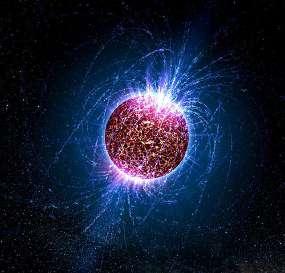
45
Gravitational force: Yes
Neutron feel
Nuclear force: Yes
Electromagnetic force: No
Weak force: No
Gravitational force: Yes
Electron feel
Nuclear force: No
Electromagnetic force: Yes
Weak force: Yes
Gravitational force: Yes
Neutron stars known as Magnetars have magnetic fields that are a thousand times stronger than those of typical neutron stars.
The eminent laws do not tell us why the initial configuration was such as to produce what we observe. For what purpose? Must we turn to the anthropic principle for an explanation? Was it all just a lucky chance? That would seem a counsel of despair, a negation of all our hopes of understanding the unfathomable order of the universe. However, this is an extended metaphor for many puzzles in physics uncovered with painstaking labor, and it is especially relevant to particle physics. Still, particle physics remains unfathomable to many people and a bunch of scientists chasing after tiny invisible objects.
If string theory is correct, then every particle is nothing but a vibrating, oscillating, dancing filament named a string. A string does something aside from moving – it oscillates in different ways. Each way represents a particular mode of vibration. Different modes of vibration make the string appear as a dark energy or a cosmic ray, since different modes of vibration are seen as different masses or spins.
Star of mass M = 1.5 Solar mass and radius R = 10 km Neutron Star
Star of mass M = 1.5 Solar mass and radius R = 4.5 km Black Hole
46
If Higgs theory (which is the last piece of the Standard Model that has still eluded capture –which is one of the theories LHC experimentalists hope to discover and it is the capstone for conventional big bang cosmology which biblical creationists reject) is correct, then a new field called the Higgs field which is analogous to the familiar electromagnetic field but with new kinds of properties permits all over the space (considered the origin of mass in Grand Unified Theory – a theory that unifies the weak, strong, and electromagnetic interactions, without gravity). Different masses of the particles are due to the different strengths of interaction of the particle with the Higgs field (more the strength of interaction of the particle with the Higgs field, more the mass of the particle).To make this easier for you, let's say it is cosmic high-fructose corn syrup − the more you go through it, the heavier you get.
Which explanation is right?
Higgs theory runs rampant in the popular media claiming that String Theory Is Not The Only Game In Town. However, by the end of the decade, we will have our first glimpse of the new physics, whatever it well may be
STRING or HIGGS
The new physics will point to even more discoveries at the TeV scale and opens the door beyond the Standard Model and raise new questions like: if the Higgs field generate masses for the W and Z, and for the quarks and leptons − does it generate its own mass and if so how? What is its mass?
Dr. Science remains silent on the profound questions. Ultimately, however, one would hope to find complete, consistent answers that would include all the mathematical techniques as approximations. The quest for such answers is known as the grand unification of the two basic partial theories: the general theory of relativity (which states that space and time are no longer absolute, no longer a fixed background to events. Instead, they are dynamical quantities that are shaped by the matter and energy in the universe) and quantum mechanics (a theory of the microcosm which has upended many an intuition, but none deeper than this one − developed by 1900 physicists in response to a number of glaring problems that arose when 19th century conceptions of physics were applied to the microscopic world, where subatomic particles are
47
held together by particle like forces dancing on the sterile stage of space- time, which is viewed as an empty arena, devoid of any content). Unfortunately, however, these two theories are inconsistent with each other – i.e., quantum mechanics and general relativity do not work together. How the ideas of general relativity can be consolidated with those of quantum theory is still a? Until we progress closer toward the laws that govern our universe.
The latest theory of subatomic particles (the quantum theory) gives an estimated value of vacuum energy density that is about 120 orders of magnitude larger than the measured value claiming our best theory cannot calculate the value of the largest energy source in the entire universe. Dr. Science advances over the wreckage of its theories by continually putting its ideas to experimental test; no matter how beautiful its idea might be; it must be discarded or modified if it is at odds with experiment. It would have been clearly be nice for quantum theory if the value of vacuum energy density were in the order of 1096 kg per cubic meter, but the measured value were in the order of 10 27 kg per cubic meter. Thus, the best candidate we have at the moment, the quantum theory, brought about its downfall by predicting the value of vacuum energy density that is about 120 orders of magnitude larger than the measured value.
We a lot of exposure with darkness and disbelief and a state of not having an immediate conclusion, and this vulnerability is of great significance, I think. When we don't comprehend the mind of nature, we are in the middle of darkness. When we have an intuitive guess as to what the outcome is; we are unsealed. And when we are fairly damn sure of what the final result is going to be, we are still in some uncertainty. And uncertainty being too complex to come about randomly is evidence for human continuing quest for justification. Sometimes, very hard, impossible things just strike and we call them thoughts. In most of the self-reproducing organisms the conditions would not be right for the generation of thoughts to predict things more or less, even if not in a simplest way, only in the few complex organisms like us spontaneous thoughts would generate and what is it that breathes fire into a perception. The human perception is enormous; it’s extensive and unlimited, and outrageous that we can ask simple questions. And they are: What the dark energy is up to? What it is about? Why this mysterious form of energy permeates all of space blowing the galaxies farther and farther apart? How accurate are the physical laws (which are essentially the same today as they were at the time of Newton despite
48
the scientific revolutions and paradigm shifts), which control it? Why it made the universe bang? Unfortunately, the laws that we are using are not able to answer these questions because of the prediction that the universe started off with infinite density at the big bang singularity (where all the known laws would break down). However, if one looks in a commonsense realistic point of view the laws and equations which are considered as inherent ingredients of reality − are simply the man-made ingredients introduced by the rational beings who are free to observe the universe as they want and to draw logical deductions from what they see − to describe the objective features of reality. The scientific data is fallible, changeable, and influenced by scientific understanding is refreshing. Here’s an example of what I mean. In most physics textbooks we will read that the strength of the electromagnetic force is measured by the dimensionless parameter α = e2 4πħcε0 (where e is the charge = 1.602 × 10 19 Coulombs, ε0 is the absolute permittivity of free space = 8.8 × 10 –12 ��
, c is the speed of light in vacuum (an awkward conversion factor for everyday use because it’s so big. Light can go all the way around the equator of the Earth in about 0.1 seconds) and ħ is the reduced Planck's constant), called the fine structure constant, which was taught to be constant became variant when the standard model of elementary particles and forces revealed that α actually varies with energy.
Quantum field theory = {Group theory + quantum mechanics}
Lim N → ∞ Quantum mechanics = Quantum field theory
The Quantum theory of electrodynamics (a relativistic quantum field theory or a quantum field theory – arguably the most precise theory of natural phenomena ever advanced which seems to govern everything small – through which we have been able to solidify the role of photons as the "smallest possible bundles of light" and to reveal their interactions with electrically charged particles such as electrons, in a mathematically complete, predictive, and convincing framework) and General Relativity (which dominates large things and is now called a classical theory which predicts that the universe started off with infinite density at the big bang singularity) both try to
��
49
assign mass to the singularity. But according to generally accepted history of the universe, according to what is known as the hot big bang model. At some finite time in the past i.e., between ten and twenty thousand million years ago. At this time, all matter (which is characterized by the physical quantity we define as mass) would have been on top of each other − which is called the singularity, the density would have been INFINITE. Under such conditions, all the known laws of science would break down. However, a good mathematical theory can prove anything with that amount of wiggle room, and findings are really determined by nothing except its desire. For all theoreticians and tens of thousands of university graduates at least know, the universe started off with infinite density at the hot big bang singularity with infinitely hot temperatures. And at such high temperatures that are reached in thousands of H-bomb explosions, the strong and weak nuclear forces and the gravity and electromagnetic force were all unified into a single force. What was before the Big Bang? Was the Big Bang created? If the Big Bang was not created, how was this Big Bang accomplished, and what can we learn about the agent and events of creation? Is it the product of chance or was been designed? What is it that blocked the pre-Big Bang view from us? Is Big Bang singularity an impenetrable wall and we cannot, in physics, go beyond it? To answer one question, another question arises. Erickcek's model suggests the possibility of existence of space and time before the big bang. But the world famed Big Bang theory abandons the existence of space and time before the big bang. Both the theories are consistent and based upon sophisticated experimental observations and theoretical studies. Truth must be prejudiced with honest scientific inquiry to illuminate the words of Genesis. And this is possible only if the modern scientific community would simply open its eyes to the truth.
Do black holes really exist? If they exist, why we haven't observed one hole yet? Can black holes be observed directly, and if so, how? If the production of the tiny black holes is feasible, can particle accelerators, such as the Large Hadron Collider (LHC) in Switzerland at the famed CERN nuclear laboratory create a micro black hole that will eventually eat the world? If not − if there are no black holes, what are the things we detect ripping gas off the surface of other stars? What is the structure of space-time just outside the black hole? Do their space times have horizons? : are the major questions in theoretical physics today that haunts us. The effort to
50
resolve these complex paradoxes is one of the very few things that lifts human mind a little above the level of farce, and gives it some of the grace of province inspiring new ideas and new experiments.
Since gravity weakens with distance, the earth pulls on your head with less force than it pulls on your feet, which are a meter or two closer to the earth's center. The difference is so tiny we cannot feel it, but an astronaut near the surface of a black hole would be literally torn apart. Most people think of a black hole as a voracious whirlpool in space, sucking down everything around it. But that’s not really true! A black hole is a place where gravity has gotten so strong that even light cannot escape out of its influence.
How a black hole might be formed?
The slightly denser regions of the nearly uniformly distributed atoms (mostly hydrogen) which lack sufficient energy to escape the gravitational attraction of the nearby atoms, would combine together and thus grow even denser, forming giant clouds of gas, which at some point become gravitationally unstable, undergo fragmentation and would break up into smaller clouds that would collapse under their own gravity. As these collapses, the atoms within them collide with one another more and more frequently and at greater and greater speeds – the gas heats up i.e., the temperature of the gas would increase, until eventually it become hot enough to start nuclear fusion reactions. And a consequence of this is that the stars like our sun (which are made up of more than one kind of gas particle) are born to radiate their energy as heat and light. But the stars with a physical radius smaller than its Schwarzschild radius further collapse to produce dark or frozen stars (i.e., the mass of a star is concentrated in a small enough spherical region, so that its mass divided by its radius exceeds a particular critical value, the resulting space-time warp is so radical that anything, including light, that gets too close to the star will be unable to escape its gravitational grip).
And these dark stars are sufficiently massive and compact and possess a strong gravitational field that prevent even light from escaping out its influence: any light emitted from the surface of the
51
star will be dragged back by the star’s gravitational attraction before it could get very far. Such stars become black voids in space and were coined in 1969 by the American scientist John Wheeler "the black holes" (i.e., black because they cannot emit light and holes because anything getting too close falls into them, never to return). Classically, the gravitational field of the black holes (which seem to be among the most ordered and organized objects in the whole universe) is so strong that they would prevent any information including light from escaping out of their influence i.e., any information is sent down the throat of a black hole or swallowed by a black hole is forever hidden from the outside universe (this goes by the statement that "black holes have no hair" that is, they have lost all information, all hair, except for these three parameters: its mass, spin and charge), and all one could say of the gravitational monster what the poet Dante said of the entrance to Hell: "All hope abandon, ye who enter here." Anything or anyone who falls through the black hole will soon reach the region of infinite density and the end of time. However, only the laws of classical general relativity does not allow anything (not even light) to escape the gravitational grip of the black hole but the inclusion of quantum mechanics modifies this conclusion− quantum fields would scatter off a black hole. Because energy can be created out of nothing, the pair of short-lived virtual particles (one with positive energy and the other with negative energy) appears close to the event horizon of a black hole. Spontaneous births and deaths of roiling frenzy of particles so called virtual particles momentarily occurred everywhere, all the time − violated the Energy-momentum relationship:
− is the conclusion that mass and energy are interconvertible; they are two different forms of the same thing. The word virtual particles literally mean that these particles are not observed directly, but their indirect effects are measured to a remarkable degree of accuracy. Their properties and consequences are well established and well understood consequences of quantum mechanics. The gravitational might of the black hole inject energy into a pair of virtual particles ... that tears them just far enough apart so that one with negative energy gets sucked into the hole even before it can annihilate its partner ... its forsaken partner with positive energy... gets an energy boost from the gravitational force of the black hole ... escape outward to infinity (an abstract mathematical concept that was precisely formulated in the work of mathematician Georg Cantor in the late nineteenth century)... where it appear as a real particle (and to an observer at a distance, it will appear to have been emitted from the black hole). Because E= mc squared (i.e., energy is equivalent to mass), a fall of negative energy particle into the black hole therefore
2 = m0 2c4
p2c2
52
E
+
reduces its mass with its horizon shrinking in size. As the black hole loses mass, the temperature of the black hole (which depends only on its mass) rises and its rate of emission of particle increases, so it loses mass more and more quickly. We don't know does the emission process continue until the black hole dissipates completely away or does it stop after a finite amount of time leaving black hole remnants.
The attempt to understand the Hawking radiation has a profound impact upon the understanding of the black hole thermodynamics, leading to the description of what the black hole entropic energy is.
Black hole entropic energy = Black hole temperature × Black hole entropy
This means that the entropic energy makes up half of the mass energy of the black hole. For a black hole of one solar mass (M = 2 × 1030 kg), we get an entropic energy of 9 × 10 46 joules –much higher than the thermal entropic energy of the sun.
It is only theoretically possible that black holes with mass M ≤ mass of the electron could be created in high energy collisions. No black holes with mass M ≤ mass of the electron have ever been observed, however – indeed, normally the creation of micro black holes (with mass ≤ mass of the electron) take place at high energy (i.e., >1028 electron volts − roughly greater than million tons of TNT explosive), which is a quadrillion times beyond the energy of the LHC. Even if the quantum black holes (with mass ≤ mass of the electron) are created, they would be extremely difficult to spot - and they are the large emitters of radiation (because T = ħc3 8πGMkB ) and they shrink and dissipate faster even before they are observed. Moreover, if a black hole has a mass less than the Planck mass (2.176435(24) × 10 8 kg =√hc G ), its quantum mechanical size could be outside its event horizon. This wouldn't make sense, Planck mass is the smallest possible black hole.
53
Though the emission of particles from the primordial black holes is currently the most commonly accepted theory within scientific community, there is some disputation associated with it. There are some issues incompatible with quantum mechanics that it finally results in information being lost, which makes physicists discomfort and this raises a serious problem that strikes at the heart of our understanding of science. However, most physicists admit that black holes must radiate like hot bodies if our ideas about general relativity and quantum mechanics are correct. Thus even though they have not yet managed to find a primordial black hole emitting particles after over two decades of searching. Despite its strong theoretical foundation, the existence of this phenomenon is still in question. Alternately, those who don't believe that black holes themselves exist are similarly unwilling to admit that theyemit particles.
What's more puzzling is that momentum can still exist even in the absence of a rest mass. From the relativistic mass and energy equation:
If m0 = 0, then
Since photons, gluons, and perhaps neutrinos are massless particles, they all move at the speed of light.
Even if a particle has no rest mass, it can still possess momentum and relativistic energy.
There is a threshold temperature for each elementary particle given by: T = m0c2 kB . When the universe's temperature falls below this temperature, the elementary particle is effectively removed from the universe. For proton: T = m0c2 kB = 1.1 × 1013 K and so once the universe is cooled below this temperature − the proton is effectively removed from the universe.
E = √p2c2 +m0 2c4
E = pc
Free neutron → proton + electron + antineutrino
54
{ The mean lifetime of a free neutron outside the atomic nucleus is around 14 minutes. }
As long as the universe's temperature is above 1.1 × 1013 K, the following reactions can take place:
(annihilation)
(materialization)
Inflation predicts that density parameter = 1 and recent studies on the cosmic microwave background and evidence from supernovae support this prediction.
If we could peer into the fabric of space-time at the Planck length (the distance where the smoothness of relativity’s space-time and the quantum nature of reality begin to rub up against each other), we would see the 4 dimensional fabric of space-time is simply the lowest energy state of the universe. It is neither empty nor uninteresting, and its energy is not necessarily zero (which was discovered by Richard Dick Feynman, a colorful character who worked at the California Institute of Technology and played the bongo drums at a strip joint down the road− forwhich he received Nobel Prize for physics in 1965). Because E = mc2, one can think that the virtual particle-antiparticle pairs of mass m are continually being created out of energy E of the 4 dimensional fabric of space-time consistent with the Heisenberg's uncertainty principle of quantum mechanics (which tells us that from a microscopic vantage point there is a tremendous amount of activity and this activity gets increasingly agitated on ever smaller distance and time scales), and then, they appear together at some time, move apart, then come together and annihilate each other giving energy back to the space-time without violating the law of energy conservation (which has not changed in four hundred years and still appear in relativity and quantum mechanics). Spontaneous births and deaths of virtual particles so called quantum fluctuations occurring everywhere, all the time − is the conclusion that mass and energy are interconvertible; they are two different forms of the same thing. However, spontaneous births
proton + antiproton → γ + γ
γ + γ → proton + antiproton
55
and deaths of so called virtual particles can produce some remarkable problem, because infinite number of virtual pairs of mass m can be spontaneously created out of energy E of the 4 dimensional fabric of space-time, does the 4 dimensional fabric of space- time bears an infinite amount of energy, therefore, by Einstein’s famous equation E = mc2, does it bears an infinite amount of mass. If so, according to general relativity, the infinite amount of mass would have curved up the universe to infinitely small size. But which obviously has not happened. The word virtual particles literally mean that these particles cannot be observed directly, but their indirect effects can be measured to a remarkable degree of accuracy. Their properties and consequences are well established and well understood consequences of quantum mechanics (which states that the position of a particle is uncertain, and therefore that there is some possibility that a particle will be within an energy barrier rather than outside of it. The process of moving from outside to inside without traversing the distance between is known as quantum tunneling, and it is very important for the fusion reactions in stars like the Sun). However, they can be materialized into real particles by several ways. All that one require an energy = energy required to tear the pair apart + energy required to boost the separated virtual particle- antiparticles into real particles (i.e., to bring them from virtual state to the materialize state).
When Einstein was 26 years old, he calculated precisely how energy must change if the relativity principle was correct, and he discovered the relation E= mc2 (which led to the Manhattan Project and ultimately to the bombs that exploded over Hiroshima and Nagasaki in 1945). This is now probably the only equation in physics that even people with no background in physics have at least heard of this and are aware of its prodigious influence on the world we live in. And since c is constant (because the maximum distance a light can travel in one second is 3 ×10 to the power of 8 meter), this equation tells us that mass and energy are interconvertible and are two different forms of the same thing and are in fact equivalent. Suppose a mass m is converted into energy E, the resulting energy carries mass = m and moves at the speed of light c. Hence, energy E is defined by E= mc squared. As we know c squared (the speed of light multiplied by itself) is an astronomically large number: 9 × 10 to the power of 16 meters square per second square. So if we convert a small amount of mass, we'll get a tremendous amount of energy. For example, if we convert 1kg of mass, we'll get energy of 9 × 10 to the power of 16 Joules (i.e., the energy more
56
than 1 million times the energy released in a chemical explosion. Perhaps since c is not just the constant namely the maximum distance a light can travel in one second but rather a fundamental feature of the way space and time are married to form space-time. One can think that in the presence of unified space and time, mass and energy are equivalent and interchangeable. But WHY? The question lingers, unanswered. Until now. However, the equation E = mc2 (where E is energy, m is mass, and c is the speed of light. People often employ this equation to calculate how much energy would be produced if, say, a bit of matter was converted into pure electromagnetic radiation. (Because the speed of light is a large number, the answer is a lot the weight of matter converted to energy in the bomb that destroyed the city of Hiroshima was less than one ounce.) But the equation also tells us that if the energy of an object increases, so does its mass, that is, its resistance to acceleration, or change in speed) has some remarkable consequences (e.g. conversion of less than 1% of 2 pounds of uranium into energy was used in the atomic bomb over Hiroshima and body at rest still contains energy. When a body is moving, it carries an additional energy of motion called kinetic energy. In chemical and nuclear interactions, kinetic energy can be converted into rest energy, which is equivalent to generating mass. Also, the rest energy can be converted into kinetic energy. In that way, chemical and nuclear interactions can generate kinetic energy, which then can be used to run engines or blow things up). Because E = mc2, the energy which a body possess due to its motion will add to its rest mass. This effect is only really significant for bodies moving at speeds close to the speed of light. For example, at 10 percent of the speed of light a body’s mass M is only 0.5 percent more than its rest mass m, while at 90 percent of the speed of light it would be more than twice its rest mass. And as an body approaches the speed of light, its mass raise ever more quickly, it acquire infinite mass and since an infinite mass cannot be accelerated any faster by any force, the issue of infinite mass remains an intractable problem. For this reason all the bodies are forever confined by relativity to move at speeds slower than the speed of light. The mass m in motion at speed v is the mass m0 at rest divided by the factor
v2 c2 implies: the mass of a particle is not constant; it varies with changes in its velocity.
√1−
57
For non-relativistic case (v << c), the above equation reduces to:
Only tiny packets/particles of light (dubbed "photons" by chemist Gilbert Lewis) that have no intrinsic mass can move at the speed of light. There is little disagreement on this point. Now, being more advanced, we do not just consider conclusions like photons have no intrinsic mass. We constantly test them, trying to prove or disprove. So far, relativity has withstood every test. And try as we might, we can measure no mass for the photon. We can just put upper limits on what mass it can have. These upper limits are determined by the sensitivity of the experiment we are using to try to weigh the photon. The last number we can see that a photon, if it has any mass at all, must be less than 4 ×10 to the power of − 48 grams. For comparison, the electron has a mass of 9 × 10 to the power of − 28 grams. Moreover, if the mass of the photon is not considered to zero, then quantum mechanics would be in trouble. And it also an uphill task to conduct an experiment which proves the photon mass to be exactly zero. Tachyons the putative class of hypothetical particles (with negative mass: m < 0) is believed to travel faster than the speed of light. But, the existence of tachyons is still in question and if they exist, how can they be detected is still a? However, on one thing most physicists agree: (Just because we haven’t found anything yet that can go faster than light doesn’t mean that we won't one day have to eat our words. We should be more open- minded to other possibilities that just may not have occurred to us). Moreover, in expanding space − recession velocity keeps increasing with distance. Beyond a certain distance, known as the Hubble distance, it exceeds the velocity greater than the speed of light in vacuum. But, this is not a violation of relativity, because recession velocity is caused not by motion through space but by the expansion of space.
E= hυ (which implies the energy a photon can have is proportional to its frequency: larger frequency (shorter wavelength) implies larger photon energy and smaller frequency (longer wavelength) implies smaller photon energy) – because h is constant, energy and frequency of the photon are equivalent and are different forms of the same thing. And since h − which is one of
m = m0 √1−v2 c2
m = m0
58
the most fundamental numbers in physics, ranking alongside the speed of light c and confines most of these radical departures from life-as-usual to the microscopic realm − is incredibly small (i.e., 6 × 10 to the power of –34 a decimal point followed by 33 zeros and a 6 of a joule second), the frequency of the photon is always greater than its energy, so it would not take many quanta to radiate even ten thousand megawatts. And some say the only thing that quantum mechanics (the great intellectual achievement of the first half of this century) has going for it, in fact, is that it is unquestionably correct. Since the Planck's constant is almost infinitesimally small, quantum mechanics is for little things.
which is much too small for any quantum wave effects to be noticed.
Are Neutrinos Massless? If not they could contribute significantly to the mass of the universe?
Evidence of neutrino oscillations prove that neutrinos are not massless but instead have a mass less than one hundred-thousandth that of an electron. The work on atomic science in the first thirty five years of this century took our understanding down to lengths of a millionth of a millimeter. Then we discovered that protons and neutrons are made of even smaller particles called quarks (which were named by the Caltech physicist Murray Gell-Mann, who won the Nobel Prize in 1969 for his work on them). We might indeed expect to find several new layers of structure more basic than the quarks and leptons that we now regard as elemental particles. Are there elementary particles that have not yet been observed, and, if so, which ones are they and what are their properties? What lies beyond the quarks and the leptons? If we find answers to them, then the entire picture of particle physics would be quite different.
Experimental evidence supporting the Watson and Crick model was published in a series of five articles in the same issue of Nature – caused an explosion in biochemistry and transformed the science. Of these, Franklin and Gosling's paper was the first publication of their own x-ray diffraction data and original analysis method that partially supported the Watson and Crick
h p
6.625×10 34Js 1kg×100m/s = 6.625
10−36
Something the size of a stone of mass 1 kg moving at 100 m / s would have a quantum wavelength of
λ =
=
×
m
59
model; this issue also contained an article on DNA (a main family of polynucleotides in living cells) structure by Maurice Wilkins and two of his colleagues, whose analysis supported their double-helix molecular model of DNA. In 1962, after Franklin's death, Watson, Crick, and Wilkins jointly received the Nobel Prize in Physiology or Medicine. From each gene's point of view, the 'background' genes are those with which it shares bodies in its journey down the generations. DNA (deoxyribonucleic acid) – which is known to occur in the chromosomes of all cells (whose coded characters spell out specific instructions for building willow trees that will shed a new generation of downy seeds). Most forms of life including vertebrates, reptiles, Craniates or suckling pigs, chimps and dogs and crocodiles and bats and cockroaches and humans and worms and dandelions, carry the amazing complexity of the information within the some kind of replicator molecules called DNA in each cell of their body, that a live reading of that code at a rate of one letter per second would take thirty-one years, even if reading continued day and night. Just as protein molecules are chains of amino acids, so DNA molecules are chains of nucleotides. Linking the two chains in the DNA, are pairs of nucleic acids (purines + pyrimidines). There are four types of nucleic acid, adenine "A", cytosine "C", guanine "G", and thiamine "T." An adenine (purine) on one chain is always matched with a thiamine (pyrimidine) on the other chain, and a guanine (purine) with a cytosine (pyrimidine). Thus DNA exhibits all the properties of genetic material, such as replication, mutation and recombination. Hence, it is called the molecule of life. We need DNA to create enzymes in the cell, but we need enzymes to unzip the DNA. Which came first, proteins or protein synthesis? If proteins are needed to make proteins, how did the whole thing get started? We need precision genetic experiments to know for sure.
A theory is a good theory if it satisfies one requirement. It must make definite predictions about the results of future observations. Basically, all scientific theories are scientific statements that predict, explain, and perhaps describe the basic features of reality. Despite having received some great deal, discrepancies frequently lead to doubt and discomfort. For example, the most precise estimate of sun’s age is around 10 million years, based on linear density model. But geologists have the evidence that the formation of the rocks, and the fossils in them, would have taken hundreds or thousands of millions of years. This is far longer than the age of the Earth, predicted
60
by linear density model. Hence the earth existed even before the birth of the sun! Which is absolutely has no sense. The linear density model therefore fails to account for the age of the sun. Any physical theory is always provisional, in the sense that it is only a hypothesis: it can be disproved by finding even a single observation that disagrees with the predictions of the theory. Towards the end of the nineteenth century, physicists thought they were close to a complete understanding of the universe. They believed that entire universe was filled by a hypothetical medium called the ether. As a material medium is required for the propagation of waves, it was believed that light waves propagate through ether as the pressure waves propagate through air. Soon, however, inconsistencies with the idea of ether begin to appear. Yet a series of experiments failed to support this idea. The most careful and accurate experiments were carried out by two Americans: Albert Michelson and Edward Morley (who showed that light always traveled at a speed of one hundred and eighty six thousand miles a second (no matter where it came from) and disproved Michell and Laplace's idea of light as consisting of particles, rather like cannon balls, that could be slowed down by gravity, and made to fall back on the star) at the Case School of Applied Science in Cleveland, Ohio, in 1887 − which proved to be a serve blow to the existence of ether. All the known subatomic particles in the universe belong to one of two groups, Fermions or bosons. Fermions are particles with integer spin ½ and they make up ordinary matter. Their ground state energies are negative. Bosons are particles (whose ground state energies are positive) with integer spin 0, 1, 2 and they act as the force carriers between fermions (For example: The electromagnetic force of attraction between electron and a proton is pictured as being caused by the exchange of large numbers of virtual massless bosons of spin 1, called photons).
Positive ground state energy of bosons plus negative ground state energy of fermions = 0
But Why? May be because to eliminate the biggest infinity in supergravity theory (the theory which introduced a superpartner to the conjectured subatomic particle with spin 2 that is the quanta of gravity "the graviton" (called the gravitino, meaning "little graviton," with spin 3 2 )
that even inspired one of the most brilliant theoretical physicists since Einstein “Stephen
–
61
Hawking” to speak of "the end of theoretical physics" being in sight when he gave his inaugural lecture upon taking the Lucasian Chair of Mathematics at Cambridge University, the same chair once held by Isaac Newton – a person who developed the theory of mechanics, which gave us the classical laws governing machines which in turn, greatly accelerated the Industrial Revolution, which unleashed political forces that eventually overthrew the feudal dynasties of Europe)?
There is strong evidence ... that the universe is permeated with dark matter approximately six times as much as normal visible matter (i.e. invisible matter became apparent in 1933 by Swiss astronomer Fritz Zwicky – which can be considered to have energy, too, because E = mc2 – exist in a huge halo around galaxies and does not participate in the processes of nuclear fusion that powers stars, does not give off light and does not interact with light but bend starlight due to its gravity, somewhat similar to the way glass bends light). Although we live in a dark matter dominated universe (i.e., dark matter, according to the latest data, makes up 23 percent of the total matter/energy content of the universe) experiments to detect dark matter in the laboratory have been exceedingly difficult to perform because dark matter particles such as the neutralino, which represent higher vibrations of the superstring – interact so weakly with ordinary matter. Although dark matter was discovered almost a century ago, it is still a mystery shining on library shelves that everyone yearns to resolve.
Opening up the splendor of the immense heavens for the first time to serious scientific investigation. On the short time scale of our lives, not surprisingly, we underwent many transformations in our slow, painful evolution, an evolution often overshadowed by religious dogma and superstition to seek the answer to the question from the beginnings of our understanding. No progress was made in any scientific explanations because the experimental data were non-existent and there were no theoretical foundations that could be applied. In the latter half of the 20th century, there were several attempts such as quantum mechanics (the theory of subatomic physics and is one of the most successful theories of all time which is based on three principles: (1) energy is found in discrete packets called quanta; (2) matter is based on point particles but the probability of finding them is given by a wave, which obeys the
62
Schrödinger wave equation; (3) a measurement is necessary to collapse the wave and determine the final state of an object), the "big bang," probability theory, the general relativity (a theoretical framework of geometry which has been verified experimentally to better than 99.7 percent accuracy and predicts that the curvature of space-time gives the illusion that there is a force of attraction called gravity) to adjust to ensure agreement with experimental measurements and answer the questions that have so long occupied the mind of philosophers (from Aristotle to Kant) and scientists. However, we must admit that there is ignorance on some issues, for example, "we don't have a complete theory of universe which could form a framework for stitching these insights together into a seamless whole – capable of describing all phenomena…. We are not sure exactly how universe happened." However, the generally accepted history of the universe, according to what is so-called the big bang theory (proposed by a Belgian priest, Georges Lemaître, who learned of Einstein's theory and was fascinated by the idea that the theory logically led to a universe that was expanding and therefore had a beginning) has completely changed the discussion of the origin of the universe from almost pure speculation to an observational subject. In such model one finds that our universe started with an explosion. This was not any ordinary explosion as might occur today, which would have a point of origin (center) and would spread out from that point. The explosion occurred simultaneously everywhere, filling all space with infinite heat and energy. At this time, order and structure were just beginning to emerge – the universe was hotter and denser than anything we can imagine (at such temperatures and densities (of about a trillion trillion trillion trillion trillion trillion (1 with 72 zeros after it) tons per cubic inch) gravity and quantum mechanics were no longer treated as two separate entities as they were in point-particle quantum field theory, the four known forces were unified as one unified super force) and was very rapidly expanding much faster than the speed of light (this did not violate Einstein’s dictum that nothing can travel faster than light, because it was empty space that was expanding) and cooling in a way consistent with Einstein field equations. As the universe was expanding, the temperature was decreasing. Since the temperature was decreasing, the universe was cooling and its curvature energy was converted into matter like a formless water vapor freezes into snowflakes whose unique patterns arise from a combination of symmetry and randomness. Approximately 10 37 seconds into the expansion, a phase transition caused a cosmic inflation, during which the universe underwent an incredible amount of superliminal expansion and grew exponentially by a factor e3Ht (where H was a
63
constant called Hubble parameter and t was the time) – just as the prices grew by a factor of ten million in a period of 18 months in Germany after the First World War and it doubled in size every tiny fraction of a second – just as prices double every year in certain countries. After inflation stopped, the universe was not in a de Sitter phase and its rate of expansion was no longer proportional to its volume since H was no longer constant. At that time, the entire universe had grown by an unimaginable factor of 1050 and consisted of a hot plasma "soup" of high energetic quarks as well as leptons (a group of particles which interacted with each other by exchanging new particles called the W and Z bosons as well as photons). And quarks and gluons were "deconfined" and free to move over distances much larger than the hadron size (>>1 fm) in a soup called quark gluon plasma (QGP). There were a number of different varieties of quarks: there were six "flavors," which we now call up, down, strange, charmed, bottom, and top. And among the leptons the electron was a stable object and muon (that had mass 207 times larger than electron and now belongs to the second redundant generation of particles found in the Standard Model) and the tauon (that had mass 3,490 times the mass of the electron) were allowed to decay into other particles. And associated to each charged lepton, there were three distinct kinds of ghostly particles called neutrinos (the most mysterious of subatomic particles, are difficult to detect because they rarely interact with other forms of matter. Although they can easily pass through a planet or solid walls, they seldom leave a trace of their existence. Evidence of neutrino oscillations prove that neutrinos are not massless but instead have a mass less than one- hundred-thousandth that of an electron):
the electron neutrino (which was predicted in the early 1930s by Wolfgang Pauli and discovered by Frederick Reines and Clyde Cowan in mid-1950s)
the muon neutrino (which was discovered by physicists when studying the cosmic rays in late 1930s)
the tauon neutrino (a heavier cousin of the electron neutrino)
Temperatures were so high that these quarks and leptons were moving around so fast that they escaped any attraction toward each other due to nuclear or electromagnetic forces. However,
64
they possessed so much energy that whenever they collided, particle – antiparticle pairs of all kinds were being continuously created and destroyed in collisions. And the uncertainty in the position of the particle times the uncertainty in its velocity times the mass of the particle was never smaller than a certain quantity, which was known as Planck's constant. Similarly, ∆E × ∆t h
was≥
4π (where h was a quantity called Planck's constant and π = 3.14159 . . . was the familiar ratio of the circumference of a circle to its diameter). Hence the Heisenberg's uncertainty principle (which captures the heart of quantum mechanics – i.e. features normally thought of as being so basic as to be beyond question (e.g. that objects have definite positions and speeds and that they have definite energies at definite moments) are now seen as mere artifacts of Planck's constant being so tiny on the scales of the everyday world) was a fundamental, inescapable property of the universe. At some point an unknown reaction led to a very small excess of quarks and leptons over antiquarks and antileptons of the order of one part in 30 million. This resulted in the predominance of matter over antimatter in the universe. The universe continued to decrease in density and fall in temperature, hence the typical energy of each particle was decreased in inverse proportion to the size of the universe (since the average energy – or speed –of the particles was simply a measure of the temperature of the universe). The symmetry (a central part of the theory [and] its experimental confirmation would be a compelling, albeit circumstantial, piece of evidence for strings) however, was unstable and, as the universe cooled, a process called spontaneous symmetry breaking phase transitions placed the fundamental forces of physics and the parameters of elementary particles into their present form. After about 10 11 seconds, the picture becomes less speculative, since particle energies drop to values that can be attained in particle physics experiments. At about 10 6 seconds, there was a continuous exchange of smallest constituents of the strong force called gluons between the quarks and this resulted in a force that pulled the quarks to form little wisps of matter which obeys the strong interactions and makes up only a tiny fraction of the matter in the universe and is dwarfed by dark matter called the baryons ( protons – a positively charged particles very similar to the neutrons, which accounts for roughly half the particles in the nucleus of most atoms − and neutrons – a neutral subatomic particles which, along with the protons, makes up the nuclei of atoms – belonged to the class baryons) as well as other particles. The small excess of quarks over antiquarks led to a small excess of baryons over antibaryons. The proton was composed of two up quarks and one 65
down quark and the neutron was composed of two down quarks and one up quark. And other particles contained other quarks (strange, charmed, bottom, and top), but these all had a much greater mass and decayed very rapidly into protons and neutrons. The charge on the up quark was = + 2 3 e and the charge on the down quark was = –1 3 e. The other quarks possessed charges of + 2 3 e or –1 3 e. The charges of the quarks added up in the combination that composed the proton but cancelled out in the combination that composed the neutron i.e.,
And the force that confined the rest mass energy of the proton or the neutron to its radius was so strong that it is now proved very difficult if not impossible to obtain an isolated quark. As we try to pull them out of the proton or neutron it gets more and more difficult. Even stranger is the suggestion that the harder and harder if we could drag a quark out of a proton this force gets bigger and bigger – rather like the force in a spring as it is stretched causing the quark to snap back immediately to its original position. This property of confinement prevented one from observing an isolated quark (and the question of whether it makes sense to say quarks really exist if we can never isolate one was a controversial issue in the years after the quark model was first proposed). However, now it has been revealed that experiments with large particle accelerators indicate that at high energies the strong force becomes much weaker, and one can observe an isolated quark. In fact, the standard model (one of the most successful physical theories of all time and since it fails to account for gravity (and seems so ugly), theoretical physicists feel it cannot be the final theory) in its current form requires that the quarks not be free. The observation of a free quark would falsify that aspect of the standard model, although nicely confirm the quark idea itself and fits all the experimental data concerning particle physics without exception. Each quark possessed baryon number = 1 3 : the total baryon number of the proton or the neutron was the sum of the baryon numbers of the quarks from which it was composed. And the electrons and neutrinos contained no quarks; they were themselves truly
Proton charge was = ( 2 3 e) + ( 2 3 e) + (–1 3 e) = e Neutron charge was = ( 2 3 e) + (–1 3 e) + (–1 3 e) = 0
66
fundamental particles. And since there were no electrically charged particles lighter than an electron and a proton, the electrons and protons were prevented from decaying into lighter particles – such as photons (that carried zero mass, zero charge, a definite energy E = pc and a momentum p = mc) and less massive neutrinos (with very little mass, no electric charge, and no radius and, adding insult to injury, no strong force acted on it). And a free neutron being heavier than the proton was not prevented from decaying into a proton (plus an electron and an antineutrino). The temperature was now no longer high enough to create new proton– antiproton pairs, so a mass annihilation immediately followed, leaving just one in 1010 of the original protons and neutrons, and none of their antiparticles (i.e., antiparticle was sort of the reverse of matter particle. The counterparts of electrons were positrons (positively charged), and the counterparts of protons were antiprotons (negatively charged). Even neutrons had an antiparticle: antineutrons. A similar process happened at about 1 second for electrons and positrons (positron: the antiparticle of an electron with exactly the same mass as an electron but its electric charge is +1e). After these annihilations, the remaining protons, neutrons and electrons were no longer moving relativistically and the energy density of the universe was dominated by photons − (what are sometimes referred to as the messenger particles for the electromagnetic force) − with a minor contribution from neutrinos. The density of the universe was about 4 × 109 times the density of water and much hotter than the center of even the hottest star – no ordinary components of matter as we know them – molecules, atoms, nuclei – could hold together at this temperature. And the total positive charge due to protons plus the total negative charge due to electrons in the universe was = 0 (Just what it was if electromagnetism would not dominate over gravity and for the universe to remain electrically neutral). Everything was quantum. Subatomic particle behavior was governed by quantum mechanics, which produced different rules of physics for the very small entities. Without quantum mechanics, atoms would have not existed. The electrons, as they whizz around the nucleus, would have lost energy and collapsed into the center, destroying the atom. However, quantum mechanics prevented this from happening.
And a few minutes into the expansion, when the temperature was about a billion (one thousand million; 10 to the power of 9) kelvin and the density was about that of air, protons and neutrons no longer had sufficient energy to escape the attraction of the strong nuclear force and they
67
started to combine together to produce the universe’s deuterium and helium nuclei in a process called Big Bang nucleosynthesis. And most of the protons remained uncombined as hydrogen nuclei. And inside the tiny core of an atom, consisting of protons and neutrons, which was roughly 10 −13 cm across or roughly an angstrom, a proton was never permanently a proton and also a neutron was never permanently a neutron. They kept on changing into each other. A neutron emitted a π meson (a particle predicted by Hideki Yukawa (for which he was awardedthe Nobel Prize in physics in 1949) – composed of a quark and antiquark, which is unstable because the quark and antiquark can annihilate each other, producing electrons and other particles) and became proton and a proton absorbed a π meson and became a neutron. That is, theexchange force resulted due to the absorption and emission of π mesons kept the protons and neutrons bound in the nucleus. And the time in which the absorption and emission of π mesons took place was so small that π mesons were not detected. And a property of the strong force called asymptotic freedom caused it to become weaker at short distances. Hence, although quarks were bound in nuclei by the strong force, they moved within nuclei almost as if they felt no force at all.
Within only a few hours of the big bang, the Big Bang nucleosynthesis stopped. And after that, for the next million years or so, the universe just continued expanding, without anything much happening. Eventually, once the temperature had dropped to a few thousand degrees, there was a continuous exchange of virtual photons (whose existence is determined by the Heisenberg's uncertainty principle and possessed some characteristics similar to the original photons) between the nuclei and the electrons. And the exchange was good enough to produce what else? A electrostatic force of attraction −
− that pulled the electrons towards the nuclei to form neutral atoms (the basic unit of ordinary matter, made up of a tiny nucleus (consisting of protons and neutrons) surrounded by orbiting electrons). And these atoms reflected, absorbed, and scattered light and the resulted light was red shifted by the expansion of the universe towards the microwave region of the electromagnetic spectrum. And there was cosmic microwave background radiation (which, through the last 15 billion years of cosmic expansion, has now cooled to a mere handful of degrees above absolute zero (–273ºC − the lowest possible temperature, at which substances contain no heat energy and all vibrations stop almost: the water molecules are as fixed in their equilibrium positions as quantum
Ze2 4πε0r2
68
uncertainty allows) and today, scientists measure tiny deviations within this background radiation to provide evidence for inflation or other theories).
The irregularities in the universe meant that some regions of the nearly uniformly distributed atoms had slightly higher density than others. The gravitational attraction of the extra density slowed the expansion of the region, and eventually caused the region to collapse to form galaxies and stars. And the nuclear reactions in the stars transformed hydrogen to helium (composed of two protons and two neutrons and symbolized by 2He4, highly stable as predicted by the rules of quantum mechanics) to carbon (with their self- bonding properties, provide the immense variety for the complex cellular machinery no other element offers a comparable range of possibilities) with the release of an enormous amount of energy via Einstein’s equation E = mc2 .
This was the energy that lighted up the stars. And the process continued converting the carbon to oxygen to silicon to iron. And the nuclear reaction ceased at iron. And the star experienced several chemical changes in its innermost core and these changes required huge amount of energy which was supplied by the severe gravitational contraction. And as a result the central region of the star collapsed to form a neutron star. And the outer region of the star got blown off in a tremendous explosion called a supernova, which outshone an entire galaxy of 100 billion stars, spraying the manufactured elements into space. And these elements provided some of the raw material for the generation of cloud of rotating gas which went to form the sun and a small amount of the heavier elements collected together to form the asteroids, stars, comets, and the bodies that now orbit the sun as planets like the Earth and their presence caused the fabric of space around them to warp (more massive the bodies, the greater the distortion it caused in the surrounding space). The massive bodies that were accelerated caused the emission of gravity waves, ripples in the curvature of 4 dimensional fabric of space-time that traveled away in all directions like waves in a lake at a specific speed, the speed of light. Like light, gravity waves carried energy away from the bodies that emit them. The equation: E B = c successfully united electricity and magnetism in the framework of the electromagnetic field and asserted electromagnetic disturbances travel at a fixed and never-changing speed equal to that of light. The universe became disorderly as time went on. The total entropy of the universe Suni, was
69
continually increasing with time and entropic energy of the universe was never less than or greater than TSuni but = TSuni. The universe obeyed the second law of thermodynamics:
dSuni ≥ 0
and continued to expand and headed towards an ultimate "Heat Death" or "Big Chill". The stars were shining, supernovae were exploding, black holes were forming, winds on planetary surfaces were blowing dust around, and hot things like coffee mugs were cooling down and the cosmological arrow of time pointed in the direction of the universe's expansion. The space was simply the lowest energy state of the universe. It was neither empty nor uninteresting, and its energy was not necessarily zero
Below Planck Time:
Below Planck Length:
3
Above Planck Temperature:
All the known laws of physics were meaningless. The Planck units were characteristic of the properties of the Universe during its first moments.
The Universe was at the Planck temperature.
The mean energy of photons was close to the Planck energy
The earth was initially very hot and without an atmosphere. In the course of time the planet earth produced volcanoes and the volcanoes emitted water vapor, carbon dioxide and other gases. And there was an atmosphere. This early atmosphere contained no oxygen, but a lot of other gases and among them some were poisonous, such as hydrogen sulfide (the gas that gives rotten eggs their smell). And the sunlight dissociated water vapor and there was oxygen. And carbon dioxide
√ћG c
5
√ћG c
√ћc5 GkB 2
At time →√ћG c5
√ћc5 G
70
in excess heated the earth and balance was needed. So carbon dioxide dissolved to form carbonic acid and carbonic acid on rocks produced limestone and subducted limestone fed volcanoes that released more carbon dioxide. And there was high temperature and high temperature meant more evaporation and dissolved more carbon dioxide. And as the carbon dioxide turned into limestone, the temperature began to fall. And a consequence of this was that most of the water vapor condensed and formed the oceans. And the low temperature meant less evaporation and carbon dioxide began to build up in the atmosphere. And the cycle went on for billions of years. And after the few billion years, volcanoes ceased to exist. And the molten earth cooled, forming a hardened, outer crust. And the earth’s atmosphere consisted of nitrogen, oxygen, carbon dioxide, plus other miscellaneous gases (hydrogen sulfide, methane, water vapor, and ammonia). And then a continuous electric current through the atmosphere simulated lightning storms. And some of the gases came to be arranged in the form of more complex organic molecules such as simple amino acids (the basic chemical subunit of proteins, when, when linked together, formed proteins) and carbohydrates (which were very simple sugars). And the water vapor in the atmosphere probably caused millions of seconds of torrential rains, during which the organic molecules reached the earth. And it took two and a half billion years for an ooze of organic molecules to react and built earliest cells as a result of chance combinations of atoms into large structures called macromolecules and then advance to a wide variety of one – celled organisms, and another billion years to evolve through a highly sophisticated form of life to primitive mammals endowed with two elements: genes (a set of instructions that tell them how to sustain and multiply themselves), and metabolism (a mechanism to carry out the instructions). But then evolution seemed to have speeded up. It only took about a hundred million years to develop from the early mammals (the highest class of animals, including the ordinary hairy quadrupeds, the whales and Mammoths , and characterized by the production of living young which are nourished after birth by milk from the teats (MAMMAE, MAMMARY GLANDS) of the mother) to Homosapiens. This picture of a universe that started off very hot and cooled as it expanded (like when things are compressed they heat up ... and, when things ... expand ... they cool down) is in agreement with all the observational evidence which we have today (and it explains Olbers' paradox: The paradox that asks why the night sky is black. If the universe is infinite and uniform, then we must receive light from an infinite number of stars, and hence the
71
sky must be white, which violates observation). Nevertheless, it leaves a number of important questions unanswered:
Why the universe started off very hot i.e., why it violently emerged from a state of infinite compression? Why is the universe the same everywhere i.e., looks the same from every point (homogeneous) and looks the same in every direction (isotropic)? If the cosmic inflation made the universe flat, homogeneous and isotropic, then what is the hypothetical field that powered the inflation? What are the details ofthis inflation?
What is our physical place in the universe?
Present 13.8 billion years after the Big Bang
We can only see the surface of the sky where light was scattered.
The big bang theory, on its own, cannot explain these features or answer these questions because of its prediction that the universe started off with infinite density at the big bang singularity. At the singularity (a state of infinite gravity), all the known physical laws of cosmology would break down: one couldn't predict what would come out of the infinitely dense Planck-sized nugget called the singularity. The search for the origin and fate of the universe (which is determined by whether the Omega (Ω0) density parameter is less than, equal to or greater than 1) is a distinctly human drama, one that has stretched the mind and enriched the spirit. We (a species ruled by all sorts of closer, warmer, ambitions and perceptions) are all, each in our own way, seekers of an absolute limit of scientific explanation (that may never be achieved) and we each long for an answer to why we exist... as our future descendants marvels at our new view of the universe ... we are... contributing our wrong to the human letter reaching for the stars. In the millennia of Homo sapiens evolution, we have found it something quite . . . puzzling. Even that
Much is explained byprotons and electrons. But there remains the neutrino…
≈109 neutrinos / proton. What is their physical picture in the universe?
72
Where did the physical laws originate? Is it reasonable to discuss the cosmos before the big bang? Does the circumstance of the time of creation affect how the laws of quantum theory apply? What is time?
great Jewish scientist Albert Einstein (who freed us from the superstition of the past and interpreted the constancy of the speed of light as a universal principle of nature that contradicted Newtonian theory) sustained a mystical outlook on the universe that was, he said, constantly renewed from the wonder and humility that filled him when he gazed at the universe. I wonder, can our finite minds ever truly understand such things as mysticism and infinity?

Undisturbed space + rigid mass → distorted space
Gαβ → curvature of space
Tαβ → distribution of mass and energy
8πG c4 → constant
Λ → cosmological constant
gαβ → spacetime geometry
This equation describe gravity as a result of spacetime being curved by the distribution of matter and energy within it.
The universe is a pretty big place seems like an awfulwaste ofspace.
Nearest star: 4.22 light years.
Nearest galaxy: 2.44 million light years.
Galaxies within our horizon are now 40 billion light years away.
Universe beyond horizon: 10 to the 10 to the 100 times bigger.
The Goldilocks Planet is not allthat well suited for human life.
2 3 salt water unfit for drinking.
Humans are restricted only to surface.
Gαβ + gαβ Λ = 8πG c4 Tαβ
73
Atmosphere does not block harmful ultraviolet radiation which causes skin cancer and other genetic disorders.
Natural calamities like floods, earthquakes, famine and droughts, diseases like cancer, AIDS, kill millions millions of people yearly.
Only two photons of every billion emitted by sun are used to warm the Earth surface, the rest radiating uselessly into space. And lack of oxygen and cosmic microwave background radiation (which is well characterized by a (2.728 ± 0.002) Kelvin black body spectrum over more than three decades in frequency) prevents humans from spending years in outer space.
The fine tuning coincidences are updated and refurbished and have been somewhat misleadingly categorized under the designation anthropic principle, a term coined by astronomer Brandon Carter in 1974 – which states that the physical properties of the universe are as they are because they permit the emergence of life. This teleological principle tries to explain why some physical properties of matter seem so fine-tuned as to permit the existence of life and are widely claimed to provide prima facie evidence for purposeful design a design with life and perhaps humanity in mind. However, fine tuning coincidences are only needed to fill in the details of evidence for the existence of insulated interpositions of Divine power. If the universe were congenial to human life, then we would expect it to be easy for humanlike life to develop and survive throughout the vast stretches of the universe (an intricately complex place). We must admit that much of what we believe, including our fundamental coincidences about the universe is a blind leap of faith. We, after all, carbon-based biological systems operating a billion times slower than computer chips made of silicon, can carry the implications of the illusion of intelligent design about as far as we can imagine we could go classifying as an argument from design is the contemporary claim that the laws and constants of physics are "fine-tuned" so that the universe is able to contain life – which is commonly have been publicized in the popular print media, featured in television specials on PBS and BBC, and disseminated through a wide variety of popular and scholarly books, including entries from prestigious academic publishing houses such as Oxford and Cambridge University Presses -- but misleading. Furthermore, blind faith can justify anything and we have no reason to conclude that earthlike planets and sunlike stars and life itself are far too complex to have arisen by coincidence or could not have had a
74
purely accidental origin because astrobiologists have now demonstrated that captured material from a comet analyzed immediately after striking Earth so that effects of contamination by earthly matter are minimal possessed lysine, an amino acid, in the sample, suggesting that the evolution of life on Earth had only begun after accidental jump-start from space i.e., the first ingredients of life accidently came from space after Earth formed.
LONG STANDING QUESTIONS
Are there undiscovered principles of nature: new symmetries, new physical laws?
How can we solve the mystery of dark energy? Are dark energy and the Higgs field related?
What are neutrinos telling us? Is dark matter is made up of weakly interacting massive particles (something like heavy versions of the neutrinos)?
What is dark matter? How can we make it in the laboratory?
Why are there so many kinds of particles? Why the Higgs exists and who its cosmological cousins are?
Which particles are travelers in extra dimensions, and what are their locations within them? Is our Universe part of a Multiverse?
How did the universe come to be? What happened to the antimatter? What do we learn about the early Universe from experiments at the LHC? Can precise measures of the distribution of galaxies and DM unveil the nature of DM/DE?
Why there is missing energy from a weakly interacting heavy particle? Is the direct discovery of the effects of extra dimensions or a new source of matter- antimatter asymmetry possible? An all- embracing theory of physics that unifies quantum mechanics (which applies to the very small: atoms, subatomic particles and the forces between them) and general relativity (which applies to the very large: stars, galaxies and gravity, the driving force of the cosmos) would solve the problem of describing everything in the universe from the big bang to subatomic particles? Our leading candidate for a theory of everything is known as M-theory. It grew from a merger of the
75
two seemingly different approaches: 11-dimensional supergravity and 10-dimensional superstring theory. Could this be the final theory of everything? What do observations of galaxies at early times tell us about how galaxies were made?
It is believed that during the first second of the universe's existence, it expanded exponentially. The two key concerns are: What caused inflation and is there hard evidence of it?
Mapping the dark universe
PROFILING THE INVISIBLE
Is Cosmology about to SNAP?
Or does it explain everything about the universe?
Astrophysicists were shocked to discover that the universe's expansion was speeding up in 1998. This amazing discovery was attributed to "dark energy," an enigmatic component that is thought to make up more than two thirds of the universe but has not yet been clearly specified.
To answer these most challenging questions about the nature of the universe and led down open doors into new insights and findings, all the approaches must converge. Results from accelerator experiments at LHC must agree with most powerful and insightful astrophysical observations and results from sophisticated data. However, the experiments necessary to go beyond the existing knowledge of standard physics are rapidly becoming prohibitively expensive and time consuming and the macroscopic experiments are difficult to perform in the laboratory as subatomic reactions at the incredible energy scale of 109 GeV which is far beyond the range of our largest particle accelerators and it is the biggest embarrassment in all of modern physics and if you listen closely, you can almost hear the dreams ofphysicists everywhere being shattered.
The weak nuclear force is 10,000,000,000,000,000,000,000 ,000 times greater than gravity, which the Standard Model is unable to account for.
DECODING THE UNIVERSE SINCE 1905
Atom → nucleus → proton → quark
So, particle physics finished……
Or is it not?
If it is not, then what completes the particle physics?
In the Grand Unified Theory, the 3 forces strong, weak, and electromagnetic combine as constituent parts of a single force. These forces' interaction is still a mystery.
76
Flux decreases as we get farther from the star
If r doubles, the flux becomes one-fourth what it was.
If r triples, the flux becomes one-ninth what it was.
Thomas Young proposed that light was a wave. (1801). He confirmed this with a double slit experiment.
If m1 and m2 = magnitudes of stars with fluxes F1 and F2, then:
The lower the value of the magnitude, the brighter the star is.
A prism bends a ray of light by an angle that depends on the wavelength of the light. Short wavelength (violet light) bends most and long wavelength (red light) least. Thus, white light passing through a prism is spread into its component colors.
how fast a satellite must travel to stay in a circular orbit of radius r around the Earth of mass M
F = L 4πr2
m1 – m2 = − 2.5 log ( F1 F2 ) moon′sangulardiameter(inarcseconds) 206×105 = moon′slineardiameter itsaveragedistancefromEarth v = √GM r Flux Luminosity Surface area of the star F ∝ 1 r2 Logarithm to the base 10
77
A cool object with a temperature of 2900 Kelvin radiates most intensely at a wavelength of 1000 nm − which is in the near-infrared part of the electromagnetic spectrum.
A very hot object with a temperature of 29, 000 Kelvin radiates most intensely at a wavelength of 100 nm − which is in the ultraviolet part of the electromagnetic spectrum.
Flux = σT4
If temperature doubles, flux increases not just twice but 16 times
A little difference in temperature between two hot objects can produce a huge difference in the amount of energy emitted from their surfaces.
Sun Radius 6.96 × 105 km Mass 1.99 × 1030 kg Average density 1.41 g/cm3 Escape velocity at surface 618 km/s Luminosity 3.84 × 1026 J/s Surface temperature 5780 K Central temperature 15.7 × 106 K Spectral type G2 V Absolute visual magnitude + 4.83 λmax × Tsurface = 2.90 ×106
78
Solar nebula theory
Planets form in the rotating disks of gas and dust around young stars
Even its thick atmosphere cannot protect Venus from larger meteorites.
Binding energy of the helium nuclei
If a star is 20 times the solar radius but only half the temperature of the sun, then:
The star is 12.5 times more luminous than the sun.
4 hydrogen nuclei → 1 helium nuclei
L Lsun = R2 Rsun 2 × T4 Tsun 4 = 12.5
6.690 × 10 27 kg 6.646 × 10 27 kg mass difference 0.044 × 10 27 kg converted to energy according to E= mc2 4.0 × 10 12 J
79
Life expectancy of star = Theamountoffuelthestarhas rateofconsumptionoffuel
The Schwarzschild radius depends only on the mass of the star:
Rs = 2GM c2
1-solar-mass star must shrink inside its Schwarzschild radius of 3 km to become a black hole
10-solar-mass star must shrink inside its Schwarzschild radius of 30 km to become a black hole
Population I stars Metal rich stars containing 1 to 3 % metals
Population II stars Metal poor stars containing less than 0.1% metals
If a galaxy has a recession velocity of 800 km/s, and H is 70 km/s/Mpc, then the distance to the galaxy equals the velocity divided by the Hubble constant, which is
d = 800km/s 70km/s/Mpc = 11.428 km
The stretching of space-time not only moves the galaxies away from each other, but it lengthens the wavelength of photons traveling through space-time.
80
If comets were caused by the sins of mortals, they would never be absent from the sky.
— Andreas Dudith
Instrument Application
Accelerometer Measures acceleration
Altimeter Measures altitude of an aircraft
Ammeter Measures electric current in ampere
Anemometer Measures wind speed
Barometer Measures atmospheric pressure
Bolometer Measures radiant energy
Caliper Measures distance
Calorimeter Measures heat (in chemical reaction)
Crescograph Measures growth in plant
Dynamometer Measures torque
Electrometer Measures electric charge
Ellipsometer Measures optical refractive indices
Fathometer Measures depth (in sea)
Gravimeter Measures the local gravitational field of the Earth
81
Galvanometer Measures electric current
Hydrometer Measures specific gravity of liquid
Hydrophones Measures sound wave under water
Hygrometer Measures atmospheric humidity
Inclinometer Measures angel of slope
Interferometer Infrared light spectra
Lactometer Measures purity of milk
Magnetograph Measures magnetic field
Manometer Measures pressure of gas
Ohmmeter Measures electric resistance
Odometer Measures distance travelled by a wheeled vehicle
Photometer Measures intensity of light
Pyrometer Measures temperature of a surface
Radiometer Measures intensity or force radiation
Radar Detects distance object, e.g. aircraft, etc.
Sextant Measures angle between two visible objects
Seismometer Measures motion of the ground during an earthquake
82
Spectrometer Measures spectra (light spectrum)
Theodolite Measures horizontal and vertical angles
Thermopile Measures small quantities of radiant heat
Thermometer Measures temperature
Udometer Measures amount of rainfall
Viscometer Measures the viscosity of fluid
Voltmeter Measures volt
Venturi meter Measures flow of liquid
Planet formation models
Tidal theory
A theory of the formation of planets from condensed gasses ripped from an all ready formed Sun that is based on the action of tidal forces
Capture theory
A theory of the formation of planets through the capture of material from a light diffuse star which passed close to the Sun
Nebula theory
Solar System formed out of a nebula which collapsed under its own gravity
Proposed by Sir James H. Jeans and Sir Harold Jeffreys
Proposed by Michael Mark Woolfson
Proposed by Emanual Swedenborg
83
Planetary migration
Gravitational interactions between a planet and a disk of gas around a star change the planet's orbit, causing the planet to migrate toward or away from the star.
Rogue planet → planet that does not orbit a star
Intergalactic star → Star that does not gravitationally bound to any galaxy
Rogue extragalactic planets → Rogue planets that reside outside the Milky Way galaxy
Dark nebulae → Interstellar clouds that contain a very high concentration of dust which is dense enough to block the visible wavelengths of background light
While ordinary stars are powered by nuclear fusion reaction, hypothetical quasistars powered by matter falling into a black hole at their center − may have existed in the early universe, shining as bright as an entire galaxy and would not have lived that long and exploded − thereby creating the materials for new generation stars and planet.
Huygens Wave Theory
Theory
Newtonian Corpuscular
Reflection Reflection Refraction Photoelectric effect Diffraction Interference
84
Plum Pudding Model of the Atom
J.J. Thomson (1904)
The atom is a sphere of positive charge and negatively charged electrons are embedded in a positively charged atom like plums in a pudding to balance the total positive charge.
"It was quite the most incredible event that has ever happened to me in my life. It was almost as incredible as if you fired a 15-inch shell at a piece of tissue paper and it came back and hit you.
[Recalling in 1936 the discovery of the nucleus in 1909, when some alpha particles were observed instead of travelling through a very thin gold foil were seen to rebound backward, as if striking something much more massive than the particles themselves. He won the Nobel Prize in Chemistry for this discovery.]"
Ernest Rutherford
Protons with energy
How do we make antimatter?
= 26000 MeV (about 28 times their mass energy at rest [938.272
088 16 MeV]) collide with nuclei inside a metal cylinder. About four proton-antiproton pairs are produced in every million collisions. The antiprotons are separated from other particles using magnetic fields so that they don't come into contact with protons and self-annihilate − and are leaded to the Antiproton Decelerator, where they are slowed down from 96% to 10% of the
√1−
c2
m0c2
v2
85
speed of light. They are ejected and run through beam pipes into experiments to be trapped and stored so that physicists can investigate their properties
charm quark 1974@ Stanford Linear Accelerator Center, Brookhaven National Laboratory
tau lepton 1975@ Stanford Linear Accelerator Center
bottom quark 1977@Fermi National Accelerator Laboratory
gluon 1978@Deutsches Elektronen-Synchrotron
W and Z bosons 1983@CERN
top quark 1995@ Fermi National Accelerator Laboratory
tau neutrino 2000@ Fermi National Accelerator Laboratory
Major Theories and Laws in Physics
(explains how the basic building blocks of matter interact and governed by four fundamental forces)
Includes the matter particles (quarks and leptons), the force carrying particles (bosons), and the Higgs boson.
It does not include gravity.
According to Standard Model, neutrinos are massless. But recent experiments show that neutrinos possess small but non-zero mass.
Discovered
Theory Field Standard Model
Particles
Nuclear Particle Physics
Baryons 86
Leptons Hadrons Mesons
Quantum field theory
(classical field theory + special relativity + quantum mechanics)
Quantum electrodynamics
(describes the interactions of charged particles with the electromagnetic field)
Maxwell 's theory of electromagnetism + Special Relativity + Quantum Mechanics
Quantum chromodynamics
(describes the action of the strong force)
Electroweak theory
(electromagnetic force + weak force)
Effective field theory
(describe physical systems with quantum field theory)
Lattice field theory
(deals with the study of lattice models of quantum field theory)
Lattice gauge theory
(describes gauge symmetries on a space-time lattice)
Gauge theory
(describes how one or more physical fields interact with matter)
Electromagnetic and Weak forces become equally strong at short distances of order 10 15cm
A massless particle moving in a Higgs field
A massive particle
(Higgs field gives mass to all particles)
"Pauli asked me to calculate the cross section for pair creation of scalar particles by photons. It was only a short time after Bethe and Heitler had solved the same problem for electrons and positrons. I met Bethe in Copenhagen at a conference and asked him to tell me how he did the calculations. I also inquired how long it would take to perform this task; he answered, "It would take me three days, but you will need about three weeks." He was right, as usual; furthermore, the published cross sections were wrong by a factor of four."
− Viki Weisskopf
87
Quantum mechanics + Einstein's special theory of relativity
(describe subatomic particles and their associated wave fields)
Supersymmetry
(predicts that there is a "superpartner" for each elementary particle)
Grand unification theory (strong nuclear force + electroweak force)
(describes the behavior of matter at temperatures that existed only in the first fraction of a second after the Big Bang)
Superstring theory
(version of string theory [the fundamental constituents of the universe are one-dimensional "strings" rather than point-like particles] that accounts for both fermions and bosons and incorporates Supersymmetry to model gravity)
M-theory: The Mother of all Superstrings
(10 spatial dimensions + 1 time dimension)
When Planck's constant → 0: quantum electrodynamics vacuum classical vacuum (the vacuum of classical electromagnetism)
We never experiment with single electrons, atoms or small molecules…In thought experiments we assume that we do. It always results in ridiculous consequences…
(Schrödinger
1952)
88
(unites the 5 superstrings into one theory and includes the pbranes as well)
Quantum optics
(deals with the application of quantum mechanics to phenomena involving light and its interactions with matter)
Quantum chemistry
(deals with the application of quantum mechanics to chemical systems)
Quantum information science
(deals with the analysis, processing and transmission of information using quantum mechanics principles)
BCS theory
(describes superconductivity as a microscopic effect caused by a condensation of Cooper pairs {2 electrons of opposite spin and momentum are bound together so that they have zero net spin and momentum})
Theory of Bloch waves
(describes the wave function of an electron within a perfectly periodic potential)
Density functional theory
(deals with the computation of electronic structure of atoms, molecules and the condensed phases)
Fermi gas
Optical physics
Atomic and molecular physics
Moore's law:
Computer performance would double every 24 months or about 40% annually
Condensed matter physics
89
(gas of fermions {particles with half-integer spin})
Fermi liquid theory
(describes the low temperature properties of most normal metals)
Many-body theory
(deals with effects that manifest themselves only in systems containing large numbers of constituents)
Statistical Mechanics
(combines the principles and procedures of statistics with the laws of both classical and quantum mechanics − particularly with respect to the field of thermodynamics)
Big Bang
(describes the expansion of our Universe from a point of origin [cosmic singularity] roughly 13.8 billion years ago)
Cosmic inflation
(deals with the exponential expansion of space in the early universe)
General relativity
(the geometric theory of gravitation)
The extension of special relativity and includes the effects of accelerating objects and their mass on space-time
Astrophysics
90
Newton's law of universal gravitation
(every particle attracts every other particle in the universe with a force that is directly proportional to the product of their masses and inversely proportional to the square of the distance between their centers)
Lambda-CDM [cold dark matter] model
(describes the large-scale structure of the universe)
Magneto-hydrodynamics
(deals with the study of the magnetic properties and behavior of electrically conducting fluids)
Newton's Law of universal gravitation Mechanics
Newton's Laws of motion
Ampere's Circuital Law
(the integral of magnetic field density (B) along an imaginary closed path is equal to the product of current enclosed by the path and permeability of the medium)
Birch's law
establishes a linear relation between compressional wave velocity vP and density ρ of rocks and minerals:
vP = am + bρ
Geophysics
Current Electricity
where m is the mean atomic mass, a and b are constants 91
Bell's theorem
(asserts that if certain predictions of quantum theory are correct then there exist interactions between events that are too far apart in space and too close together in time for the events to be connected even by signals moving at the speed of light)
Beer–Lambert law
(For a given sample, the sample path length and concentration of the sample are directly proportional to the absorbance of the light)
Avogadro's law
(under the same conditions of temperature and pressure, equal volumes of different gases contain an equal number of molecules)
Boltzmann equation
Entropy = kB × lnW
where W is the number of different ways in which the energy of the molecules in a system can be arranged on energy levels
Boyle's law
(the pressure and volume of a gas are inversely proportional to each other as long as the temperature and the quantity of gas are kept constant)
Quantum mechanics
Optics
Thermodynamics
92
Coulomb's law
(the electrical force between two charged particles is directly proportional to the product of the quantity of charge on the particles and inversely proportional to the square of the separation distance between the two particles)
Doppler effect
(the increase or decrease in the frequency of sound as the source and observer move towards or away from each other)
Special Theory of relativity
(establishes the famous dictum that nothing no object or signal can travel faster than the speed of light)
Faraday's law of induction
(the induced voltage in a circuit is proportional to the rate of change over time of the magnetic flux through that circuit)
Gauss's law
(the net flux of an electric field in a closed surface is directly proportional to the enclosed electric charge)
Pascal's law
(the pressure applied to a fluid in a closed container is transmitted equally to all points in the fluid and act in all directions of the container)
Planck's law
(the electromagnetic radiation from heated bodies is not emitted as a continuous flow but is made up of discrete units
Electrostatics and Electrodynamics
Sound
Modern Physics
Electromagnetism
Mathematical Physics
Fluid statics and dynamics
Quantum Physics
93
or quanta of energy, the size of which involve a fundamental physical constant [Planck's constant])
Raman scattering (change in the wavelength of light that occurs when a light beam is deflected by molecules)
Vlasov equation (the master equation which provides a statistical description for the collective behavior of large numbers of charged particles in mutual, long-range interaction)
Optics
Plasma physics
Hydrogen into Helium
Helium into carbon and oxygen
White dwarf Black dwarf Red Giant
No fusion No fusion
Gauge invariance is a guiding principle in building the theory of fundamental interactions.
A central pillar of the Standard Model is the idea of gauge symmetry.
Clocks closer to the black hole tick more slowly.
Time dilation becomes infinite at the event horizon
−Michele Maggiore
− Frank Wilczek
94
(High
(High
(Further back in time)
Special Relativity
Invariance of Physical Laws
Invariance of the speed of light

Applications:
Relativity of Simultaneity
Time Dilation
Length Contraction
Applications:
Bending
Relativity Principle of Equivalence
General
of
Modification of time by gravitational fields Gravitation Strong force Weak force Electricity Magnetism Electromagnetism Electroweak force 100 GeV Electronuclear force 1016 GeV
Of Everything (TOE) force 1019 GeV (Planck Energy)
Unification Energy)
Unification Energy) (Electroweak Unification Energy)
light
Theory
(Grand
(Electronuclear
energy)
temperature)
95
The quantum theory asserts that a vacuum, even the most perfect vacuum devoid of any matter, is not really empty. Rather the quantum vacuum can be depicted as a sea of continuously appearing and disappearing [pairs of] particles that manifest themselves in the apparent jostling of particles that is quite distinct from their thermal motions. These particles are 'virtual', as opposed to real, particles. ...At any given instant, the vacuum is full of such virtual pairs, which leave their signature behind, by affecting the energy levels of atoms.
— Joseph Silk
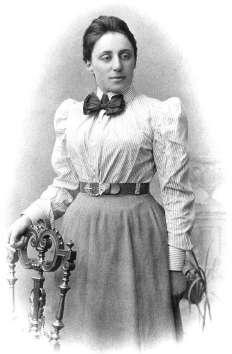
One reason [a vacuum is not empty] is that the walls of a vacuum chamber emit light in the form of blackbody radiation...If this soup of photons is in thermodynamic equilibrium with the walls, it can be said to have a particular temperature, as well as a pressure. Another reason that perfect vacuum is impossible is the Heisenberg uncertainty principle which states that no particles can ever have an exact position ...Each atom exists as a probability function of space, which has a certain nonzero value everywhere in a given volume. ...More fundamentally, quantum mechanics predicts ...a correction to the energy called the zero-point energy [that] consists of energies of virtual particles that have a brief existence. This is called vacuum fluctuation.
Luciano Boi
Conserved Quantity Symmetry Gauge field Local Symmetry Interaction Noether's Theorem AmalieEmmyNoether 96
Classical Newtonian Mechanics

Special Relativity
Quantum Mechanics
Relativistic Mechanics
Relativistic Quantum Mechanics
Quantum Electrodynamics
Classical Maxwellian Electrodynamics
Relativistic Electrodynamics
(Relativistic EM Field Theory)
(Relativistic Quantum EM Field Theory)
Relativistic Quantum Field Theory
Newton Optics
Gravitation
Spectrum of elements
General theory of relativity
Einstein Special theory of relativity
Expanding universe
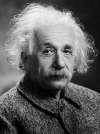
97
Scientific Units Named After Scientists
Scientist Unit Measures
André-Marie Ampère ampere (A)
Lord Kelvin kelvin (K)
Electric current
Thermodynamic temperature
Antoine Henri Becquerel becquerel (Bq) Radioactivity
Anders Celsius degree Celsius (°C) Temperature
Charles-Augustin de Coulomb coulomb (C) Electric charge
Alexander Graham Bell decibel (dB) Ratio
Michael Faraday farad (F) Capacitance
Joseph Henry henry (H) Inductance
Heinrich Rudolf Hertz hertz (Hz) Frequency
James Prescott Joule joule (J)
Energy, work, heat
Sir Isaac Newton newton (N) Force
Georg Simon Ohm ohm (Ω)
Blaise Pascal pascal (Pa)
Werner von Siemens siemens (S)
Nikola Tesla tesla (T)
Electrical resistance
Pressure
Electrical conductance
Magnetic flux density
98
Alessandro Volta volt (V) Electric potential and electromotive force
James Watt watt (W) Power & radiant flux
Wilhelm Eduard Weber weber (Wb) magnetic flux
Jean-Baptiste Biot biot (Bi) Electric current
Peter Debye debye (D) Electric dipole moment
Loránd Eötvös eotvos (E) Gravitational gradient
Galileo Galilei galileo (Gal) Acceleration
Carl Friedrich Gauss gauss (G or Gs) Magnetic flux density
William Gilbert gilbert (Gb)
Magnetomotive force
James Clerk Maxwell maxwell (Mx) Magnetic flux
Hans Christian Ørsted oersted (Oe) Magnetic field strength
Jean Léonard Marie Poiseuille poise (P) Dynamic viscosity
George Gabriel Stokes stokes (S or St) Kinematic viscosity
Anders Jonas Ångström ångström (Å) Distance
Heinrich Barkhausen Bark scale Psychoacoustical scale
Thomas Hunt Morgan centimorgan (cM) Recombination frequency
Marie Curie and Pierre Curie curie (Ci)
Radioactivity
99
John Dalton dalton (Da) Atomic mass
Henry Darcy darcy (D) Permeability
Gordon Dobson Dobson unit (DU) Atmospheric ozone
Daniel Gabriel Fahrenheit degree Fahrenheit (°F) Temperature
Enrico Fermi fermi (fm) Distance
Godfrey Newbold Hounsfield Hounsfield scale Radio density
Karl Jansky jansky (Jy) Electromagnetic flux
Samuel Pierpont Langley langley (ly) Solar radiation
Irving Langmuir langmuir (L) Gas exposure dose
Wilhelm Röntgen röntgen (R) X-rays or gamma radiation
Charles Francis Richter Richter magnitude Earthquake
Theodor Svedberg svedberg (S) Sedimentation rate
Evangelista Torricelli torr (Torr) Pressure
It is often stated that of all the theories proposed in this century, the silliest is quantum theory. In fact, some say that the only thing that quantum theory has going for it is that it is unquestionably correct.
Michio Kaku
100
1 Angstrom (Å) = 10 10 m
1 astronomical unit (AU) = 1 50 × 1011 m
1 light-year (ly) = 9.46 × 1015 m
1 parsec (pc) = 3.09 × 1016 m
1 kiloparsec (kpc) = 1000 pc
1 megaparsec (Mpc) = 1,000,000 pc
aphelion The orbital point of greatest distance from the sun
perihelion The orbital point of closest approach to the sun
apogee The orbital point of greatest distance from earth
apparent visual magnitude
The brightness of a star as seen by human eyes on earth
aurora The glowing light display that results when the streams of electrified particles (which are emitted by the sun) trapped in the magnetic field of the earth black dwarf White dwarf that has cooled sufficiently that it no longer emits heat or light compact object A star that has collapsed to form a white dwarf, neutron star or a black hole
variation + natural selection → biological evolution
Absolute zero 0 K Freezing point of water 273 K Boiling point of water 373 K
101
Early history of life on Earth
Formation of earth
Stable hydrosphere
Prebiotic chemistry
Pre-RNA world
-
RNA world
First DNA
(Protein life)
Diversification of life
102
Are you aware that the speed at which our planet is orbiting the sun is 67,000 miles per hour?
The Apollo 17 crew captured a full disc Earth image on December 7, 1972, while travelling to the Moon at a distance of around 29,000 kilometers (18,000 miles). Africa, Antarctica, and the Arabian Peninsula are depicted.
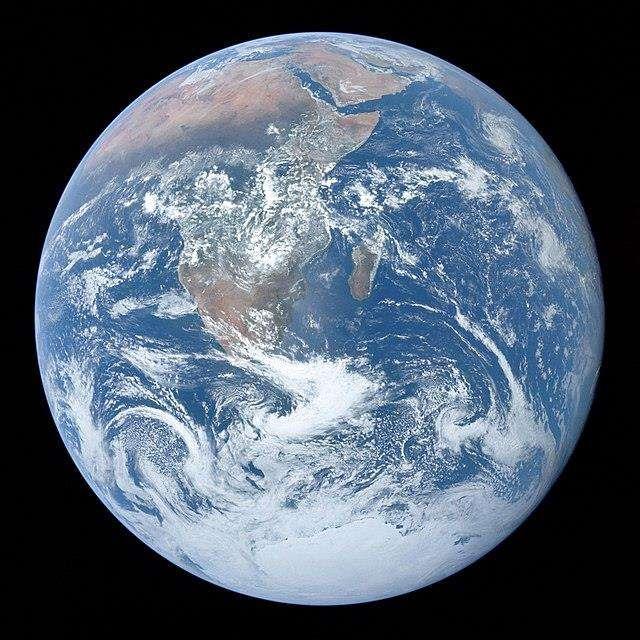
103
Cosmological Principle: The universe is the same everywhere.
Homogeneous: The universe looks the same from every point.
Isotropic: The universe looks the same in every direction.
"We know that matter can be created out of energy, and energy can be created out of matter. This doesn't resolve the dilemma because we must also know where the original energy came from. − Why the Big Bang is a fizzle and stars cannot evolve out of gas... "
Thus the last and most successful creation of theoretical physics, namely quantum mechanics (QM), differs fundamentally from both Newton's mechanics, and Maxwell's e-m field. For the quantities which figure in QM's laws make no claim to describe physical reality itself, but only probabilities of the occurrence of a physical reality that we have in view.
(Albert Einstein, 1931)
I cannot but confess that I attach only a transitory importance to this interpretation. I still believe in the possibility of a model of reality - that is to say, of a theory which represents things themselves and not merely the probability of their occurrence. On the other hand, it seems to me certain that we must give up the idea of complete localization of the particle in a theoretical model. This seems to me the permanent upshot of Heisenberg's principle of uncertainty.
Are there elementary particles that have not yet been observed, and, if so, which ones are they and what are their properties?
(Albert Einstein, 1934)
104
Thomson's model
Thermionic emission, photoelectric emission, and ionization were all satisfactorily described by J.J. Thomson's 1900 proposal of the plum pudding atomic model, the first theoretical description of the interior structure of atoms. The model was not able to account for the scattering of alpha particles, nor did it address the question of where the spectral lines that were seen in the spectrum of hydrogen and other atoms came from.
Aufbau principle: Electrons first enter the lowest energy orbitals.
With a mass of 1.6750 × 10 –27 kg and a spin angular momentum of ħ 2, the neutron is a fundamental neutral particle that is a necessary component of every nucleus with the exception of hydrogen atoms. It was found by James Chadwick, and it can enter a nucleus and trigger artificial nuclear disintegration.
Isotopes
The atoms of an element with varying mass numbers but the same atomic number and chemical characteristics
1H1 , 1H2 and 1H3
Isobars The nuclei with the same mass number but differing atomic number and chemical properties
1H3 and 2He3
Isotones
The nuclei with an equal number of neutrons
6C13 and 7N14
Mirror nuclei The nuclei with the same mass number but with atomic number differ by one
1H3 and 2He3
Electromagnetic repulsion keeps nuclei from colliding at slow speeds. When moving fast, nuclei become near enough to one another that a strong force can bring them together.
105
Packing fraction
Mass defect per nucleon
The nucleus is more stable the lower the packing fraction value.
Binding energy per nucleon ∝ Stability of nucleus
1 Becquerel = 1 disintegration per second,
1 Rutherford = 106 disintegrations per second
1 Curie = 3.7 × 1011 disintegrations per second
Intensity of light → energy incident per unit area in unit time
Intensity = Energy Area×time = Power Area
Hard X-rays
X-rays with a frequency of the order of ≈ 1019 Hz and greater penetrating power
Soft X-rays
X-rays with a frequency of the order of ≈ 1016 Hz and lesser penetrating power
Inertia of rest: It is a body's inability to alter its state of rest on its own. This means that a body at rest will stay at rest and won't be able to move on its own.
Inertia of motion: It is a body's inability to alter its state of motion on its own. This means that a body in uniform motion cannot accelerate or decelerate on its own.
Inertia of direction: It is a body's inability to alter its direction of motion on its own.
106
The Earth's only natural satellite "Moon" most likely would have sailed away by now if gravitation didn't exist! Because of Earth's gravitational pull, it is held in its orbit around the Earth.
Are you aware that the tides in our oceans and seas are caused by gravity?
If you were in the Earth's center, you would feel weightless.
Are you aware that you are taller in the morning than at night before you go to sleep? This behavior may be brought on by gravitation squeezing cartilage in our knees and other body components, including our spine, when you stand and sit during the day.
Black holes have the strongest gravitational pull in the entire universe. Every planet in the solar system has a different gravity. This is due to the fact that each planet's mass causes it to have a varied gravitational attraction. On Mercury, anything which weighs 100 pounds on Earth would only weigh 38 pounds.


107
The backwards-moving electron when viewed with time moving forwards appears the same as an ordinary electron, except that it is attracted to normal electrons - we say it has a positive charge. For this reason it's called a positron. The positron is a sister particle to the electron, and is an example of an anti-particle. ..This phenomena is general. Every particle in Nature has an amplitude to move backwards in time, and therefore has an anti-particle.
(Feynman, 1985)
For many years after Newton, partial reflection by two surfaces was happily explained by a theory of waves,* but when experiments were made with very weak light hitting photomultipliers, the wave theory collapsed: as the light got dimmer and dimmer, the photomultipliers kept making full sized clicks - there were just fewer of them. Light behaves as particles.
* This idea made use of the fact that waves can combine or cancel out, and the calculations based on this model matched the results of Newton's experiments, as well as those done for hundreds of years afterwards. But when experiments were developed that were sensitive enough to detect a single photon, the wave theory predicted that the clicks of a photomultiplier would get softer and softer, whereas they stayed at full strength - they just occurred less and less often. No reasonable model could explain this fact. This state of confusion was called the wave - particle duality of light.
Fermi's Paradox: If there are so many aliens where are they?
(Feynman, 1985)
The Coulombic repulsive force between two protons inside the nucleus is 1036 times the gravitational force between them. The nuclear attractive force between two neutrons is 1038 times the gravitational force between them.
Very likely, we are missing something important. Why is gravity so weak?
May because of hidden extra dimensions?
The faster you move, the shorter and the heavier you are.
And that is the Theory of Relativity.
108
Did you know that the static on your television is caused by radiation left over from the Big Bang?
Motion and gravity makes the clock tick slower.
, can you travel back in time and kill your grandfather before he conceive your father? If not, why the universe avoids the paradox?
Because
Time Travel − Science Fiction?
Black holes have no hair, says No hair theorem: Wait, What? Explaining the black hole
The answer is Simple: Mass, Charge and Angular Momentum
√1−v2 c2
Δt = ∆t0
109
Why the Quarks feel the strong force, leptons do not?
If the leptons would have felt the strong force, then they would have combined to form different particles.
The entire picture of Particle Physics would have been quite different.
Long-duration gamma ray bursts are associated with the deaths of massive stars in a specific kind of explosion called a supernova.
"Euclid taught me that without assumptions there is no proof. Therefore, in any argument, examine the assumptions" : Eric Temple Bell
2 cannot exist only for the reason that the quantum mechanics breaks down at temperature > than 10 K?
The discovery and confirmation of the cosmic microwave background radiation, or CMBR, in 1965 secured the Big Bang as the best theory of the origin and evolution of the universe…
SBH = kBA 4LP 2
"The area formula for the entropy or number of internal states of a black hole suggests that information about what falls into a black hole may be stored like that on a record, and played back as the black hole evaporates."
90
Temperature
√ћc5 Gk
>
B
32
110
The objects of different masses are accelerated towards the earth at the same rate, but with different forces
a = F m = 98N 10kg = 9.8 m/s2
a = F m = 9.8N 1kg = 9.8 m/s2
The physicist Leo Szilard once announced to his friend Hans Bethe that he was thinking of keeping a diary: "I don't intend to publish. I am merely going to record the facts for the information of God."
"Don't you think God knows the facts?" Bethe asked.
"Yes," said Szilard.
"He knows the facts, but He does not know this version of the facts."
A virtual-particle pair has a wave function that predicts that both particles will have opposite spins. But if one particle falls into the black hole, it is impossible to predict with certainty the spin of the remaining particle.
Space: the potential habitable worlds around ten thousand billion billion stars; ours is just one.
Time: a cosmic history of nearly 14 billion years; life took less than ½ billion years to start here.
91
S.W. Hawking
Hans Christian von Baeyer, Taming the Atom
111
S. W. Hawking
:
Gravitational lensing: The big galaxy cluster at the center of the image acts like the lens of a telescope. Any light from a distant object would converge as it passes around the galaxy. When we gaze at the distant galaxy, we see a ring like pattern called Einstein ring, an optical illusion caused by general relativity.
Newton rings is a phenomenon in which an interference pattern is created by the reflection of light between two surfaces a spherical surface and an adjacent flat surface. It is named after Isaac Newton, who first studied them in 1717.
"Science is uncertain. Theories are subject to revision; observations are open to a variety of interpretations, and scientists quarrel amongst themselves. This is disillusioning for those untrained in the scientific method, who thus turn to the rigid certainty of the Bible instead. There is something comfortable about a view that allows for no deviation and that spares you the painful necessity of having to think."
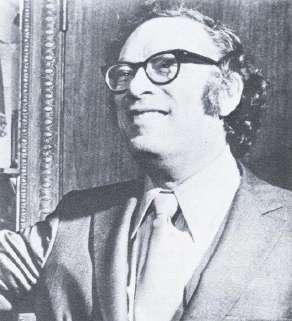
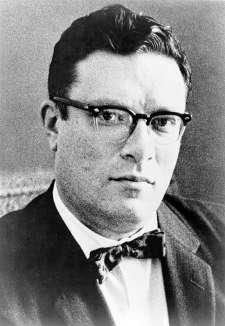
"If they not be inhabited, what a waste of space."
Thomas Carlyle, Scottish Essayist (1795-1881)
112
— Isaac Asimov
Strong force binds the nucleus
Electromagnetic force binds the atoms
Weak force induces radioactive decay
Gravitational force binds the solar system
Why the neutrinos only feel the weak force?
Atomic repulsion prevents matter from condensing into an extremely dense state while atomic attraction holds matter together.
Trojan asteroids are asteroids that orbit larger planets in close proximity. A meteoroid is a term used to describe an asteroid or a portion of it that enters the Earth's atmosphere. There is a belief concerning dinosaur extinction which suggests that dinosaurs became extinct after a massive asteroid, roughly 10 km in diameter, impacted the Earth.
Major constituent
Carbon Asteroids carbon
Metallic Asteroids
iron and nickel
Stony Asteroids silica (silicon dioxide)
The sun, which makes up 99.86% of the solar system's total mass, is the largest and most massive object in our solar system. Together, the solar system's planets, moons, asteroids, and comets make up around 0.14% of the entire solar system.

113
Einstein's equation that gave birth to the atom bomb and heralded a new world of atomic physics
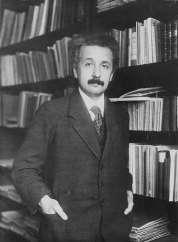
Due to the homogeneous distribution of galaxies throughout the visible universe, our universe has no center.
Our solar system is confined into an orbit around the center of our Milky Way galaxy. Our solar system completes one orbit in about 200 million years, which is referred to as a galactic year. Our Milky Way galaxy is roughly 1.5 trillion times the Solar mass and has a diameter of about 100,000 light-years.
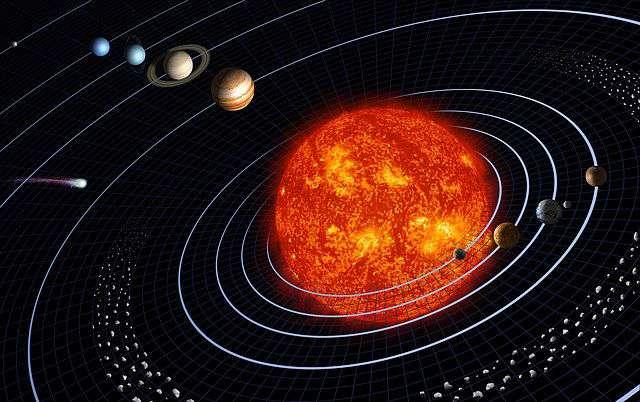
E=mc2
114
"Gravity is the force that rules the Universe. To understand its workings, to the finest degree, is to understand the very nature of our celestial home."
M.
Bartusiak
in Einstein's Unfinished Symphony
The densest known object is a neutron star, which has an extremely powerful gravitational field that can pull in light. The lifespan of smaller stars is greater than that of huge stars. Because large stars use nuclear fuel far more quickly than small stars In almost 4.5 billion years, our Sun has reached the midpoint of its lifespan. Our Sun will expand beyond Mars' orbit when it reaches the red giant stage in 4.5 billion years.
"Science is a game but a game with reality, a game with sharpened knives … If a man cuts a picture carefully into 1000 pieces, you solve the puzzle when you reassemble the pieces into a picture; in the success or failure, both your intelligences compete. In the presentation of a scientific problem, the other player is the good Lord. He has not only set the problem but also has devised the rules of the game but they are not completely known, half of them are left for you to discover or to deduce. The experiment is the tempered blade which you wield with success against the spirits of darkness or which defeats you shamefully. The uncertainty is how many of the rules God himself has permanently ordained, and how many apparently are caused by your own mental inertia, while the solution generally becomes possible only through freedom from its limitations."
Erwin Schrödinger
115
Did you know?
Galileo Galilei was the first to use a telescope he built to observe celestial bodies.
Did you know?
Hasan Ibn al-Haytham was the first person to create a visual picture of a solar eclipse. He created the picture with the aid of his own invention, a pinhole camera.
"In a scientific sense, earthquakes are unpredictable. But that does not mean that you can't predict things about them."
PETER SAMMONDS
Only Apollo 11 has made a lasting impression on the majority of people in the globe. Since it was used to deliver Neil Armstrong and the other crew members to the Moon, where they first stepped foot in 1969.
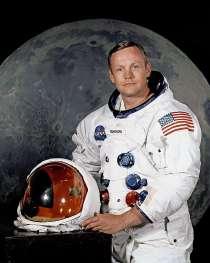
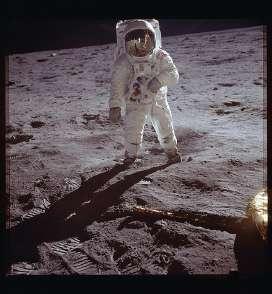
116
Neil Armstrong
Gαβ + gαβ Λ = 8πG c4 Tαβ (General Relativity with Λ)
Gαβ = 8πG c4 Tαβ (General Relativity without Λ)
Birth: Dec. 25, 1642 [Jan. 4, 1643, New Style], Woolsthorpe, Lincolnshire, England
Death: March 20 [March 31], 1727, London
Known for: the Newtonian Revolution
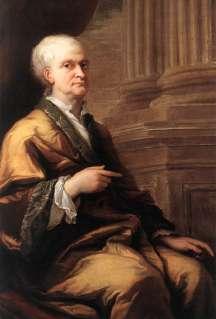
"Gravity explains the motions of the planets, but it cannot explain who sets the planets in motion."
William Stukely, who was a good friend of Newton's, wrote about Newton's Discovery in his ' Memoirs of Sir Isaac Newton's life ' in 1752.
He wrote:
93
Famous Scientists Who Changed the World
[1] Sir Isaac Newton
Isaac Newton
"Matter tells spacetime how to curve."
"Spacetime tells matter how to move."
117
Isaac Newton in old age in 1712
' After dinner, the weather being warm, we went into the garden, and drank tea under the shade of some apple trees…he told me, he was just in the same situation as when formally, the notation of gravitation came to his mind. "Why should that apple always descend perpendicularly to the ground," thought he to himself. '
As to your first query, it seems to me that if the matter of our sun and planets and all the matter of the universe were evenly scattered throughout all the heavens, and every particle had an innate gravity toward all the rest, and the whole space throughout which this matter was scattered was but finite, the matter on the outside of this space would, by its gravity, tend toward all the matter on the inside and, by consequence, fall down into the middle of the whole space and there compose one great spherical mass. But if the matter was evenly disposed throughout an infinite space, it could never convene into one mass; but some of it would convene into one mass and some into another, so as to make an infinite number of great masses, scattered at great distances from one to another throughout all that infinite space. And thus might the sun and fixed stars be formed, supposing the matter were of a lucid nature.
But how the matter should divide itself into two sorts, and that part of it which is to compose a shining body should fall down into one mass and make a sun and the rest which is t to compose an opaque body should coalesce, not into one great body, like the shining matter, but into many little ones; or if the sun at first were an opaque body like the planets or the planets lucid bodies like the sun, how he alone should be changed into a shining body whilst all they continue opaque, or all they be changed into opaque ones whilst he remains unchanged, I do not think explicable by mere natural causes, but am forced to ascribe it to the counsel and contrivance of a voluntary Agent.
− December 10, 1692
But you argue, in the next paragraph of your letter, that every particle of matter in an infinite space has an infinite quantity of matter on all sides, and, by consequence, an infinite attraction every way, and therefore must rest in equili- brio, because all infinites are equal. Yet you suspect a paralogism in this argument; and I conceive the paralogism lies in the position, that all infinites are equal. The generality of mankind consider infinites no other ways than indefinitely; and in this sense they say all infinites are equal; though they would speak more truly if they should say, they are neither equal nor unequal, nor have any certain difference or proportion one to another. In this sense, therefore, no conclusions can be drawn from them about the equality, proportions, or differences of things; and they that attempt to do it usually fall into paralogisms.
94
Letter from Sir Isaac Newton to Richard Bentley (one of the great figures in the history of classical scholarship)
118
So, when men argue against the infinite divisibility of magnitude, by saying, that if an inch may be divided into an infinite number of parts, the sum of those parts will be an inch; and if a foot may be divided into an infinite number of parts, the sum of those parts must be a foot; and therefore, since all infinites are equal, those sums must be equal, that is, an inch equal to a foot. The falseness of the conclusion shews an error in the premises; and the error lies in the position, that all infinites are equal.
− January 17, 1693
[2] Albert Einstein
Birth: March 14, 1879, Ulm, Wurttemberg, Germany
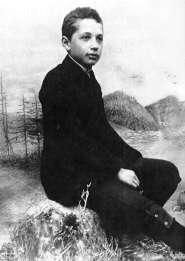
Death: April 18, 1955, Princeton, N.J., U.S.
Known for: The 1905 Annus mirabilis papers
On a Heuristic Point of View Concerning the Production and Transformation of Light − which introduced the theory of the photon or light quantum.
On the movement of small particles suspended in stationary liquids required by the molecularkinetic theory of heat, related to Brownian movement, which provided sufficient arguments to leave the atomic theory of matter definitively settled.
On the electrodynamics of moving bodies where he established the basis for the special theory of relativity.
Does the inertia of a body depend on its energy content? − In which he devised the formula which would later come to be written as E = mc2 .
Einstein letter to Professor G. Gamow (in August 4, 1946), with a comment handwritten by Gamow at the bottom
95
"The most beautiful experience we can have is the mysterious. It is the fundamental emotion that stands at the cradle of true art and true science."
Albert Einstein
119
Albert Einstein in 1893 (age 14)
Dear Dr. Gamow
After receiving your manuscript I read it immediately and then forwarded it to Dr. Spitzer. I am convinced that the abundance of elements as function of the atomic weight is a highly important starting point for cosmogonic speculations. The idea that the whole expansion process started with a neutron gas seems to be quite natural too. The explanation of the abundance curve by formation of the heavier elements in making use of the known facts of probability coefficients seems to me pretty convincing. Your remarks concerning the formation of the big units (nebulae) I am not able to judge for lack of special knowledge.
Thanking you for your kindness, I am yours sincerely,
Albert Einstein
(Of course, the old man agrees with almost anything nowadays.)
− Comment handwritten by Gamow
When Marie Curie was denied a seat in the French Academy of Sciences and Einstein sent a letter of support, he also wrote a sensitive note to Hilbert seeking to put disagreements behind and to rekindle their friendship. It says:
There was a moment in which something like as irritation came between us, the origin of which I no longer want to analyze. I have fought against the bitterness which it provoked in me, and have succeeded completely in doing so. I again think of you with unclouded friendship, and I ask you to do the same for me. It is really a pity if companions such as we are, who have managed to forge a path aside from the pettiness of this world, could find anything other than joy in each other's company.
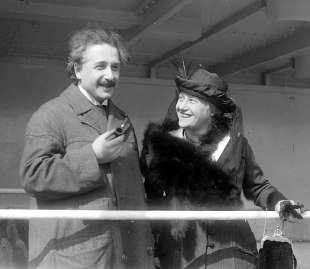
96
Einstein's Letter to Mathematician David Hilbert
The Einstein-Szilard Letter – 1939 Sir:
120
Einstein with his second wife, Elsa, in 1921
Some recent work by E. Fermi and L. Szilard, which has been communicated to me in manuscript, leads me to expect that the element uranium may be turned into a new and important source of energy in the immediate future. Certain aspects of the situation which has arisen seem to call for watchfulness and, if necessary, quick action on the part of the Administration. I believe therefore that it is my duty to bring to your attention the following facts and recommendations:
In the course of the last four months it has been made probable through the work of Joliot in France as well as Fermi and Szilard in America that it may become possible to set up a nuclear chain reaction in a large mass of uranium by which vast amounts of power and large quantities of new radium-like elements would be generated. Now it appears almost certain that this could be achieved in the immediate future.

This phenomenon would also lead to the construction of bombs, and it is conceivable though much less certain that extremely powerful bombs of a new type may thus be constructed. A single bomb of this type, carried by boat and exploded in a port, might very well destroy the whole port together with some of the surrounding territory. However, such bombs might very well prove to be too heavy for transportation by air.
The United States has only very poor ores of uranium in moderate quantities. There is some good ore in Canada and the former Czechoslovakia, while the most important source of uranium is Belgian Congo.
In view of this situation you may think it desirable to have some permanent contact maintained between the Administration and the group of physicists working on chain reactions in America. One possible way of achieving this might be for you to entrust with this task a person who has your confidence and who could perhaps serve in an inofficial capacity. His task might comprise the following:
a) to approach Government Departments, keep them informed of the further development, and put forward recommendations for Government action, giving particular attention to the problem of securing a supply of uranium ore for the United States.
b) to speed up the experimental work, which is at present being carried on within the limits of the budgets of University laboratories, by providing funds, if such funds be required, through his contacts with private persons who are willing to make contributions for this cause, and perhaps also by obtaining the cooperation of industrial laboratories which have the necessary equipment.
97
Einstein in 1904 (age 25) 121
I understand that Germany has actually stopped the sale of uranium from the Czechoslovakian mines which she has taken over. That she should have taken such early action might perhaps be understood on the ground that the son of the German Under-Secretary of State, von Weizsäcker, is attached to the Kaiser-Wilhelm-Institut in Berlin where some of the American work on uranium is now being repeated.

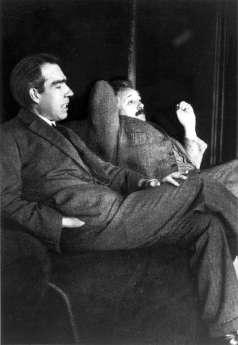
Yours very truly,
I have read with great satisfaction that the Palestinian Jewry has made you head of the new state. This is at least a partial reparation for the ungrateful attitude they have shown towards you and your great accomplishments. One still cannot say that the powerful men of this earth mean well with us. The game the English play with us is miserable, and the American attitude appears ambivalent.
However, I am confident that our people will overcome this last scare and that you will live to experience the satisfaction of having created a happy Jewish community.
With heartfelt greetings and best wishes,
98
Albert Einstein Letter from Albert Einstein to Chaim Weizmann
Dear Mr. Weizmann,
Your A. Einstein A letter from Albert Einstein to his daughter: on The Universal Force of Love
"When I proposed the theory of relativity, very few understood me, and what I will reveal now to transmit to mankind will also collide with the misunderstanding and prejudice in the world.
Niels Bohr and Albert Einstein debating quantum theory at Ehrenfest's home in Leiden (December 1925)
122
Einstein at the age of three in 1882
I ask you to guard the letters as long as necessary, years, decades, until society is advanced enough to accept what I will explain below.
There is an extremely powerful force that, so far, science has not found a formal explanation to. It is a force that includes and governs all others, and is even behind any phenomenon operating in the universe and has not yet been identified by us. This universal force is LOVE.
When scientists looked for a unified theory of the universe they forgot the most powerful unseen force. Love is Light, that enlightens those who give and receive it. Love is gravity, because it makes some people feel attracted to others. Love is power, because it multiplies the best we have, and allows humanity not to be extinguished in their blind selfishness. Love unfolds and reveals. For love we live and die. Love is God and God is Love.
This force explains everything and gives meaning to life. This is the variable that we have ignored for too long, maybe because we are afraid of love because it is the only energy in the universe that man has not learned to drive at will.
To give visibility to love, I made a simple substitution in my most famous equation. If instead of E = mc2, we accept that the energy to heal the world can be obtained through love multiplied by the speed of light squared, we arrive at the conclusion that love is the most powerful force there is, because it has no limits.
After the failure of humanity in the use and control of the other forces of the universe that have turned against us, it is urgent that we nourish ourselves with another kind of energy…
If we want our species to survive, if we are to find meaning in life, if we want to save the world and every sentient being that inhabits it, love is the one and only answer.
Perhaps we are not yet ready to make a bomb of love, a device powerful enough to entirely destroy the hate, selfishness and greed that devastate the planet.
However, each individual carries within them a small but powerful generator of love whose energy is waiting to be released.
When we learn to give and receive this universal energy, dear Lieserl, we will have affirmed that love conquers all, is able to transcend everything and anything, because love is the quintessence of life.
I deeply regret not having been able to express what is in my heart, which has quietly beaten for you all my life. Maybe it's too late to apologize, but as time is relative, I need to tell you that I love you and thanks to you I have reached the ultimate answer! ".
99
123
Your father,
Albert
Einstein
Letter from Albert Einstein to the Jewish philosopher Eric B. Gutkind
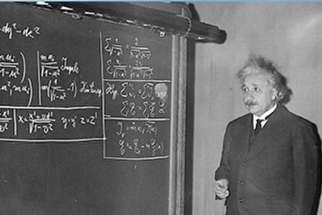
The word God is for me nothing more than the expression and product of human weaknesses, the Bible a collection of honorable, but still primitive legends which are nevertheless pretty childish. No interpretation no matter how subtle can (for me) change this. These subtilised interpretations are highly manifold according to their nature and have almost nothing to do with the original text. For me the Jewish religion like all other religions is an incarnation of the most childish superstitions. And the Jewish people to whom I gladly belong and with whose mentality I have a deep affinity have no different quality for me than all other people. As far as my experience goes, they are also no better than other human groups, although they are protected from the worst cancers by a lack of power. Otherwise I cannot see anything 'chosen' about them.
In general I find it painful that you claim a privileged position and try to defend it by two walls of pride, an external one as a man and an internal one as a Jew. As a man you claim, so to speak, a dispensation from causality otherwise accepted, as a Jew the privilege of monotheism. But a limited causality is no longer a causality at all, as our wonderful Spinoza recognized with all incision, probably as the first one. And the animistic interpretations of the religions of nature are in principle not annulled by monopolization. With such walls we can only attain a certain self-deception, but our moral efforts arenot furthered by them. On the contrary.
Now that I have quite openly stated our differences in intellectual convictions it is still clear to me that we are quite close to each other in essential things, i.e; in our evaluations of human behavior. What separates us are only intellectual 'props' and 'rationalization' in Freud's language. Therefore I think that we would understand each other quite well if we talked about concrete things.
With friendly thanks and best wishes,
Yours, A. Einstein
100
124
Albert Einstein near a blackboard with special relativity formulae, before 1940.
Imagination is more important than knowledge. Knowledge is limited. Imagination encircles the world.
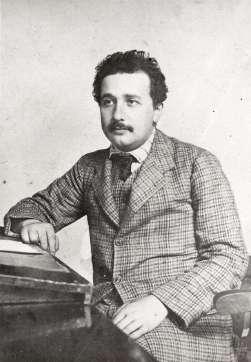
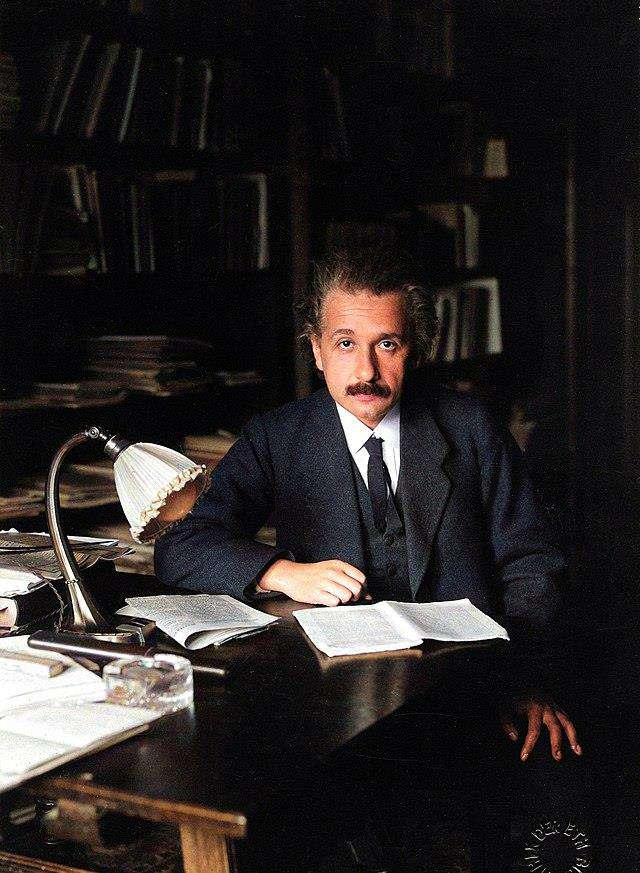
in the USA in 1920, this image shows Albert Einstein working in his office at the University of Berlin.
Published
125
Albert Einstein
Do Scientists Pray? Einstein Answers a Little Girl's Question about Science vs. Religion
The Riverside Church
January 19, 1936
My dear Dr. Einstein,

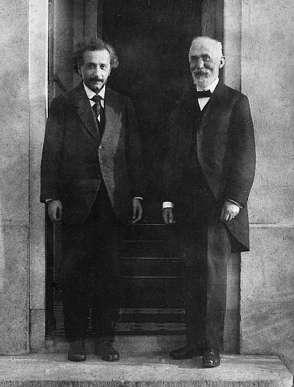
We have brought up the question: Do scientists pray? in our Sunday school class. It began by asking whether we could believe in both science and religion. We are writing to scientists and other important men, to try and have our own question answered.
We will feel greatly honored if you will answer our question: Do scientists pray, and what do they pray for? We are in the sixth grade, Miss Ellis's class.
Respectfully yours,
Phyllis Einstein's reply:
January 24, 1936
Dear Phyllis,
I will attempt to reply to your question as simply as I can. Here is my answer:
Scientists believe that every occurrence, including the affairs of human beings, is due to the laws of nature. Therefore a scientist cannot be inclined to believe that the course of events can be influenced by prayer, that is, by a supernaturally manifested wish.
101
Albert Einstein and Hendrik Antoon Lorentz, photographed by Paul Ehrenfest (1880-1933) in front of his home in Leiden in 1921.
126
A photo of Einstein in his "miracle year"
However, we must concede that our actual knowledge of these forces is imperfect, so that in the end the belief in the existence of a final, ultimate spirit rests on a kind of faith. Such belief remains widespread even with the current achievements in science.
But also, everyone who is seriously involved in the pursuit of science becomes convinced that some spirit is manifest in the laws of the universe, one that is vastly superior to that of man. In this way the pursuit of science leads to a religious feeling of a special sort, which is surely quite different from the religiosity of someone more naive.
With cordial greetings, your A. Einstein Russell-Einstein Manifesto
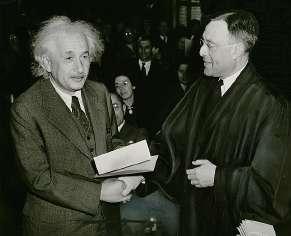
5 April, 1955.
41, Queen's Road, Richmond, Surrey.
Dear Einstein,
I have been turning over in my mind, and discussing with various people, the best steps for giving effect to the feeling against war among the great majority of men of science. I think the first step should be a statement by men of the highest eminence, communists and anti-Communists, Western and Eastern, about the disasters to be expected in a war. I enclose a draft of such a statement, and I very much hope that you will be willing to sign it. I enclose also a list of those whom I am asking to sign. If sufficient signatures are obtained, I think the next step should be an international scientific congress which should be invited by the signatories to pass a resolution on the lines of the draft resolution which I enclose. I hope that in this way both Governments and public opinion can be made aware of the seriousness of the situation.

102
127
Albert Einstein receiving from Judge Phillip Forman his certificate of American citizenship.
On the whole, I have thought that it was better at this stage to approach only men of science and not men in other fields, such as Arnold Toynbee whom you mentioned. Scientists have, and feel that they have, a special responsibility, since their work has unintentionally caused our present dangers. Moreover, widening the field would make it very much more difficult to steer clear of politics.
Yours sincerely,
(Signed, 'Bertrand Russell')
In response, Einstein was brief:
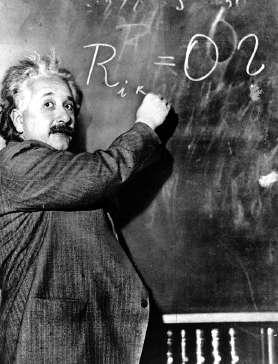
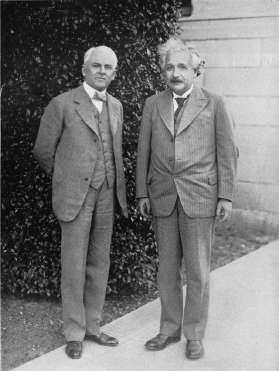
Dear Bertrand Russell,
Thank you for your letter of April 5. I am gladly willing to sign your excellent statement. I also agree with your choice of the prospective signers.
With kind regards,
Einstein.
Birth: Oct. 7, 1885, Copenhagen, Denmark
Death: Nov. 18, 1962, Copenhagen
Known for: the Atom
103
A.
[3] Niels Bohr
"Everything we call real is made of things that cannot be regarded as real."
Niels Bohr
Robert A. Millikan and Albert Einstein at the California Institute of Technology
128
Albert Einstein writes a density formula of the Milky Way on January 14, 1931 on the board of the Carnegie Institute of the Mt. Wilson Observatory in Pasadena, California.
In the handwriting of Niels Bohr's assistant, Aage Petersen.
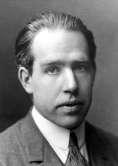

Undated, but written after the first publication, in 1957, of the Danish translation of Robert Jungk, Heller als Tausend Sonnen, the first edition of Jungk's book to contain Heisenberg's letter
Dear Heisenberg,
I have seen a book, "Stærkere end tusind sole" ["Brighter than a thousand suns"] by Robert Jungk, recently published in Danish, and I think that I owe it to you to tell you that I am greatly amazed to see how much your memory has deceived you in your letter to the author of the book, excerpts of which are printed in the Danish edition [1957].
Personally, I remember every word of our conversations, which took place on a background of extreme sorrow and tension for us here in Denmark. In particular, it made a strong impression both on Margrethe and me, and on everyone at the Institute that the two of you spoke to, that you and Weizsäcker expressed your definite conviction that Germany would win and that it was therefore quite foolish for us to maintain the hope of a different outcome of the war and to be reticent as regards all German offers of cooperation. I also remember quite clearly our conversation in my room at the Institute, where in vague terms you spoke in a manner that could only give me the firm impression that, under your leadership, everything was being done in Germany to develop atomic weapons and that you said that there was no need to talk about details since you were completely familiar with them and had spent the past two years working more or less exclusively on such preparations. I listened to this without speaking since [a] great matter for mankind was at issue in which, despite our personal friendship, we had to be regarded as representatives of two sides engaged in mortal combat. That my silence and gravity, as you write in the letter, could be taken as an expression of shock at your reports that it was possible to make an atomic bomb is a quite peculiar misunderstanding, which must be due to the great tension in your own mind. From the day three years earlier when I realized that slow neutrons could only cause fission in Uranium 235 and not 238, it was of course obvious to me that a bomb with certain effect could be produced by separating the uraniums. In June 1939 I had even given a public lecture in Birmingham about uranium fission, where I talked about the effects of such a bomb but of course added that the technical preparations would be so large that one did not know how soon they could be overcome. If anything in my behaviour could be interpreted as shock, it did not derive from such reports but rather from thenews, as I had to understand it, that Germany was participating vigorously in a race to be the first with atomic weapons.
104
Draft of letter from Bohr to Heisenberg, never sent
Bohr as a young man
129
Bohr in 1922
Besides, at the time I knew nothing about how far one had already come in England and America, which I learned only the following year when I was able to go to England after being informed that the German occupation force in Denmark had made preparations for my arrest.

All this is of course just a rendition of what I remember clearly from our conversations, which subsequently were naturally the subject of thorough discussions at the Institute and with other trusted friends in Denmark. It is quite another matter that, at that time and ever since, I have always had the definite impression that you and Weizsäcker had arranged the symposium at the German Institute, in which I did not take part myself as a matter of principle, and the visit to us in order to assure yourselves that we suffered no harm and to try in every way to help us in our dangerous situation.
This letter is essentially just between the two of us, but because of the stir the book has already caused in Danish newspapers, I have thought it appropriate to relate the contents of the letter in confidence to the head of the Danish Foreign Office and to Ambassador Duckwitz.
[4] Charles Darwin
Birth: Feb. 12, 1809, Shrewsbury, Shropshire, England
Death: April 19, 1882, Downe, Kent
Known for: Evolution
"If I had my life to live over again, I would have made a rule to read some poetry and listen to some music at least once every week."
Charles Darwin
105
130
Werner Heisenberg (left) with Bohr at the Copenhagen Conference in 1934
We do share approximately 90% of our DNA with chimpanzees.
The first mammal to descend from reptiles was the platypus.
The term "survival of the fittest" was not coined by Charles Darwin (1809–1882) to sum up his thesis. The phrase was instead established by the philosopher Herbert Spencer (1820–1903).
Yeast, a single live cell that repeats every 90 minutes, and humans have approximately 31% of the same genes.
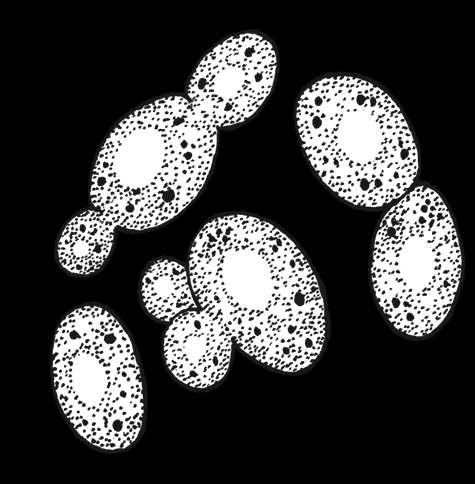
The term "evolution" does not occur in Charles Darwin's book "On the Origin of Species" (1859), despite the fact that it is the book from which the modern theory of evolution originated.
The word "evolution" comes from the Latin evolutionem, which is used to describe the unrolling or unfolding of something that has been coiled up.
The three fundamental assumptions of the theory of evolution are as follows:
1) It is plausible for an organism's DNA to alter or mutate
2) The change may be detrimental, constructive, or neutral
3) Over an extended period of time, the mutations result in the emergence of new organisms.
131
Darwin-Hooker Letter
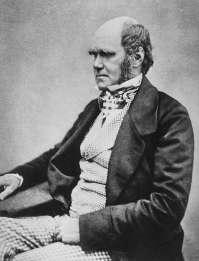
"At last gleams of light have come, & I am almost convinced (quite contrary to opinion I started with) that species are not (it is like confessing a murder) immutable."
Happy 200th birthday! I hope you are as well as can expected for someone who has been dead for nearly 130 years. I suppose that your final book, the one about earthworms, has a special significance for you these days. Are the worms of Westminster Abbey superior to the ones you studied so carefully in the grounds of your home at Downe in Kent? They’ve certainly mulched some distinguished people over the years!
But enough of the personal questions: let me introduce myself. I am one of thousands – maybe tens of thousands
of professional biologists who work full time on your scientific legacy. You’ll be happy to know that Britain remains a powerhouse in what we nowadays call evolutionary biology, and your ideas now have wide currency across the entire planet. I work in Chicago, in the United States of America. But even the French have finally reluctantly relinquished their embrace of Jean-Baptiste Lamarck, whose misguided evolutionary ideas you did so much to discredit.
Your Origin of Species turns 150 this year. I just re-read it in your honour and must say that, though you did not always have the snappiest turn of phrase, it really is a wonderfully comprehensive and insightful work. It is remarkable, considering what you did not know when you wrote it, how robust the book has proved over the years. The findings of modern biology, many of them inconceivable to you as you beavered away in your Down House study, have provided ever more evidence in support of your ideas, and none that contradicts them. We have learned a huge amount in the past 150 years, but nearly all of it still fits comfortably into the framework you outlined in The
106
Charles Darwin to Joseph Dalton Hooker, 11 January 1844
A letter to Charles Darwin from Jerry Coyne
My Dear Mr. Darwin,
–
132
Darwin, c. 1854, when he was preparing On the Origin of Species for publication
Origin. Take DNA, for example. This is what we call the hereditary material that is passed down from generation to generation. You knew nothing about it – remember how you wished you understood more about how heredity works? Now we have full DNA sequences from dozens of species, each one a string of billions of the four DNA letters A, T, G and C each a different chemical compound. What do we find when we compare these sequences, say between a mouse and a human? We see the DNA equivalent of the anatomical similarities – as mammals – that you noted mice and humans share because they are descended from a common ancestor, an early mammal. Strings of As, Gs, Cs, and Ts tell precisely the same evolutionary story as traits like lactation and warmbloodedness. It is absolutely marvelous that your 150 year old insight on common ancestry should be so relevant to the very latest discoveries of the new field we call molecular biology.
In The Origin, you gave very little evidence for evolution from the fossil record, wringing your hands instead about the incompleteness of the geological record. But since then, the labors of fossil-hunters throughout the world have turned up plenty of evidence of evolutionary change, and many amazing "transitional" forms that connect major groups of animals, proving your idea of common ancestry. You predicted that these forms would exist; we have found them. These include fossils that show transitions between mammals and reptiles, fish and amphibians, and even dinosaurs with feathers the ancestors of birds! Just in the past few years, paleontologists have unearthed an astonishing fossil, called Tiktaalik, that is intermediate between fish and amphibians. It has the flat head and neck of an amphibian, but a fishy tail and body, while its fins are sturdy, easily able, with slight modification, to give them a leg up when they left the water. The fossil record has given us a direct glimpse of an event of great moment in the history of the planet: the colonization of land by vertebrates. And we have evidence just as convincing for the recolonization of the sea by mammals: the group that gave rise to whales. In The Origin, you were correct in suggesting that whales arose from land animals, but you got it wrong on one point. You thought they may have come from carnivores like bears, but we now know this is not true. Instead, the ancestral whale came from a small hooved animal rather like a deer. And in the last thirty years we have discovered a whole series of intermediate fossils spanning the gap from those ancient deer to modern whales, showing them losing their hind legs, evolving flippers, and moving their breathing hole to the top of their head. Both Tiktaalik and these ancestral whales put paid to the objection, which you yourself encountered, that no transitional form between land and water could possibly have existed.
Perhaps the most remarkable set of intermediate fossils, however, come from an evolutionary transition rather closer to home. In 1871, you more predicted that, since humans seem most related to African great apes, gorillas and chimpanzees, we would find human fossils on that continent. And now we have them in profusion! It turns out that our lineage separated from that of chimpanzees, our closest living relatives, nearly 7 million years ago, and we have a superb series of fossils documenting our transition from early apelike creatures to more modern human forms. Our own species has become an exemplar of evolution. And we know even more: evidence from our hereditary DNA
107
133
material has told us that all modern humans came from a relatively recent migration event about 100,000 years ago when our ancestors left Africa and spread throughout the world.
The idea you were proudest of was natural selection. That too has had a good 150 years, holding up well as the main cause of evolution and the only known cause of adaptation. Perhaps the most dramatic modern example involves bacteria that are now known to cause disease, including the scarlet fever that was such a plague upon your family. Chemists have developed drugs to cure diseases like this, but now, as you might well predict, the microbes are becoming resistant to those drugs precisely in accord with the principles of natural selection for the most drugresistant microbes are the ones that survive to breed. There are hundreds of other cases. One that will especially please you is the observation of natural selection in the Galápagos finches you collected in the Beagle voyage now called "Darwin's finches" in your honor. A few decades ago, zoologists observed a great drought on the islands that reduced the number of small seeds available for the birds to eat. And, just as predicted, natural selection caused the evolution of larger-beaked birds within only a few years. These examples would surely be a centerpiece of The Origin were you to rewrite it today.
All told, the resilience of your ideas is remarkable. But that is not to say that you got everything right. On The Origin of Species was, admit it, a misnomer. You described correctly how a single species changes through time, but you came a cropper trying to explain how one species splits into two. Speciation is a significant problem, because it underpins the branching process that has yielded the tree of life – that extraordinary vision you bequeathed us of the natural world as one vast genealogy. Speciation is the key to understanding how, starting with the very first species on earth, evolution has resulted in the 50 million species that are thought to inhabit our planet today.
You once called speciation the "mystery of mysteries," but it’s a lot less mysterious these days. We recognize now that species are separated one from another by barriers to reproduction. That is, we recognize different species, like humans and chimpanzees, because they cannot successfully interbreed. To modern evolutionary biologists, studying "the origin of species" means studying how these barriers to reproduction arise. And now that we have a concrete phenomenon to investigate, we are making remarkable progress in understanding the genetic details of how one species splits into two. This is in fact the problem to which I’ve devoted my entire career
I wish I could end this letter by telling you that your theory of evolution has achieved universal acceptance. As you well knew, evolution has proved a bitter pill for religious people to swallow. For example, a large proportion of the American public, despite access to education, clings to a belief in the literal truth of Genesis. You will find this hard
108
134
to believe, but more Americans believe in the existence of heavenly angels than accept the fact of evolution. Unfortunately, I must often put aside my research to fight the attempts of these "creationists" to have their Biblical views taught in the public schools. Humans have evolved extraordinary intellectual abilities, but sadly these are not always given a free rein by their owners. But this probably won’t surprise you – remember the Bishop of Oxford and his attempt to put your friend Thomas H. Huxley in his place?
You wrote in your introduction to The Origin of Species that
"No one can feel more sensible than I do of the necessity of hereafter publishing in detail all the facts, with references, on which my conclusions have been grounded; and I hope in a future work to do this."
It seems that, distracted by other projects, you never got around to it, but my own effort along these lines is represented in a book (which I enclose) called Why Evolution is True. It goes further to describe the evidence supporting you than a letter this size ever could, but it's just one book at just one moment in the history of biology. When I myself am as long gone as you are, somebody else will certainly need to write an update, for the facts supporting your theories continue to roll in, and I wager they will continue to do so.
So, rest in peace, Mr. Darwin, and here's hoping that the next hundred years will see a steady evolution of rationality in a troubled world.
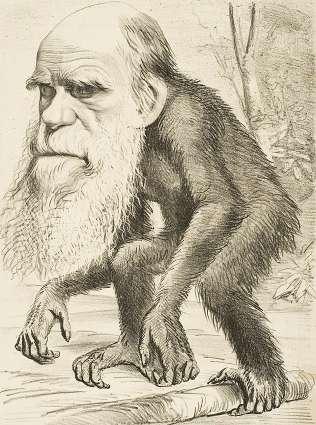
Your most humble servant,
Jerry Coyne
[5]
Louis Pasteur
Birth: Dec. 27, 1822, Dole, France
Sept. 28, 1895, Saint-Cloud, near Paris
Known for: the Germ Theory of Disease
109
Editorial cartoon depicting Charles Darwin as an ape (1871) 135
"Science knows no country, because knowledge belongs to humanity, and is the torch which illuminates the world."
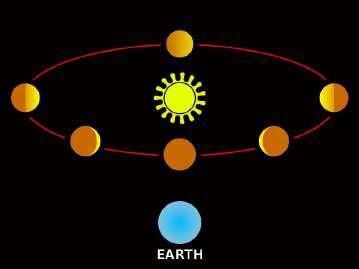 Louis Pasteur
Louis Pasteur
Birth: May 6, 1856, Freiberg, Moravia, Austrian Empire [now Přibor, Czech Republic]
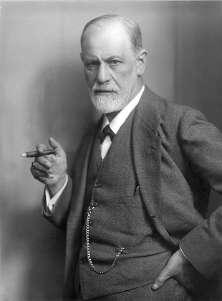
Death: Sept. 23, 1939, London, England
Known for: Psychology of the Unconscious
"Religion is an attempt to get control over the sensory world, in which we are placed, by means of the wish-world, which we have developed inside us as a result of biological and psychological necessities. But it cannot achieve its end. Its doctrines carry with them the stamp of the times in which they originated, the ignorant childhood days of the human race. Its consolations deserve no trust. Experience teaches us that the world is not a nursery. The ethical commands, to which religion seeks to lend its weight, require some other foundations instead, for human society cannot do without them, and it is dangerous to link up obedience to them with religious belief. If one attempts to assign to religion its place in man's evolution, it seems not so much to be a lasting acquisition, as a parallel to the neurosis which the civilized individual must pass through on his way from childhood to maturity."
Birth: Feb. 15, 1564, Pisa [Italy]
Death: Jan. 8, 1642, Arcetri, near Florence
110
[6] Sigmund Freud
Sigmund Freud
[7] Galileo Galilei
136
The phases of Venus, observed by Galileo in 1610
Known for: the New Science
"In questions of science, the authority of a thousand is not worth the humble reasoning of a single individual."
Birth: Aug. 26, 1743, Paris, France
Death: May 8, 1794, Paris
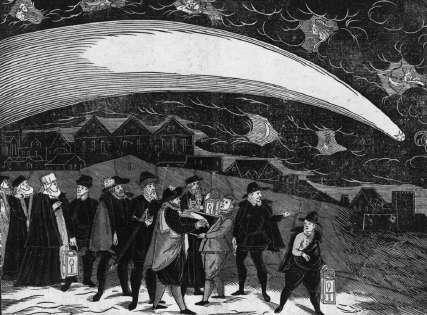
Known for: the Revolution in Chemistry
"In nature nothing is created, nothing is lost, everything changes."
Birth: Dec. 27, 1571, Weil der Stadt, Wurttemberg [Germany]
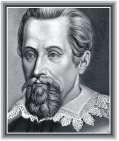

Death: Nov. 15, 1630, Regensburg
Known for: Motion of the Planets
"Geometry has two great treasures; one is the Theorem of Pythagoras; the other, the division of a line into extreme and mean ratio. The first we may compare to a measure of gold; the second we may name a precious jewel."
111
― Galileo Galilei
[8] Antoine-Lau rent Lavoisier
Antoine-Laurent de Lavoisier
[9] Johannes Kepler
Galileo showing the Doge of Venice how to use the telescope
137
As a child, Kepler witnessed the Great Comet of 1577, which attracted the attention of astronomers across Europe.
Birth: Feb. 19, 1473, Toruń, Poland
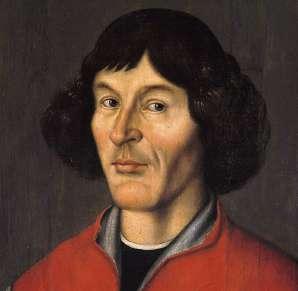
Death: May 24, 1543, Frauenburg, East Prussia [now Frombork, Poland]
Known for: the Heliocentric Universe
"To know that we know what we know, and to know that we do not know what we do not know, that is true knowledge."
Birth: Sept. 22, 1791, Newington, Surrey, England
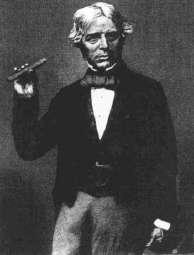
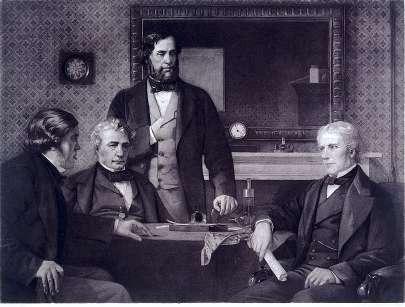
Death: Aug. 25, 1867, Hampton Court
Known for: the Classical Field Theory
"Nothing is too wonderful to be true if it be consistent with the laws of nature."
Birth: June 13, 1831, Edinburgh, Scotland
Death: Nov. 5, 1879, Cambridge, Cambridgeshire, England
112
Johannes Kepler
[10] Nicolaus Copernicus
Nicolaus Copernicus
[11] Michael Faraday
Michael Faraday
[12] James Clerk Maxwell
Three Fellows of the Royal Society offering the presidency to Faraday, 1857
138
Faraday holding a type of glass bar he used in 1845 to show magnetism affects light in dielectric material.
Known for: the Electromagnetic Field
5 February 1858, from The Life of James Clerk Maxwell, Campbell and Garnett, pp.306-6
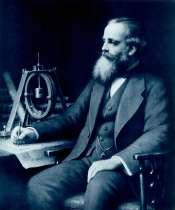
With respect to the " material sciences," they appear to me to be the appointed road to all scientific truth, whether metaphysical, mental, or social. The knowledge which exists in these subjects derives a great part of its value from ideas suggested by analogies from the material sciences, and the remaining part, though valuable and important to mankind, is not scientific but aphoristic. The chief philosophical value of physics is that it gives the mind something distinct to lay hold of, which, if you don't, Nature at once tells you you are wrong. Now, every stage of this conquest of truth leaves a more or less presentable trace on the memory, so that materials are furnished here more than anywhere else for investigation of the great question, "How does Knowledge come?"
I have observed that the practical cultivators of science (e.g., Sir J. Herschel, Faraday, Ampere, Oersted, Newton, Young), although differing excessively in turn of mind, have all a distinctness and a freedom from the tyranny of words in dealing with questions of Order, Law, etc., which pure speculators and literary men never attain.
Now, I am going to put down something on my own authority, which you must not take for more than it is worth. There are certain men who write books, who assume that, whatever things are orderly, certain, and capable of being accurately predicted by men of experience, belong to one category; and whatever things are the result of conscious action, whatever are capricious, contingent, and cannot be foreseen, belong to another category.
All the time I have lived and thought, I have seen more and more reason to disagree with this opinion, and to hold that all want of order, caprice, and unaccountableness results from interference with liberty, which would, if unimpeded, result in order, certainty, and trustworthiness (certainty of success of predicting). Remember I do not say that caprice and order are not the result of free will (so called), only I say that there is a liberty which is not disorder, and that this is by no means less free than the other, but more.
113
"Thoroughly conscious ignorance is the prelude to every real advance in science."
James Clerk Maxwell
Maxwell Letter to R. B. Litchfield
139
In the next place, there are various states of mind, and schools of philosophy corresponding to various stages in the evolution of the idea of liberty.
In one phase, human actions are the resultant (by parallelogram of forces) of the various attractions of surrounding things, modified in some degree by internal states, regarding which all that is to be said is that they are subjectively capricious, objectively the "RESULT OF LAW," that is, the wilfulness of our wills feels to us like liberty, being in reality necessity.
In another phase, the wilfulness is seen to be anything but free will, since it is merely a submission to the strongest attraction, after the fashion of material things. So some say that a man's will is the root of all evil in him, and that he should mortify it out till nothing of himself remains, and the man and his selfishness disappear together. So said Buddha (see Max Muller), and many Christians have and thought nearly the same thing.
Nevertheless there is another phase still, in which appears a possibility of the exact contrary to the first state, namely, an abandonment of wilfulness without extinction of will, but rather by means of a great development of will, whereby, instead of being consciously free and really in subjection to unknown laws, it becomes consciously acting by law, and really free from the interference of unrecognised laws.
There is a screed of metaphysics. I don't suppose that is what you wanted. I have no nostrum that is exactly what you want. Every man must brew his own, or at least fill his own glass for himself, but I greatly desire to hear some more from you, just to get into rapport.

Birth: July 12, 1813, Saint-Julien
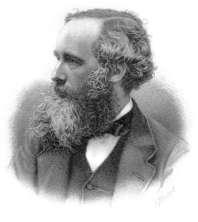
Death: February. 10, 1878, Paris
Known for: the Founding of Modern Physiology
can learn nothing except by going from the known to the unknown."
114
[13] Claude Bernard
"Man
Claude Bernard
[14] Franz Boas
140
Maxwell proved that the Rings of Saturn were made of numerous small particles.
Birth: July 9, 1858, Minden, Westphalia, Germany
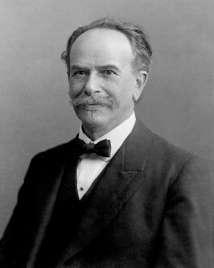
Death: December 21, 1942, New York, U.S
Known for: Modern Anthropology
"The passion for seeking the truth for truth's sake...can be kept alive only if we continue to seek the truth for truth's sake."
[15] Werner Heisenberg
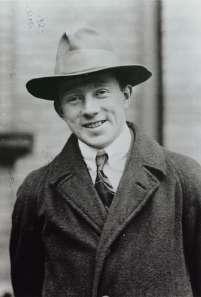
Birth: December, 1901, Würzburg, Bavaria, German Empire
Death: 1 February 1976, Munich, Bavaria, West Germany
Known for: Quantum Theory
"What we observe is not nature itself, but nature exposed to our method of questioning."
[16] Linus Pauling
Birth: Feb. 28, 1901, Portland, Ore., U.S.
Death: Aug. 19, 1994, Big Sur, California
Known for: Twentieth-Century Chemistry
Linus Pauling, 1952
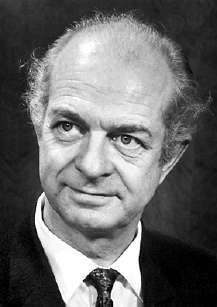
115
Franz Boas
Werner Heisenberg
141
1 March 1962 Night Letters Durham, NC
Are you going to give an order that will cause you to go down in history as one of the most immoral men of all time and one of the greatest enemies of the human race? In a letter to the New York Times, I state that nuclear tests duplicating the Soviet 1961 tests would seriously damage over 20 million unborn children, including those caused to have gross physical or mental defect and also the still births and embryonic, neonatal and childhood deaths from the radioactive fission products and carbon 14. Are you going to be guilty of this monstrous immorality, matching that of the Soviet leaders, for the political purpose of increasing the still imposing lead of the United States over the Soviet Union in nuclear weapons technology?
(Signed) Linus Pauling [17] Erwin Schrodinger
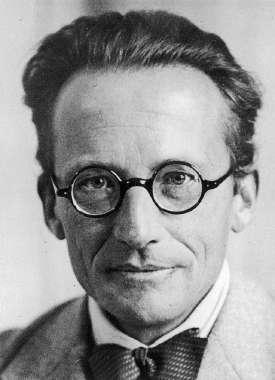

Birth: Aug. 12, 1887, Vienna, Austria
Death: Jan. 4, 1961, Vienna
Known for: Wave Mechanics
116
"The best way to get a good idea is to have a lot of ideas."
Linus Pauling
Letter from Linus Pauling to President Kennedy
President John F. Kennedy, White House:
"The scientist only imposes two things, namely truth and sincerity, imposes them upon himself and upon other scientists."
142
Linus Pauling at the California Institute of Technology (1941)
Birth: April 26, 1785, Les Cayes, Saint-Domingue, West Indies [now in Haiti]
Death: Jan. 27, 1851, New York, N.Y., U.S.
Known for: drawings and paintings of North American birds

"The woods would be very silent if no birds sang except those who sang the best."
Birth: Aug. 30, 1871, Spring Grove, N.Z.
Death: Oct. 19, 1937, Cambridge, Cambridgeshire, England
Known for: the Structure of the Atom
"All science is either physics or stamp collecting."
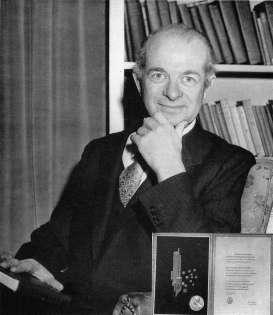
Birth: Aug. 8, 1902, Bristol, Gloucestershire, England
Death: Oct. 20, 1984, Tallahassee, Florida, USA

117
Erwin Schrödinger
[18] John James Audubon
― John James Audubon
[19] Ernest Rutherford
Ernest Rutherford
[20] Paul Adrien Maurice Dirac
Linus Pauling with an inset of his Nobel Prize in 1955
143
Dirac, photographed in 1933
Known for: Quantum Electrodynamics
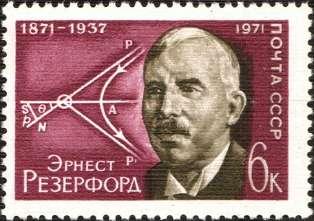
"A theory with mathematical beauty is more likely to be correct than an ugly one that fits some experimental data. God is a mathematician of a very high order, and He used very advanced mathematics in constructing the universe."
Paul A. M. Dirac
[21]
Birth: Dec. 1514, Brussels [now in Belgium]
Death: June 1564, island of Zacynthus, Republic of Venice [now in Greece]
Known for: the New Anatomy
"I am not accustomed to saying anything with certainty after only one or two observations."
Andreas Vesalius
[22]
Birth: Dec. 14, 1546, Knudstrup, Scania, Denmark

Death: Oct. 24, 1601, Prague
Known for: the New Astronomy
"Let me not seem to have lived in vain."
Tycho Brahe

118
Andreas Vesalius
Tycho Brahe
144
USSR stampː Ernest Rutherford and Diagram of Rutherford Scattering
Birth: September 07, 1707, Montbard, Burgundy, France
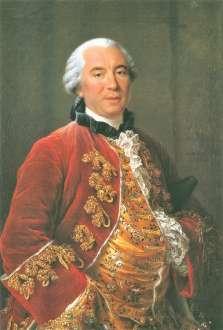
Death: April 16, 1788, Paris, France
Known for: l'Histoire Naturelle
"Genius is nothing but a great aptitude for patience."
Comte Georges-Louis Leclerc de Buffon
Birth: February 20, 1844, Vienna, Austrian Empire (present-day Austria)
Death: September 5, 1906, Tybein near Trieste, Austria-Hungary [present-day Duino, Italy]
Known for: Thermodynamics
"Available energy is the main object at stake in the struggle for existence and the evolution of the world."
― Ludwig Boltzmann
Tragic deaths in science: Ludwig Boltzmann a mind in disorder. Can a life be summed up by ��=��∙log��?
The equation is the slightly geeky inscription on the tombstone of Ludwig Boltzmann, Austrian physicist and pioneer of statistical mechanics.
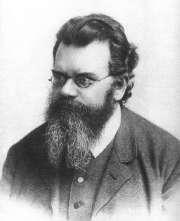
119
[23] Comte de Buffon
[24] Ludwig Boltzmann
145
Birth: April 23, 1858, Kiel, Schleswig [Germany]
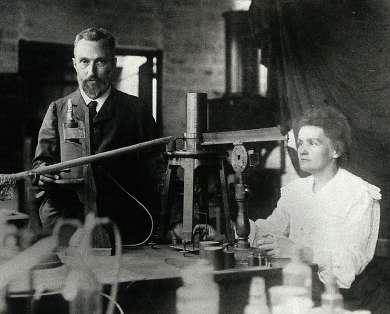
Death: Oct. 4, 1947, Göttingen, West Germany
Known for: the Quanta
"Science cannot solve the ultimate mystery of nature. And that is because, in the last analysis, we ourselves are a part of the mystery that we are trying to solve."
― Max Planck
Sadly Planck life was filled with tragedy in the years following his remarkable initiation of the study of quantum mechanics.


"My Führer!
I am most deeply shaken by the message that my son Erwin has been sentenced to death by the People's Court.
The acknowledgement for my achievements in service of our fatherland, which you, my Führer, have expressed towards me in repeated and most honouring way, makes me confident that you will lend your ear to an imploring 87-year old.
As the gratitude of the German people for my life's work, which has become an everlasting intellectual wealth of Germany, I am pleading for my son's life.
Birth: Nov. 7, 1867, Warsaw, Poland, Russian Empire
120
[25] Max Planck
Max Planck Letter to Hitler
Max Planck"
[26] Marie Curie
From left to right: W. Nernst, A. Einstein, Planck, R.A. Millikan and von Laue at a dinner given by von Laue in Berlin on 11 November 1931
Planck in 1930
146
Pierre and Marie Curie in the laboratory, c. 1904
Death: July 4, 1934, near Sallanches, France
Known for: Radioactivity
"Be less curious about people and more curious about ideas."
Marie Curie
Marie Curie was the first woman to win a Nobel Prize, in Physics, and with her later win, in Chemistry, she became the first person to claim Nobel honors twice.


Birth: Nov. 15, 1738, Hanover, Germany
Death: Aug. 25, 1822, Slough, Buckinghamshire, England
Known for: Sidereal astronomy
"An object is frequently not seen from not knowing how to see it, rather than from any deficit in the organ of vision. I will instruct you how to see them..."
William Herschel
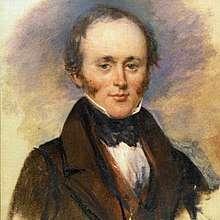
Birth: Nov. 14, 1797, Kinnordy, Forfarshire, Scotland
Death: Feb. 22, 1875, London, England
Known for: Modern Geology
121
[27] Sir William Herschel
[28] Charles Lyell
Marie and daughter Irène, 1925
147
Charles Lyell at the British Association meeting in Glasgow 1840.
"Geology is intimately related to almost all the physical sciences, as history is to the moral. An"
Charles Lyell
Birth: March 23, 1749, Beaumount-en-Auge, Normandy, France
Death: March 5, 1827, Paris
Known for: Black hole, nebular hypothesis of the origin of the solar system
"Your Excellency, I have no need of this hypothesis."
Pierre Laplace

Birth: Nov. 20, 1889, Marshfield, Mo., U.S.
Death: Sept. 28, 1953, San Marino, California
Known for: Extragalactic astronomy
"Science is the one human activity that is truly progressive. The body of positive knowledge is transmitted from generation to generation."
Edwin Powell Hubble
Birth: December 18, 1856, Cheetham Hill, Manchester, Lancashire, England, United Kingdom
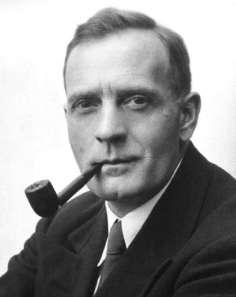
122
[29] Pierre Simon de Laplace
[30] Edwin Powell Hubble
[31] Joseph J. Thomson
148
Death: August 30, 1940, Cambridge, Cambridgeshire, England, UK
Known for: the Discovery of the Electron
"His work was so great that it cannot be compassed in a few words. His death is one of the greatest losses ever to occur to British science.
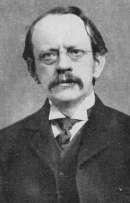
{Describing Ernest Rutherford upon his death at age 66. Thomson, then 80 years old, was once his teacher.}"
[32] Max Born
Birth: December 11, 1882, Breslau, German Empire
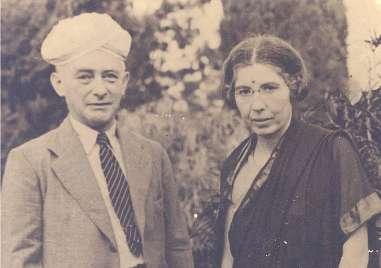
Death: January 5, 1970, Göttingen, West Germany
Known for: Quantum Mechanics
"The belief that there is only one truth and that oneself is in possession of it seems to me the root of all the evil that is in the world"
[33] Francis Harry Compton Crick
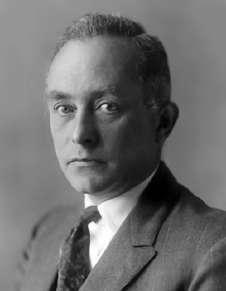
Birth: June 8, 1916, Northampton, Northamptonshire, England
Death: July 28, 2004, San Diego, Calif., U.S.
Known for: Molecular Biology
123
Joseph John Thomson
Max Born
Thomson in 1915
149
Max and Hedi Born in Indian clothes, Bangalore, India, c. 1937
"Biologists must constantly keep in mind that what they see was not designed, but rather evolved."
Francis Crick

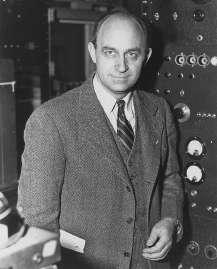
[34]
Birth: Sept. 29, 1901, Rome, Italy
Death: Nov. 28, 1954, Chicago, Ill., U.S.
Known for: Statistical mechanics
"Whatever Nature has in store for mankind, unpleasant as it may be, men must accept, for ignorance is never better than knowledge."
[35]
Birth: April 15, 1707, Basel, Switzerland
Death: September 18, 1783, Saint Petersburg, Russian Empire
Known for: Eighteenth-Century Mathematics
Leonhard Euler
[36]
Birth: May 12, 1803, Darmstadt, Grand Duchy of Hesse
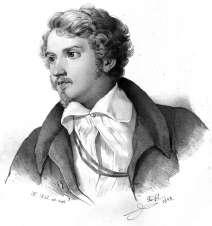
124
Enrico Fermi
Enrico Fermi
Leonard Euler
"Logic is the foundation of the certainty of all the knowledge we acquire."
Justus Liebig
Fermi in 1943
Fermi at the blackboard with several formulae and a diagram of circles and triangles.
150
The young Liebig
Death: April 18, 1873, Munich, German Empire
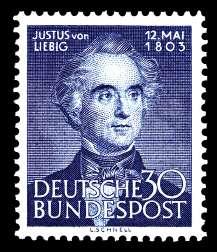
Known for: Nineteenth-Century Chemistry
"From one sublime genius NEWTON more light has proceeded than the labour of a thousand years preceding had been able to produce."
Birth: December 28, 1882, Kendal, Westmorland, England
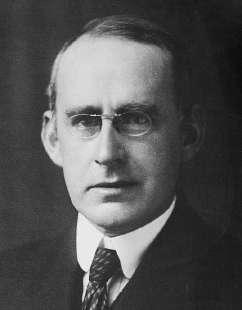
Death: November 22, 1944, Cambridge, Cambridgeshire, England
Known for: Modern astronomy
"An ocean traveler has even more vividly the impression that the ocean is made of waves than that it is made of water."
Birth: April 1, 1578, Folkestone, Kent, England

Death: June 3, 1657, London
Known for: Circulation of the Blood
"Doctrine once sown strikes deep its root, and respect for antiquity influences all men."
125
Justus Liebig
[37] Arthur Stanley Eddington
― Arthur S. Eddington
[38] William Harvey
German stamp picturing Justus von Liebig, 1953
151
Sir Arthur Stanley Eddington
William Harvey
[39] Marcello Malpighi
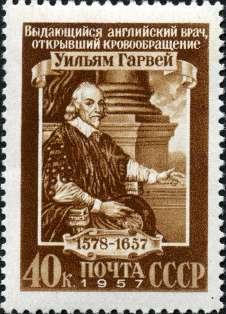
Birth: 1628
Death: 1694
Known for: Microscopic Anatomy
"For Nature is accustomed to rehearse with certain large, perhaps baser, and all classes of wild (animals), and to place in the imperfect the rudiments of the perfect animals."
Marcello Malpighi
[40] Christiaan Huygens

Birth: 1629
Death: 1695
Known for: the Wave Theory of Light
"The world is my country, science is my religion."
― Christiaan Huygens
[41] Johann Carl Friedrich Gauss
Birth: April 30, 1777, Brunswick, Duchy of Brunswick-Wolfenbüttel, Holy Roman Empire
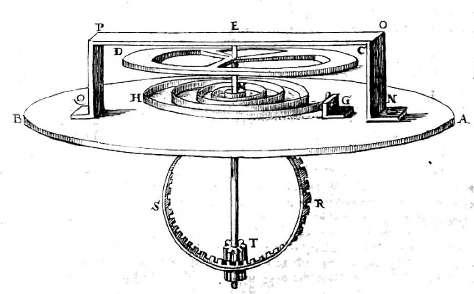
126
William Harvey on a 1957 Soviet postage stamp
Drawing of a balance spring invented by Huygens.
152
Christiaan Huygens
Death: February 23, 1855, Göttingen, Kingdom of Hanover
Known for: Number theory, algebra, statistics, analysis, differential geometry, geodesy, geophysics, mechanics, electrostatics, astronomy, matrix theory and optics
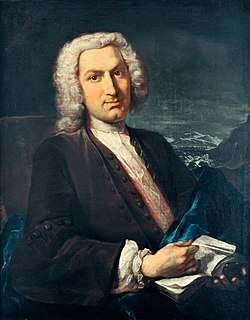
"Astronomy and Pure Mathematics are the magnetic poles toward which the compass of my mind ever turns."
Birth: October 16, 1708, Bern, Swiss Confederacy
Death: December 12, 1777, Bern, Swiss Confederacy
Known for: Eighteenth-Century Medicine
"Nature never jests."
[43]
Birth: September 7, 1829, Darmstadt, Grand Duchy of Hesse
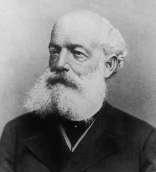
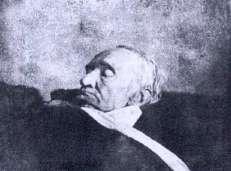
Death: July 13, 1896, Bonn, German Empire
Known for: Theory of chemical structure, tetravalence of carbon, structure of benzene
"Let us learn to dream, gentlemen, then perhaps we shall find the truth."
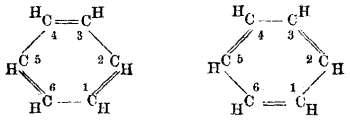
127
Carl Friedrich Gauss
[42] Albrecht von Haller
― Albrecht von Haller
Friedrich August Kekule von Stradonitz
Albrecht von Haller 1736
Gauss on his deathbed (1855)
August Kekulé 153
Kekulé structure of benzene with alternating double bonds
Birth: Dec. 11, 1843, Clausthal, Hannover [now Clausthal-Zellerfeld, Germany]
Death: May 27, 1910, Baden-Baden, Germany
Known for: Bacteriology
"The day will come when man will have to fight noise as inexorably as cholera and the plague."
Robert Koch
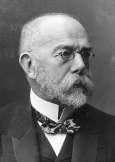
Birth: September 15, 1929, Manhattan, New York City, United States
Known for: Gell-Mann and Low theorem, Elementary particles, quarks, Gell-Mann matrices
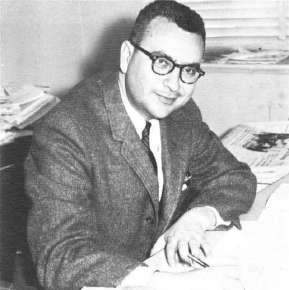
"Think how hard physics would be if particles could think."
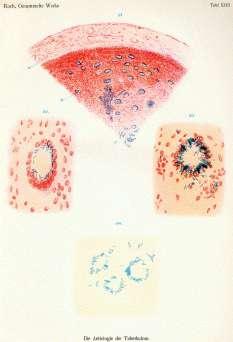
[46] Hermann Emil Louis Fischer
Birth: October 09, 1852, Euskirchen, Rhine Province
Death: July 15, 1919, Berlin, Germany
Known for: Organic Chemistry
128
August Kekule
[44] Robert Koch
[45] Murray Gell-Mann
Murray Gell-Mann
Koch's drawing of tuberculosis bacilli in 1882
154
Murray Gell-Mann
"To use a picture, I will say that enzyme and glucoside must join one another as lock and key, in order to be able to exert a chemical effect."
Birth: Jan. 27 [Feb. 8, New Style], 1834, Tobolsk, Siberia, Russian Empire
Death: Jan. 20 [Feb. 2], 1907, St. Petersburg, Russia
Known for: the Periodic Table of Elements
"Work, look for peace and calm in work; you will find it nowhere else."
Birth: December 5, 1932, New York City, New York, USA
Known for: Electroweak theory & Georgi–Glashow model
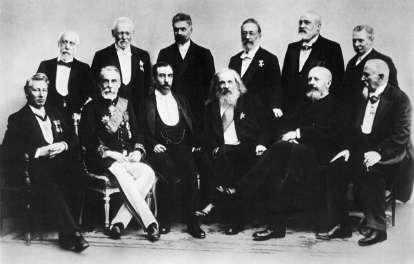
"Some astrophysicists have convinced themselves that the fifth significant figure of the fine structure constant has changed over the past ten billion years."
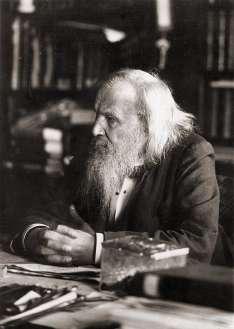
129
― Hermann Emil Fischer
[47] Dmitri Mendeleev
Dmitri Mendeleev
[48] Sheldon Glashow
Sheldon L. Glashow
[49] James Dewey Watson
Mendeleev in 1897
155
Mendeleev, Alfred Werner, Adolf von Baeyer, and other prominent chemists
Birth: April 6, 1928, Chicago, Illinois, U.S
Known for: the Structure of DNA
March 12, 1953
Dear Max
Thank you very much for your recent letters. We were quite interested in your account of the Pauling Seminar. The day following the arrival of your letter, I received a note from Pauling, mentioning that their model had been revised, and indicating interest in our model. We shall thus have to write him in the near future as to what we are doing. Until now we preferred not to write him since we did not want to commit ourselves until we were completely sure that all of the Van der Waals contacts were correct and that all aspects of our structure were stereochemically feasible. I believe now that we have made sure that our structure can be built and today we are laboriously calculating out exact atomic coordinates.
Our model (a joint project of Francis Crick and myself) bears no relationship to either the original or the revised Pauling-Corey-Schomaker models. It is a strange model and embodies several unusual features. However since DNA is an unusual substance, we are not hesitant in being bold. The main features of the model are (1) The basic structure is helical - it consists of two intertwining helices - the core of the helix is occupied by the purine and pyrimidine bases - the phosphates groups are on the outside. (2) The helices are not identical but complementary so that if one helix contains a purine base, the other helix contains a pyrimidine - this feature is a result of our attempt to make the residues equivalent and at the same time put the purines and pyrimidine bases in the center. The pairing of the purine with pyramidines is very exact and dictated by their desire to form hydrogen bonds - Adenine will pair
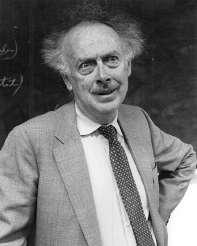
130
"Today, the theory of evolution is an accepted fact for everyone but a fundamentalist minority, whose objections are based not on reasoning but on doctrinaire adherence to religious principles."
James D. Watson
Letter from James Watson to Max DelbrÞck. March 12, 1953
156
with Thymine while Guanine will always pair with Cytosine. For example [diagrams of base pairing] Thymine with Adenine, Cytosine with Guanine.
While my diagram is crude, in fact these pairs form 2 very nice hydrogen bonds in which all of the angles are exactly right. This pairing is based on the effective existence of only one out of the two possible tautomeric formsin all cases we prefer the keto form over the enol[,] the amino over the imino. This is definitely an assumption but Jerry Donohue and Bill Cochran tell us that for all organic molecules so far examined, the keto and amino forms are present in preference to the enol and imino possibilities.
The model has been derived almost entirely from stereochemical considerations with the only x-ray consideration being the spacing between the pair of bases 3.4 A which was originally found by Astbury. It tends to build itself with approximately 10 residues per tern in 34 A. The screw is right handed.
The x-ray pattern approximately agreed with the model, but since the photographs available to us are poor and meagre (we have no prototypes of our own and like Pauling must use Astbury's photographs) this agreement in no way constitutes a proof of our model. We are certainly a long way from proving its correctness. To do this we must obtain collaboration from the group at Kings College London who possess very excellent photographs of a crystalline phase in addition to rather good photographs of a paracrystalline phase. Our model has been made in reference to the paracrystalline form, and as yet we have no clear idea as to how these helices pack together to form the crystalline phase.
In the next day or so Crick and I shall send a note to Nature proposing our structure as a possible model, at the same time emphasizing its provisional nature and the lack of proof in its favor. Even if wrong I believe it to be interesting since it promises a concrete example of a structure composed of complementary chains. If by chance, it is right then I suspect we may be making a slight dent into the manner in which DNA can reproduce itself. For these reasons (in addition to many others) I prefer this type of model over Pauling's which if true would tell us next to nothing about [the] manner of DNA reproduction.
I shall write you in a day or so about the recombination paper. Yesterday I received a very interesting note from Bill Hayes. I believe he is sending you a copy.
131
157
I have met Alfred Tissieus recently. He seems very nice. He speaks fondly of Pasadena and I suspect has not yet become accustomed to being a Fellow of Kings.
My regards to Mary
Jim
P.S. We would prefer your not mentioning this letter to Pauling. When our letter to Nature is completed we shall send him a copy. We should like to send him coordinates.
Birth: May 23, 1908, Madison, Wisconsin, U.S
Death: Jan. 30, 1991, Boston, Massachusetts, U.S
Known for: Superconductivity and BCS theory
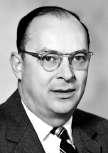
"Science is a field which grows continuously with ever expanding frontiers. Further, it is truly international in scope. Any particular advance has been preceded by the contributions of those from many lands who have set firm foundations for further developments. The Nobel awards should be regarded as giving recognition to this general scientific progress as well as to the individuals involved.
Further, science is a collaborative effort. The combined results of several people working together is often much more effective than could be that of an individual scientist working alone."
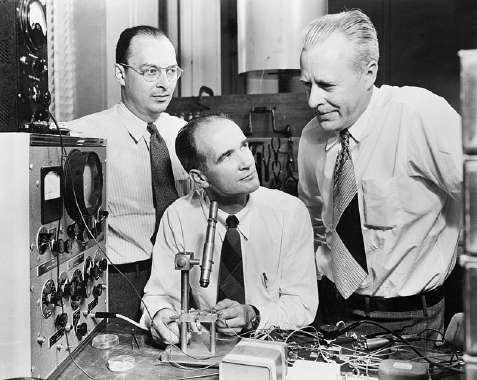
132
[50] John Bardeen
John Bardeen
[51] John von Neumann
John Bardeen, William Shockley and Walter Brattain at Bell Labs, 1948
158
Bardeen in 1956
Birth: December 28, 1903, Budapest, Austria-Hungary
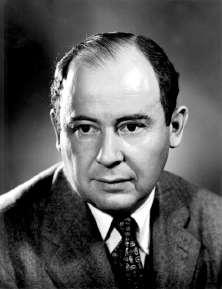
Death: February 8, 1957, Walter Reed General Hospital Washington, D.C.
Known for: the Modern Computer
"Young man, in mathematics you don't understand things. You just get used to them."
Birth: May 11, 1918, New York, N.Y., U.S.
Death: Feb. 15, 1988, Los Angeles, California
Known for: Quantum Electrodynamics

"Study hard what interests you the most in the most undisciplined, irreverent and original manner possible."
Feynman's letter to an old pupil of his - on the worthwhile of 'humble' research
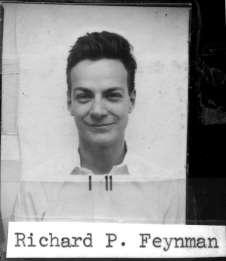
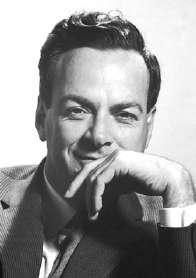
27 October 1964
Mr. David Eisenman
Harvard University
Adams C-56
133
John von Neumann
[52] Richard P. Feynman
Richard Feynman
Neumann in the 1940s
159
Feynman diagram of electron/positron annihilation
Cambridge 38, Massachusetts
Dear Mr. Eisenman:
Thank you for your interesting letter describing that wonderful phenomenon. I guess your "zero" is displaced outward but the inner nerve connections are as usual, so you have to "converge" to see parallel. Half way through your letter, I though, "poor guy", but on reading of the manifold advantages that your singular ability has for your [sic], I am going back to the bathroom mirror and practice harder this time, again and again, to see if I can do it too. Evidently you are a genetically advantageous mutation, and we can guess now where the evolution of the human race is headed.
Sincerely, [signed]
Richard P. Feynman
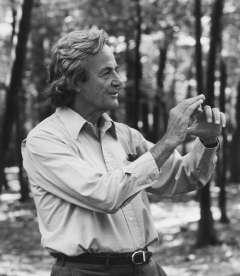 [53] Alfred Lothar Wegener
[53] Alfred Lothar Wegener
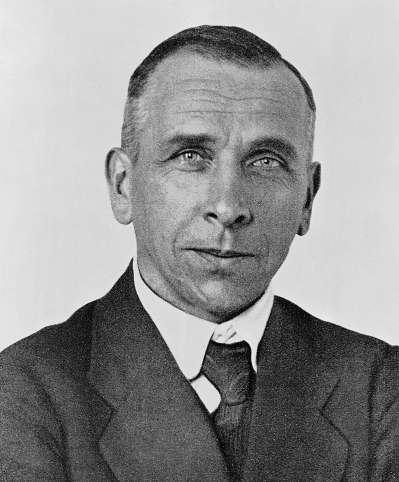
Birth: Nov. 1, 1880, Berlin, Germany
Death: Nov. 1930, Greenland
Known for: Continental Drift
"Scientists still do not appear to understand sufficiently that all earth sciences must contribute evidence toward unveiling the state of our planet in earlier times, and that the truth of the matter can only be reached by combing all this evidence. ... It is only by combing the information furnished by all the earth sciences that we can hope to determine 'truth' here, that is to say, to find the picture that sets out all the known facts in the best arrangement and that therefore has
134
160
Richard Feynman at the Robert Treat Paine Estate in Waltham, Massachusetts, in 1984
the highest degree of probability. Further, we have to be prepared always for the possibility that each new discovery, no matter what science furnishes it, may modify the conclusions we draw."
Alfred Wegener
[54] Stephen W. Hawking
Birth: Jan. 8, 1942, Oxford, Oxfordshire, England
Known for: Quantum Cosmology
"Intelligence is the ability to adapt to change."
Stephen Hawking
Stephen Hawking was born on the 300th death anniversary of Galileo Galilei, and died on the 139th birth anniversary of Albert Einstein.
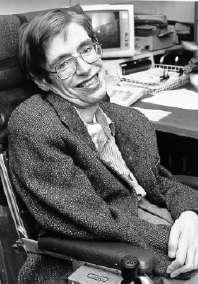
Memories of my father - Lucy Hawking
On the bleak greyness of a Cambridge spring day, we set off in a cortège of black cars towards Great St Mary's Church, the university church where distinguished academics by tradition have their funeral services. Out of term, the streets seemed muted. Cambridge looked empty, not even a wandering tourist in sight. The only spikes of colour came from the blue flashing lights of the police motorcycle outriders, guarding the hearse with my father's coffin in it, stopping the sparse traffic as we went.
And then we turned left. And saw the crowds, massed along one of the most recognisable streets in the world, King's Parade, the heart of Cambridge itself. I have never seen so many people so silent. With banners, flags, cameras and mobile phones held aloft, the huge numbers of people lining the streets stood in quiet respect as the head porter of Gonville and Caius, my father's Cambridge college, dressed ceremonially in his bowler hat and carrying an ebony cane, walked solemnly along the street to meet thehearse and walk it to the church.
135
161
My aunt squeezed my hand as we both burst into tears. "He would have loved this," she whispered to me. Since my father died, there has been so much he would have loved, so much I wish he could have known. I wish he could have seen the extraordinary outpouring of affection towards him, coming from all around the world. I wish he could have known how dearly loved and respected he was by millions of people he had never met. I wish he had known he would be interred in Westminster Abbey, between two of his scientific heroes, Isaac Newton and Charles Darwin, and that as he was laid to rest in the earth his voice would be beamed by a radio telescope towards a black hole.
But he would also have wondered what all the fuss was about. He was a surprisingly modest man who, while adoring the limelight, seemed baffled by his own fame. One phrase in this book jumped off the page at me as summing up his attitude to himself: "if I have made a contribution." He is the only person who would have added the "if" to that sentence. I think everyone else felt pretty sure he had. And what a contribution it is. Both in the overarching grandeur of his work in cosmology, exploring the structure and origins of the universe itself and in his completely human bravery and humour in the face of his challenges. He found a way to reach beyond the limits of knowledge while surpassing the limits of endurance at the same time. I believe it was this combination which made him so iconic yet also so reachable, so accessible. He suffered but he persevered. It was effortful for him to communicate but he made that effort, constantly adapting his equipment as he further lost mobility. He selected his words precisely so that they would have maximum impact when spoken in that flat electronic voice which became so oddly expressive when used by him. When he spoke, people listened, whether it was his views on the NHS or on the expansion of the universe, never losing an opportunity to include a joke, delivered in the most deadpan fashion but with a knowing twinkle in his eyes.
My father was also a family man, a fact lost on most people until the film The Theory of Everything came out in 2014. It certainly was not usual, in the 1970s, to find a disabled person who had a spouse and children of his own nor one with such a strong sense of autonomy and independence. As a small child, I intensely disliked the way strangers felt free to stare at us, sometimes with open mouths, as my father piloted his wheelchair at insane speeds through Cambridge, accompanied by two mop-haired blond children, often running alongside while trying to eat an ice cream. I thought it was incredibly rude. I used to try to stare back but I don't think my indignation ever hit the target, especially not from a childish face smeared with melted lolly.
It wasn't, by any stretch of the imagination, a normal childhood. I knew that and yet at the same time I didn’t. I thought it was perfectly normal to ask grown-ups lots of challenging questions because this is what we did at home. It was only when I allegedly reduced a vicar to tears with my close examination of his proof of the existence of God
136
162
that it started to dawn on me that this was unexpected. As a child, I didn’t think of myself as the questioning type I believed that was my elder brother, who in the manner of elder brothers outsmarted me at every turn (and indeed still does). I remember one family holiday which, like so many family holidays, mysteriously coincided with an overseas physics conference. My brother and I attended some of the lectures presumably to give my mother a break from her wraparound caring duties. In those days, physics lectures were not popular and definitely not for kids. I sat there, doodling on my notepad, but my brother put his skinny littleboy arm in the air and asked a question of the distinguished academic presenter while my father glowed with pride. I am often asked, "What is it like to be Stephen Hawking's daughter?" and inevitably, there is no brief answer that fits the bill. I can say that the highs were very high, the lows were profound and that in between existed a place which we used to call "normal for us," an acceptance as adults that what we found normal wouldn't count as such for anyone else. As time dulls the raw grief, I have reflected that it could take me forever to process our experiences. In a way, I'm not even sure I want to. Sometimes, I just want to hold on to the last words my father said to me, that I had been a lovely daughter and that I should be unafraid. I will never be as brave as him I'm not by nature a particularly courageous person but he showed me that I could try. And that trying might turn out to be the most important part of courage.
My father never gave up, he never shied away from the fight. At the age of seventy-five, completely paralysed and able to move only a few facial muscles, he still got up every day, put on a suit and went to work. He had stuff to do and was not going to let a few trivialities get in his way. But I have to say, had he known about the police motorcycle outriders who were present at his funeral, he would have requested them each day to navigate him through the morning traffic from his home in Cambridge to his office.
Happily, he did know about this book. It was one of the projects he worked on in what would turn out to be his last year on Earth. His idea was to bring his contemporary writings together into one volume. Like so many things that have happened since he died, I wish he could have seen the final version. I think he would have been very proud of this book and even he might have had to admit, in the end, that he had made a contribution after all.
July 2018
Birth: Oct. 24, 1632, Delft, Neth.
2007
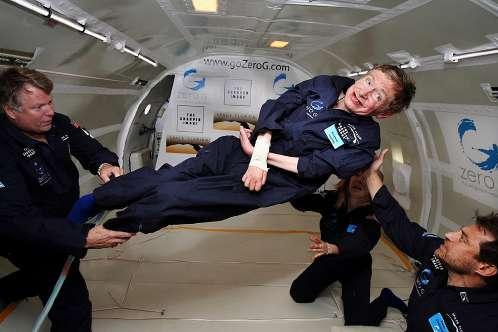
137
Lucy Hawking
[55] Antonie van Leeuwenhoek
163
Hawking taking a zero-gravity flight in a reduced-gravity aircraft, April
Death: Aug. 26, 1723, Delft
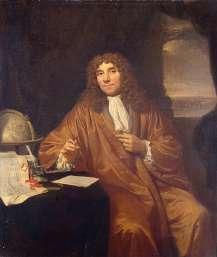
Known for: the Simple Microscope
"My determination is not to remain stubbornly with my ideas but I'll leave them and go over to others as soon as I am shown plausible reason which I can grasp. This is the more true since I have no other purpose than to place truth before my eyes so far as it is in my power to embrace it; and to use the little talent I have received to draw the world away from its old heathenish superstitions and to go over to the truth and to stick to it."
Birth: Oct. 09, 1879, Pfaffendorf, Kingdom of Prussia, German Empire
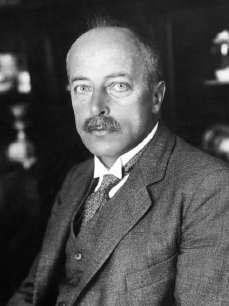
Death: April 24, 1960, West Berlin
Known for: X-ray Crystallography
"For in 1900 all electromagnetic radiation of longer wavelengths was already known at least to the extent that one could not seek in it the more striking characteristics of X-rays such as, for example, the strong penetrating power."
―Max
Birth: March 12, 1824, Königsberg, Kingdom of Prussia [present-day Russia]

Death: October 17, 1887, Berlin, Prussia, German Empire [present-day Germany]
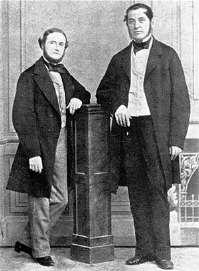
138
Antony Van Leeuwenhoek
[56] Max von Laue
von Laue
[57] Gustav Kirchhoff
Laue in 1929
Kirchhoff (left) and Robert Bunsen, c. 1850
164
Gustav Robert Kirchhoff
Known for: Kirchhoff's circuit laws, Kirchhoff's laws of spectroscopy, Kirchhoff's law of thermochemistry and Kirchhoff's law of thermal radiation
"Look here, I have succeeded at last in fetching some gold from the sun.
{After his banker questioned the value of investigating gold in the Fraunhofer lines of the sun and Kirchhoff handing him over a medal he was awarded for his investigations.}"
Gustav Kirchhoff
Birth: July 2, 1906, Strassburg, Ger. [now Strasbourg, France]
Death: March 6, 2005, Ithaca, N.Y., U.S.

Known for: the Energy of the Sun
"We need science education to produce scientists, but we need it equally to create literacy in the public. Man has a fundamental urge to comprehend the world about him, and science gives today the only world picture which we can consider as valid. It gives an understanding of the inside of the atom and of the whole universe, or the peculiar properties of the chemical substances and of the manner in which genes duplicate in biology. An educated layman can, of course, not contribute to science, but can enjoy and participate in many scientific discoveries which as constantly made. Such participation was quite common in the 19th century, but has unhappily declined. Literacy in science will enrich a person's life."
Hans A. Bethe
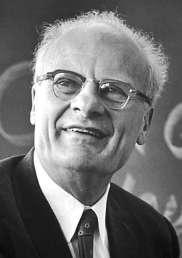
Known for: the Foundations of Mathematics
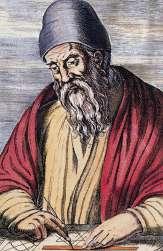
139
[58] Hans Bethe
[59] Euclid
A papyrus fragment of Euclid's Elements dated to c. 75–125 AD. 165
Hans Albrecht Bethe
"The laws of nature are but the mathematical thoughts of God."
[60] Gregor Mendel
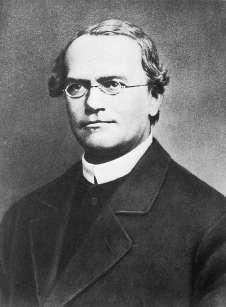
Birth: July 22, 1822, Heinzendorf, Austria [now Hynčice, Czech Rep.]
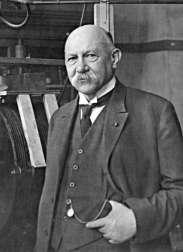
Death: Jan. 6, 1884, Brünn, Austria-Hungary [now Brno, Czech Rep.]
Known for: the Laws of Inheritance
"I am convinced that it will not be long before the whole world acknowledges the results of my work."
― Gregor Mendel
[61] Heike Kamerlingh Onnes
Birth: September 21, 1853, Groningen, Netherlands
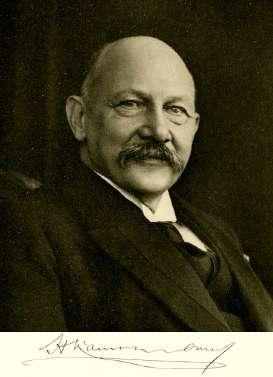
Death: February 21, 1926, Leiden, Netherlands
Known for: Superconductivity, Onnes-effect and Virial Equation of State
"The experiment left no doubt that, as far as accuracy of measurement went, the resistance disappeared. At the same time, however, something unexpected occurred. The disappearance did not take place gradually but abruptly. From 1/500 the resistance at 4.2K, it could be established that the resistance had become less than a thousand-millionth part of that at normal
140
Euclid
166
Gregor Johann Mendel
temperature. Thus the mercury at 4.2K has entered a new state, which, owing to its particular electrical properties, can be called the state of superconductivity."
[62] Thomas Hunt Morgan
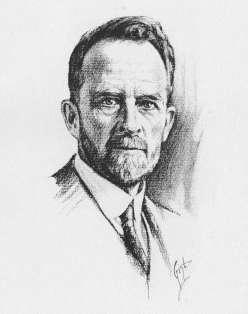
Birth: September 25, 1866, Lexington, Kentucky
Death: December 04, 1945, Pasadena, California
Known for: the Chromosomal Theory of Heredity
"Except for the rare cases of plastid inheritance, the inheritance of all known cofactors can be sufficiently accounted for by the presence of genes in the chromosomes. In a word the cytoplasm may be ignored genetically."
[63]
Birth: August 31, 1821, Potsdam, Kingdom of Prussia
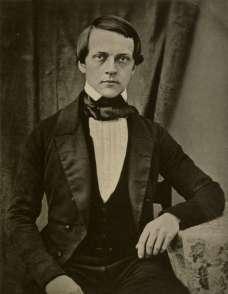
Death: September 08, 1894, Charlottenburg, German Empire
Known for: the Rise of German Science
"What the recent physiology of the senses has shown by the way of experience is what Kant had tried to show for the representations of the human mind in general when he laid out the participation of the particular, built-in rules of the mind, the organization of the mind as it were, in our representations."
141
Heike Kamerlingh Onnes
― Thomas Hunt Morgan
Hermann von Helmholtz
Hermann von Helmholtz
1931 drawing of Thomas Hunt Morgan
167
Helmholtz in 1848
Birth: March 14, 1854, Strehlen, Lower Silesia, German Kingdom of Prussia

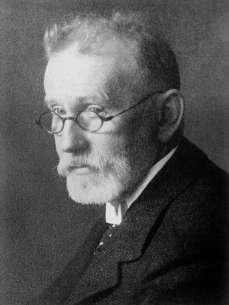
Death: August 20, 1915, Bad Homburg, Hesse, Germany
Known for: Chemotherapy
"Few problems are less recognized, but more important than, the accelerating disappearance of the earth's biological resources. In pushing other species to extinction, humanity is busy sawing off the limb on which it is perched."
Birth: July 05, 1904, Kempten, Germany
Death: February 03, 2005, Bedford, Massachusetts, United States
Known for: Evolutionary Theory
"According to the concept of transformational evolution, first clearly articulated by Lamarck, evolution consists of the gradual transformation of organisms from one condition of existence to another."
Ernst Mayr
Birth: January 25, 1900, Nemyriv, Russian Empire

142
[64] Paul Ehrlich
Paul Ehrlich
[65] Ernst Walter Mayr
[66] Theodosius Grygorovych Dobzhansky
168
Paul Ehrlich around 1900 in his Frankfurt office
Death: December 18, 1975, San Jacinto, California, United States
Known for: the Modern Synthesis
"Nothing in biology makes sense except in the light of evolution."
Theodosius Dobzhansky
[67] Max Delbruck
Birth: September 04, 1906, Berlin, German Empire
Death: March 9, 1981, Pasadena, California, United States
Known for: the Bacteriophage
"The scientist has in common with the artist only this: that he can find no better retreat from the world than his work and no stronger link with the world than his work."
Max Delbruck
[68] Charles Scott Sherrington
Birth: November 27, 1857, Islington, Middlesex, England
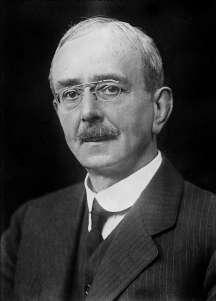
Death: March 04, 1952, Eastbourne, Sussex, England

Known for: Neurophysiology
"Swiftly the brain becomes an enchanted loom, where millions of flashing shuttles weave a dissolving pattern-always a meaningful pattern-though never an abiding one."
143
Delbrück in the early 1940s
169
Sir Charles Scott Sherrington
Charles Sherrington
Birth: August 01, 1744, Bazentin, Picardy, France
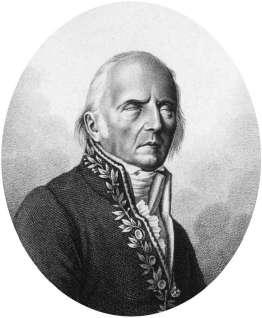
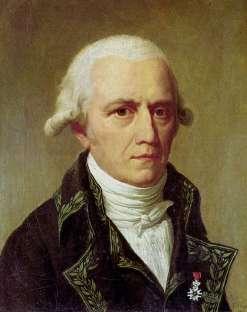
Death: December 18, 1829, Paris, France
Known for: the Foundations of Biology
"It is not enough to discover and prove a useful truth previously unknown, but that it is necessary also to be able to propagate it and get it recognized."
Birth: May 2, 1860, Wednesbury, Staffordshire, England
Death: August 27, 1924, London, England
Known for: Modern Physiology
"But at the same time, there must never be the least hesitation in giving up a position the moment it is shown to be untenable. It is not going too far to say that the greatness of a scientific investigator does not rest on the fact of his having never made a mistake, but rather on his readiness to admit that he has done so, whenever the contrary evidence is cogent enough."
William Bayliss
144
[69] Jean Baptiste Lamarck
Jean-Baptiste Lamarck
[70] William Bayliss
[71] John Dalton
Jean-Baptiste Lamarck
170
Lamarck, late in life
Birth: Sept. 5 or 6, 1766, Eaglesfield, Cumberland, England
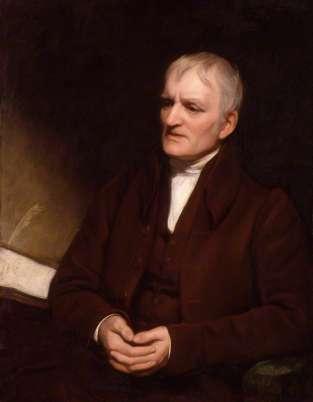
Death: July 27, 1844, Manchester
Known for: the Theory of the Atom

It's the right idea, but not the right time.
― John Dalton
[72] Frederick Sanger
Birth: August 13, 1918, Rendcomb, Gloucestershire, England
Death: November 19, 2013, Cambridge, Cambridgeshire, England
Known for: the Genetic Code
"A DNA sequence for the genome of bacteriophage ΦX174 of approximately 5,375 nucleotides has been determined using the rapid and simple 'plus and minus' method. The sequence identifies many of the features responsible for the production of the proteins of the nine known genes of the organism, including initiation and termination sites for the proteins and RNAs. Two pairs of genes are coded by the same region of DNA using different reading frames."
Frederick Sanger
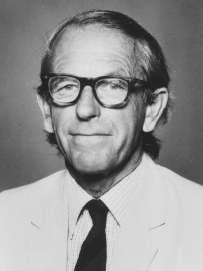
[73]
Birth: August 15, 1892, Dieppe, France
Death: March 19, 1987, Louveciennes, France
Known for: Wave/Particle Duality
145
Louis Victor de Broglie
Frederick Sanger
171
Broglie
in 1929
"After long reflection in solitude and meditation, I suddenly had the idea, during the year 1923, that the discovery made by Einstein in 1905 should be generalised by extending it to all material particles and notably to electrons."
― Louis de Broglie
[74] Carl Linnaeus
Birth: May 23, 1707, Råshult, Stenbrohult parish (now within Älmhult Municipality), Sweden
Death: January 10, 1778, Hammarby (estate), Danmark parish (outside Uppsala), Sweden

Known for: the Binomial Nomenclature
"When all the thoughts are concerning one thing and the person loses interest in other things, the melancholy begins."
― Carl Linnaeus
[75] J. Robert Oppenheimer
Birth: April 22, 1904, New York, N.Y., U.S.
Death: Feb. 18, 1967, Princeton, N.J.
Known for: the Atomic Era
J. Robert Oppenheimer
146
"The optimist thinks this is the best of all possible worlds. The pessimist fears it is true."
172
Carl Linnaeus in Laponian costume (1737)
Birth: Aug. 6, 1881, Lochfield Farm, Darvel, Ayrshire, Scotland
Death: March 11, 1955, London, England

Known for: Penicillin
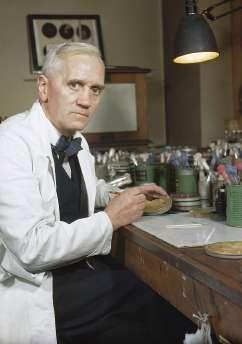
"One sometimes finds what one is not looking for."
Birth: October 28, 1914, New York
Death: June 23, 1995, La Jolla, California, United States
Known for: Vaccination
"There is hope in dreams, imagination, and in the courage of those who wish to make those dreams a reality."
Birth: Jan. 25, 1627, Lismore Castle, County Waterford, Ireland
Death: Dec. 31, 1691, London, England
Known for: Boyle's law
Faroe Islands postage stamp commemorating Fleming
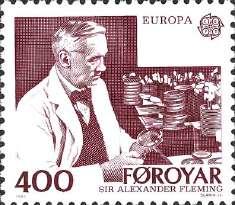
147
[76] Sir Alexander Fleming
Alexander Fleming
[77] Jonas Edward Salk
Jonas Salk
[78] Robert Boyle
Fleming in his laboratory c. 1943
173
"Those distinct substances, which concretes generally either afford, or are made up of, may, without very much inconvenience, be called the elements or principles of them."
Robert Boyle
Birth: Feb. 16, 1822, near Sparkbrook, Birmingham, Warwickshire, England
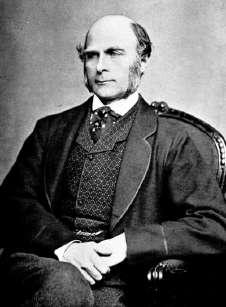
Death: Jan. 17, 1911, Grayshott House, Haslemere, Surrey
Known for: Eugenics
"Men who leave their mark on the world are very often those who, being gifted and full of nervous power, are at the same time haunted and driven by a dominant idea, and are therefore within a measurable distance of insanity."
― Francis Galton
Birth: March 13, 1733, Birstall Fieldhead, near Leeds, Yorkshire [now West Yorkshire], England
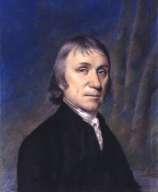
Death: Feb. 6, 1804, Northumberland, Pa., U.S.
Known for: Discovery of oxygen
"We should like to have some towering geniuses, to reveal us to ourselves in color and fire, but of course they would have to fit into the pattern of our society and be able to take orders from sound administrative types."
148
[79] Francis Galton
[80] Joseph Priestley
Galton in the 1850s
174
Joseph Priestley
[81] Hippocrates
Known for: Medicine
"Let food be thy medicine and medicine be thy food."
Hippocrates
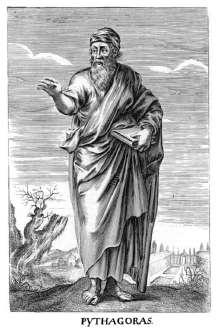
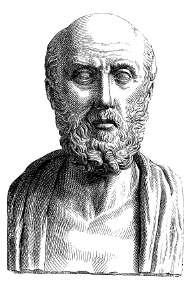
[82] Pythagoras
Known for: Pythagorean Theorem
"Educate the children and it won't be necessary to punish the men."
Pythagoras
"There is geometry in the humming of the strings. There is music in the spacing of the spheres."
Pythagoras
[83] Benjamin Franklin

Birth: January 17, 1706, Boston, Massachusetts Bay, British America
Death: April 17, 1790, Philadelphia, Pennsylvania, U.S.
Known for: Electricity

149
Joseph Priestley
175
Hippocrates of Kos
"In wine there is wisdom, in beer there is Freedom, in water there is bacteria."
Benjamin Franklin
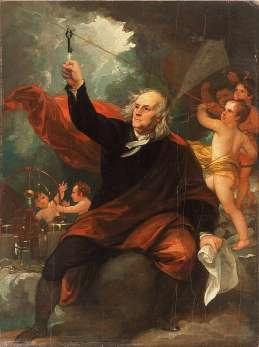 [84] Leonardo da Vinci
[84] Leonardo da Vinci
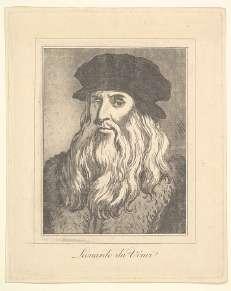
Birth: April 15, 1452, Anchiano, near Vinci, Republic of Florence [now in Italy]
Death: May 2, 1519, Cloux [now Clos-Luce], France
Known for: Mechanics and Cosmology
"Painting is poetry that is seen rather than felt, and poetry is painting that is felt rather than seen."
Having now sufficiently seen and considered the achievements of all those who count themselves masters and artificers of instruments of war, and having noted that the invention and performance of the said instruments is in no way different from that in common usage, I shall endeavour, while intending no discredit to anyone else, to make myself understood to Your Excellency for the purpose of unfolding to you my secrets, and thereafter offering them at your complete disposal, and when the time is right bringing into effective operation all those things which are in part briefly listed below:
I have plans for very light, strong and easily portable bridges with which to pursue and, on some occasions, flee the enemy, and others, sturdy and indestructible either by fire or in battle, easy and convenient to lift and place in position. Also means of burning and destroying those of the enemy.
150
Leonardo da Vinci
Leonardo da Vinci Letter to Ludovico Sforza
My Most Illustrious Lord,
Benjamin Franklin Drawing Electricity from the Sky c. 1816
176
Leonardo da Vinci
I know how, in the course of the siege of a terrain, to remove water from the moats and how to make an infinite number of bridges, mantlets and scaling ladders and other instruments necessary to such an enterprise.
Also, if one cannot, when besieging a terrain, proceed by bombardment either because of the height of the glacis or the strength of its situation and location, I have methods for destroying every fortress or other stranglehold unless it has been founded upon a rock or so forth.
I have also types of cannon, most convenient and easily portable, with which to hurl small stones almost like a hailstorm; and the smoke from the cannon will instil a great fear in the enemy on account of the grave damage and confusion.
Also, I have means of arriving at a designated spot through mines and secret winding passages constructed completely without noise, even if it should be necessary to pass underneath moats or any river.
Also, I will make covered vehicles, safe and unassailable, which will penetrate the enemy and their artillery, and there is no host of armed men so great that they would not break through it. And behind these the infantry will be able to follow, quite uninjured and unimpeded.
Also, should the need arise, I will make cannon, mortar and light ordnance of very beautiful and functional design that are quite out of the ordinary.
Where the use of cannon is impracticable, I will assemble catapults, mangonels, trebuckets and other instruments of wonderful efficiency not in general use. In short, as the variety of circumstances dictate, I will make an infinite number of items for attack and defence.
And should a sea battle be occasioned, I have examples of many instruments which are highly suitable either in attack or defence, and craft which will resist the fire of all the heaviest cannon and powder and smoke.
In time of peace I believe I can give as complete satisfaction as any other in the field of architecture, and the construction of both public and private buildings, and in conducting water from one place to another.
Also I can execute sculpture in marble, bronze and clay. Likewise in painting, I can do everything possible as well as any other, whosoever he may be.
Moreover, work could be undertaken on the bronze horse which will be to the immortal glory and eternal honour of the auspicious memory of His Lordship your father, and of the illustrious house of Sforza.
And if any of the above-mentioned things seem impossible or impracticable to anyone, I am most readily disposed to demonstrate them in your park or in whatsoever place shall please Your Excellency, to whom I commend myself with all possible humility.
151
177
[85] Ptolemy
Known for: Greco-Roman science
"I know that I am mortal by nature, and ephemeral; but when I trace at my pleasure the windings to and fro of the heavenly bodies I no longer touch the earth with my feet: I stand in the presence of Zeus himself and take my fill of ambrosia."
Birth: Dec. 6, 1778, Saint-Léonard-de-Noblat, France

Death: May 9, 1850, Paris
Known for: Behavior of gases
"In the natural sciences, and particularly in chemistry, generalities must come after the detailed knowledge of each fact and not before it."
[87] Archimedes
Known for: the Beginning of Science
"Give me a place to stand and I will move the earth."
The Death of Archimedes (1815)

― Archimedes

152
Ptolemy
[86] Joseph-Louis Gay-Lussac
Joseph-Louis Gay-Lussac
Joseph Louis Gay-Lussac
178
Archimedes of Syracuse
[88]
Birth: June 24, 1915, Bingley, Yorkshire [now West Yorkshire], England
Death: Aug. 20, 2001, Bournemouth, Dorset
Known for: Stellar nucleosynthesis
"Space isn't remote at all. It's only an hour's drive away if your car could go straight upwards."
[89]
Birth: March 25, 1914, Cresco, Iowa, U.S.
Known for: Green revolution
"You can't build a peaceful world on empty stomachs and human misery."
Dr. Norman Ernest Borlaug
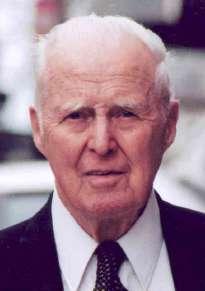
[90]
Birth: Aug. 9, 1776, Turin, in the Kingdom of Sardinia and Piedmont
Death: July 9, 1856, Turin, Italy
Known for: Molecular Hypothesis of Combining Gases
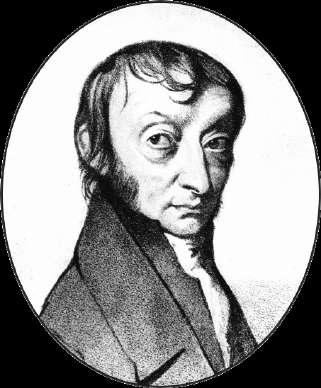
153
Sir Fred Hoyle
Fred Hoyle
Norman Ernest Borlaug
Amedeo Avogadro
Norman Borlaug, in 2004
179
Amedeo Avogadro
"We suppose ... that the constituent molecules of any simple gas whatever (i.e., the molecules which are at such a distance from each other that they cannot exercise their mutual action) are not formed of a solitary elementary molecule, but are made up of a certain number of these molecules united by attraction to form a single one."
Birth: June 13, 1911, San Francisco, Calif., U.S.
Death: Sept. 1, 1988, Berkeley, California
Known for: discovery of many resonance particles (subatomic particles having extremely short lifetimes and occurring only in high-energy nuclear collisions)
"Around the lab I heard that publicity was measured in an absolute unit, the "kan". That unit was too large for ordinary application and a practical unit one one-thousandth of the size served in its place, the "millikan"."
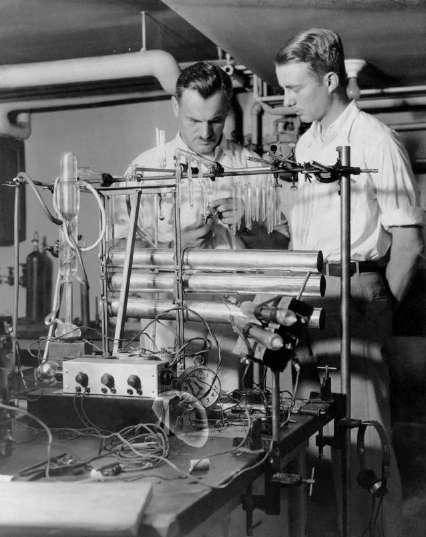
Birth: March 4, 1904, Odessa, Russian Empire [now in Ukraine]
Death: Aug. 19, 1968, Boulder, Colo., U.S.
Known for: Big Bang Hypothesis
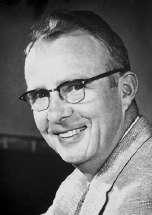
154
Count of Quaregna Amedeo Avogadro
[91] Luis W. Alvarez
Luis W. Alvarez
[92] George Gamow
Nobel Laureate Arthur Compton, left, with young graduate student Luis Alvarez at the University of Chicago in 1933
180
Luis Walter Alvarez
"It took less than an hour to make the atoms, a few hundred million years to make the stars and planets, but five billion years to make man!"
George Gamow
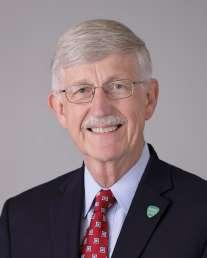
[93]
Birth: April 14, 1950, Staunton, Va., U.S.
Known for: Human Genome Project
"Yeah, it's true we're all dealt a set of cards. But it's also true that it's up to us to figure out how to play the hand."
[94]
Birth: Dec. 19, 1852, Strelno, Prussia [now Strzelno, Pol.]
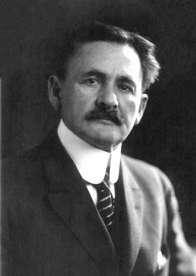
Death: May 9, 1931, Pasadena, Calif., U.S.
Known for: Establishment of the speed of light as a fundamental Constant
"The velocity of light is one of the most important of the fundamental constants of Nature. Its measurement by Foucault and Fizeau gave as the result a speed greater in air than in water, thus deciding in favor of the undulatory and against the corpuscular theory. Again, the comparison of the electrostatic and the electromagnetic units gives as an experimental result a value remarkably close to the velocity of light–a result which justified Maxwell in concluding that light is the propagation of an electromagnetic disturbance. Finally, the principle of
155
Francis Collins
Francis S. Collins
Albert Abraham Michelson
181
Francis Sellers Collins
relativity gives the velocity of light a still greater importance, since one of its fundamental postulates is the constancy of this velocity under all possible conditions."
A.A. Michelson
Birth: May 27, 1907, Springdale, Pa., U.S.
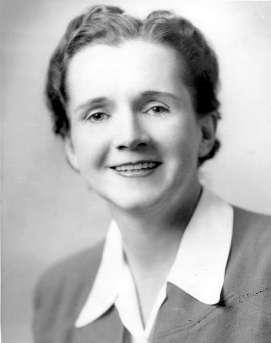
Death: April 14, 1964, Silver Spring, Md.
Known for: Environmental pollution and the natural history of the sea
"In nature nothing exists alone."
Birth: April 5, 1827, Upton, Essex, England

Death: Feb. 10, 1912, Walmer, Kent
Known for: antiseptic medicine
"But when it has been shown by the researches of Pasteur that the septic property of the atmosphere depended not on the oxygen, or any gaseous constituent, but on minute organisms suspended in it, which owed their energy to their vitality, it occurred to me that decomposition in the injured part might be avoided without excluding the air, by applying as a dressing some material capable of destroying the life of the floating particles. Upon this principle I have based a practice."
156
[95] Rachel Carson
Rachel Carson
[96] Joseph Lister
Carson in 1940
182
Joseph Lister
Joseph Lister
[97] Louis Agassiz
Birth: May 28, 1807, Motier, Switz.
Death: Dec. 14, 1873, Cambridge, Mass., U.S.
Known for: Natural science
"Every great scientific truth goes through three stages. First, people say it conflicts with the Bible. Next they say it has been discovered before. Lastly they say they always believed it."
Louis Agassiz
[98] André-Marie Ampère
Birth: Jan. 22, 1775, Lyon, France

Death: June 10, 1836, Marseille
Known for: Electrodynamics
"The future science of government should be called 'la cybernétique' (1843)
{Coining the French word to mean 'the art of governing,' from the Greek (Kybernetes = navigator or steersman), subsequently adopted as cybernetics by Norbert Wiener for the field of control and communication theory.}"
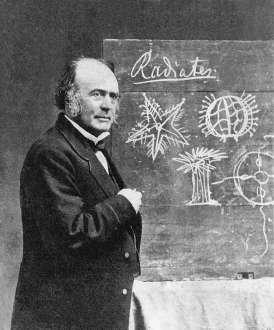
[99] Paracelsus
157
André-Marie Ampère
183
Agassiz in 1870
Birth: Nov. 11 or Dec. 17, 1493, Einsiedeln, Switzerland

Death: Sept. 24, 1541, Salzburg, Archbishopric of Salzburg [now in Austria]
Known for: Der grossen Wundartzney ("Great Surgery Book")
"All things are poisons, for there is nothing without poisonous qualities. It is only the dose which makes a thing poison."
Birth: April 15, 1452, Anchiano, near Vinci, Republic of Florence [now in Italy]
Death: June 10, 1929, Birmingham, Ala., U.S.
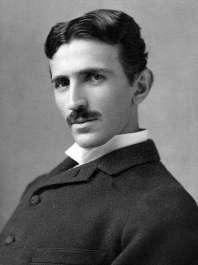
Known for: Sociobiology
"Destroying rainforest for economic gain is like burning a Renaissance painting to cook a meal."
E.O. Wilson
My dear mother, I feel sad and dreary when I think of you. I don't know how, but I feel that you are not well.I wish I could be beside you now mother, to bring you a glass of water. All these years that I had spent in the service of mankind brought me nothing but insults and humiliation. This morning I woke up early, just before the dawn, because I had heard something that I have been hearing through my dreams for quite some time now. I heard this voice that sang some beautiful chant, lament or even prayer in Moorish. When I came to my senses I realized that this voice came from everywhere and it was impossible to determine whether it was from within. I am afraid of loosing my mind. I cannot confide this to Doctor Lionel because I don't trust him anymore. I heard that he visited Mr. Edison two weeks ago...
158
Paracelsus
[100] Edward O. Wilson
Nikola Tesla's Letter To His Mother
Paracelsus
184
Nikola Tesla
Again my thoughts are of you, Mother, and again I feel that same restlessness and sorrow. I will write to the Patent office to speed up the realization of my public experiment for one week. I have to go back home, to my homeland, to You. I know now for sure that you are not well because once again I have heard that lamenting voice, but this time I was wide awake. I still haven't lost my sense.
I didn't write to the Patent office, one of their agents came and I told him about my intentions in person. He said he was sorry, but the dates could not be changed because all the congressmen have already determined them. I went down to the Waterfalls and told the boys to prepare the turbines and wait for my call tomorrow.
I have decided to provide the mankind with the gift it deserves and to return to Europe, to You, Mother. Governments here are the same as the ones back home. I have realized now, at the very end, that the mankind depends on governments and the individual cannot change the world on himself. But that strange voice still bothers me. I know it is connected to You, my experiment, with something transcendental...
Dear Mother, I leave for Yugoslavia tomorrow. Miss Nora went to the Port and bought me the ticket for Lisbon. From there I will go by train to Zurich, and then straight home. It will take me approximately ten days, no more than two weeks, to get home.
Today I have entered the Congressional office building and at the middle of the congressional session asked for couple of minutes of their time. They weren't very happy about it but they let me. I asked for the telephone to call the laboratory at Niagara falls. The boys over there activated the turbines and the Congress hall was lit up with my power, ten times stronger than the regular one, as I promised it would. I didn't care about their reactions at all. I instantly left the hall, because I didn't do all this for them , but for the mankind. In that very moment, when I was looking at the lightning bulb to shine with ''my'' wireless electricity, I realized that I wasn't the maker of all this.
I felt that someone or something was carrying it from Niagara falls to the Congress hall and that the law I thought I ''invented'' actually always existed. I was just the vessel blessed with inspiration to formulate and explain it to the mankind. Instead of triumph and happiness, some empty sorrow emerged. I realized that I had missed something big in my life. As If I had left something unrecognized completely. Some formula was within the grasp of my understanding and I have failed or didn't want to clarify it. That has to be connected to that Moorish lament, I am sure of it now...
159
185
This letter will never get to you, Mother. I don't know why I write it to you when you cannot read it...rest in peace Mother and please forgive me for choosing paths that had lead me away from you. I cannot even be there for your funeral. I read the telegram that informed me of your death and despise people who weren't ready to understand two years ago that electricity can be transferred without wires. Now, they have seen it but they won't use it for centuries to come because someone burned my downtown laboratory to the ground, with all of my formulas and writings in it. They suspect of Mr. Edison. I became so indifferent, I cannot even recognize myself. I would maybe feel sad before but not any more because I am now sure that someone is keeping ''my'' patents under control, that ''my'' discovery isn't ''mine'' at all and finally, that mankind was not ready for it. I know that someone is overseeing everything and has a plan of their own, which is probably why I am indifferent.
My ship for Lisbon leaves at 11 o'clock. The car is waiting outside.
I will lay this letter on your grave, when I arrive at our village's graveyard. I believe in something that I have never believed at. I believe that I am still a part of you, and that my life is not over for good. I now feel sorry for avoiding Turks because they sang similar laments I heard before dawns. I now realize that they knew about this things a lot more than I ever did.
All those years spent in science were in vain. Please mother, pray for me over there if you can, sing the Moorish lament for the lost soul of your poor ignorant son...
My mother forgave me for taking my paths from Thee, so I can not come to the funeral. Pray there, for me, Mother, if you can.
This is the last letter by the famous Serbian scientist Nikola Tesla to his mother, Djuka.
Letter, Franklin Roosevelt to Robert Oppenheimer thanking the physicist and his colleagues for their ongoing secret atomic research, 29 June 1943
160
186
June 29, 1943
SECRET
My dear Dr. Oppenheimer:
I have recently reviewed with Dr. Bush the highly important and secret program of research, development and manufacture with which you are familiar. I was very glad to hear of the excellent work which is being done in a number of places in this country under the immediate supervision of General L.R. Groves and the general direction of the Committee of which Dr. Bush is Chairman. The successful solution of the problem is of the utmost importance to the national safety, and I am confident that the work will be completed in as short a time as possible as theresult of the wholehearted cooperation of all concerned.
I am writing to you as the leader of one group which is to play a vital role in the months ahead. I know that you and your colleagues are working on a hazardous matter under unusual circumstances. The fact that the outcome of your labors is of such great significance to the nation requires that this program be even more drastically guarded than other highly secret war development. I have therefore given directions that every precaution be taken to insure the security of your project and feel sure that those in charge will see that these orders are carried out. You are fully aware of the reasons why your endeavors and those of your associates must be circumscribed by very special restrictions. Nevertheless, I wish you would express to the scientists assembled with you my deep appreciation of their willingness to undertake the tasks which lie before them in spite of the dangers and the personal sacrifices. I am sure that we can rely on their continued wholehearted and unselfish labors. Whatever the enemy may be planning, American science will be equal to the challenge. With this thought in mind, I send this note of confidence and appreciation.
Though there are other important groups at work, I am writing only to you as the leader of one which is operating under very special conditions, and to General Groves. While this letter is secret, the contents of it may be disclosed to your associates under pledge of secrecy.
Very Sincerely Yours
161 THE WHITE HOUSE WASHINGTON
187
Franklin Delano Roosevelt
Dr. J. R. Oppenheimer
Post Office Box 1663 Santa Fe, New Mexico
Niels Bohr talked about the correspondence principle in one of the Silliman Lectures he gave at Yale University between 6 and 13 November 1923. From the correspondence principle, he derived the selection rule that for radiative transitions in atoms, the change in the azimuthal quantum number k must be ±1. Bohr used that result in establishing his electron structures for the elements.
Types of Elementary particles
Fermions → quarks + leptons
Bosons (force carriers) → photons + gluons + gravitons
Massless → moves at speed of light
High mass → moves at less than speed of light
Tesla sitting in front of a spiral coil used in his wireless power experiments at his East Houston St. laboratory
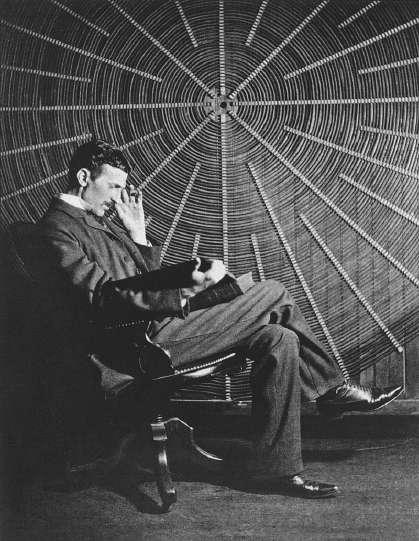
162
188
The luminosity of the sun is the amount of energy it emits per second. The product of the sun's luminosity and age determines how much energy the sun produces over the course of its four and a half billion year existence (remember 1 year equals 3 × 107 seconds):
The total energy the sun emits during its lifetime of
and a half billion years is5.4
A star like the sun contracts, releasing gravitational energy that is converted into thermal energy, which causes the star to heat up
where G is the gravitational constant. The sun's gravitational binding energy is obviously 100 times too small compared to the total amount of energy it produces over the course of its four and a half billion year existence.
In nature, there are only three light neutrinos. The direct observation of the third neutrino, known as tau-neutrino, was confirmed several years later in 2000 at Fermilab by the DONUT experiment. The first two, electron-neutrino and muon-neutrino, were already known.
The electromagnetic force at action in atomic structures is much simpler than the nuclear forces that hold nucleons together.
One of Hans Bethe's key discoveries, as noted in his Nobel citation, concerned the exact fusion events occurring in stars (which serve as the basic building elements of galaxies).
Gravitational binding energy of the sun ≈ 3GMsun 2 5Rsun ≈ 2.4 × 1048 erg
sun = 4 × 1033 watts × (4.5 × 109 × 3 × 107) seconds E = 5.4 × 1050 erg
E = solar luminosity × age of the
×
50 erg
four
10
The nature's most tightly bonded nucleus is Fe56
189
The nuclear shell model, used to describe the structure of the atomic nucleus in terms of energy levels, is a model of the atomic nucleus that is based on the Pauli Exclusion Principle. The shell model has been quite effective at explaining a variety of nuclear features.
Since matter, not anti-matter, dominates our cosmos, we are aware of this. That is a very implausible scenario for how the cosmos began. What forces led to the asymmetry that we observe today if our universe initially contained an equal amount of matter and antimatter? Although we do not understand the fundamental forces, we do understand that a violation of Charge Conjugation Parity symmetry is a necessary component.
A massive star's implosion may produce a black hole, which is a super dense entity. During this process, its gravitational field intensifies to the point where its escape velocity is faster than the speed of light.
Stephen Hawking demonstrated in 1971 that the combined event horizon area of two collapsing black holes exceeds the sum of their individual event horizon areas using the theory of classical general relativity.
Jacob Bekenstein claimed that black holes do have thermodynamic entropy proportional to the horizon area, drawing on the Hawking area theorem as inspiration.
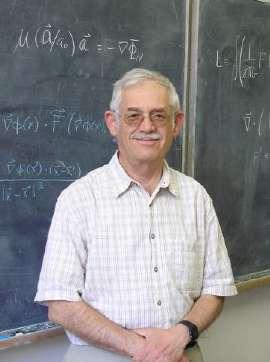
190
Since the last few decades, it has been difficult to comprehend the accelerated cosmic expansion and the source of dark energy. A basic principle that can explain dark energy and produce a workable cosmology is still missing.
The exact relationship between the black hole's mass (M) and its Schwarzschild radius (rS) is given by the equation:
rS = 2GM c2
Schwarzschild radius of an object with mass equal to the mass of the earth is 9 mm. This implies that the earth would turn into a black hole if its radius were reduced to less than 9 mm.
TBH = ħc3 8πGMkB
This corresponds to a temperature of 6 ×10 8 K, which is nearly eight orders of magnitude lower than the temperature of the cosmic microwave background for a black hole with a mass of a sun.
A black hole with the mass of the sun will have a Hawking temperature of 10 8 K, while one with the mass of the earth will have a Hawking temperature of 0.1 K.
191
The time that the black hole takes to evaporate is:
where V denote the Schwarzschild volume of the black hole.
The two stone foundations that support a large portion of current physics are quantum physics and Albert Einstein's theory of general relativity. The connection between these two accepted ideas is still a key unresolved issue in theoretical physics.
Virial temperature
A primordial black hole with a mass of 1015 grams would evaporate in 1010 years, while a black hole with a mass of solar mass will take 1076 years to do so.
The typical temperature at which a system that is gravitationally bound would satisfy the Virial Theorem
To remain connected to one another inside a nucleon, quarks exchange gluons. The spin-1 gluons are hence strong interaction mediators. Photons only interact with quarks and not with gluons because gluons lack an electric charge.
In just ten seconds, gamma-ray bursts can release more energy than our Sun would in its whole lifetime.
The earliest stars are thought to have formed some 200 million years after the Big Bang, according to experts.
SCHRÖDINGER'S CAT PARADOX
If you put a cat and a poison that could kill it in a box and seal it, you won't know whether the cat is dead or alive until you open the box, thus up until that moment, the cat seems to be "dead and alive."
tev =
V
480c2
ħG
192
… Thus, Einstein’s original gravity equation was correct, and changing it was a mistake. Much later, when I was discussing cosmological problems with Einstein, he remarked that the introduction of the cosmological term was the biggest blunder he ever made in his life. But this “blunder”, rejected by Einstein, is still sometimes used by cosmologists even today, and the cosmological constant L rears its ugly head again and again and again.
Yet some stars (e.g., globular clusters, quasars...) are estimated to be as old as 12.5 Gyr.
The Cosmological Constant
A largeΛis needed to have the inflation epoch.
A smallΛ, the dark energy, fits snugly with the inflation cosmology prediction of a
flat universe solving the missing energy and cosmic age problems.
age of
universe: t0 = 2 3H0 < 10 Gyr
George Gamow (1904-1968) in "My World Line" p.44
The
a flat
Λ
193
"Chemistry, like all other sciences, had arisen from the reflections of ingenious men on general facts, which occur in the practice of the various arts of common life."
Joseph Black
"As dangerous as is the desire to systematize in the physical sciences, it is, nevertheless, to be feared that in storing without order a great multiplicity of experiments we observe the science rather than clarify it, render it difficult of access to those desirous of entering upon it, and finally, obtain at the price of long and tiresome work only disorder and confusion. Facts, observations, experiments these are the materials of a great edifice, but in essembling them we must combine them into clusters, distinguish which belongs to which order and which part of the whole each pertains."
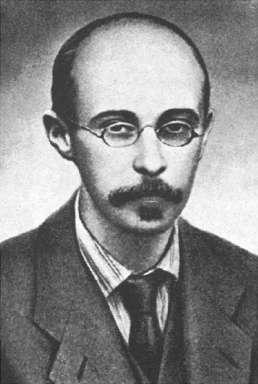
= − +
�� �� 4πG 3 (ρ +3P) Λ 3
Lavoisier in his Memoir on Combustion in General (1777)
Slows down expansion
c2 c2
Speeds up expansion
Friedmann equation
194
Alexander Friedmann
8πG
c4 = Einstein gravitational constant
Einstein gravitational constant × Planck force = 8π
Halley's Comet is one of the most well-known comets and has significant historical significance. During its near flyby of Earth, which occurs every 76 years, it is visible to anyone on the planet.
Theory of relativity Quantum mechanics
Eliminates inconsistencies inthe classical theory.
Portrays the behavior of matter at high energies and high speeds (v ≈ c).
Eliminates conflicts between theory and measurements.
Portrays the behavior of infinitesimal particles.
Quantum Mechanics
Newtonian Mechanics
Wave-particle duality
Superposition
Probabilities
Special Relativity
Universal gravitation
Force and acceleration
Spacetime geometry
Relativityof motion
Classical physics → non-relativistic (v << c) limit
195
Virtual particles
Quantum Field Theory
Classical mechanics
Quantum Physics
Color charge
Wave function General Relativity
Equivalence principle
Dynamic spacetime
Describe the properties of a physical system
Quantum Mechanics
Describe the properties of molecules, atoms and subatomic particles
(Study of motion)
Kinematics
(Describes motion)
(Causes of motion)
Wave Superposition Particle Position Proton
mechanics Proton Wave Particle Superposition Position ↔
Quantum
Mechanics
Dynamics
196
Classical mechanics
Lorentzian mechanics
Old Quantum Theory
Quantum mechanics
Quantum Field Theory
Special Relativity
General Relativity
Quantum gravity
Mathematics
"In science one tries to tell people, in such a
Mathematical physics
Ontology Physics
way as to be understood by everyone, something that no one ever knew before. But in poetry, it's the exact opposite."
― Paul Dirac
Because of the intra-atomic movement of electrons, the atom must radiate not only electromagnetic but also gravitational energy, if only in minute amounts. Since, in reality, this cannot be the case in nature, then it appears that the quantum theory must modify not only Maxwell's electrodynamics but also the new theory of gravitation. (Einstein 1916, p. 696)
197
One should mention that a quantization of the gravitational field, which appears to be necessary for physical reasons, may be carried out without any new difficulties by means of a formalism wholly analogous to that applied here. (Heisenberg and Pauli 1929, p. 3)
Quantum theory + theory of the electromagnetic field + theory of gravitation → Cosmological theory
Quantum Mechanics
Information based physics
Quantum gravity
Relativistic
General Relativity
Information based physics
Quantum gravity
Kinetic theory → explains the behavior of gases
Maxwell's theory of electromagnetism → explains the phenomena of electricity and magnetism
Predicted electromagnetic waves
Ω < 1 k = −1 <180o Hyperbolic (Negative space curvature) Open Universe Ω = 1 k = 0 180o Flat (Euclidean) Critical universe Ω > 1 k = +1 >180o Spherical (Positive space curvature) Close Universe Quantized
k→curvatureoftheuniverse 198
Scientific Method Steps:
��2 ��1 = Expansion magnification factor
a2 → Scale factor of the universe at time t2
a1 → Scale factor of the universe at time t1
The biggest black hole in the cosmos is 66 billion times more massive than the Sun.
Pluto's atmosphere is incredibly thin because it is so cold that nitrogen freezes into solid form.
The CMB displays temperature fluctuations of order
10
on scales of order one degree
Test the Hypothesis Analysis Conclusion
Question Data collection Hypothesis
∆T T ∼
−5
199
L⊙ = 4 × 1033erg / s = solar luminosity.
Known stars have luminosity in the range 10−5 − 106 L⊙.
Mbol = 4.8 − 2.5 log ( L L⊙ ) = absolute bolometric magnitude of a star with a luminosity L
MV = Mbol − BC = absolute visual magnitude of a star
BC is a bolometric correction
As the universe expands:
Photon frequencies redshift with
1
and a blackbody curve will be preserved with temperature T
Each of the fundamental forces has an energy scale associated with it.
E = kBTfreeze out
Tfreeze out → Temperature above which that fundamental force freezes out
ρ ∝ 1 ��3 P = 0 matter ρ ∝ 1 ��4 P = ρ 3 radiation ρ ∝ a0 P = −ρ vacuum
υ ∝
��
∝
1 ��
177
strong forces freeze out
weak forces freeze out
> 1027
> 1015 Law Model
Exact
Applies to everything
Law of energy conservation
Approximate
Applies to some things only
Bohr model of the atom
"[Statistical thermodynamics] is the only physical theory of universal content, which I am convinced, that within the framework of applicability of its basic concepts will never be overthrown."
Albert Einstein
"If we wish to find in rational mechanics an a priori foundation for the principles of thermodynamics, we must seek mechanical definitions of temperature and entropy."
J. Willard Gibbs
"Available energy is the main object at stake in the struggle for existence and the evolution of the world."
Ludwig Boltzmann
Temperature (K)
201

202
dark energy
dark matter
degenerate matter
The energy of empty space that drives the acceleration of the expanding universe
Nonluminous matter that is detected only by its gravitational influence
Extremely high-density matter in which pressure no longer depends on temperature
Electromagnetic radiation
Emitted by:
acceleration of electrical charges
thermal motion of atoms and molecules
nuclear reactions (fission and fusion)
Fluctuating electric and magnetic fields that travels through space and transfer energy from one place to another
extremophile
free-fall collapse
geocentric universe
An organism that can survive in an extreme environment
The early contraction of a gas cloud to form a star during which internal pressure is too low to resist contraction
A model universe with Earth at the center
bound → unbound (ionization)
unbound → bound (recombination)
Transmissivity (τ) + Reflectivity (α) + Absorptivity (ξ) = 1 203
All objects above absolute zero (−273.15 ℃) emit Electromagnetic radiation
Reflection
Scattering
Refraction
Absorption
Processes that occur in the atmosphere
Albedo is a measure of how much light that hits a surface is reflected without being absorbed
The more massive a star is, the more luminous it is.
helioseismology
Hertzsprung–Russell
(H–R) diagram
interstellar extinction
iron meteorite
light pollution
Milankovitch hypothesis
The study of the interior of the sun by the analysis of its modes of vibration
A plot of the intrinsic brightness versus the surface temperature of stars
The dimming of starlight by gas and dust in the interstellar medium
A meteorite composed mainly of iron–nickel alloy
The illumination of the night sky by waste light from cities and outdoor lighting
which prevents the observation of faint objects
The hypothesis that small changes in Earth's orbital and rotational motions cause the ice ages.
millisecond pulsar A pulsar with a period of approximately a millisecond − a thousandth of a second monolithic collapse hypothesis
nucleosynthesis
opacity
The hypothesis that the Milky Way Galaxy formed by gravitational collapse of a single large spinning cloud of gas
The production of elements heavier than helium by the fusion of atomic nuclei in stars and during supernovae explosions
Th e resistance of a gas to the passage of radiation
–
204
Translation of a machine typed copy of a letter that Wolfgang Pauli sent to a group of physicists
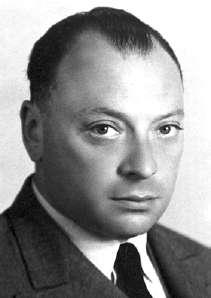
Dear radioactive ladies and gentlemen,
… I have hit upon a 'desperate remedy' to save… the law of conservation of energy. Namely the possibility that there exists in the nuclei electrically neutral particles, that I call neutrons… I agree that my remedy could seem incredible… but only the one who dare can win…
Unfortunately I cannot appear in person, since I am indispensable at a ball here in Zurich.
Your humble servant
(December 4, 1930)
PHYSICS GLOSSARY
Absolute zero: The lowest possible temperature T, at which substances contain no heat energy Q.
Acceleration: The rate at which the speed of an object is changing and it is given by the equation:
Anthropic principle: We see the universe the way it is because if it were different we would not be here to observe it through a gigantic telescopes pointing deep into the immense sky
merely stating that the
163
W. Pauli
a = dv dt
–
205
Pauli in 1945
constants of nature must be tuned to allow for intelligence (otherwise we would not be here). Some believe that this is the sign of a cosmic creator. Others believe that this is a sign of the multiverse.
Antiparticle: Each type of matter particle has a corresponding antiparticle – first predicted to exist by P. A. M. Dirac. When a particle collides with its antiparticle, they annihilate, leaving only pure energy in the form of discrete bundle (or quantum) of electromagnetic (or light) energy called photons.
Atom: The basic unit of ordinary matter, made up of a tiny nucleus (consisting of positively charged protons and electrically neutral neutrons – which obey the strong interactions) surrounded by orbiting negatively charged weakly interacting particles called the electrons.
Big Bang: The singularity at the beginning of the universe. The titanic explosion that created the universe, sending the galaxies hurtling in all directions. When the universe was created, the temperature was extremely hot, and the density of material was enormous i.e., infinite. The big bang took place 13.7 billion years ago, according to the WMAP satellite. The afterglow of the big bang is seen today as the cosmic background microwave radiation (of temperature 2.7 degrees above absolute zero). There are three experimental "proofs" of the big bang: the redshift of the galaxies, the cosmic background microwave radiation, and nucleosynethsis of the elements.
Big crunch: The singularity at the end of the universe i.e., The final collapse of the universe. If the density of matter is large enough (Omega – The parameter that measures the average density of matter in the universe – being larger than 1), then there is enough matter in the universe to reverse the original expansion and cause the universe to recollapse. Temperatures rise to infinity at the instant of the big crunch.
Big freeze: The end of the universe when it reaches near absolute zero. The big freeze is probably the final state of our universe, because the sum of Omega and Lambda is believed to be 1.0, and hence the universe is in a state of inflation. There is not enough matter and energy to reverse the original expansion of the universe, so it will probably expand forever.
Big Bang nucleosynthesis: The production of deuterium, Helium-3 and Helium-4 (the latter to about 25% mass fraction) in the first 500 to 1000 sec of the early universe. These light isotopes, plus measurable amounts of lithium-7 and trace amounts of elements B, Be, are the result of non-equilibrium nuclear reactions as the universe cooled to about 10 to the power of 8 K. Heavier isotopes were produced in stellar nucleosynthesis.
164
206
Black hole:
A black hole is a region of spacetime exhibiting gravitational acceleration so strong that nothing no particles or even electromagnetic radiation such as light can escape from it. A sufficiently compact mass can distort spacetime to create a black hole, according to Albert Einstein's general relativity theory. Four different types of black holes are recognised: stellar, intermediate, supermassive, and small. Stellar black holes are formed from the collapse of massive stars, have masses ranging from about 5 to 30 times that of the sun, and are usually found in binary systems. Intermediate black holes are thought to have masses of a few thousand to a million times that of the sun and may be the missing link between stellar and supermassive black holes. Supermassive black holes have masses of millions to billions of times that of the sun and are found at the centers of most galaxies, including the Milky Way. Small black holes are hypothetical with masses less than a few times that of the sun and have not yet been observed. Black holes are invisible, but their presence can be inferred by observing their effects on nearby matter.
Black Hole Escape Velocity:
The escape velocity of a black hole is the minimum speed an object must have in order to escape its gravitational pull and not fall back into the black hole. For a black hole, the escape velocity is equal to the speed of light, meaning that nothing, including light, can escape from the black hole once it crosses the event horizon. This property is what makes black holes "black," as no light or radiation can be seen from outside the event horizon. The escape velocity at the surface of an astrophysical object is directly proportional to its mass, meaning that the more massive the object, the higher the escape velocity and the stronger is its gravitational pull.
The study of quantum black holes is a highly active area of research, as it seeks to understand the behavior of black holes at the quantum level and to reconcile the seemingly conflicting theories of general relativity (which describes the behavior of black holes) and quantum mechanics. While progress is being made, a complete theory of quantum black holes is still not fully understood and remains a topic of ongoing research.
207
Schwarzschild Black Hole
A Schwarzschild Black Hole is a non-rotating and uncharged black hole, described by the famous German physicist Karl Schwarzschild in 1916. It is characterized by a singularity at the center, surrounded by an event horizon, beyond which nothing can escape its gravitational pull. The size of the event horizon, also known as the Schwarzschild radius, depends on the mass of the black hole. The equations describing the structure of a Schwarzschild black hole form the basis for our understanding of black holes in general.

A Kerr black hole is a rotating black hole that was first described by the New Zealand mathematician Roy Patrick Kerr in 1963. It is characterized by a central singularity surrounded by an event horizon, and by a region known as the ergosphere, within which any object must rotate with the black hole. The size of the event horizon and the structure of the black hole are described by the Kerr metric, which is a solution to the Einstein field equations of general relativity. Unlike a Schwarzschild black hole, which is non-rotating, a Kerr black hole has angular momentum and is therefore described as a "rotating" black hole.
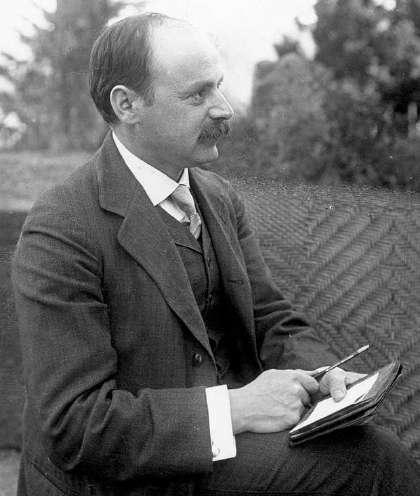 Karl Schwarzschild
Karl Schwarzschild
208
Kerr-Newman black hole
A Kerr-Newman black hole is a charged, rotating black hole that was first described by the physicists Roy Kerr, Ezra Newman, and Ted Jacobson in 1965. It is characterized by a central singularity surrounded by an event horizon, and by a region known as the ergosphere, within which any object must rotate with the black hole. The size of the event horizon, the structure of the black hole, and the distribution of the electric charge are described by the Kerr-Newman metric, which is a solution to the Einstein-Maxwell field equations of general relativity and electromagnetism. A Kerr-Newman black hole is the most general and complete description of a black hole, incorporating both angular momentum and electric charge.
Reissner-Nordstrom solution
The Reissner-Nordstrom solution is a solution to the Einstein-Maxwell field equations of general relativity and electromagnetism that describes a charged, non-rotating black hole. It was first described by the physicists Hans Reissner and Gunnar Nordström in 1916. The Reissner-Nordstrom solution is a special case of the more general Kerr-Newman solution, which describes a charged, rotating black hole.
The Cauchy horizon is a mathematical surface that appears in the description of some black holes, particularly in the Reissner-Nordstrom solution for a charged, non-rotating black hole. It is located inside the event horizon and represents the boundary of the region of spacetime from which information can escape from the black hole to reach infinity. The presence of a Cauchy horizon raises important questions about the stability of the black hole solution, and about the predictability of physical processes that occur near the horizon. In some cases, it has been shown that the Cauchy horizon is unstable and can be destroyed by perturbations, leading to the formation of a naked singularity. However, the nature of the Cauchy horizon and the issues associated with it remain the subject of ongoing research and debate in the physics community.
209
The question of why we exist is a complex and deeply philosophical question that has been debated by scholars, theologians, and thinkers for thousands of years. There are many different perspectives on this question, and no one answer that can be considered definitive. From a scientific perspective, it is believed that human beings evolved over millions of years through the process of natural selection. According to this theory, human beings exist because our ancestors were able to survive and reproduce in their environments, passing on their genetic material to future generations.
From a religious or spiritual perspective, many people believe that we exist because a higher power or Divine Being created us for a specific purpose. For example, some religious traditions hold that humans were created in the image of God and given the purpose of ruling over the earth and caring for it. Others contend that we must find our own meaning in life via our experiences and connections because there is no inherent meaning to existence. This perspective is often associated with existentialism, a philosophical movement that emphasizes individual freedom and personal responsibility. Ultimately, the answer to why we exist is a deeply personal and subjective question, and each person must find their own answer based on their own experiences, beliefs, and values. Some people may find comfort in a religious or spiritual answer, while others may find meaning in relationships, personal growth, or creative pursuits. There is no right or wrong answer, and each person's journey to understanding their existence is unique.
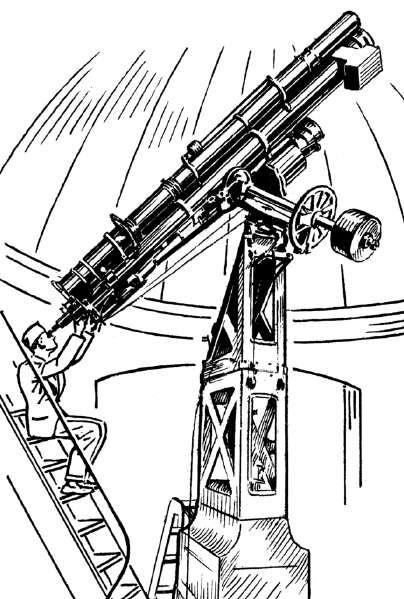
210
• Visual photometry: The brightness of an object is estimated by comparing it to a set of standard stars of known brightness.
• Photographic photometry: The brightness of an object is measured using a photographic plate or film.
• Spectrophotometry: The brightness of an object is measured as a function of wavelength (i.e., its spectrum), providing information about the object's temperature, chemical composition, and other physical properties.
▪ Zero point Energy: an intrinsic and unavoidable part of quantum physics. The ZPE has been studied, both theoretically and experimentally, since the discovery of quantum mechanics in the 1920s and there can be no doubt that the ZPE is a real physical effect.
▪ Casimir effect: The attractive pressure between two flat, parallel metal plates placed very near to each other in a vacuum. The pressure is due to a reduction in the usual number of virtual particles in the space between the plates. This tiny effect has been measured in the laboratory. The Casimir effect may be used as the energy to drive a time machine or wormhole, if its energy is large enough.
▪ Chandrasekhar limit: The maximum possible mass of a stable cold star (i.e., 1.4 solar masses), above which it must collapse into a black hole.
Birth: [28 December 1882] Kendal, Westmorland, England, United Kingdom
Death: [22 November 1944] (aged 61) Cambridge, Cambridgeshire, England, United Kingdom
Known for:
▪ Eddington approximation
▪ Eddington experiment
▪ Eddington limit
▪ Eddington number
▪ Eddington valve
▪ Eddington–Dirac number
A Horrific Humiliation and Sense of Betrayal | Eddington and Chandrasekhar
[1] Sir Arthur Stanley Eddington
211
Eddington–Finkelstein coordinates
[2] Subrahmanyan Chandrasekhar
Birth: [19 October 1910] Lahore, Punjab, British India (present-day Punjab, Pakistan)
Death: [21 August 1995] (aged 84) Chicago, Illinois, U.S.
Known for:
Chandrasekhar limit
Chandrasekhar number
Chandrasekhar friction
Chandrasekhar–Kendall function
Chandrasekhar's H-function
Emden–Chandrasekhar equation
Chandrasekhar–Page equations
Chandrasekhar tensor
Chandrasekhar virial equations
Batchelor–Chandrasekhar equation
Schönberg–Chandrasekhar limit
Chandrasekhar's white dwarf equation
Chandrasekhar polarization
Chandrasekhar's X- and Y-function
This story dates back to 1930s when India was ruled or administered by the United Kingdom and its predecessor states. Just a few years ago, the Nobel Prize in Physics was awarded to the first Asian Sir Chandrasekhara Venkata Raman for his work on the scattering of light and for the discovery of the effect named after him. In this uncertain time when India was suffering under colonial rule of the British Raj, there was one Lahore-born, Presidency College-educated student who was dreaming of bringing the second Nobel Prize to his country and he was none other than Nephew of the Indian physicist Chandrasekhara Venkata Raman: Subrahmanyan Chandrasekhar.
168
212
It is impossible to trap modern physics into predicting anything with perfect determinism because it deals with probabilities from the outset.

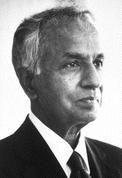
Science is a perception of the world around us. Science is a place where what you find in nature pleases you.
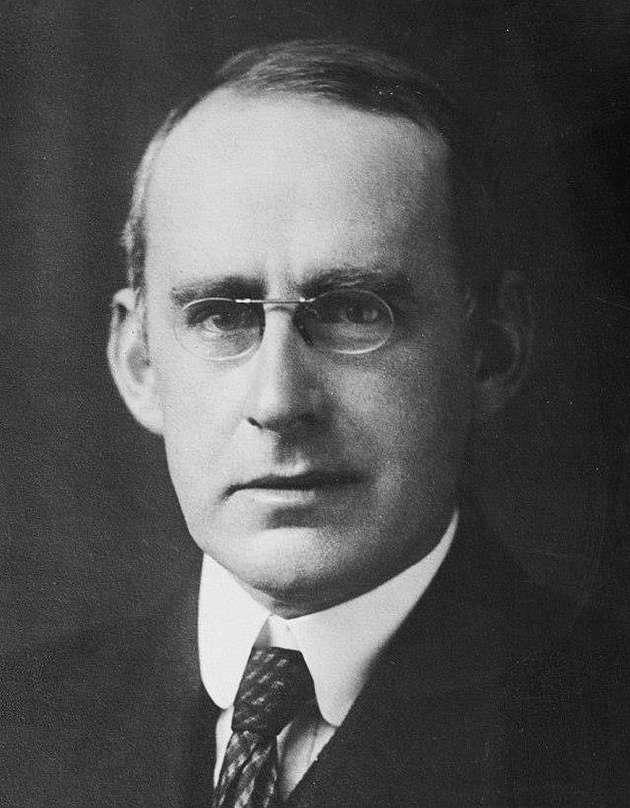 Sir Arthur Stanley Eddington
Subrahmanyan Chandrasekhar
Sir Arthur Stanley Eddington
Subrahmanyan Chandrasekhar
213
Applied mathematician and astrophysicist Subrahmanyan Chandrasekhar completed his university education at Presidency College [Madras] graduating with a Bachelor of Science degree in physics and to pursue his Master's Chandra went to Britain as he was awarded a Government of India scholarship to study at Cambridge as a member of Trinity College.
While on the voyage to Cambridge in 1930, Chandra worked on one of his most significant discoveries called Chandrasekhar's limit. He applied Albert Einstein’s theory of relativity to the processes inside a star. His calculations suggested that once a stellar star had burned up all its energy (exhibiting a corresponding mass m given by its energy E divided by the speed of light squared) it would collapse to a point of infinite density where gravity is so strong that nothing no particles or even electromagnetic radiation such as light can escape from it.
Since he was born in an open minded Tamil Iyer family, to Sita Balakrishnan (1891–1931) and Chandrasekhara Subrahmanya Ayyar (1885–1960) who was stationed in Lahore as Deputy Auditor General of the Northwestern Railways at the time of Chandrasekhar's birth, He assumed the community there would welcome him and his contribution to the structure and evolution of stars with open arms. But the reality was far from what he had thought − his theories were overlooked because of his race. The scientific community in Britain ignored him and his work on the white dwarfs and black holes as a result of which he went into a deep mood disorder. He had lost all feeling of trust.
Then came an English astronomer, physicist, and mathematician "Sir Arthur Stanley Eddington". For those who don't know about Eddington, he was the
Philosopher of science
Populariser of science
One who conducted an expedition to observe the solar eclipse of 29 May 1919 that provided one of the earliest confirmations of Albert Einstein's general theory of relativity, and he became known for his popular expositions and interpretations of the theory.
169
214
The legendary astrophysicist Arthur Stanley Eddington started meeting Chandra frequently. Chandra and Eddington were almost in daily contact about their research. Subrahmanyan Chandrasekhar felt motivated that a man of Eddinton's reputation is helping him out. Arthur Eddington was also working on the similar subject and he encouraged Chandrasekhar to pursue the detailed calculations and produce his results at the Royal Astronomical Society meeting on 11 January 1935, in England to which Chandrasekhar agreed.
But, on January 10, he came to know that Eddington too had a lecture after him that too on the same topic. He was puzzled, but thought no more about it. On the day of the conference, all the leading figures in astrophysics were at the Royal Astronomical Society. Chandra delivered his paper, showing a graph that made it transparently clear that the maximum mass at which a star near the end of its life cycle can become a white dwarf and above which the star will collapse to form a neutron star or black hole: a stellar mass equal to about 1.4 solar masses. Triumphantly he sat down, assuming that Eddington would support his conclusions. But to his horror, Eddington − a supercilious man – claimed that there was no such thing as Chandra's relativistic degeneracy; arguing that Chandra's theory was mere mathematical game-playing − with no basis in reality, he used the full force of his famed oratorical skills to demolish the young researcher's calculations and theory. Eddington's arguments were unfounded and highly dubious; but the weight of his reputation was such that no one dared to disagree with him. Chandra was not even given the opportunity to reply to this confrontation. The next speaker was called.
This controversy rumbled and preoccupied scientific journals for several years. Chandra and Eddington came across each other in many conferences and it was Sir Arthur Eddington, who was always favored and at a talk at Harvard, Eddington termed Chandra's notions a "stellar buffoonery".
But years later, in one meeting it was proved that it was Chandrasekhar’s calculations that were correct. On that day, they both had a brief meeting. "I am sorry if I hurt
170
215
you," Eddington said to Chandra. Chandra asked whether he had changed his mind. "No," Eddington responded. "What are you sorry about then?" Chandra replied and brusquely walked away.
Chandrasekhar was awarded the 1983 Nobel Prize for Physics with William A. Fowler for "... theoretical studies of the physical processes of importance to the structure and evolution of the stars". On several occasions he admitted that Eddington's behavior was indeed racially motivated.
Conservation of energy: The law of science that states that energy (or its equivalent in mass) can neither be created nor destroyed i.e., they never change with time. For example, the conservation of matter and energy posits that the total amount of matter and energy in the universe is a constant.
Coordinates: Numbers that specify the position of a point in a 4 dimensional space-time.
Cosmological constant: A mathematical parameter (which measures the amount of dark energy in the universe) introduced by Albert Einstein to give space-time an inbuilt tendency to expand. At present, the data supports density parameter + cosmological constant = 1, which fits the prediction of inflation for a flat universe. Cosmological constant, which was once thought to be zero, is now known to determine the ultimate destiny of the universe.
Cosmology: The study of the universe as a whole.
COBE: The Cosmic Observer Background Explorer satellite.
Dark matter: Invisible Matter usually found in a huge halo around galaxies, clusters, and possibly between clusters, that cannot be observed directly but can be detected by its gravitational effect and they does not interact with light. As much as 90 percent of the mass of the universe may be in the form of dark matter and they makes up 23 percent of the total matter/energy content of the universe. According to string theory, dark matter may be made of subatomic particles, such as the neutralino, which represent higher vibrations of the superstring.
Duality: A correspondence between apparently different theories that lead to the same physical results.
Einstein-Rosen bridge: A thin tube of space-time linking two black holes.
171
216
Electric charge: A property of a particle by which it may repel (or attract) other particles that have a charge of similar (or opposite) sign
Electromagnetic force: The force of electricity and magnetism that arises between particles with electric charge; the second strongest of the four fundamental forces –which obeys Maxwell's equations.
Electron: A negatively charged subatomic particle with negative electric charge that orbits the nucleus of an atom and determines the chemical properties of the atom.
Electroweak unification energy: The energy (around 100 GeV) above which the distinction between the electromagnetic force and the weak force disappears.
Elementary particle: A particle that, it is believed fundamental building block of Nature, cannot be subdivided and are not composed of other simpler particles.
Event: A point in space-time, specified by its time and place.
Event horizon: The boundary of a black hole. The point of no return, often called the horizon.
Exclusion principle: The idea that two identical spin-1/2 particles cannot have (within the limits set by the uncertainty principle) both the same position and the same velocity. This means that two electrons cannot occupy precisely the same point with the same properties, so that there is a net force pushing the electrons apart (in addition to electrostatic repulsion).
Field: Something that exists throughout 4 dimensional fabric of space -time, as opposed to a particle that exists at only one point at a time.
Frequency: For a wave, the number of complete cycles per second.
Gamma rays: Electromagnetic rays of very short wavelength, produced in radio-active decay or by collisions of elementary particles.
General relativity: Einstein's theory of gravity based on the idea that the laws of science should be the same for all observers, no matter how they are moving. It explains the force of gravity in terms of the curvature of a four dimensional space-time; so that the curvature of space-time gives the illusion that there is a force of attraction called gravity. It has been verified experimentally to better than 99.7 percent accuracy and predicts the existence of black holes and the expanding universe. The theory, however, break down at the center of a black hole or the instant of creation, where the theory predicts nonsense. To explain these phenomena, one must resort to a theory of subatomic physics.
172
217
Geodesic: The shortest (or longest) path between two points.
Grand unification energy: The energy above which, it is believed, the electromagnetic force, weak force, and strong force become indistinguishable from each other.
Grand unified theory (GUT): A theory which unifies the electromagnetic, strong, and weak forces (but not gravity). The proton is not stable in these theories and can decay into positrons. GUT theories are inherently unstable (unless one adds super symmetry). GUT theories also lack gravity. (Adding gravity to GUT theories makes them diverge with infinities.)
Imaginary time: Time measured using imaginary numbers.
Inflation: The theory which states that the universe underwent an incredible amount of superliminal expansion at the instant of its birth i.e., A distance of one nanometer was enlarged to a quarter of a billion light-years.
Hyperspace: Dimensions higher than four.
Light cone: A surface in space-time that marks out the possible directions for light rays passing through a given event.
Light year: The distance light travels in one year, or approximately 5.88 trillion miles (9.46 trillion kilometers).
LIGO: The Laser Interferometry Gravitational-Wave Observatory, based in Washington state and Louisiana,which is the world’s largest gravity wave detector.
LISA: The Laser Interferometry Space Antenna- which is a series of three space satellites using laser beams to measure gravity waves. It is sensitive enough to confirm or disprove the inflationary theory and possibly even string theory.
Magnetic field: The field responsible for magnetic forces, now incorporated along with the electric field, into the electromagnetic field.
Muon: A subatomic particle identical to the electron but with a much larger mass. It belongs to the second redundant generation of particles found in the Standard Model.
Mass: The quantity of matter in a body; its inertia, or resistance to acceleration.
Microwave background radiation: The remnant radiation (with a temperature of about 2.7 degrees K) from the glowing of the hot early universe (big bang), now so greatly red-shifted that it appears not as light
173
218
but as microwaves (radio waves with a wavelength of a few centimeters). Tiny deviations in this background radiation give scientists valuable data that can verify or rule out many cosmological theories.
Naked singularity: A hypothetical gravitational singularity without an event horizon.
Neutrino: An extremely light (possibly massless) subatomic particle that react very weakly with other particles and may penetrate several light-years of lead without ever interacting with anything and is affected only by the weak force and gravity.
Neutron: A neutral subatomic particle, very similar to the proton, which accounts for roughly half the particles in an atomic nucleus.
Neutron star: A cold collapsed star consisting of a solid mass of neutrons which is usually about 10 to 15 miles across supported by the exclusion principle repulsion between neutrons. If the mass of the neutron stars exceeds (3- 4 solar masses) i.e., if the number of neutrons becomes ≥ 5.9 × 1057, then the degenerate neutron pressure will not be large enough to overcome the gravitational contraction and the star collapses into the next stage called black holes.
No boundary condition: The idea that the universe is finite but has no boundary (rooted in the Euclidean formalism) to account for the initial conditions in the big bang.
Nuclear fusion: The process by which two nuclei collide and coalesce to form a single, heavier nucleus.
Nucleus: The tiny core of an atom, which is roughly 10 to the power of -13 cm across, consisting only of protons and neutrons, held together by the strong force
Particle accelerator: A machine based in Geneva, Switzerland that, using electromagnets, can accelerate moving charged particles, giving them more energy.
Phase: For a wave, the position in its cycle at a specified time: a measure of whether it is at a crest, a trough, or somewhere in between.
Photon sphere: An area or region of space where gravity is so strong that photons are forced to travel in orbits Because r = 3GM c2 photon spheres can only exist in the space surrounding an extremely compact object (a black hole or possibly an "ultracompact" neutron star).
Photon: A quantum of light (which was first proposed by Einstein to explain the photoelectric effect that is, the fact that shining light on a metal results in the ejection of electrons).
174
219
Planck's quantum principle: The idea that light (or any other classical waves) can be emitted or absorbed only in discrete quanta, whose energy E is proportional to their wavelength λ (i.e., E = hc λ ).
Positron: The (positively charged) antiparticle of the electron.
Primordial black hole: A black hole created in the very early universe.
Negative energy: Energy that is less than zero.
Proton: A positively charged subatomic particle, very similar to the neutron, that accounts for roughly half the particles in the nucleus of most atoms. They are stable, but Grand Unification theory predicts that they may decay over a long period of time.
Pulsar: A rotating neutron star that emits regular pulses of radio waves.
Quantum: The indivisible unit in which waves may be emitted or absorbed.
Quark: A subatomic particle that makes up the proton and neutron and feels the strong force. Three quarks make up a proton or neutron, and a quark and antiquark pair makes up a meson.
Quantum chromodynamics (QCD): The theory that describes the interactions of quarks and gluons.
Quantum mechanics: The theory developed from wave equations, Planck's quantum principle and Heisenberg's uncertainty principle. No deviation from quantum mechanics has ever been found in the laboratory. Its most advanced version today is called quantum field theory, which combines special relativity and quantum mechanics. A fully quantum mechanical theory of gravity, however, is exceedingly difficult.
Quasar: Quasi-stellar object. They are huge galaxies that were formed shortly after the gigantic explosion called the big bang.
Quantum foam: Tiny, foam like distortions of 4 dimensional fabric of space-time at the level of the Planck length.
Radioactivity: The spontaneous breakdown of one type of atomic nucleus into another.
Red shift: The reddening or decrease in frequency of light from a star that is moving away from us, due to the Doppler effect.
Singularity: A point in space-time at which the space-time curvature becomes infinite – which represent a breakdown of general relativity, forcing the introduction of a quantum theory of gravity.
175
220
Singularity theorem: A theorem that states that the universe must have started with a singularity.
Space-time: The four-dimensional space whose points are events.
Spatial dimension: Any of the three dimensions that are space like – that is, any except the time dimension.
Special relativity: Einstein's 1905 theory based on the idea that the laws of science should be the same for all observers, no matter how they are moving, in the absence of gravitational phenomena. Consequences include: time slows down, mass increases, and distances shrink the faster you move. Also, matter and energy are related via E = mc2 = m0c2
v2 c2 . One consequence of special relativity is the atomic bomb.
Spectrum: The different colors or component frequencies that make up a wave. By analyzing the spectrum of starlight, one can determine that stars are mainly made of hydrogen and helium.
Spin: An internal property of elementary particles.
Stationary state: One that is not changing with time.
Supernova: An exploding star. They are so energetic that they can sometimes outshine a galaxy.
String theory: A theory of physics based on tiny vibrating strings, such that each particle is described as a wave on a string. It is the only theory that can combine gravity with the quantum theory, making it the leading candidate for a theory of everything.
Strong force: The strongest of the four fundamental forces, with the shortest range of all. It holds the quarks together within protons and neutrons, and holds the protons and neutrons together to form atoms.
Steady state theory: The theory which states that the universe had no beginning but constantly generates new matter as it expands, keeping the same density.
Uncertainty principle: The principle, formulated by Heisenberg, that one can never be exactly sure of both the position and the velocity of a particle; the more accurately one knows the one, the less accurately one can know the other.
176
√1
Δx
≥ ћ 2 221
• Δp
Virtual particle: In quantum mechanics, a particle that briefly dart in and out of the vacuum but can never be directly detected, but whose existence does have measurable effects. They violate known conservation laws but only for a short period of time, via the uncertainty principle.
Wave / particle duality: The concept in quantum mechanics that there is no distinction between waves and particles; particles may sometimes behave like waves, and waves like particles.
Wavelength: For a wave, the distance between two adjacent troughs or two adjacent crests.
Weak force: The second weakest of the four fundamental forces – which is carried by the W and Z bosons that makes possible nuclear decay. It affects all matter particles, but not force carrying particles.
Weight: The force exerted on a body by a gravitational field. It is proportional to, but not the same as, its mass.
White dwarf: A stable cold star consisting of lower elements such as oxygen, lithium, carbon, and so forth, supported by the exclusion principle repulsion between electrons.
Wormhole: A passageway between two universes or a thin tube of space-time connecting distant regions of the universe. Wormholes might also link to parallel or baby universes and could provide the possibility of time travel.
Philosophy is written in this grand book, the universe, which stands continually open to our gaze. But the book cannot be understood unless one first learns to comprehend the language and read the characters in which it is written. It is written in the language of mathematics, and its characters are triangles, circles, and other geometric figures without which it is humanly impossible to understand a single word of it; without these one is wandering in a dark labyrinth.
Galileo Galilei 1623
177 ΔE • Δt ≥ ћ 2
222
External Reality Hypothesis (ERH): There exists an external physical reality completely independent of us human beings.
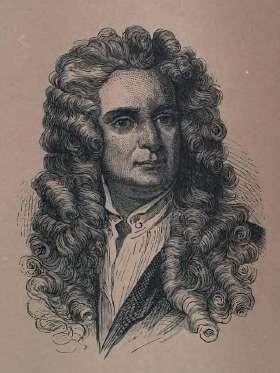
Mathematical Universe Hypothesis (MUH): External physical reality is a mathematical structure
Quarks → Come in three colours
Leptons, other Gauge Bosons γ, W±, Z0 → Don't carry colour
The Bohr model of a Carbon atom - 6 protons, 6 neutrons, and 6 electrons. It has 4 valence electrons.

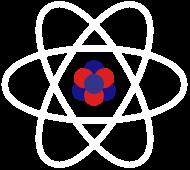
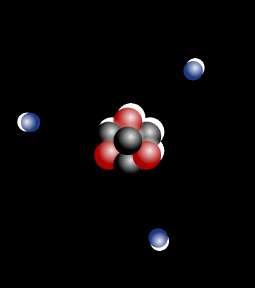
= uud
= udd
QCD vs. QED
QED → Quantum theory of electromagnetic interactions mediated by exchange of photons
178
Up quark has charge + 2 3 Down quark has charge –1 3 Quarks have spin 1 2
Proton
Neutron
223
QCD → Quantum theory of strong interactions mediated by exchange of gluons between quarks Galileo: No preferred observer cannot detect constant uniform motion by physical experiment.
Michelson, Morley, de Sitter: Speed of light same to all observers, independent of motion of the observer or the source.
"Henceforth space by itself, and time by itself, is doomed to fade away into mere shadows, and only a kind of union of the two will preserve independence."
When there is matter in a small region of space, the Ricci tensor will be non-zero there. But Ricci is zero in a vacuum.
Black Holes
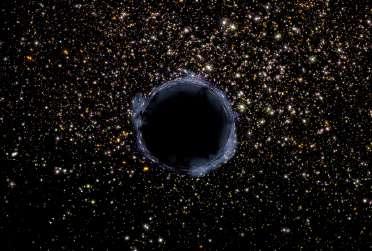
1783: John Michell
1796: Pierre Laplace
1916: Karl Schwarzschild
1930: Subrahmanyan Chandrasekhar
1939: J. Robert Oppenheimer
1968: John Wheeler
1930: Einstein still tried to prove they don't exist!
Hawking, Penrose, ...
Black Hole in a Globular Cluster
179
Hermann Minkowski, 1908
224
Quantum Chromodynamics is the theory that describes the interactions of quarks and gluons, which are the building blocks of protons and neutrons, the constituents of atomic nuclei. It is one of the most precisely tested theories in physics and has been extremely successful in explaining the behavior of light and matter. Despite its many successes in explaining the properties of hadrons (particles made up of quarks and gluons), Quantum Chromodynamics has some limitations and challenges. One of the main difficulties with Quantum Chromodynamics is its non-perturbative nature. Perturbative calculations, which are based on expanding the theory in a series of small corrections, are not possible for the strong force described by Quantum Chromodynamics. This makes it difficult to make precise quantitative predictions for many processes, such as the confinement of quarks inside hadrons.
Another challenge with Quantum Chromodynamics is the difficulty in solving its equations for the properties of hadrons. This is because Quantum Chromodynamics is a strongly interacting theory, and the equations are highly non-linear and difficult to solve exactly. As a result, most calculations are based on approximate methods, such as lattice Quantum Chromodynamics, which discretize space-time and allow the equations to be solved using numerical methods. In addition, the study of Quantum Chromodynamics at high temperatures and densities, such as those present in the early universe or in neutron stars, is still an active area of research. Although Quantum Chromodynamics has been successful in explaining the behavior of hadrons at low temperatures and densities, its predictions for the properties of quarks and gluons in these extreme conditions are not well understood.
Finally, Quantum Chromodynamics does not provide a natural explanation for the origin of the masses of the quarks and the Higgs boson, which is responsible for giving mass to other particles in the Standard Model of particle physics. This is an active area of research, and many extensions of the Standard Model have been proposed to address these questions. To sum up, despite its many successes, Quantum Chromodynamics still faces many challenges and open questions that remain to be explored.
225
Quantum Electrodynamics is a highly successful theory that has been extremely accurate in explaining the behavior of electrically charged particles and electromagnetic fields. However, there are a few limitations and areas where Quantum Electrodynamics is not applicable.
One of the main limitations of Quantum Electrodynamics is its applicability to strong electric fields. At high electric field strengths, Quantum Electrodynamics predicts the creation of electron-positron pairs from the vacuum, which leads to a breakdown of the theory. This phenomenon is known as vacuum decay, and it is not well understood.
Another area where Quantum Electrodynamics is not applicable is the unification of the electromagnetic force with the weak force. While Quantum Electrodynamics provides a successful description of the electromagnetic force, it does not include the weak force, which is responsible for processes such as beta decay. The unification of these two forces requires the use of a more complete theory, such as the electroweak theory.
Finally, Quantum Electrodynamics does not provide a complete explanation for the nature of dark matter and dark energy, which are believed to make up a significant fraction of the universe. Although Quantum Electrodynamics can be used to describe the behavior of electrically charged particles, it is not well suited for explaining the properties of these mysterious forms of matter and energy.
In essence, while Quantum Electrodynamics is a highly successful theory, it does have some limitations and does not provide a complete explanation for all physical phenomena. Nevertheless, it remains an important part of our understanding of the universe and continues to play a central role in the development of physics.
226
Gravitational waves → extremely weak
Stringent verification of General Relativity
Direct evidence of black holes
The everlasting goals of particle physics
What are the fundamental building blocks of Nature?
What are the interactions between them?
Where does the mass of the particles originate?
What is the structure of space and time?
What is dark matter? Or even dark energy?
Why is antimatter different from matter?
What is the universe made of?
What holds the universe together?
Where did we come from?
Particle physics is a modern name for centuries old effort to understand the laws of Nature
E. Witten (String Theorist)
Historical Landmarks of Particle Physics
1897: Electron discovered by J.J. Thompson
1899: Alpha particle discovered by Ernest Rutherford in uranium radiation
180
227
1900: Gamma ray (i.e. photon) discovered by Paul Villard in uranium decay.
1911: Atomic nucleus identified by Ernest Rutherford, based on scattering observed by Hans Geiger and Ernest Marsden.
1919: Proton discovered by Ernest Rutherford
1932: Neutron discovered by James Chadwick
1932: Positron discovered by Carl D. Anderson (proposed by Paul Dirac in 1927)
1937: Muon discovered by Seth Neddermeyer, Carl Anderson, J.C. Street, and E.C. Stevenson, using cloud chamber measurements of cosmic rays. (It was mistaken for the pion until 1946)
1947: Pion discovered by Cecil Powell (predicted by Hideki Yukawa in 1934)
1947: Kaon, the first strange particle, discovered by G.D. Rochester and C.C. Butler
1955: Antiproton discovered by Owen Chamberlain, Emilio Segre, Clyde Wiegand, and Thomas Ypsilantis
1956: Neutrino detected by Frederick Reines and Clyde Cowan (proposed by Wolfgang Pauli in 1931 to explain the apparent violation of energy conservation in beta decay)
1962: Muon neutrino proved distinct from electron neutrino by group headed by Leon Lederman
1964: Higgs boson predicted as a result of a mechanism for electroweak symmetry breaking proposed by Peter Higgs (remains hypothetical as of 2005, but widely expected to be found at the Large Hadron Collider at CERN in the early 2010s)
1969: Partons (internal constituents of hadrons) observed in deep inelastic scattering experiments between protons and electrons at SLAC; this was eventually associated with the quark model (predicted by Murray Gell-Mann and George Zweig in 1963) and thus constitutes the discovery of the up quark, down quark, and strange quark.
1974: J/Ψ particle discovered by groups headed by Burton Richter and Samuel Ting, demonstrating the existence of the charm quark (proposed by Sheldon Glashow, John Iliopoulos, and Luciano Maiani in 1970)
1975: Tau lepton discovered by group headed by Martin Perl
1977: Upsilon particle discovered at Fermilab, demonstrating the existence of the bottom quark (proposed by Kobiyashi and Maskawa in 1973)
1979: Gluon observed in three jet events at DESY.
181
228
1983: W and Z bosons discovered by Carlo Rubbia, Simon van der Meer, and the CERN UA-1 collaboration (widely expected, predicted in detail by Sheldon Glashow, Abdus Salam, and Steven Weinberg in the 1960s)
1995: Top quark discovered at Fermilab
2000: Tau neutrino proved distinct from other neutrinos at Fermilab
3 generations of quarks and leptons + force carriers
Essentially all data we have today agrees with Standard Model
The Standard Model:
Gauge Invariance
The Higgs Mechanism
Symmetries …
Despite all its successes, many questions unanswered by Standard Model – Why 3 generations, particle masses, why do the generations mix …
Are there still smaller particles?
The Large Hadron Collider will address these questions!
182
By convention ['nomos'] sweet is sweet, bitter is bitter, hot is hot, cold is cold, color is color; but in truth there are only atoms and the void.
Democritus
229
Bust of Democritus (c.460 - c.370 BC), Ancient Greek philosopher
Cosmological parameters are numerical values that describe the present state and evolution of the universe. Some of the most important cosmological parameters include:
Hubble Constant (H): The rate at which the universe is expanding, expressed in kilometers per second per megaparsec (km/s/Mpc).
Baryon Density (Ωb): The fraction of the universe's total mass-energy density that is composed of baryonic matter (i.e., protons, neutrons, and electrons).
Dark Matter Density (Ωdm): The fraction of the universe's total mass-energy density that is composed of dark matter, a mysterious substance that does not interact with light.
Dark matter is a mysterious and invisible form of matter that is believed to exist based on its gravitational effects on visible matter. Dark matter does not interact with light, so it cannot be directly observed with telescopes. However, its presence can be inferred through its gravitational influence on visible matter, such as stars and galaxies.
Astronomers believe that dark matter makes up approximately 27% of the universe's total mass-energy density, while visible matter (such as stars and galaxies) accounts for only a small fraction of this total. The existence of dark matter was first proposed in the 1930s to explain discrepancies between the observed mass of galaxies and their observed gravitational effects, and since then, multiple lines of evidence have supported its existence.
Despite its importance, the nature of dark matter remains one of the biggest mysteries in astrophysics, and many different theoretical models have been proposed to explain its properties and behavior. Ongoing research efforts are focused on directly detecting dark matter and understanding its role in the evolution of the universe.
Dark Energy Density (ΩΛ): The fraction of the universe's total mass-energy density that is composed of dark energy, a mysterious force that is causing the universe to accelerate its expansion.
Age of the Universe (tage): The time elapsed since the Big Bang, estimated to be approximately 13.8 billion years.
230
Size of the Universe (R0): The current size of the observable universe, estimated to be approximately 46.5 billion light-years.
These parameters are determined by a combination of observations and theoretical models, and they play a critical role in our understanding of the universe and its evolution.
The early universe refers to the period of time and events that occurred shortly after the Big Bang, which is believed to be the origin of the universe. Approximately 380,000 years after the Big Bang, the universe had cooled down enough to allow protons and electrons to combine and form hydrogen atoms. This marked the end of the "Dark Ages" of the universe, and the beginning of the "Cosmic Dawn".
As the universe continued to expand and cool, gravitation caused matter to condense and form the first galaxies and stars. This period, known as "Reionization", took place between roughly 400 million and one billion years after the Big Bang. It's estimated that the first galaxies formed approximately one billion years after the Big Bang, and the oldest known stars in the universe are about 13.2 billion years old.
These early stages in the development of the universe laid the foundation for the formation of the large-scale structures we see today, including galaxies, clusters, and superclusters of galaxies.
231
Planetary nebulae are clouds of gas and dust that are expelled by stars near the end of their lifetimes. It is a misconception to refer to them as "planetary nebulas" because they have nothing to do with planets. They got this name because early astronomers mistook these nebulae for planets due to their round shape. The process of forming a planetary nebula begins when a star with a mass similar to that of the Sun nears the end of its life. At this point, the star's core collapses and heats up, ionizing the surrounding gas and creating a glowing cloud of gas that shines brightly in ultraviolet and visible light.
The expanding gas in the nebula pushes against the surrounding interstellar medium, creating shocks that can compress and heat the gas, causing it to emit light in different colors. The colors seen in planetary nebulae are due to different elements in the gas emitting light at different wavelengths. The central star in a planetary nebula continues to shine, providing the energy that illuminates the nebula. Eventually, the central star will cool down and fade into a white dwarf, while the material in the nebula will disperse into the interstellar medium. Planetary nebulae are relatively short-lived, lasting only a few tens of thousands of years. However, they play an important role in the life cycle of stars and the evolution of galaxies, as they provide a source of heavy elements that can be recycled into future generations of stars and planets.
Brown dwarfs are celestial objects that are too small to sustain nuclear fusion reactions in their cores, which is the energy source that powers stars. They are intermediate in mass between the heaviest gas giants and the lightest stars, with a mass range of about 13 to 75 times that of Jupiter. Brown dwarfs have low luminosities and surface temperatures, and they emit most of their light in the infrared part of the spectrum. Due to their faintness, they are difficult to detect and study, but they are thought to be abundant in our Milky Way galaxy.
232
Force Carriers
EM → Long range ( 1 R2 )
Weak → Short range (10 21 m)
Strong → Short range (< 10 15 m)
Gravity → Long range ( 1 R2 )
EM + Weak + Strong + Gravity → make the Sun shine
Feynman diagrams: Powerful tool to write down scattering amplitudes (for higher order perturbations)
Feynman rules: Set of rules to get from a Feynman diagram to the mathematical expression
Small Fast
Classical mechanics
Relativistic mechanics
Quantum mechanics
Quantum field theory
The most basic mechanism of the Standard Model (does not include gravity), that of granting mass to particles remained a mystery for a long time
A major step forward was made in July 2012 with the discovery of what could be the longsought God particle Higgs boson!!
Five mysteries the Standard Model can't explain
Why do neutrinos have mass?
What is dark matter?
Why is there so much matter in the universe?
Why is the expansion of the universe accelerating?
Is there a particle associated with the force of gravity?
183
233
1 TeV = 1 Tera electron volt = 1012 electron volt
Physics targets
Origin of mass
Nature of Dark Matter
Understanding space time
Matter versus antimatter
Primordial plasma
LHC Facts:
Colder than the empty Space in the Universe: 1.9K i.e. above absolute zero
Hotter than in the sun: temperature in the collisions is a billion times the one in the centre of the sun λ = h p
As the momentum of a particle increases, its wavelength decreases, providing details of smaller and smaller structures.
Conservation laws → Fundamental symmetries in nature
In the study of particle interactions, it was found that certain interactions did not occur, even though they conserve energy and charge.
Proton + neutron → Proton + Proton + Antiproton
A new conservation law was proposed: the conservation of baryon number
There are 118 elements starting with hydrogen with atomic number 1 to Unounociam with atomic number 118
Of these elements up to Plutonium (atomic number 94) were formed naturally and the rest were synthesized in laboratory nuclear reactions.
184
234
Kinematic description of the Solar System (Kepler)
Dynamic description of the Solar System (Newton) → Development of celestial mechanics
1650's to 1700's → improvements in the telescope → more precise measurements of planet positions → more accurate tests to the theory of gravity
"I still remember a guy sitting on the couch, thinking very hard, and another guy standing in front of him, saying 'And therefore such-and-such is true.'
"'Why is that?' the guy on the couch asks.
"'It's trivial! It's trivial!' the standing guy says, and he rapidly reels off a series of logical steps: 'First you assume thus-and-so, then we have Kerchoff's this-and-that; then there's Waffenstoffer's Theorem, and we substitute this and construct that. Now you put the vector which goes around here and then thus-and-so...' The guy on the couch is struggling to understand all this stuff, which goes on at high speed for about fifteen minutes!
"Finally the standing guy comes out the other end, and the guy on the couch says, 'Yeah, yeah. It's trivial.'
"We physicists were laughing, trying to figure them out. We decided that 'trivial' means 'proved.' So we joked with the mathematicians: 'We have a new theorem - that mathematicians can only prove trivial theorems, because every theorem that's proved is trivial.'"
− Richard P. Feynman
Surely you're joking Mr. Feynman! (1985)
185
+
235
As the Universe cooled, it went from being radiation dominated (whose energy density was proportional to 1 (scalefactoroftheuniverse)4) to being matter dominated (whose energy density was proportional to 1 (scalefactoroftheuniverse)3)
Dark energy became more important as the Universe expanded.
"Of all the polygonal shapes that we could make by bolting together straight struts of metal, the triangle is special. It is the only one that is rigid.
If they were hinged at their corners, all the others can be flexed gradually into a different shape without bending the metal.
A square or a rectangular frame provides a simple example: we see that it can be deformed into a parallelogram without any buckling.
This is an important consideration if you aim to maintain structural stability in the face of winds and temperature changes. It is why pylons seem to be great totems to the god of all triangles."
John Barrow
When his friend Swiss/Italian engineer Michele Besso died in 1955, Einstein wrote a condolence letter to his family, including his now-famous quote:
"Now he has departed from this strange world a little ahead of me. That means nothing. People like us, who believe in physics, know that the distinction between past, present, and future is only a stubbornly persistent illusion."
Einstein died only one month and three days after his friend.
186
236
Particle A
Particle B
Boson exchange transmits force between two particles
Quantum effects + gravitational effects on the same size scales → Quantum gravity
Strong + electromagnetic + weak + gravity → quantum gravity (1032K)
Strong + electromagnetic + weak → superforce (1028K)
Electromagnetic + weak → electroweak (1015K)
The era of decoupling:
Nuclei + electrons → atoms
Electrons are no longer free
187
CMB released
237
Although dark matter does not interact directly with radiation, it will interact through the gravitational force, leading to tiny ripples in the CMB (which was predicted by George Gamow in 1948, accidentally discovered by Penzias and Wilson in 1965).
These ripples have now been observed.
Today's deuterium abundance tells us the average density of baryonic matter in the universe …
"The field of cosmology has a grand history of pushing back the boundary between physics and metaphysics. Decades ago, who would have thought that the origin of relative abundances of the different chemical elements would be considered the subject of physical calculation rather than metaphysical speculation! I have no doubt that we will find more opportunities to push the boundary back even further."
Andreas Albrecht (1994)
Neutron + proton → deuterium + energetic photon
Deuterium + energetic photon → Neutron + proton
The flatness problem: why is the universe so close to being flat today?
188
238
The horizon problem: why the cosmic microwave background (CMB) radiation is so uniform?
The monopole problem: where are the copious amounts of magnetic monopoles predicted to exist in the Big Bang cosmology?
"If you expect science to give all the answers to the wonderful questions about what we are, where we're going, what the meaning of the universe is... you could easily become disillusioned and look for a mystic answer... [W]e're exploring, trying to find out as much as we can about the world. People [ask], "Are you looking for the ultimate physics laws?" No, I'm not. I'm just looking to find out more about the world. If it turns out there is an ultimate law which explains everything, so be it; that would be very nice to discover. If it turns out it's like an onion, with millions of layers... then that's the way it is. But whatever way it comes out, it's nature, and she's going to come out the way she is! Therefore we shouldn't pre-decide what it is we're going to find, except to try to find out more. If you think that you are going to get an answer to some deep philosophical question, you may be wrong - it may be that you can't get an answer to that particular problem by finding out more about the character of nature. But I don't look at it like that; my interest in science is to find out more about the world, and the more I find out, the better."
189
Indian-American astrophysicist Subrahmanyan Chandrasekhar
Richard Feynman
239
"The view of science that [Newton] exhibits, the clarity with which he writes, the number of new things he finds, manifest a physical and mathematical insight of which there is no parallel in science at any time."
Third law of Black hole Thermodynamics:
It is impossible to reduce the surface gravity to zero by any physical process in a finite number of steps.
The energy of the oscillation of scale l is equal to E = ℏυ = ℏc �� (where c �� is the order of the oscillation frequency). The gravitational potential created by the mass m, at this length is φ= Gm �� , where G is the constant of universal gravitation.
The degree of deviation ζ of geometry from Euclidean geometry in the gravitational field is determined by the ratio of the gravitational potential φ and the square of the speed of light c:
=
massdensity×c2
baryonic
w =
Cold dark matter w =
Radiation w =
3 Dark energy w = −1 Planck length → √ℏG c3 ≈ 1.6 ×10−35 m → twenty
magnitude smaller
w
pressure
Ordinary
matter
0
0
1
orders of
than the size of a proton
φ= ��ℏ ��2c
m = E c2 = ℏ ��c
c
Plancklength
��
Total pressure = PR + PΛ = 4σT4 3c − ρΛ c2 240
ζ = φ
2 =
2
2
ζ = 1
Planck length → the length at which the Euclidean geometry is completely distorted
Strong Electromagnetic Weak Gravity
E + B Maxwell
QCD Electroweak Grand unification
E = mv2 2 − GMm R = m 2 (v2 − vescape 2 )
If v > vescape: E is positive
If v = vescape: E is 0
If v < vescape: E is negative
Ωm + ΩΛ ≈ 1
The process:
electron → electron + photon
cannot take place in vacuum, but can happen near a nucleus.
Baryon → three quark state
Meson → quark-antiquark pair
Universe is flat
electron + nucleus → electron + nucleus + photon
241
Classically, Power radiated by an accelerating charge ∝(acceleration)2
In quantum mechanics,
Probability of radiating a photon ∝(acceleration)2
Pair production process:
photon + nucleus → nucleus + electron + positron
e+ + e (electron pair) → γ (photon) → μ+ + μ (muon pair)
e+ + e (electron pair) → J/ψ → μ+ + μ (muon pair)
Gell-Mann–Nishijima formula:
electric charge = isospin + 1 2 (hypercharge)
hypercharge = baryon number + strangeness number + charm number + bottomness number + topness number
positively charged kaon + neutron → neutrally charged kaon + proton
negatively charged kaon + proton → neutrally charged antiparticle of kaon + neutron
242
In quark terms:
Λ particle → proton + negatively charged pion
π + + p → π+ + p (elastic scattering)
π + p → π + p (elastic scattering)
π + p → π0 + n (charge exchange)
d
The nuclear forces between the nucleons arise as a result of the virtual pions exchange and the interaction energy is given by:
where gNπ is the effective charge of the pseudoscalar pion-nucleon interaction and Mπ is the pion mass.
Schwinger effect
A static electric field of strength E in empty space can create virtual electron-positron (e+ e ) pairs. If the virtual electron-positron (e+ e ) pairs move apart from each other to a distance l, they will receive the energy leE from the electric field. If this energy ≥ 2mec2, the pair will become real and the particles will continue to move apart − thereby causing the decay of the electric field.
Probability of creating an e+ e pair ∝exp(− me 2
where e and me denote the charge and mass of electron.
)
sud → uud +
��
E = − gNπ 2 4πr exp (− Mπcr ℏ )
eE
243
A black hole of mass M cannot capture radiation with wavelength >> 2GM c2 . It follows that particle (real or virtual) with sufficiently small energies E ≪
3 8πGM might avoid falling into the black hole horizon.
The graviton's Compton wavelength is 1.6×1016 m, or about 1.6 lightyears, corresponding to a graviton mass of no more than 7.7×10−23 eV/c2 .
Leptons and quarks carry weak charge.
Color charge is only carried by quarks (not by leptons).
Proton mass = 1836.149 × electron mass
Neutron mass = 1838.679 × electron mass
The de-Broglie wave-length λ of a particle with momentum p is given by:
In QED, as in other quantum field theories, we can use the little pictures invented by my colleague Richard Feynman, which are supposed to give the illusion of understanding what is going on in quantum field theory.
− Murray Gell-Mann
ℏc
λ = h p = hc √E2 m0 2c4 = hc √(m0c2+Ekin)2 m0 2c4 λ = hc √2m0c2Ekin+Ekin 2
If Ekin << m0c2: λ ≈ h √2m0Ekin If Ekin >> m0c2: λ ≈ h Ekin
244
The masses of the light neutrinos Mν and the heavy neutrinos MN are related to the Dirac mass Mq by: Mν MN ≈ Mq 2
The P and C parities are conserved in the strong and in the electromagnetic interaction − but not in the weak interaction.
In Dirac theory the magnetic moment μ of a point particle with mass M and spin 1/2 is eℏ 2M Nature has always looked like a horrible mess, but as we go along we see patterns and put theories together; a certain clarity comes and things get simpler.
− Richard P. Feynman
Analogy is perhaps the physicist's most powerful conceptual tool for understanding new phenomena or opening new areas of investigation. Early in this century, for example, Ernest Rutherford and Niels Bohr conceived the atom as a miniature solar system in which electrons circle the nucleus as planets circle the sun.
− Valentine Telegdi
Allowed Forbidden p + μ → νμ + n p + μ → π0 + n e+ + e → νμ + νμ e+ + e → νμ + νe π → μ + νμ π → e + νe
245
Matter - Antimatter Asymmetry
M-theory: particles are excitations on high dimensional membranes (D-branes).
Bosonic string theory
26 dimensions (25 of them are spatial and 1 is time)
Superstring theory
10 dimensions (9 + 1)
Supersymmetry → a symmetry that relates bosons and fermions
Strings with this symmetry → superstrings
190
Matter Particles 10,000,000,001 Antimatter Particles 10,000,000,000 246
Guitar string
Different vibration → Different sound!
Fundamental string
Different vibration → Different particles!
"The strongest arguments prove nothing so long as the conclusions are not verified by experience."
−Roger Bacon
Supersymmetry + gravity → SUPERGRAVITY
Fermions acquire mass by Yukawa couplings to the Higgs field
"[T]he reward for harnessing Albert Einstein’s general theory of relativity is nothing less than the key to understanding the history of the universe, the origin of time, and the evolution of all the stars and galaxies in the cosmos. General relativity can tell us about what lies at the farthest reaches of the universe and explain how that knowledge affects our existence here and now. Einstein’s theory also sheds light on the smallest scales of existence, where the highest-energy particles can come into being out of nothing. It can explain how the fabric of reality, space, and time emerges to become the backbone of nature."
Pedro Ferreira
191
247
Planck scale → universal limit beyond which the currently known laws of physics break
We need new unbreakable physics
"Though I knew Einstein for two or three decades, it was only in the last decade of his life that we were close colleagues and something of friends. But I thought that it might be useful because I am sure that it is not too soonand for our generation perhaps almost too late - to start to dispel the clouds of myth and to see the great mountain peak that these clouds hide. As always, the myth has its charms; but the truth is far more beautiful."
−Robert Oppenheimer
"The views of space and time which I wish to lay before you have sprung from the soil of experimental physics, and therein lies their strength. They are radical. Henceforth, space by itself, and time by itself, are doomed to fade away into mere shadows, and only a kind of union of the two will preserve an independent reality."
Hermann Minkowski
Baryon number = 1 3 × quark number
Particles without any quarks have a baryon number of zero. Such particles are
leptons the electron, muon, tauon, and their corresponding neutrinos
vector bosons the photon, W and Z bosons, gluons
Higgs boson the only known fundamental scalar boson
graviton a hypothetical tensor boson
192
248

249
Pre-main sequence is the phase of a star's evolution that takes place before it reaches the main sequence on the Hertzsprung-Russell (HR) diagram. During this phase, a star contracts and increases in temperature, luminosity, and size as it approaches the main sequence. The pre-main sequence phase can last for millions to tens of millions of years, depending on the mass of the star. In the beginning of the premain sequence phase, the star is still forming from the collapse of a molecular cloud. As the cloud collapses, its center becomes denser and hotter, and it eventually becomes hot enough to initiate nuclear fusion reactions. During this phase, the star is still surrounded by a circumstellar disk of gas and dust, from which planets and other celestial objects may form. The disk also provides the material for accretion onto the star, allowing it to increase in mass and luminosity.
As the star continues to contract and heat up, it begins to radiate more energy, primarily from the release of gravitational potential energy. This causes the star's outer layers to expand, and its luminosity increases significantly. The star's temperature also increases, and it begins to emit more light in the ultraviolet part of the spectrum.
As the pre-main sequence phase continues, the star's core temperature increases, and it becomes hot enough to initiate hydrogen fusion reactions. At this point, the star reaches the main sequence and begins to burn hydrogen to helium, which provides a stable source of energy for billions of years to come. In essence, the premain sequence phase is an important stage in a star's evolution, characterized by significant changes in size, temperature, and luminosity. It is also a crucial stage for the formation of planetary systems, as the circumstellar disk provides the material for the formation of planets and other celestial objects.
250
Starspots are dark, cooler regions on the surface of stars that appear as areas of reduced brightness. They are caused by magnetic fields that inhibit the flow of hot plasma and cause a localized reduction in temperature on the star's surface. Starspots are most commonly observed on rapidly rotating, active stars and are often found in groups or clusters.
Starspots play an important role in our understanding of the magnetic activity of stars and its effects on the star's atmosphere and environment. They are often used to study the rotation and dynamo processes of stars, as well as to determine the ages of stars through the measurement of their rotation periods.
Starspots can also be used to study the atmospheres of exoplanets. By observing changes in a star's brightness due to the transit of a planet across a starspot, scientists can infer information about the planet's atmospheric composition and structure. In essence, starspots are regions on the surface of stars that appear as areas of reduced brightness due to magnetic fields inhibiting the flow of hot plasma and causing a localized reduction in temperature. They play an important role in our understanding of the magnetic activity of stars and its effects on their atmospheres and environments.
Galacticocentricity refers to a perspective that considers the Milky Way Galaxy as the center of the universe. This is opposed to a heliocentric perspective, which considers the sun as the center of the solar system, or a geocentric perspective, which considers the earth as the center of the universe. Galacticocentricity is a scientifically outdated concept, as modern astronomy recognizes that there is no single center to the universe, and that it is expanding in all directions.
251
The geocentric model is an ancient model of the universe in which the Earth is at the center of the universe and all other celestial objects, including the Sun, Moon, planets, and stars, revolve around it. This model was first proposed by the ancient Greek philosopher Ptolemy in the 2nd century AD and was widely accepted for over a thousand years. In the geocentric model, the Earth was thought to be fixed in place and the celestial objects were thought to move in perfect circles around it. This model explained the apparent daily motion of the stars and the changing positions of the Sun, Moon, and planets.
Despite being widely accepted, Copernicus' heliocentric theory, which put the Sun at the centre of the cosmos and the Earth and other planets revolving around it, eventually, overcame the geocentric theory. This model was eventually accepted as the correct explanation of the motions of celestial objects, and the geocentric model was discredited. In essence, the geocentric model is an ancient model of the universe in which the Earth is at the center of the universe and all other celestial objects revolve around it. It was widely accepted for over a thousand years but was eventually challenged and replaced by the heliocentric model.

252
1660 geocentric model chart
The inflationary Big Bang is a scientific theory that explains the rapid expansion of the universe in the fraction of a second following the Big Bang. According to the theory, the universe underwent a phase of exponential expansion, causing it to increase in size by a factor of at least 1026. This rapid expansion smoothed out matter and energy, leading to the homogeneous universe we observe today. The theory was proposed to solve several problems in cosmology, such as the horizon problem and the flatness problem, and has been supported by numerous observational and experimental evidence.
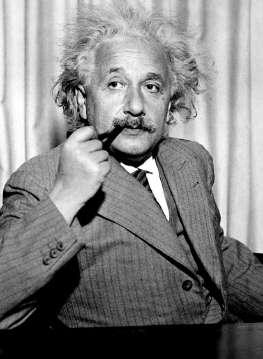

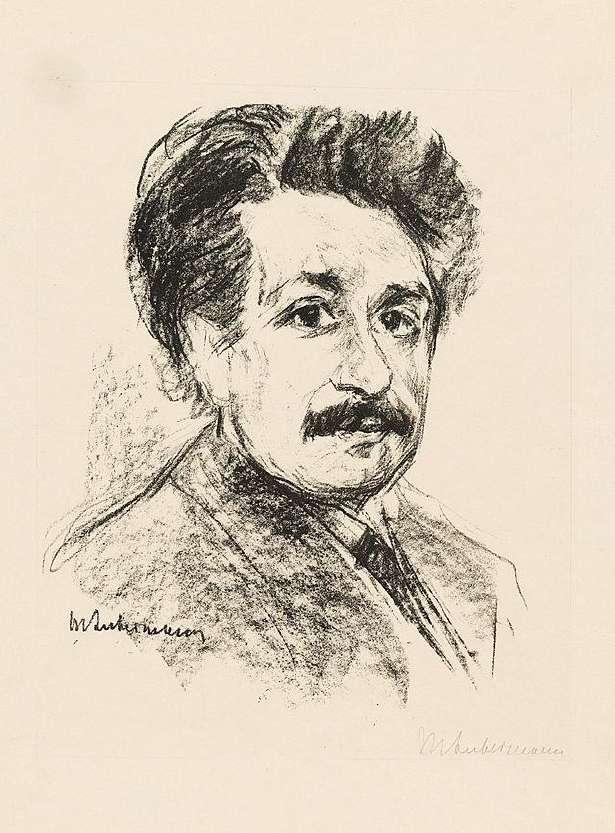
253
If dark energy behaves as Lambda, what is its physics?
Wormholes → theoretical passages through space-time
"Master craftspeople and seers come to science for different reasons. Master craftspeople go into science because they have discovered in school that they're good at it. They are usually the best students in their math and physics classes from junior high school all the way up to graduate school, where they meet their peers. They have always [solved] math problems faster and more accurately than their classmates, so problem-solving is what they tend to value.
Seers are very different. They are dreamers. They go into science because they have questions about the nature of existence that schoolbooks don't answer. If they weren't scientists, they might be artists or writers, or might end up in divinity school."
−Lee Smolin
Era of Nucleosynthesis: (0.001 sec <time <3 min)

(1012 K< Temperature < 109 K)
The enormous inflation "stretches out" the curvature of space, making it flat
193
Beginning of Universe Beginning of TIME 254
Big Bang Theory + Inflation → pretty good (although still not complete) picture of the early moments of the Universe
"Mathematics, rightly viewed, possesses not only truth, but supreme beauty - a beauty cold and austere, like that of sculpture, without appeal to any part of our weaker nature, without the gorgeous trappings of painting or music, yet sublimely pure, and capable of a stern perfection such as only the greatest art can show. The true spirit of delight, the exaltation, the sense of being more than Man, which is the touchstone of the highest excellence, is to be found in mathematics as surely as poetry."
Bertrand Russell
Robert Oppenheimer's Letter of Recommendation for Richard Feynman (1943) to the chairman of UC Berkeley:
"Dear Professor Birge, [...] I would like to make one suggestion to you... about which I have... a strong conviction. [...] We have [many] physicists here... Of these, there is one who [...] is so outstanding and so clearly recognized as such, that I think it appropriate to call his name to your attention, with the urgent request that you consider him for a position [...] at the earliest time that that is possible [...]. [I]t is Richard Feynman. He is [...] the most brilliant young physicist here, and everyone knows this.
The reason for telling you [this] is that his excellence is [very] well known [...] to [several] of the “big shots” on the project... I may give you 2 quotations from men with whom he has worked. Bethe said he would rather lose any 2 other men than Feynman from this job, and Wigner said, “He is a 2nd Dirac, only this time human.” [...] I cannot too strongly emphasize Feynman’s personal qualities which have been generally recognized by officers, scientists, and laity in this community."
The principle of relativity: The laws of physics are the same in all inertial systems. There is no way to detect absolute motion, and no preferred inertial system exists.
The constancy of the speed of light: Observers in all inertial systems measure the same value for the speed of light in a vacuum.
194
255
The physicist, mathematician, and futurist, Freeman Dyson wrote in a letter to his parents this beautiful description of the complex personality of Richard Feynman:
"Feynman is the young American professor, half genius and half buffoon, who keeps all physicists and their children amused with his effervescent vitality. He has, however, as I have recently learned, a great deal more to him than that, and you may be interested in his story. The part of it with which I am concerned began when he arrived at Los Alamos; there he found and fell in love with a brilliant and beautiful girl, who was tubercular and had been exiled to New Mexico in the hope of stopping the disease. When Feynman arrived, things had got so bad that the doctors gave her only a year to live, but he determined to marry her and marry her he did; and for a year and a half, while working at full pressure on the Project, he nursed her and made her days cheerful. She died just before the end of the war.
I was wrong when I wrote that Feynman found his wife Arlene in New Mexico. He married her first in a city hall on Staten Island and then took her with him to New Mexico. The story is movingly told by Feynman in the book What Do You Care What Other People Think? (1988), the title being a quote from Arlene.
As Feynman says, anyone who has been happily married once cannot long remain single, and so yesterday we were discussing his new problem, this time again a girl in New Mexico with whom he is desperately in love. This time the problem is not tuberculosis, but the girl is a Catholic. You can imagine all the troubles this raises, and if there is one thing Feynman could not do to save his soul, it is to become a Catholic himself. So we talked and talked and sent the sun down the sky and went on talking in the darkness. At the end of it, Feynman was no nearer to the solution of his problems, but it must have done him good to get them off his chest. I think that he will marry the girl and that it will be a success, but far be it from me to give advice to anybody on such a subject."
(March 8, 1948)
Special relativity + Quantum mechanics → Relativistic electrodynamics (very precise and high successful)
Quantum mechanics + gravity → Theories of quantum gravity (many theories, but no data to test them)
Electromagnetism + Quantum mechanics + gravity → Planck scale of mass, length and time (no data)
195
256
Einstein's relativistic law:
If m → Planck mass =
:
rS → Schwarzschild radius of the particle
λC → reduced Compton wavelength of the particle
v → velocity a particle must travel so that its relativistic mass to be equal to Planck mass
Quantum entanglement → transmission of information between two particles or objects at infinite speed (or, at least, faster than the speed of light)
196
m = m0 √1 v2 c2 m2 (c2 v2) = m0 2c2
√ħc G
(c2 v2) = Gm0 2c ħ v = c √1− rS 2λC
257
μe is the average molecular weight per electron, which depends upon the chemical composition of the star.
ω0 3 ≈ 2.018236 is a constant connected with the solution to the Lane–Emden equation
Maximum mass of a stable white dwarf star
A 1.4 Msun neutron star would consist of 14Msun mneutron ≈ 1057 neutrons
If Mstar = Mlimit: the speed of electrons is comparable to the speed of light, and thus relativity plays an essential role.
The absolute value of the gravitational potential energy, U, between two equal masses (each mass is denoted by m) separated by a distance r is given by: U = Gm
mass
Mlimit = ѡ3 0√3π 2 × 1 μe × (Planckmass)3 (protonmass)2
Chandrasekhar
limit:
mc2 2 = Gm2
2 r If U = mc2 2 :
r
258
"Three principles the conformability of nature to herself, the applicability of the criterion of simplicity, and the "unreasonable effectiveness" of certain parts of mathematics in describing physical reality are thus consequences of the underlying law of the elementary particles and their interactions. Those three principles need not be assumed as separate metaphysical postulates. Instead, they are emergent properties of the fundamental laws of physics."
Murray Gell-Mann
The absolute value of the electrostatic potential energy, U, between two electrons separated by a distance
"I have sometimes wondered whether a brain like von Neumann's does not indicate a species superior to that of man."
Hans Bethe
198 r = 2Gm c2 = Schwarzschild
radius of the mass m
U = e2 4πε0r If U = mec2: mec2 = e2 4πε0r r = e2 4πε0mec2 = classical electron radius
r:
259
The absolute value of the gravitational force, F, between two equal masses (each mass is denoted by m) separated by a distance r is given by:
F = Gm2
r2
If F = Planckforce 4 :
c4 4G = Gm2
r2
r = 2Gm c2 = Schwarzschild radius of the mass m
"[The function] resembles the outer edge of the finest of needles, pointing vertically upwards from its base. Away from that base, [its] numerical value is zero, but its height is such that the area enclosed between the perimeter and the base is one unit."
Tough Dirac acknowledged that the function was unrigorous, he noted it could be used 'as though it were a proper function for practically all purposes in quantum mechanics.'
Later, he remarked that his study of engineering led him to it:
"I think it was that sort of training that gave me the idea of the delta function because when you think of load in engineering structures, sometimes you have a distributed load, and sometimes you have a concentrated load at the point. It is [...] the same whether you have a concentrated load or a distributed one, but you use somewhat different equations in the two cases. [I]t's only to unify these two things which sort of led to the delta function."
Graham Farmelo
199
260
The absolute value of the electrostatic potential energy, U, between two electrons separated by a distance r:
The Norwegian mathematician Niels Henrik Abel died at the tragically young age of 26 years old of tuberculosis.
During his short life, he suffered from poverty, starvation, and painful frustration while trying hopelessly to find a university teaching position.
Abel made a multitude of fundamental contributions to various fields of mathematics, the most famous one probably being the proof of the impossibility of solving quintic equations in terms of radicals (independently of the work of the French mathematician Évariste Galois). Today, anyone who reads books on advanced mathematics will find his name in several theorems and theories.
The great French mathematician Charles Hermite said about Abel:
200
U = e2 4πε0r r = e2 4πε0U If r = Gme c2 = Schwarzschildradiusoftheelectron 2 : Gme c2 = e2 4πε0U U = Planck force × classical electron radius
261
"He has left mathematicians something to keep them busy for five hundred years."
In a famous letter to Winteler the great scientist Albert Einstein wrote:
"Unthinking respect for authority is the greatest enemy of truth."
Schwarzschild radius: Rs = 2GM c2
If Rs = Planck length:
Wien's displacement law:
If λpeak = Planck length:
Għ
3 = 2GM c2 M= Planckmass 2
= hc 4.9651kB
= 2π 4.9651 × Planck temperature T = 1.264 × Planck temperature
201
√
c
T
λpeak
262
T
If Newton's Gravity isn't true, why do we still use it?
It's a good approximation for most engineering applications.
12 free nucleons
12C nucleus
(High entropy) (Low entropy)
1 solar mass ≈ 2 ×1033 g ≈1060 MeV
Neutron decay: Neutron → proton + electron + antineutrino
If N is the number of free neutrons, then the rate of neutrons decays:
dN
dt = k N
Here k is the decay constant, which represents the rate at which neutrons tend to decay
When kBT >> 0.8 MeV, then the above reaction is reversible.
When kBT ≈ 0.8 MeV, then the above reaction is no longer reversible.
Red stars → relatively cool.
A yellow star, such as our own sun, is hotter.
A blue star → very hot
202
263
"Open universe" → not much gravity, expands forever "Closed universe" → gravity strong enough to reverse the expansion
Parity is not conserved in weak interactions
The weak force is mediated by the W± and Z0 particles, which have large masses, and so only interact over ∼ 10 18 m
Laws of nature have an electroweak symmetry; vacuum has only an electromagnetic symmetry.
"Feynman subjected [all] forms of science to the same scrutiny... He had developed ways of illustrating the slippage that occurred when experimenters... failed to appreciate the power of coincidence...
He [criticized] a common experience [when] the experimenter calculates the odds against something so extraordinary and decides it cannot have been an accident... [He] would tell a story from his days at MIT:
'I was upstairs typewriting a theme on something about philosophy. And I was completely engrossed, not thinking of anything but the theme when all of a sudden in a most mysterious fashion there swept through my mind the idea: my grandmother has died [...] Immediately after that, the telephone rang downstairs. I remember this distinctly for the reason you will now hear...
It was for somebody else. My grandmother was perfectly healthy, and there's nothing to it.
203
Now what we have to do is accumulate a large number of these to fight the few cases when it could happen.'"
264
James Gleick
"There are [many] categories of scientists; those of 2nd or 3rd rank [...] never get very far. Then there is the 1st rank, those who make important discoveries [...]. But then there are the geniuses, like Galileo and Newton. Majorana was one of these."
Enrico Fermi
N → number of electron charges that make up one Planck charge
"It was a real shock for Bohr...who, at first, could not think of a solution [...] [H]e couldn't come up with any way to resolve the paradox. I will never forget the image of the two antagonists as they left the club: Einstein, with his tall and commanding figure, who walked tranquilly, with a mildly ironic smile, and Bohr who trotted along beside him, full of excitement..."
Leo Rosenfeld
204
Q = Ne Q2 = N2 e2
4πε0ħc = N2 e2 N = √reducedComptonwavelengthoftheelectron classicalelectronradius
If Q = Planck charge:
265
outgassing
The release of gases from a planet's interior
Planetesimals Small bodies that are formed from the solar nebula and eventually grew into protoplanets
precession
The slow change in the direction of Earth's axis of rotation
1
��(ε μ)/kBT+0
1
��(ε μ)/kBT+1
1
��(ε μ)/kBT 1
Classical (Maxwell-Boltzmann statistics)
Fermions (Fermi-Dirac statistics)
Bosons (Bose-Einstein statistics)
µ is the chemical potential
The flow of high-energy particles that carries most of the energy away from a spinning neutron star Roche limit If a satellite's orbit brings it within its planet's Roche limit, tidal forces will pull the satellite apart.
pulsar wind
Roche lobe
In a system with two bodies orbiting each other, the volume of space dominated by the gravitation of one of the bodies
Roche surface In a system with two bodies orbiting each other, the outer boundary of the volume of space dominated by the gravitation of one of the bodies
Self-sustaining star formation
The process by which the birth of stars compresses the neighboring clouds of gas and triggers the formation of more stars
nε ∝
266
spectral sequence
The arrangement of spectral classes (O, B, A, F, G, K, M) ranging from hot to Cool. O class stars are high temperature stars and M class stars are low temperature stars.
Spectrum is an arrangement of electromagnetic radiation in order of wavelength = speedoflight frequency
THE
UNIVERSE IS NOT MADE OF ATOMS. IT
sunspot
Dark spot on the sun that contains intense magnetic fields
supernova (type I) The violent explosion of a star in which the spectrum contains no hydrogen lines
supernova (type Ia) The explosion of a star caused by the collapse of a white dwarf that has gained mass from its binary companion and exceeds the Chandrasekhar limit
supernova (type Ib) The explosion of a massive star that develops an iron core and collapses after it has lost its outer layers of hydrogen
supernova (type II)
tidal heating
The explosion of a massive star that develops an iron core and collapses
The heating of a planet or satellite because of friction caused by tides transition The movement of an electron from one atomic orbit to another
21-cm radiation
triple alpha process
Y dwarf
Radio emission produced by cold, low-density hydrogen in interstellar space
The nuclear fusion process that combines three helium nuclei (alpha particles) to make one carbon nucleus.
A spectral class of brown dwarf with temperature below 500 K IS MADE OF TINY STORIES.
267
High to low temperature sequence
Nobel Prizes in physics
The Nobel Prize in Physics 2015
Takaaki Kajita and Arthur B. McDonald
"for the discovery of neutrino oscillations, which shows that neutrinos have mass"
The Nobel Prize in Physics 2014
Isamu Akasaki, Hiroshi Amano and Shuji Nakamura
"for the invention of efficient blue light-emitting diodes which has enabled bright and energy-saving white light sources"
The Nobel Prize in Physics 2013
François Englert and Peter W. Higgs
"for the theoretical discovery of a mechanism that contributes to our understanding of the origin of mass of subatomic particles, and which recently was confirmed through the discovery of the predicted fundamental particle, by the ATLAS and CMS experiments at CERN's Large Hadron Collider"
The Nobel Prize in Physics 2012
Serge Haroche and David J. Wineland
"for ground-breaking experimental methods that enable measuring and manipulation of individual quantum systems"
The Nobel Prize in Physics 2011
Saul Perlmutter, Brian P. Schmidt and Adam G. Riess
"for the discovery of the accelerating expansion of the Universe through observations of distant supernovae"
The Nobel Prize in Physics 2010
Andre Geim and Konstantin Novoselov
"for groundbreaking experiments regarding the two-dimensional material graphene"
The Nobel Prize in Physics 2009
231
268
Charles Kuen Kao
"for groundbreaking achievements concerning the transmission of light in fibers for optical communication"
Willard S. Boyle and George E. Smith
"for the invention of an imaging semiconductor circuit - the CCD sensor"
The Nobel Prize in Physics 2008
Yoichiro Nambu
"for the discovery of the mechanism of spontaneous broken symmetry in subatomic physics"
Makoto Kobayashi and Toshihide Maskawa
"for the discovery of the origin of the broken symmetry which predicts the existence of at least three families of quarks in nature"
The Nobel Prize in Physics 2007
Albert Fert and Peter Grünberg
"for the discovery of Giant Magnetoresistance"
The Nobel Prize in Physics 2006
John C. Mather and George F. Smoot
"for their discovery of the blackbody form and anisotropy of the cosmic microwave background radiation"
The Nobel Prize in Physics 2005
Roy J. Glauber
"for his contribution to the quantum theory of optical coherence"
John L. Hall and Theodor W. Hänsch
"for their contributions to the development of laser-based precision spectroscopy, including the optical frequency comb technique"
The Nobel Prize in Physics 2004
232
269
David J. Gross, H. David Politzer and Frank Wilczek
"for the discovery of asymptotic freedom in the theory of the strong interaction"
The Nobel Prize in Physics 2003
Alexei A. Abrikosov, Vitaly L. Ginzburg and Anthony J. Leggett
"for pioneering contributions to the theory of superconductors and super fluids"
The Nobel Prize in Physics 2002
Raymond Davis Jr. and Masatoshi Koshiba
"for pioneering contributions to astrophysics, in particular for the detection of cosmic neutrinos"
Riccardo Giacconi
"for pioneering contributions to astrophysics, which have led to the discovery of cosmic X-ray sources"
The Nobel Prize in Physics 2001
Eric A. Cornell, Wolfgang Ketterle and Carl E. Wieman
"for the achievement of Bose-Einstein condensation in dilute gases of alkali atoms, and for early fundamental studies of the properties of the condensates"
The Nobel Prize in Physics 2000
"for basic work on information and communication technology"
Zhores I. Alferov and Herbert Kroemer
"for developing semiconductor heterostructures used in high-speed- and opto-electronics"
Jack S. Kilby

"for his part in the invention of the integrated circuit"

The Nobel Prize in Physics 1999
Gerardus 't Hooft and Martinus J.G. Veltman
"for elucidating the quantum structure of electroweak interactions in physics"
The Nobel Prize in Physics 1998
Robert B. Laughlin, Horst L. Störmer and Daniel C. Tsui
"for their discovery of a new form of quantum fluid with fractionally charged excitations"
The Nobel Prize in Physics 1997
177
270
Compton in 1927
Steven Chu, Claude Cohen-Tannoudji and William D. Phillips
"for development of methods to cool and trap atoms with laser light"
The Nobel Prize in Physics 1996
David M. Lee, Douglas D. Osheroff and Robert C. Richardson
"for their discovery of super fluidity in helium-3"
The Nobel Prize in Physics 1995
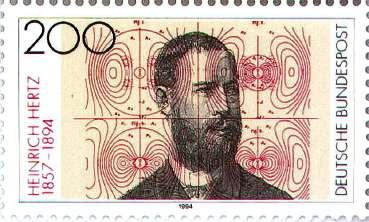
"for pioneering experimental contributions to lepton physics"
Martin L. Perl
"for the discovery of the tau lepton"
Frederick Reines
"for the detection of the neutrino"
The Nobel Prize in Physics 1994
"for pioneering contributions to the development of neutron scattering techniques for studies of condensed matter"
Bertram N. Brockhouse
"for the development of neutron spectroscopy"
Clifford G. Shull
"for the development of the neutron diffraction technique"
The Nobel Prize in Physics 1993
Russell A. Hulse and Joseph H. Taylor Jr.
"for the discovery of a new type of pulsar, a discovery that has opened up new possibilities for the study of gravitation"
The Nobel Prize in Physics 1992
Georges Charpak
"for his invention and development of particle detectors, in particular the multiwire proportional chamber"

The Nobel Prize in Physics 1991
Pierre-Gilles de Gennes
"for discovering that methods developed for studying order phenomena in simple systems can be generalized to more complex forms of matter, in particular to liquid crystals and polymers"
178
271
Heinrich Rudolf Hertz
The Nobel Prize in Physics 1990
Jerome I. Friedman, Henry W. Kendall and Richard E. Taylor
"for their pioneering investigations concerning deep inelastic scattering of electrons on protons and bound neutrons, which have been of essential importance for the development of the quark model in particle physics"
The Nobel Prize in Physics 1989
Norman F. Ramsey
"for the invention of the separated oscillatory fields method and its use in the hydrogen maser and other atomic clocks"
Hans G. Dehmelt and Wolfgang Paul
"for the development of the ion trap technique"
The Nobel Prize in Physics 1988
Leon M. Lederman, Melvin Schwartz and Jack Steinberger
"for the neutrino beam method and the demonstration of the doublet structure of the leptons through the discovery of the muon neutrino"
The Nobel Prize in Physics 1987
J. Georg Bednorz and K. Alexander Müller
"for their important break-through in the discovery of superconductivity in ceramic materials"
The Nobel Prize in Physics 1986
Ernst Ruska
"for his fundamental work in electron optics, and for the design of the first electron microscope"
Gerd Binnig and Heinrich Rohrer
"for their design of the scanning tunneling microscope"
The Nobel Prize in Physics 1985
Klaus von Klitzing
"for the discovery of the quantized Hall effect"
The Nobel Prize in Physics 1984
Carlo Rubbia and Simon van der Meer
"for their decisive contributions to the large project, which led to the discovery of the field particles W and Z, communicators of weak interaction"
272
The Nobel Prize in Physics 1983
Subramanyan Chandrasekhar
"for his theoretical studies of the physical processes of importance to the structure and evolution of the stars"
William Alfred Fowler
"for his theoretical and experimental studies of the nuclear reactions of importance in the formation of the chemical elements in the universe"
The Nobel Prize in Physics 1982
Kenneth G. Wilson
"for his theory for critical phenomena in connection with phase transitions"
The Nobel Prize in Physics 1981
Nicolaas Bloembergen and Arthur Leonard Schawlow
"for their contribution to the development of laser spectroscopy"
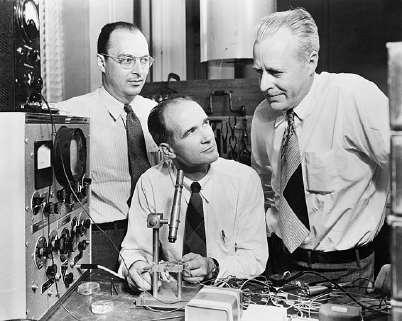
Kai M. Siegbahn
"for his contribution to the development of high-resolution electron spectroscopy"
The Nobel Prize in Physics 1980
James Watson Cronin and Val Logsdon Fitch
"for the discovery of violations of fundamental symmetry principles in the decay of neutral K-mesons"
The Nobel Prize in Physics 1979
Sheldon Lee Glashow, Abdus Salam and Steven Weinberg
"for their contributions to the theory of the unified weak and electromagnetic interaction between elementary particles, including, inter alia, the prediction of the weak neutral current"
The Nobel Prize in Physics 1978
Pyotr Leonidovich Kapitsa
"for his basic inventions and discoveries in the area of low-temperature physics"
Arno Allan Penzias and Robert Woodrow Wilson
"for their discovery of cosmic microwave background radiation"
The Nobel Prize in Physics 1977
Philip Warren Anderson, Sir Nevill Francis Mott and John Hasbrouck van Vleck
180
273
John Bardeen, William Shockley, and Walter Brattain are shown in a 1948 photograph as the transistor's creators (from left to right).
"for their fundamental theoretical investigations of the electronic structure of magnetic and disordered systems"
The Nobel Prize in Physics 1976
Burton Richter and Samuel Chao Chung Ting
"for their pioneering work in the discovery of a heavy elementary particle of a new kind"
The Nobel Prize in Physics 1975
Aage Niels Bohr, Ben Roy Mottelson and Leo James Rainwater
"for the discovery of the connection between collective motion and particle motion in atomic nuclei and the development of the theory of the structure of the atomic nucleus based on this connection"
The Nobel Prize in Physics 1974
Sir Martin Ryle and Antony Hewish
"for their pioneering research in radio astrophysics: Ryle for his observations and inventions, in particular of the aperture synthesis technique, and Hewish for his decisive role in the discovery of pulsars"
The Nobel Prize in Physics 1973
Leo Esaki and Ivar Giaever
"for their experimental discoveries regarding tunneling phenomena in semiconductors and superconductors, respectively"
Brian David Josephson
"for his theoretical predictions of the properties of a super current through a tunnel barrier, in particular those phenomena which are generally known as the Josephson effects"
The Nobel Prize in Physics 1972
John Bardeen, Leon Neil Cooper and John Robert Schrieffer
"for their jointly developed theory of superconductivity, usually called the BCS-theory"
The Nobel Prize in Physics 1971
Dennis Gabor
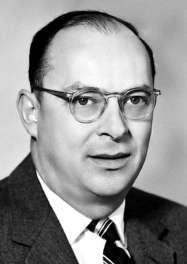
"for his invention and development of the holographic method"
The Nobel Prize in Physics 1970
Hannes Olof Gösta Alfvén
181
274
John Bardeen
"for fundamental work and discoveries in magnetohydrodynamics with fruitful applications in different parts of plasma physics"
Louis Eugène Félix Néel
"for fundamental work and discoveries concerning antiferromagnetism and ferrimagnetism which have led to important applications in solid state physics"
The Nobel Prize in Physics 1969
Murray Gell-Mann
"for his contributions and discoveries concerning the classification of elementary particles and their interactions"
The Nobel Prize in Physics 1968
Luis Walter Alvarez
"for his decisive contributions to elementary particle physics, in particular the discovery of a large number of resonance states, made possible through his development of the technique of using hydrogen bubble chamber and data analysis"
The Nobel Prize in Physics 1967
Hans Albrecht Bethe
"for his contributions to the theory of nuclear reactions, especially his discoveries concerning the energy production in stars"
The Nobel Prize in Physics 1966
Alfred Kastler
"for the discovery and development of optical methods for studying Hertzian resonances in atoms"
The Nobel Prize in Physics 1965
Sin-Itiro Tomonaga, Julian Schwinger and Richard P. Feynman
"for their fundamental work in quantum electrodynamics, with deep-ploughing consequences for the physics of elementary particles"
The Nobel Prize in Physics 1964
Charles Hard Townes, Nicolay Gennadiyevich Basov and Aleksandr Mikhailovich Prokhorov
"for fundamental work in the field of quantum electronics, which has led to the construction of oscillators and amplifiers based on the maser-laser principle"
182
275
The Nobel Prize in Physics 1963
Eugene Paul Wigner
"for his contributions to the theory of the atomic nucleus and the elementary particles, particularly through the discovery and application of fundamental symmetry principles"
Maria Goeppert Mayer and J. Hans D. Jensen
"for their discoveries concerning nuclear shell structure"
The Nobel Prize in Physics 1962
Lev Davidovich Landau
"for his pioneering theories for condensed matter, especially liquid helium"
The Nobel Prize in Physics 1961
Robert Hofstadter
"for his pioneering studies of electron scattering in atomic nuclei and for his thereby achieved discoveries concerning the structure of the nucleons"
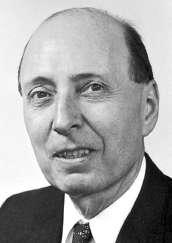
Rudolf Ludwig Mössbauer
"for his researches concerning the resonance absorption of gamma radiation and his discovery in this connection of the effect which bears his name"
The Nobel Prize in Physics 1960
Donald Arthur Glaser
"for the invention of the bubble chamber"
The Nobel Prize in Physics 1959
Emilio Gino Segrè and Owen Chamberlain
"for their discovery of the antiproton"
The Nobel Prize in Physics 1958
Pavel Alekseyevich Cherenkov, Il´ja Mikhailovich Frank and Igor Yevgenyevich Tamm
"for the discovery and the interpretation of the Cherenkov effect"
The Nobel Prize in Physics 1957
Chen Ning Yang and Tsung-Dao (T.D.) Lee
"for their penetrating investigation of the so-called parity laws which has led to important discoveries regarding the elementary particles"
276
Eugene Paul Wigner
The Nobel Prize in Physics 1956
William Bradford Shockley, John Bardeen and Walter Houser Brattain
"for their researches on semiconductors and their discovery of the transistor effect"
The Nobel Prize in Physics 1955
Willis Eugene Lamb
"for his discoveries concerning the fine structure of the hydrogen spectrum"
Polykarp Kusch
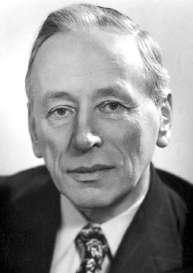
"for his precision determination of the magnetic moment of the electron"
The Nobel Prize in Physics 1954
Max Born
"for his fundamental research in quantum mechanics, especially for his statistical interpretation of the wavefunction"
Walther Bothe
"for the coincidence method and his discoveries made therewith"
The Nobel Prize in Physics 1953
Frits Zernike
"for his demonstration of the phase contrast method, especially for his invention of the phase contrast microscope"
The Nobel Prize in Physics 1952
Felix Bloch and Edward Mills Purcell
"for their development of new methods for nuclear magnetic precision measurements and discoveries in connection therewith"
The Nobel Prize in Physics 1951
Sir John Douglas Cockcroft and Ernest Thomas Sinton Walton
"for their pioneer work on the transmutation of atomic nuclei by artificially accelerated atomic particles"
The Nobel Prize in Physics 1950
Cecil Frank Powell
"for his development of the photographic method of studying nuclear processes and his discoveries regarding mesons made with this method"
184
277
Frits Zernike
The Nobel Prize in Physics 1949
Hideki Yukawa
"for his prediction of the existence of mesons on the basis of theoretical work on nuclear forces"
The Nobel Prize in Physics 1948
Patrick Maynard Stuart Blackett
"for his development of the Wilson cloud chamber method, and his discoveries therewith in the fields of nuclear physics and cosmic radiation"
The Nobel Prize in Physics 1947
Sir Edward Victor Appleton
"for his investigations of the physics of the upper atmosphere especially for the discovery of the so-called Appleton layer"
The Nobel Prize in Physics 1946
Percy Williams Bridgman
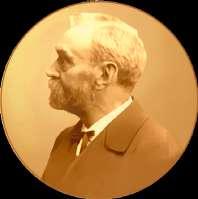
"for the invention of an apparatus to produce extremely high pressures, and for the discoveries he made therewith in the field of high pressure physics"
The Nobel Prize in Physics 1945
Wolfgang Pauli
"for the discovery of the Exclusion Principle, also called the Pauli Principle"
The Nobel Prize in Physics 1944
Isidor Isaac Rabi
"for his resonance method for recording the magnetic properties of atomic nuclei"
The Nobel Prize in Physics 1943
Otto Stern
"for his contribution to the development of the molecular ray method and his discovery of the magnetic moment of the proton"
The Nobel Prize in Physics 1942
No Nobel Prize was awarded this year. The prize money was with 1/3 allocated to the Main Fund and with 2/3 to the Special Fund of this prize section.
185
278
Alfred Nobel
The Nobel Prize in Physics 1941
No Nobel Prize was awarded this year. The prize money was with 1/3 allocated to the Main Fund and with 2/3 to the Special Fund of this prize section.
The Nobel Prize in Physics 1940
No Nobel Prize was awarded this year. The prize money was with 1/3 allocated to the Main Fund and with 2/3 to the Special Fund of this prize section.
The Nobel Prize in Physics 1939
Ernest Orlando Lawrence
"for the invention and development of the cyclotron and for results obtained with it, especially with regard to artificial radioactive elements"
The Nobel Prize in Physics 1938
Enrico Fermi
"for his demonstrations of the existence of new radioactive elements produced by neutron irradiation, and for his related discovery of nuclear reactions brought about by slow neutrons"
The Nobel Prize in Physics 1937
Clinton Joseph Davisson and George Paget Thomson
"for their experimental discovery of the diffraction of electrons by crystals"
The Nobel Prize in Physics 1936
Victor Franz Hess
"for his discovery of cosmic radiation"
Carl David Anderson
"for his discovery of the positron"
The Nobel Prize in Physics 1935
James Chadwick
"for the discovery of the neutron"
The Nobel Prize in Physics 1934
186
279
No Nobel Prize was awarded this year. The prize money was with 1/3 allocated to the Main Fund and with 2/3 to the Special Fund of this prize section.
The Nobel Prize in Physics 1933
Erwin Schrödinger and Paul Adrien Maurice Dirac
"for the discovery of new productive forms of atomic theory"
The Nobel Prize in Physics 1932
Werner Karl Heisenberg
"for the creation of quantum mechanics, the application of which has, inter alia, led to the discovery of the allotropic forms of hydrogen"
The Nobel Prize in Physics 1931
No Nobel Prize was awarded this year. The prize money was allocated to the Special Fund of this prize section.
The Nobel Prize in Physics 1930
Sir Chandrasekhara Venkata Raman
"for his work on the scattering of light and for the discovery of the effect named after him"
The Nobel Prize in Physics 1929
Prince Louis-Victor Pierre Raymond de Broglie
"for his discovery of the wave nature of electrons"
The Nobel Prize in Physics 1928
Owen Willans Richardson
"for his work on the thermionic phenomenon and especially for the discovery of the law named after him"
The Nobel Prize in Physics 1927
Arthur Holly Compton
"for his discovery of the effect named after him"
Charles Thomson Rees Wilson
"for his method of making the paths of electrically charged particles visible by condensation of vapour"
The Nobel Prize in Physics 1926
Jean Baptiste Perrin
187
280
"for his work on the discontinuous structure of matter, and especially for his discovery of sedimentation equilibrium"
The Nobel Prize in Physics 1925
James Franck and Gustav Ludwig Hertz
"for their discovery of the laws governing the impact of an electron upon an atom"
The Nobel Prize in Physics 1924
Karl Manne Georg Siegbahn
"for his discoveries and research in the field of X-ray spectroscopy"
The Nobel Prize in Physics 1923
Robert Andrews Millikan
"for his work on the elementary charge of electricity and on the photoelectric effect"
The Nobel Prize in Physics 1922
Niels Henrik David Bohr
"for his services in the investigation of the structure of atoms and of the radiation emanating from them"
The Nobel Prize in Physics 1921
Albert Einstein
"for his services to Theoretical Physics, and especially for his discovery of the law of the photoelectric effect"
The Nobel Prize in Physics 1920
Charles Edouard Guillaume
"in recognition of the service he has rendered to precision measurements in Physics by his discovery of anomalies in nickel steel alloys"
The Nobel Prize in Physics 1919
Johannes Stark
"for his discovery of the Doppler effect in canal rays and the splitting of spectral lines in electric fields"
The Nobel Prize in Physics 1918
Max Karl Ernst Ludwig Planck
"in recognition of the services he rendered to the advancement of Physics by his discovery of energy quanta"
188
281
The Nobel Prize in Physics 1917
Charles Glover Barkla
"for his discovery of the characteristic Röntgen radiation of the elements"
The Nobel Prize in Physics 1916
No Nobel Prize was awarded this year. The prize money was allocated to the Special Fund of this prize section.
The Nobel Prize in Physics 1915
Sir William Henry Bragg and William Lawrence Bragg
"for their services in the analysis of crystal structure by means of X-rays"
The Nobel Prize in Physics 1914
Max von Laue
"for his discovery of the diffraction of X-rays by crystals"
The Nobel Prize in Physics 1913
Heike Kamerlingh Onnes
"for his investigations on the properties of matter at low temperatures which led, inter alia, to the production of liquid helium"
The Nobel Prize in Physics 1912
Nils Gustaf Dalén
"for his invention of automatic regulators for use in conjunction with gas accumulators for illuminating lighthouses and buoys"
The Nobel Prize in Physics 1911
Wilhelm Wien
"for his discoveries regarding the laws governing the radiation of heat"
The Nobel Prize in Physics 1910
Johannes Diderik van der Waals
"for his work on the equation of state for gases and liquids"
The Nobel Prize in Physics 1909
189
282
Guglielmo Marconi and Karl Ferdinand Braun
"in recognition of their contributions to the development of wireless telegraphy"
The Nobel Prize in Physics 1908
Gabriel Lippmann
"for his method of reproducing colors photographically based on the phenomenon of interference"
The Nobel Prize in Physics 1907
Albert Abraham Michelson
"for his optical precision instruments and the spectroscopic and metrological investigations carried out with their aid"
The Nobel Prize in Physics 1906
Joseph John Thomson
"in recognition of the great merits of his theoretical and experimental investigations on the conduction of electricity by gases"
The Nobel Prize in Physics 1905
Philipp Eduard Anton von Lenard
"for his work on cathode rays"
The Nobel Prize in Physics 1904
Lord Rayleigh (John William Strutt)
"for his investigations of the densities of the most important gases and for his discovery of argon in connection with these studies"
The Nobel Prize in Physics 1903
Antoine Henri Becquerel
"in recognition of the extraordinary services he has rendered by his discovery of spontaneous radioactivity"
Pierre Curie and Marie Curie, née Sklodowska
"in recognition of the extraordinary services they have rendered by their joint researches on the radiation phenomena discovered by Professor Henri Becquerel"
The Nobel Prize in Physics 1902
Hendrik Antoon Lorentz and Pieter Zeeman
190
283
"in recognition of the extraordinary service they rendered by their researches into the influence of magnetism upon radiation phenomena"
The Nobel Prize in Physics 1901
Wilhelm Conrad Röntgen
"in recognition of the extraordinary services he has rendered by the discovery of the remarkable rays subsequently named after him"
A Warning To All Oxygen Breathing Humans
"If You Meet Someone From Another Planet And He Holds Out His Left Hand, Don't Shake It. He Might Be Made Of Antimatter. You Would Both Disappear In A Tremendous Flash Of Light."
Stephen Hawking
Some time before the discovery of quantum mechanics people realized that the connection between light waves and photons must be of a statistical character. What they did not clearly realize, however, was that the "wave function" gives information about the probability of one photon being in a particular place and not the probable number of photons in that place. The importance of the distinction can be made clear in the following way. Suppose we have a beam of light consisting of a large number of photons split up into two components of equal intensity. On the assumption that the beam is connected with the probable number of photons in it, we should have half the total number going into each component. If the two components are now made to interfere, we should require a photon in one component to be able to interfere with one in the other. Sometimes these two photons would have to annihilate one another and other times they would have to produce four photons. This would contradict the conservation of energy. The new theory, which connects the wave function with probabilities for one photon gets over the difficulty by making each photon go partly into each of the two components. Each photon then interferes only with itself. Interference between two different photons never occurs.
Paul Dirac, The Principles of Quantum Mechanics
247
284
The interplanetary medium refers to the region of space between the planets in our solar system. It is comprised of a mixture of charged particles, including ions and electrons, as well as magnetic fields and other electromagnetic phenomena. The interplanetary medium is not a vacuum, but it is much less dense than the Earth's atmosphere. The charged particles in the interplanetary medium are primarily produced by the solar wind, a continuous stream of charged particles that flows out from the sun. These charged particles can interact with the magnetic fields of the planets, creating phenomena such as aurora and magnetic storms.
The interplanetary medium also contains cosmic rays, which are high-energy particles that travel through space at nearly the speed of light. These particles are believed to come from the explosions of supernovae and other violent events in our galaxy. The interplanetary medium can have a significant impact on our technology, including satellites, spacecraft, and other devices that operate in space. For example, charged particles in the interplanetary medium can cause electromagnetic interference with these devices, leading to malfunctions and other problems. To protect against these effects, spacecraft are often equipped with shielding to minimize the impact of the interplanetary medium. Essentially, the interplanetary medium is an important and dynamic part of our solar system that plays a role in several important processes, including the solar wind, aurora, magnetic storms, and the propagation of cosmic rays. Studying the interplanetary medium helps us better understand the environment in which our solar system and its planets exist, and the impact it can have on our technology in space.
285
Astrometry is the branch of astronomy that deals with the precise measurement of the positions and movements of celestial objects. This includes the measurement of the positions and motions of stars, galaxies, and other celestial objects, as well as the measurement of the Earth's position and motion relative to the rest of the universe. Astrometry plays a critical role in several areas of astronomy, including the study of the structure and evolution of our Milky Way galaxy, the determination of the distances to other galaxies, and the measurement of the properties of exoplanets.
The goal of astrometry is to make precise measurements of the positions and motions of celestial objects. This is typically done by observing the objects over time and using mathematical techniques to determine their positions and motions. Astrometric observations can be made using a variety of techniques, including photometry (the measurement of the brightness of celestial objects), spectroscopy (the measurement of the spectra of celestial objects), and interferometry (the use of multiple telescopes to make extremely precise measurements). One of the main challenges of astrometry is to correct for the effects of the Earth's atmosphere, which can cause distortions in the images of celestial objects. To overcome this challenge, astrometric observations are typically made using telescopes located above the Earth's atmosphere, such as the Hubble Space Telescope, or from space-based observatories. Astrometry is a crucial component of many other areas of astronomy, including the study of exoplanets, the determination of the properties of dark matter and dark energy, and the understanding of how the cosmos came to be and how it has changed. To sum up, astrometry is a fundamental and important area of astronomy that plays a critical role in our understanding of the universe and its structure and evolution. By making precise measurements of the positions and motions of celestial objects, astrometry provides valuable information about the universe, from our own Milky Way galaxy to the most distant objects in the universe.
286
The Kuiper Belt is a region of our solar system that lies beyond the orbit of Neptune and is believed to contain many small, icy bodies, including dwarf planets and comets. It is located at a distance of 30-50 astronomical units (AU) from the Sun and is sometimes referred to as the "third zone" of our solar system, after the interior terrestrial planets and the outer gas giants.
The Kuiper Belt was first predicted by the Dutch astronomer Gerard Kuiper in 1951, and the first object in the Kuiper Belt was discovered in 1992. Since then, hundreds of thousands of objects have been found in the Kuiper Belt, including several dwarf planets, such as Pluto and Eris, and a large number of comets. The objects in the Kuiper Belt are thought to be remnants from the early solar system and are believed to have played a key role in the formation and evolution of the solar system. For example, it is believed that the Kuiper Belt was the source of many of the short-period comets that have impacted the inner solar system, including Earth.
The Kuiper Belt is also a fascinating area of study for scientists, as it provides a window into the early history of our solar system and the processes that shaped it. In recent years, several missions have been sent to explore the Kuiper Belt, including NASA's New Horizons mission to Pluto, and the European Space Agency's Rosetta mission to comet 67P/Churyumov-Gerasimenko Essentially, the Kuiper Belt is a vast region of our solar system that contains many small, icy bodies and is believed to hold important clues about the formation and evolution of the solar system. The study of the Kuiper Belt continues to be a rich area of scientific investigation, providing valuable insights into the history of our solar system and the processes that shaped it.
287
The smallest object ever observed in visible light has been found in the Kuiper Belt, a massive ring of ice debris that circles the outer border of the solar system just beyond Neptune. This discovery was made by NASA's Hubble Space Telescope. The Hubble discovery of a tiny, 4.2 billion-mile-away object that resembles a needle in a haystack is depicted here by an artist.

String theory is a theoretical framework for understanding the fundamental structure of matter and energy in the universe. Despite its popularity and its potential for explaining many phenomena, there are several problems and challenges associated with string theory that have yet to be fully resolved.
Lack of experimental evidence: One of the biggest problems with string theory is that it is currently not possible to test its predictions experimentally. This makes it difficult to confirm or refute the theory.
288
Uniqueness: There are many different versions of string theory, and it is not clear which, if any, is the correct one. This lack of uniqueness is seen as a weakness by many physicists.
Background independence: String theory is formulated in a background-dependent manner, meaning that it relies on a fixed, classical spacetime. This is in contrast to general relativity, which is background independent.
Supersymmetry: String theory requires the existence of supersymmetry, which states that for every known particle there is a corresponding supersymmetric partner particle. Supersymmetry has yet to be observed experimentally, and it is not clear if it exists.
Extra dimensions: String theory requires the existence of extra dimensions beyond the three dimensions of space and one dimension of time that we observe. The existence of these extra dimensions is a major departure from our current understanding of the universe and has not been confirmed experimentally.
Despite these problems, many physicists believe that string theory has the potential to be a fundamental theory of everything, and work is ongoing to try to resolve these issues and make predictions that can be tested experimentally.
Meteors, also known as shooting stars, are small rocks or bits of debris that enter the Earth's atmosphere from space and burn up due to friction with the air. This creates a bright streak of light that is visible from the ground.
Meteors are the result of collisions between the Earth and small bits of cosmic debris, such as asteroids or comets. When this debris enters the Earth's atmosphere, it is subjected to intense friction and heat, which causes it to vaporize and create a bright streak of light.
There are several types of meteor events that can be observed, including sporadic meteors, which are random meteor sightings that occur throughout the year; meteor showers, which are periodic events where many meteors can be seen in a short period of time; and meteor outbursts, which are brief, intense meteor events that can produce hundreds or even thousands of meteors in a short period of time.
289
Meteor observations have been used for centuries to study the nature of the universe and the structure of the solar system. Today, astronomers use meteor observations to study the properties of comets and asteroids, as well as to learn about the early history of the solar system and the formation of the planets.
Meteors can be a spectacular sight, and many people enjoy observing meteor showers and other meteor events. If you're interested in observing meteors, the best time to do so is on a clear, dark night, away from city lights. You can also find information about upcoming meteor showers online or in astronomy magazines
Classical mechanics, also known as Newtonian mechanics, is a physical theory that describes the motion of objects under the influence of forces. It was developed by Sir Isaac Newton in the 17th century and remains a cornerstone of modern physics. While classical mechanics has been extremely successful in describing the motion of objects on a macroscopic scale, it does have some limitations and problems. Here are some of the most significant ones:
The correspondence problem: Classical mechanics is based on the idea of absolute space and time, which means that there is a fixed frame of reference in which objects can be described. However, this idea is incompatible with the theory of relativity, which holds that there is no fixed frame of reference and that all observations must be relative to the observer.
The ultraviolet catastrophe: According to classical mechanics, the energy of a body depends on its temperature and the speed of its constituent particles. At high temperatures, this leads to an infinite amount of energy, a phenomenon known as the ultraviolet catastrophe. This issue was resolved by the development of quantum mechanics.
The stability of planetary orbits: In classical mechanics, planetary orbits are described as being stable and ellipsoidal. However, this contradicts observations, which show that planets can exhibit chaotic behavior and exhibit significant deviations from their expected orbits.
290
The three-body problem: In classical mechanics, the motion of two bodies under the influence of their mutual gravitational attraction can be described relatively easily. However, the addition of a third body makes the problem much more complex and difficult to solve, as it is difficult to determine the precise motion of all three bodies.
Despite these problems, classical mechanics remains a useful and important theory and is still widely used in many areas of physics and engineering. However, for applications that involve the study of very small or very fast-moving objects, or for situations where the effects of gravity are significant, classical mechanics is often supplemented by more advanced theories, such as quantum mechanics and general relativity.
Helioseismology is a branch of astronomy that studies the internal structure and dynamics of the Sun using the science of seismology. Just as earthquakes produce seismic waves that travel through the Earth, the Sun also produces waves, known as solar waves or helioseismic waves, which travel through its interior.
By studying the behavior of these solar waves, scientists can probe the Sun's interior and learn about its structure and dynamics. This information is critical for understanding the processes that drive the Sun's energy output, such as nuclear fusion, and the mechanisms that cause the Sun's magnetic activity, such as sunspots and solar flares.
Helioseismology has been extremely successful in advancing our understanding of the Sun. For example, it has allowed scientists to determine the internal rotation rate of the Sun, the size and location of its convective zone, and the properties of its magnetic field. It has also provided important constraints on models of solar evolution and on theories of the solar interior.
The study of Helioseismology is typically done using data from space-based observatories, such as the Solar and Heliospheric Observatory (SOHO) or the Solar Dynamics Observatory (SDO), which provide detailed images and observations of the Sun's surface and atmosphere. By analyzing these observations, scientists can infer the properties of the Sun's interior and study its behavior over time.
291
No spectral lines → strong test of Big Bang model Expansion preserves the blackbody spectrum.
Cosmology Milestones
1925 Galaxy redshifts
1965 Cosmic Microwave Background (CMB)
Tthen = Tnow (1+z)
Tnow = 2.7 K
1925 General Relativity Cosmology Models:
Radiation era:
Scale factor of the universe proportional to (time) 1 2
Temperature proportional to 1 (time) 1 2
Matter era:
Scale factor of the universe proportional to (time) 2 3
Temperature proportional to 1 (time) 2 3
1975 Big Bang Nucleosynthesis (BBN):
Lighter elements (1H … 7Li) time ~ 3 min Temperature ~ 109 K
207
= �������� ����ℎ����
(1+z)
292
Current Mysteries from Observations
MAPPING THE DARK UNIVERSE
Dark Matter? Holds Galaxies together Triggers Galaxy formation
Dark Energy? Drives Cosmic Acceleration
How Can We Make It In The Laboratory?
Modified Gravity?
General Relativity wrong?
Are There Undiscovered Principles of Nature: New Symmetries, New Physical Laws?
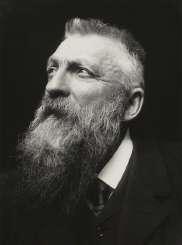
With new cosmic surveys, we are aiming to address these mysteries and learn more about the evolution of the cosmos.
"There are unknown forces in nature; when we give ourselves wholly to her, without reserve, she lends them to us; she shows us these forms, which our watching eyes do not see, which our intelligence does not understand or suspect."
UNKNOWN
FORCES?
Elementary particles are just manifestations of a more fundamental layer of nature described by 1D string 10–35 m in length?
208
Auguste Rodin
293
Planck's constant → the scale of the quantum world.
Speed of light → encodes the Einstein's relativity principle.
Newton's constant → quantifies the strength of the force of gravity.
"String theory is different to religion because of its utility in mathematics and quantum field theory, and because it may someday evolve into a testable theory (aka science)."
Sheldon Glashow
"Early claims that string theory would provide a "theory of everything" now seem hollow indeed. But we'll soon be awash in LHC data, and we haven’t yet channelled the flood of recent advances in cosmology into fundamental physics. With luck, string theory might become a theory of something "
Frank Wilczek
"It is too early to tell how the string landscape is populated. Anthropic arguments ought to work unless it is very selectively populated, but we just don't know whether that is the case. It seems to me that at this point, all avenues should be tried "
Steven Weinberg
Units make sense:
209
Energy density = Energy volume = Force×length (length)3 = Force area = Pressure 294
Matter, though divisible in an extreme degree, is nevertheless not infinitely divisible. That is, there must be some point beyond which we cannot go in the division of matter.…I have chosen the word "atom" to signify these ultimate particles.
All matter is composed of atoms.
Atoms cannot be made or destroyed.
All atoms of the same element are identical.
Different elements have different types of atoms.
Chemical reactions occur when atoms are rearranged.
Compounds are formed from atoms of the constituent elements
Noether's Theorem:
For every continuous symmetry of the laws of physics, there must exist a conservation law. For every conservation law, there must exist a continuous symmetry.

305
A + A ⇄ A* + A
A* → A + heat
A* → A + hυ
John Dalton
John Dalton's atomic theory of matter:
295
What, then, is light according to the electromagnetic theory? It consists of alternate and opposite rapidly recurring transverse magnetic disturbances, accompanied with electric displacements, the direction of the electric displacement being at the right angles to the magnetic disturbance, and both at right angles to the direction of the ray.
James Clerk Maxwell
Natural science is not concerned with Nature itself, but with Nature as man describes and understands it. This does not mean that an element of subjectivity is introduced into natural science no one claims that the processes and phenomena that take place in the world are dependent on our observations but attention is brought to the fact that natural science stands between man and nature and that we cannot dispense with the aid of perceptual concepts or other concepts inherent in the nature of man.
Werner Heisenberg
Planck charge:
qPlanck = √ħc4πε0 =
Planck resistance (RPlanck) = Planckvoltage Planckcurrent = 1 4πε0c
Coulomb constant = Planck resistance × c
306
√
Planckresistance
ħ
296
Electron classical radius:
where: RPlanck is the Planck resistance, G0 is the Conductance quantum and λC is the Compton wavelength of the electron
"We must be careful, though, that we don’t confuse the issue by contaminating the planet with life from Earth. Similarly, we must be very careful not to bring back any Martian life. We would have no resistance to it, and it might wipe out life on Earth."
― Stephen Hawking, Brief Answers to the Big Questions
307
re = e2 4πε0mec2 re = 1 4πε0c × e2 h × h mec re = RPlanck × G0 2 × λC
297
If Supersymmetry breaking scale ∼ 1 TeV, the cosmological constant is about ∼ 10−64 in Planck units. This number is still about 60 orders of magnitude larger than the observational limit. Newton Mechanics
Classical Electrodynamics
Newton gravity
General Relativity
Special Relativity
Quantum Electrodynamics
Quantum Mechanics
Standard Model
T T0 = ��0 �� = (1+ z) Since energy density of radiation (u) ∝T4: u = u0 (1+ z) 4
298
… my criticism … was based on an error in my calculations. I consider that Mr. Friedmann's equations are correct and shed new light.
(Albert Einstein in the journal "Zeitschrift Fur Physik", 1923)
Spin Particles Behavior of Wave Function Under Interchangeof Any Two Identical Particles
Integer
Half-integer Fermions Antisymmetric Particle Type Weak Electromagnetic Hadronic Photon Gauge boson No Yes No W ±,Z0 Gauge bosons Yes Yes No Gluon Gauge boson No No Yes Leptons Neutrino Fermion Yes No No Electron Fermion Yes Yes No Muon Fermion Yes Yes No Tau Fermion Yes Yes No Hadrons Mesons Bosons Yes Yes Yes Baryons Fermions Yes Yes Yes Quarks Fermions Yes Yes Yes 299
Bosons Symmetric
Law of Radioactive Decay:
where N is the number of radioactive nuclei at time t, N0 is the number of radioactive nuclei at time t = 0 and
is the decay constant.
"Who would not have been laughed at if he had said in 1800 that metals could be extracted from their ores by electricity or that portraits could be drawn by chemistry.
{Commenting on Henri Becquerel's process for extracting metals by voltaic means.}"
― Michael Faraday
λ
ln( N0 N ) = λt λ2 = ln2 t1/2 × 1 τ λ = √ln2 τ×t1/2 When t = t1/4: N = N0 4 t1/4 = ln4 λ ln4 t1/4 = √ln2 τ×t1/2 ln( N0 N ) = λt t1/4 = 1.665 t1/2 τ When t = t1/2: N = N0 2 t1/2 = ln2 λ When t = τ: N = N0 e τ = 1 λ
300
Most massive stars have the shortest lifetimes they have a lot of fuel but burn it at a very rapid pace. Small red dwarfs burn their fuel extremely slowly and have lifetimes of a trillion years or more.
"Very few will remain in the shrine of science, if we eliminate those moved by ambition, calculation, of whatever personal motivations; one of them will be Max Planck."
A. Einstein
Stefan-Boltzmann Law
Hotter stars emit more!
Larger stars emit more!
Fuel runs out
Core pressure drops
Gravity compresses core
Core temperature rises
shell burning
Pressure puffs outer layers
Core heats up more
Shell burning grows stronger
Atmosphere expands and cools further
The amount of baryons and anti-baryons in the early Universe was the same
In the Universe today baryons completely dominate over anti-baryons
256
301
Why all anti-baryons annihilated, while 1 109 baryons did not?
Hawking's work on black holes showed that General relativity and Quantum mechanics contradict each other
This puzzle is known as the Black Hole Information Paradox
1899, John Smith John Smith Interview with Nikola Tesla
John Smith: Mr. Tesla, you have gained the glory of the man who got involved in the cosmic processes. Who are you, Mr. Tesla?
Nikola Tesla: It is a right question, Mr. Smith, and I will try to give you the right answer to it.
John Smith: Some say you’re from the country of Croatia, from the area called Lika, where together with the people are growing trees, rocks and starry sky. They say that your home village is named after the mountain flowers, and that the house, where you were born, is next to the forest and the church.
Nikola Tesla: Really, all it true. I’m proud of my Serbian origin and my Croatian homeland.
John Smith: Futurists say that the Twenty-and Twenty First Century was born in head of Nikola Tesla. They celebrate conversely magnetic field and sing hymns to Inductions engine. Their creator was called the hunter who caught the light in his net from the depths of the earth, and the warrior who captured fire from heaven. Father of alternating current will make the Physics and Chemistry dominate half the world. Industry will proclaim him as their supreme saint, a banker for the largest benefactors. In the laboratory of Nikola Tesla for the first time is broken atom.
There is created a weapon that causes the earthquake vibrations. There are discovered black cosmic rays. Five races will pray to him in the Temple of the future, because they had taught a great secret that Empedocles elements can be watered with the life forces from the ethers.
Nikola Tesla: Yes, these are some of my most important discoveries. I’m a defeated man. I have not accomplished the greatest thing I could.
257
302
John Smith: What is it, Mr. Tesla?
Nikola Tesla: I wanted to illuminate the whole earth. There is enough electricity to become a second sun. Light would appear around the equator, as a ring around Saturn.
Mankind is not ready for the great and good. In Colorado Springs I soaked the earth by electricity. Also we can water the other energies, such as positive mental energy. They are in the music of Bach or Mozart, or in the verses of great poets. In the Earth’s interior, there are energy of Joy, Peace and Love. Their expressions are a flower that grows from the Earth, the food we get out of her and everything that makes man’s homeland. I’ve spent years looking for the way that this energy could influence people. The beauty and the scent of roses can be used as a medicine and the sun rays as a food.
Life has an infinite number of forms, and the duty of scientists is to find them in every form of matter. Three things are essential in this. All that I do is a search for them. I know I will not find them, but I will not give up on them.
John Smith: What are these things?
Nikola Tesla: One issue is food. What a stellar or terrestrial energy to feed the hungry on Earth? With what wine watered all thirsty, so that they can cheer in their heart and understand that they are Gods?
Another thing is to destroy the power of evil and suffering in which man’s life passes! They sometimes occur as an epidemic in the depths of space. In this century, the disease had spread from Earth in the Universe.
The third thing is: Is there an excess Light in the Universe? I discovered a star that by all the astronomical and mathematical laws could disappear, and that nothing seems to be modified. This star is in this galaxy. Its light can occur in such density that fits into a sphere smaller than an apple, a heavier than our Solar System. Religions and philosophies teach that man can become the Christ, Buddha and Zoroaster. What I’m trying to prove is wilder, and almost unattainable. This is what to do in the Universe so every being is born as Christ, Buddha or Zoroaster.
I know that gravity is prone to everything you need to fly and my intention is not to make flying devices (aircraft or missiles), but teach individual to regain consciousness on his own wings … Further; I am trying to awake the energy contained in the air. There are the main sources of energy. What is considered as empty space is just a manifestation of matter that is not awakened.
No empty space on this planet, nor in the Universe.. In black holes, what astronomers talk about, are the most powerful sources of energy and life.
John Smith: On the window of your room in hotel "Valdorf-Astoria", on the thirty-third floor, every morning, the birds arrive.
258
303
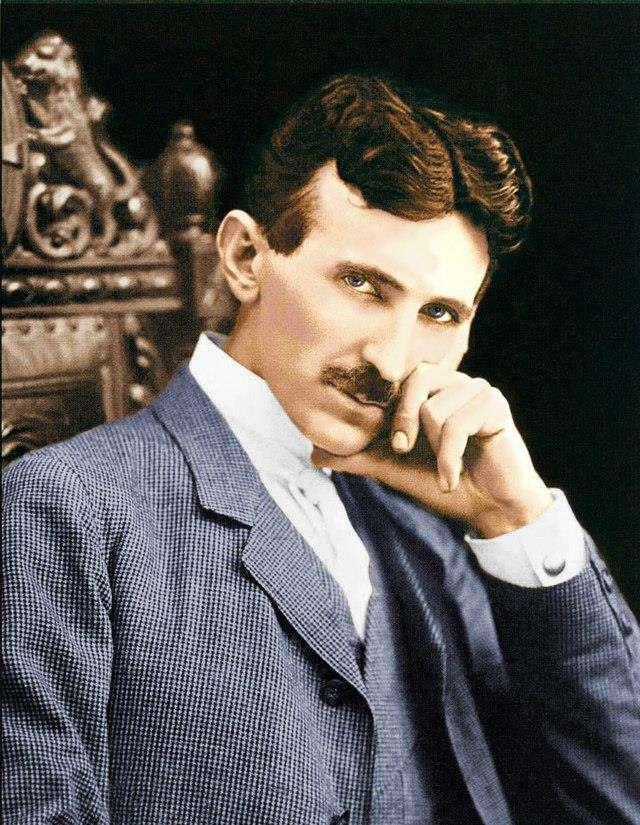

304
Nikola Tesla: A man must be sentimental towards the birds. This is because of their wings. Human had them once, the real and visible!
John Smith: You have not stopped flying since those distant days in Smiljan!
Nikola Tesla: I wanted to fly from the roof and I fell: Children’s calculations could be wrong. Remember, the youth wings have everything in life!
John Smith: Have you ever married? It is not known that you have affection for love or for a woman. Photos from the youth show you were handsome man.
Nikola Tesla: Yes. I did not. There are two views: a lot affection or not at all. The center serves to rejuvenate human race. Women for certain people nurtures and strengthen its vitality and spirit. Being single does the same to other people. I chose that second path.
John Smith: Your admirers are complaining that you attacking relativity. The strange is your assertion that the matter has no energy. Everything is imbued with energy, where it is?
Nikola Tesla: First was energy, then matter.
John Smith: Mr. Tesla, it’s like when you said that you were born by your father, and not on you.
Nikola Tesla: Exactly! What about the birth of the Universe? Matter is created from the original and eternal energy that we know as Light .It shone, and there have been appear star, the planets, man, and everything on the Earth and in the Universe. Matter is an expression of infinite forms of Light, because energy is older than it. There are four laws of Creation. The first is that the source of all the baffling, dark plot that the mind cannot conceive, or mathematics measure. In that plot fit the whole Universe.
The second law is spreading a darkness, which is the true nature of Light, from the inexplicable and it’s transformed into the Light. The third law is the necessity of the Light to become a matter of Light. The fourth law is: no beginning and no end; three previous laws always take place and the Creation is eternal.
John Smith: In the hostility to the theory of relativity you go so far, that you hold lectures against its Creator at your birthday parties..
Nikola Tesla: Remember, it is not curved space, but the human mind which cannot comprehend infinity and eternity! If relativity has been clearly understood by its Creator, he would gain immortality, even yet physically, if he is pleased.
I am part of a light, and it is the music. The Light fills my six senses: I see it, hear, feel, smell, touch and think. Thinking of it means my sixth sense. Particles of Light are written note. O bolt of lightning can be an entire sonata. A thousand balls of lightening is a concert.. For this concert
259
305
I have created a Ball Lightning, which can be heard on the icy peaks of the Himalayas.
About Pythagoras and mathematics a scientist may not and must not infringe of these two. Numbers and equations are signs that mark the music of the spheres. If Einstein had heard these sounds, he would not create theories of relativity. These sounds are the messages to the mind that life has meaning, that the Universe exists in perfect harmony, and its beauty is the cause and effect of Creation. This music is the eternal cycle of stellar heavens.
The smallest star has completed composition and also, part of the celestial symphony. The man’s heartbeats are part of the symphony on the Earth. Newton learned that the secret is in geometric arrangement and motion of celestial bodies. He recognized that the supreme law of harmony exists in the Universe. The curved space is chaos, chaos is not music. Einstein is the messenger of the time of sound and fury.
John Smith: Mr. Tesla, do you hear that music?
Nikola Tesla: I hear it all the time. My spiritual ear is as big as the sky we see above us. My natural ear I increased by the radar. According to the Theory of Relativity, two parallel lines will meet in infinity. By that Einstein’s curved will straighten. Once created, the sound lasts forever. For a man it can vanish, but continues to exist in the silence that is man’s greatest power.
No, I have nothing against Mr. Einstein. He is a kind person and has done many good things, some of which will become part of the music. I will write to him and try to explain that the ether exists, and that its particles are what keep the Universe in harmony, and the life in eternity.
John Smith: Tell me, please, under what conditions Angel adopt on the Earth?
Nikola Tesla: I have ten of them. Keep good records vigilant.
John Smith: I will document all your words, Dear Mr. Tesla.
Nikola Tesla: The first requirement is a high awareness of its mission and work to be done. It must, if only dimly, exist in the early days. Let us not be falsely modest; Oak knows that it is oak tree, a bush beside him being a bush. When I was twelve, I have been sure I will get to Niagara Falls. For most of my discoveries I knew in my childhood that I will achieve them, although not entirely apparent … The second condition to adapt is determination. All that I might, I finished.
John Smith: What is the third condition of adjustment, Mr. Tesla?
Nikola Tesla: Guidance for all the vital and spiritual energies in labor. Therefore purification of the many effects and needs that man has. I therefore have not lost anything, but just gained.
260
306
So I enjoyed every day and night. Write down: Nikola Tesla was a happy man… The fourth requirement is to adjust the physical assembly with a work.
John Smith: What do you mean, Mr. Tesla?
Nikola Tesla: First, the maintenance of the assembly. Man’s body is a perfect machine. I know my circuit and what’s good for him. Food what nearly all people eat, to me it is harmful and dangerous. Sometimes I visualize that chefs in the world are all in conspiracy against me … Touch my hand.
John Smith: It was cold.
Nikola Tesla: Yes. Bloodstream can be controlled, and many processes in and around us. Why are you frightened young man?
John Smith: It’s a story that Mark Twain wrote a mysterious stranger, that wonderful book of Satan, inspired by you.
Nikola Tesla: The word "Lucifer" is more charming. Mr. Twain likes to joke. As a child I was healed once by reading his books. When we met here and told him about, he was so touched that he cried. We became friends and he often came to my lab. Once he requested to show him a machine that by vibration provokes a feeling of bliss. It was one of those inventions for entertainment, what I sometimes like to do.
I warned Mr. Twain as not to remain under these vibrations. He did not listen and stayed longer. It ended by being, like a rocket, holding pants, darted into a certain room. It was a diabolically funny, but I kept the seriousness.
But, to adjust the physical circuit, in addition to food, dream is very important . From a long and exhausting work, which required superhuman effort, after one hour of sleep I’d be fully recovered. I gained the ability to manage sleep, to fell asleep and wake up in the time which I have designated. If I do something what I do not understand, I force myself to think about it in my dream, and thus find a solution.
Nikola Tesla: The fifth condition of adjustment is memory. Perhaps in the most people, the brain is keeper of knowledge about the world and the knowledge gained through the life. My brain is engaged in more important things than remembering, it is picking what is required at a given moment. This is all around us. It should only be consumed. Everything that we once saw, hear, read and learn, accompanies us in the form of light particles. To me, these particles are obedient and faithful.
Goethe’s Faust, my favorite book, I learned by heart in German as a student, and now it can all recite. I held my inventions for years ‘in my head “, and only then I realized them.
John Smith: You often mentioned the power of visualization.
261
307
Nikola Tesla: I might have to thank to visualization for all that I invented. The events of my life and my inventions are real in front of my eyes, visible as each occurrence or the item. In my youth I was frightened of not knowing what it is, but later, I learned to use this power as an exceptional talent and gift. I nurtured it, and jealously guarded. I also made corrections by visualization on most of my inventions, and finish them that way, by visualization I mentally solve complex mathematical equations. For that gift I have, I will receive rank High Lama in Tibet.
My eyesight and hearing are perfect and, dare to say, stronger than other people. I hear the thunder of a hundred fifty miles away, and I see colors in the sky that others cannot see. This enlargement of vision and hearing, I had as a child. Later I consciously developed.
John Smith: In youth you have several times been seriously ill. Is it a disease and a requirement to adapt?
Nikola Tesla: Yes. It is often the result of a lack of exhaustion or vital force, but often the purification of mind and body from the toxins that have accumulated. It is necessary that a man suffers from time to time. The source of most disease is in the spirit. Therefore the spirit and can cure most diseases. As a student I got sick of cholera which raged in the region of Lika. I was cured because my father finally allowed me to study technology, which was my life. Illusion for me was not a disease, but the mind’s ability to penetrate beyond the three dimensions of the earth.
I had them all my life, and I have received them as all other phenomena around us. Once, in childhood, I was walking along the river with Uncle and said: “From the water will appear the trout, I’ll throw a stone and it is cut.” That’s what happened. Frightened and amazed, his uncle cried: “Bade retro Satan’s!” He was an educated and he spoke in Latin …
I was in Paris when I saw my mother’s death. In the sky, full of light and music floated are wonderful creatures. One of them had a mother’s character, who was looking at me with infinite love. As the vision disappeared, I knew that my mother died.
John Smith: What is the seventh adjustment, Mr. Tesla?
Nikola Tesla: The knowledge of how the mental and vital energy transform into what we want, and achieve control over all feelings. Hindus call it Kundalini Yoga. This knowledge can be learned, for what they need many years or is acquired by birth. The most of them I acquired by birth. They are in the closest connection with a sexual energy that is after the most widespread in the Universe. The woman is the biggest thief of that energy, and thus the spiritual power.
I’ve always knew that and was alerted. Of myself I created what I wanted: a thoughtful and spiritual machine.
John Smith: A ninth adjustment, Mr. Tesla?
Nikola Tesla: Do everything that any day, any moment, if possible, not to forget who we are and why we are on Earth. Extraordinary people who are struggling with illness, privation, or the society which hurts them with its stupidity, misunderstanding, persecution and other problems which the country is full of a swamps with insects, leaves behind unclaimed until the end of the work. There are many fallen angels on Earth.
262
308
John Smith: What is the tenth adaptation?
Nikola Tesla: It is most important. Write that Mr. Tesla played. He played the whole of his life and enjoyed it.
John Smith: Mr. Tesla! Whether it relates to your findings and your work? Is this a game?
Nikola Tesla: Yes, dear boy. I have so loved to play with electricity! I always cringe when I hear about the one also the Greek who stole fire. A terrible story about studding, and eagles peck at his liver. Did Zeus did not have enough lightning and thunder, and was damaged for one fervor? There is some misunderstanding…
Lightning are the most beautiful toys that can be found. Do not forget that in your text stand out: Nikola Tesla was the first man who discovered lightning.
John Smith: Mr. Tesla, you’re just talking about angels and their adaptation to the Earth.
Nikola Tesla: Am I? This is the same. You could write this: he dared to take upon himself the prerogatives of Indri, Zeus and Peron. Imagine one of these gods in a black evening suit, with the bowler hat and wearing white cotton gloves prepares lightning, fires and earthquakes to the New York City elite!
John Smith: Readers love the humor of our paper. But you confuse me stating that your findings, which have immense benefits for the people, representing the game. Many will frown on it.
Nikola Tesla: Dear Mr. Smith, the trouble is that people are too serious. If they were not, they would be happier and much longer would have lived. Chinese proverb says that the seriousness reduces life. Visiting the inn Tai Pe guessed that he visits the Imperial Palace. But that the newspaper readers would not have frowned, let’s get back to things which they consider important.
John Smith: They would love to hear what your philosophy is.
Nikola Tesla: Life is a rhythm that must be comprehended. I feel the rhythm and direct on it and pamper in it. It was very grateful and gave me the knowledge I have. Everything that lives is related to a deep and wonderful relationship: man and the stars, amoebas’ and the sun, the heart and the circulation of an infinite number of worlds. These ties are unbreakable, but they can be tame and to propitiate and begin to create new and different relationships in the world, and that does not violate the old.
Knowledge comes from space; our vision is its most perfect set. We have two eyes: the earthly and spiritual. It is recommended that it become one eye. Universe is alive in all its manifestations, like a thinking animal.
Stone is a thinking and sentient being, such as plant, beast and a man. A star that shines asked to look at, and if we are not a sizeable self-absorbed we would understand its language and message. His breathing, his eyes and ears of the man must comply with breathing, eyes and ears of the Universe.
John Smith: As you say this, it seems to me like I hear Buddhist texts, words or Taoist Parazulzusa.
263
309
Nikola Tesla: That’s right! This means that there is general knowledge and truth that man has always possessed. In my feeling and experience, the Universe has only one substance and one supreme energy with an infinite number of manifestations of life. The best thing is that the discovery of a secret nature, reveals the other.
One cannot hide, there are around us, but we are blind and deaf to them. If we emotionally tie ourselves to them, they come to us themselves. There are a lot of apples, but one Newton. He asked for just one apple that fell in front of him.
John Smith: A question that might be set at the beginning of this conversation. What was Electricity for you, Dear Mr. Tesla?
Nikola Tesla: Everything is Electricity. First was the light, endless source from which points out material and distribute it in all forms that represent the Universe and the Earth with all its aspects of life. Black is the true face of Light, only we do not see this. It is remarkable grace to man and other creatures. One of its particles possesses light, thermal, nuclear, radiation, chemical, mechanical and an unidentified energy.
It has the power to run the Earth with its orbit. It is true Archimedean lever.
John Smith: Mr. Tesla, you’re too biased towards electricity.
Nikola Tesla: Electricity I am. Or, if you wish, I am the electricity in the human form. You are Electricity; too Mr. Smith, but you do not realize it.
John Smith: Is it thus your ability to allow fails of electricity of one million volts trough your body?
Nikola Tesla: Imagine a gardener who is attacked by herbs. This would indeed be crazy. Man’s body and brain are made from a large amount energy; in me there is the majority of electricity. The energy that is different in everyone is what makes the human “I” or “soul”. For other creatures to their essence, “soul” of the plant is the “soul” of minerals and animals.
Brain function and death is manifested in light. My eyes in youth were black, now blue, and as time goes on and strain the brain gets stronger, they are closer to white. White is the color of heaven. Through my window one morning, landed a white dove, which I fed. She wanted to bring me a word that she was dying. From her eyes the light jets were coming out. Never in the eyes of any creature had I not seen so much light, as in that pigeon.
John Smith: Personnel in your lab speak about flashes of light, flames and lightning that occur if you are angry or into kind of risk.
Nikola Tesla: It is the psychic discharge or a warning to be alert. The light was always on my side. Do you know how I discovered the rotating magnetic field and induction motor, which made me became famous when I was twenty-six? One summer evening in Budapest, I watched with my friend Sigetijem sunset.
Thousands of fire was turning around in thousands of flaming colors. I remembered Faust and recited his verses and then, as in a fog, I saw spinning magnetic field, and induction motor. I saw them in the sun!
264
310
John Smith: Hotel service telling that at the time of lightning you isolate into the room and talk to yourselves.
Nikola Tesla: I talk with lightning and thunder.
John Smith: With them? What language, Mr.Tesla?
Nikola Tesla: Mostly my native language. It has the words and sounds, especially in poetry, what is suitable for it.
John Smith: Readers of our magazine would be very grateful if you would interpret that.
Nikola Tesla: The sound does not exist only in the thunder and lightning, but, in transformation into the brightness and color. A color can be heard. Language is of the words, which means that it is from the sounds and colors. Every thunder and lightning are different and have their names. I call some of them by the names of those who were close in my life, or by those whom I admire.
In the sky brightness and thunder live my mother, sister, brother Daniel, a poet Jovan Jovanovic Zmaj and other persons of Serbian history. Names such AsIsaiah, Ezekiel, Leonardo, Beethoven, Goya, Faraday, Pushkin and all burning fires mark shoals and tangles of lightning and thunder, which does not stop all night bringing to the Earth precious rain and burning trees or villages.
There is lightning and thunder, and they are the brightest and most powerful, that will not vanish. They are coming back and I recognize them among the thousands.
John Smith: For you, science or poetry is the same?
Nikola Tesla: These are the two eyes of one person. William Blake was taught that the Universe was born from the imagination, that it maintains and it will exist as long as there is a last man on the Earth. With it was a wheel to which astronomers can collect the stars of all galaxies. It is the creative energy identical to the light energy.
John Smith: Imagination is more real to you than life itself?
Nikola Tesla: It gives birth to the life. I have fed by my taught; I’ve learned to control emotions, dreams and visions. I have always cherished, as I nurtured my enthusiasm. All my long life I spent in ecstasy. That was the source of my happiness. It helped me during all these years to bear with work, which was enough for the five lives. The best is to work at night, because the stellar light, and close bond.
John Smith: You said that I am, like every being, the Light. This flatter me, but I confess, I do not quite understand.
Nikola Tesla: Why would you need to understand, Mr. Smith? Suffice it to believe it. Everything is light. In one its ray is the fate of nations, each nation has its own ray in what great light source we see as the sun. And remember: no one who was there did not die. They transformed into the light, and as such exist still. The secret lies in the fact that the light particles restore their original state.
John Smith: This is the resurrection!
265
311
Nikola Tesla: I prefer to call it: return to a previous energy. Christ and several others knew the secret. I am searching how to preserve human energy. It is forms of Light, sometimes straight like heavenly light. I have not looked for it for my own sake, but for the good of all. I believe that my discoveries make people’s lives easier and more bearable, and channel them to spirituality and morality.
John Smith: Do you think that time can be abolished?
Nikola Tesla: Not quite, because the first feature of the energy is that it transforms. It is in perpetual transformation, as clouds of Taoists. But it is possible to leverage the fact that a man preserves consciousness after the earthly life. In every corner of the universe exist energy of life; one of them is immortality, whose origin is outside of man, waiting for him.
The universe is spiritual; we are only half that way. The Universe is more moral than us, because we do not know his nature and how to harmonize our lives with it. I am not scientist, science is perhaps the most convenient way to find the answer to the question that always haunt me, and which my days and nights turned into fire.
John Smith: What’s the matter?
Nikola Tesla: How are your eyes brightened!… What I wanted to know is: what happens to a falling star as the sun goes out? Stars fall like dust or seed in this or in other worlds, and the sun be scattered in our minds, in the lives of many beings, what will be reborn as a new light, or cosmic wind scattered in infinity.
I understand that this is necessary included in the structure of the Universe. The thing is, though, is that one of these stars and one of these suns, even the smallest, preserves.
John Smith: But, Mr. Tesla, you realize that this is necessary and is included in the constitution of the world!
Nikola Tesla: When a man becomes concuss; that his highest goal must be to run for a shooting star, and tries to capture it; shall understand that his life was given to him because of this and will be saved. Stars will eventually be capable to catch!
John Smith: And what will happen then?
Nikola Tesla: The creator will laugh and say: ”It fall only that you chase her and grab her.”
John Smith: Isn’t all of this contrary to the cosmic pain, which so often you mention in your writings? And what is it cosmic pain?
Nikola Tesla: No, because we are on Earth … It is an illness whose existence the vast majority of people are not aware of. Hence, many other illnesses, suffering, evil, misery, wars and everything else what makes human life an absurd and horrible condition. This disease cannot be completely cured, but awareness shall make it less complicated and hazardous. Whenever one of my close and dear people were hurt, I felt physical pain. This is because our bodies are made as of similar material, and our soul related with unbreakable strands. Incomprehensible
266
312
sadness that overwhelmed us at times means that somewhere, on the other side on this planet, a child or generous man died.
The entire Universe is in certain periods sick of itself, and of us. Disappearance of a star and the appearance of comets affect us more than we can imagine. Relationships among the creatures on the Earth are even stronger, because of our feelings and thoughts the flower will scent even more beautiful or will fall in silence.
These truths we must learn in order to be healed. Remedy is in our hearts and evenly, in the heart of the animals that we call the Universe.
The temperatures of the stars are very high and they radiate tremendous amount of energy. The hotter the stars, the greater their power output per unit surface area. The sun is one of the innumerable stars which radiate power at a rate ∝ fourth power of its effective surface temperature. The sun radiates 4.52 × 1026 Joules of energy per second through its surface area. The origin of such a tremendous amount of energy is neither chemical nor gravitational. In 1939, German-American nuclear physicist Hans Albrecht Bethe suggested that source of stellar energy is nuclear fusion of two lighter nuclei to form a single heavier nucleus But it is not easy to fuse the light nuclei into a single nucleus. The nuclei feel strong nuclear force only at very small distance scale (≈1.2√A 3 fm) If speed is too small, strong interaction does not occur and fusion does not occur Fusion is possible when the kinetic energy of the each of the nuclei is large enough to overcome the Coulomb potential (≈
High kinetic energies of particles → High temperature
Hence, fusion reactions can take place only at very high temperature of the order of 107 to 109 Kelvin. Hence, reactions are termed thermonuclear reactions
A star is able to control thermonuclear fusion in its core because of its strong self gravity. The thermonuclear reactions in the core of the star cause high temperature which generates strong outward pressure – this act against the star's own gravity preventing it from contracting and holding it in equilibrium.
0.15 A 5 3 ). With A ≈ 8 we
≈ 4.8 MeV
have Coulomb potential
.
313
In ordinary stars, nuclear fusion takes place through proton-proton cycle or carbon-nitrogenoxygen cycle depending on the mass of the star. The proton-proton cycle occurs in less massive stars with smaller central temperature (≈107 Kelvin). In sun and other low mass on the main sequence, 90% of the energy produced because of proton-proton cycle. In more massive stars in which temperature exceeds 15 ×106 Kelvin, hydrogen burning can occur with an entirely different sequence of reactions in which 6C12 nucleus acts as a catalyst. In this process, reactions proceed with the formation of nitrogen and oxygen isotopes. The entire cycle is called CNO cycle.
4 protons → 1 helium nucleus + 2 positrons + KE
Total energy released in the form of kinetic energy of different particles.
65 % Oxygen 18.5 % Carbon 9.5 % Hydrogen 3.2 % Nitrogen 1.5 % Calcium 1 % Phosphorus 0.4 % Potassium 0.3 % Sulphur 0.2 % Sodium 0.4 % Cl, Mg, Mn, Fe, F, Co, Cu, Zn, Se, Mo, I, Li, Al
Nearly all the elements in the human body were made in a star and many have come through several supernovas.
of
or
cycle
represents more than 99% of known matter 314
Irrespective
pp
CNO
Plasma
A clock in a gravitational field runs more slowly according to the gravitational time dilation relationship from general relativity:
T = T0 √1 2GM Rc2
where T is the time interval measured by a clock far away from the mass. For a clock at a distance R = 3GM c2 , this expression becomes:
T = √3 T0 = 1.732 T0
For a clock at a distance R = 2GM c2 , this expression becomes:
T → ∞
For a clock at a distance R ≤ GM c2 , this expression becomes:
T → imaginary
If time is quantized:
Time = N × Planck time
where N is an integer.
270
315
Some year or so ago, you recommended me to read a paper by Wallace in the Annals, which had interested you & as I was writing to him, I knew this would please him much, so I told him. He has today sent me the enclosed & asked me to forward it to you. It seems to me well worth reading. Your words have come true with a vengeance that I should be forestalled. You said this when I explained to you here very briefly my views of "Natural Selection" depending on the Struggle for existence. I never saw a more
271
of the nucleus: m = Zmp + Nmn − EB c2
2Gm c2 = Z 2Gmp c2 + N 2Gmn c2 –2EB Planckforce rs = 4πLPlanck 2 ( Z Comptonwavelengthofproton + N Comptonwavelengthofneutron ) –2EB Planckforce rs = 4πPlanck
( Z Comptonwavelengthofproton + N Comptonwavelengthofneutron ) –2EB Planckforce
Mass
The Schwarzschild radius of the nucleus:
area
Charles Darwin's letter to Charles Lyell [18 June 1858]
My dear Lyell
316
striking coincidence. If Wallace had my M.S. sketch written out in 1842 he could not have made a better short abstract! Even his terms now stand as Heads of my Chapters.
Please return me the M.S. which he does not say he wishes me to publish; but I shall of course at once write & offer to send to any Journal. So all my originality, whatever it may amount to, will be smashed. Though my Book, if it will ever have any value, will not be deteriorated; as all the labour consists in the application of the theory.
I hope you will approve of Wallace's sketch, that I may tell him what you say.
My dear Lyell | Yours most truly | C. Darwin
Charles Darwin's letter to Charles Lyell [25 June 1858]
My dear Lyell
I am very very sorry to trouble you, busy as you are, in so merely personal an affair. But if you will give me your deliberate opinion, you will do me as great a service, as ever man did, for I have entire confidence in your judgment & honour.
I should not have sent off your letter without further reflexion, for I am at present quite upset, but write now to get subject for time out of mind. But I confess it never did occur to me, as it ought, that Wallace could have made any use of your letter.
There is nothing in Wallace’s sketch which is not written out much fuller in my sketch copied in 1844, & read by Hooker some dozen years ago. About a year ago I sent a short sketch of which I have copy of my views (owing to correspondence on several points) to Asa Gray, so that I could most truly say & prove that I take nothing from Wallace. I should be extremely glad now to publish a sketch of my general views in about a dozen
272
317
pages or so. But I cannot persuade myself that I can do so honourably. Wallace says nothing about publication, & I enclose his letter. But as I had not intended to publish any sketch, can I do so honourably because Wallace has sent me an outline of his doctrine? I would far rather burn my whole book than that he or any man should think that I had behaved in a paltry spirit. Do you not think his having sent me this sketch ties my hands? I do not in least believe that that he originated his views from anything which I wrote to him.
If I could honourably publish I would state that I was induced now to publish a sketch (& I should be very glad to be permitted to say to follow your advice long ago given) from Wallace having sent me an outline of my general conclusions. We differ only, that I was led to my views from what artificial selection has done for domestic animals. I could send Wallace a copy of my letter to Asa Gray to show him that I had not stolen his doctrine. But I cannot tell whether to publish now would not be base & paltry: this was my first impression, & I should have certainly acted on it, had it not been for your letter.
This is a trumpery affair to trouble you with; but you cannot tell how much obliged I should be for your advice.
By the way would you object to send this & your answer to Hooker to be forwarded to me, for then I shall have the opinion of my two best & kindest friends. This letter is miserably written & I write it now, that I may for time banish whole subject. And I am worn out with musing.
I fear we have case of scarlet-fever in House with Baby. Etty is weak but is recovering.
My good dear friend forgive me. This is a trumpery letter influenced by trumpery feelings.
Yours most truly | C. Darwin
273
318
I will never trouble you or Hooker on this subject again
Bertrand Russell's Artful Letter Stating His Refusal to Debate British Fascist Leader Oswald Mosley (1962)
Dear Sir Oswald,
Thank you for your letter and for your enclosures. I have given some thought to our recent correspondence. It is always difficult to decide on how to respond to people whose ethos is so alien and, in fact, repellent to one’s own. It is not that I take exception to the general points made by you but that every ounce of my energy has been devoted to an active opposition to cruel bigotry, compulsive violence, and the sadistic persecution which has characterized the philosophy and practice of fascism.
I feel obliged to say that the emotional universes we inhabit are so distinct, and in deepest ways opposed, that nothing fruitful or sincere could ever emerge from association between us.
I should like you to understand the intensity of this conviction on my part. It is not out of any attempt to be rude that I say this but because of all that I value in human experience and human achievement.
Yours sincerely,
Bertrand Russell
274
319
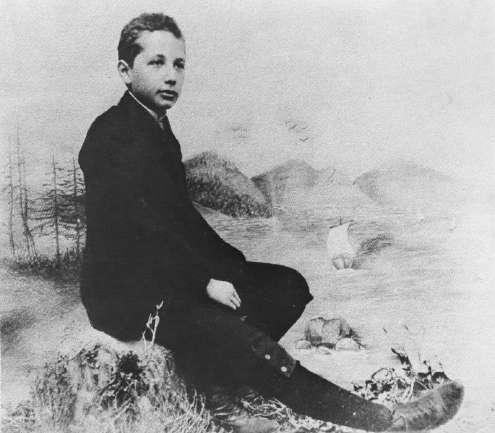
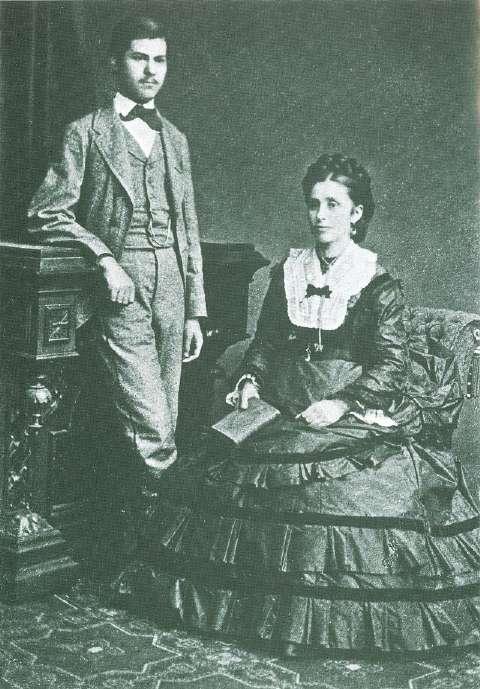
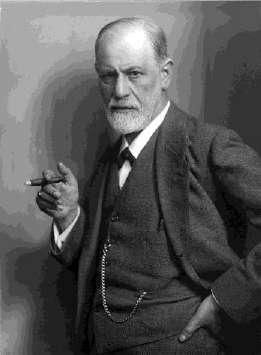
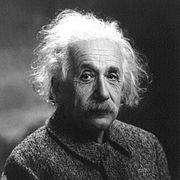 Einstein in 1893 (age 14)
Einstein in 1893 (age 14)
320
Freud (aged 16) and his mother, Amalia, in 1872
A letter from Albert Einstein to Sigmund Freud
Dear Professor Freud,...
Is there any way of delivering mankind from the menace of war?
It is common knowledge that, with the advance of modern science, this issue has come to mean a matter of life and death for civilization as we know it; nevertheless, for all the zeal displayed, every attempt at its solution has ended in a lamentable breakdown.
I believe, moreover, that those whose duty it is to tackle the problem professionally and practically are growing only too aware of their impotence to deal with it, and have now a very lively desire to learn the views of men who, absorbed in the pursuit of science, can see world-problems in the perspective distance lends. As for me, the normal objective of my thought affords no insight into the dark places of human will and feeling. Thus, in the enquiry now proposed, I can do little more than seek to clarify the question at issue and, clearing the ground of the more obvious solutions, enable you to bring the light of your far-reaching knowledge of man's instinctive life to bear upon the problem...
...As one immune from nationalist bias, I personally see a simple way of dealing with the superficial (i.e. administrative) aspect of the problem: the setting up, by international consent, of a legislative and judicial body to settle every conflict arising between nations. Each nation would undertake to abide by the orders issued by this legislative body, to invoke its decision in every dispute, to accept its judgments unreservedly and to carry out every measure the tribunal deems necessary for the execution of its decrees. But here, at the outset, I come up against a difficulty; a tribunal is a human institution which, in proportion as the power at its disposal is inadequate to enforce its verdicts, is all the more prone to suffer these to be deflected by extrajudicial pressure. This is a fact with which we have to reckon; law and might inevitably go hand in hand, and juridical decisions approach more nearly the ideal justice demanded by the community (in whose name and interests these verdicts are pronounced) in so far as the community has effective power to
275
321
compel respect of its juridical ideal. But at present we are far from possessing any supranational organization competent to render verdicts of incontestable authority and enforce absolute submission to the execution of its verdicts. Thus I am led to my first axiom: the quest of international security involves the unconditional surrender by every nation, in a certain measure, of its liberty of action, its sovereignty that is to say, and it is clear beyond all doubt that no other road can lead to such security.
The ill-success, despite their obvious sincerity, of all the efforts made during the last decade to reach this goal leaves us no room to doubt that strong psychological factors are at work, which paralyse these efforts. Some of these factors are not far to seek. The craving for power which characterizes the governing class in every nation is hostile to any limitation of the national sovereignty. This political power-hunger is wont to batten on the activities of another group, whose aspirations are on purely mercenary, economic lines. I have specially in mind that small but determined group, active in every nation, composed of individuals who, indifferent to social considerations and restraints, regard warfare, the manufacture and sale of arms, simply as an occasion to advance their personal interests and enlarge their personal authority.
But recognition of this obvious fact is merely the first step towards an appreciation of the actual state of affairs. Another question follows hard upon it: how is it possible for this small clique to bend the will of the majority, who stand to lose and suffer by a state of war, to the service of their ambitions? (In speaking of the majority, I do not exclude soldiers of every rank who have chosen war as their profession, in the belief that they are serving to defend the highest interests of their race, and that attack is often the best method of defence.) An obvious answer to this question would seem to be that the minority, the ruling class at present, has the schools and press, usually the Church as well, under its thumb. This enables it to organize and sway the emotions of the masses, and make its tool of them.
Yet even this answer does not provide a complete solution. Another question arises from it: How is it these devices succeed so well in rousing men to such wild enthusiasm, even
276
322
to sacrifice their lives? Only one answer is possible. Because man has within him a lust for hatred and destruction. In normal times this passion exists in a latent state, it emerges only in unusual circumstances; but it is a comparatively easy task to call it into play and raise it to the power of a collective psychosis. Here lies, perhaps, the crux of all the complex of factors we are considering, an enigma that only the expert in the lore of human instincts can resolve.
And so we come to our last question. Is it possible to control man's mental evolution so as to make him proof against the psychoses of hate and destructiveness? Here I am thinking by no means only of the so-called uncultured masses. Experience proves that it is rather the so-called "Intelligentzia" that is most apt to yield to these disastrous collective suggestions, since the intellectual has no direct contact with life in the raw, but encounters it in its easiest, synthetic form upon the printed page.
To conclude: I have so far been speaking only of wars between nations; what are known as international conflicts. But I am well aware that the aggressive instinct operates under other forms and in other circumstances. (I am thinking of civil wars, for instance, due in earlier days to religious zeal, but nowadays to social factors; or, again, the persecution of racial minorities). But my insistence on what is the most typical, most cruel and extravagant form of conflict between man and man was deliberate, for here we have the best occasion of discovering ways and means to render all armed conflicts impossible.
Yours very sincerely,
A. Einstein
Richard Feynman's Letter to His Departed Wife
277
323
October 17, 1946
D’Arline, I adore you, sweetheart.
I know how much you like to hear that but I don't only write it because you like it I write it because it makes me warm all over inside to write it to you.
It is such a terribly long time since I last wrote to you almost two years but I know you'll excuse me because you understand how I am, stubborn and realistic; and I thought there was no sense to writing.
But now I know my darling wife that it is right to do what I have delayed in doing, and that I have done so much in the past. I want to tell you I love you. I want to love you. I always will love you.
I find it hard to understand in my mind what it means to love you after you are dead but I still want to comfort and take care of you and I want you to love me and care for me. I want to have problems to discuss with you I want to do little projects with you. I never thought until just now that we can do that. What should we do. We started to learn to make clothes together or learn Chinese or getting a movie projector. Can't I do something now? No. I am alone without you and you were the "idea-woman" and general instigator of all our wild adventures.
When you were sick you worried because you could not give me something that you wanted to and thought I needed. You needn’t have worried. Just as I told you then there was no real need because I loved you in so many ways so much. And now it is clearly even more true you can give me nothing now yet I love you so that you stand in my
278
324
way of loving anyone else but I want you to stand there. You, dead, are so much better than anyone else alive.
I know you will assure me that I am foolish and that you want me to have full happiness and don't want to be in my way. I'll bet you are surprised that I don't even have a girlfriend (except you, sweetheart) after two years. But you can't help it, darling, nor can I I don't understand it, for I have met many girls and very nice ones and I don't want to remain alone but in two or three meetings they all seem ashes. You only are left to me. You are real.
My darling wife, I do adore you.
I love my wife. My wife is dead.
Rich.
PS Please excuse my not mailing this but I don't know your new address.
Richard Feynman's Letter to his former student Koichi Manom
Dear Koichi,
I was very happy to hear from you, and that you have such a position in the Research Laboratories. Unfortunately your letter made me unhappy for you seem to be truly sad. It seems that the influence of your teacher has been to give you a false idea of what are worthwhile problems. The worthwhile problems are the ones you can really solve or help solve, the ones you can really contribute something to. A problem is grand in science if it lies before us unsolved and we see some way for us to make some headway into it. I would advise you to take even simpler, or as you say, humbler, problems until you find some you can really solve easily, no matter how trivial. You will get the pleasure of
279
325
success, and of helping your fellow man, even if it is only to answer a question in the mind of a colleague less able than you. You must not take away from yourself these pleasures because you have some erroneous idea of what is worthwhile.
You met me at the peak of my career when I seemed to you to be concerned with problems close to the gods. But at the same time I had another Ph.D. Student (Albert Hibbs) whose thesis was on how it is that the winds build up waves blowing over water in the sea. I accepted him as a student because he came to me with the problem he wanted to solve. With you I made a mistake, I gave you the problem instead of letting you find your own; and left you with a wrong idea of what is interesting or pleasant or important to work on (namely those problems you see you may do something about). I am sorry, excuse me. I hope by this letter to correct it a little.
I have worked on innumerable problems that you would call humble, but which I enjoyed and felt very good about because I sometimes could partially succeed. For example, experiments on the coefficient of friction on highly polished surfaces, to try to learn something about how friction worked (failure). Or, how elastic properties of crystals depend on the forces between the atoms in them, or how to make electroplated metal stick to plastic objects (like radio knobs). Or, how neutrons diffuse out of Uranium. Or, the reflection of electromagnetic waves from films coating glass. The development of shock waves in explosions. The design of a neutron counter. Why some elements capture electrons from the L-orbits, but not the K-orbits. General theory of how to fold paper to make a certain type of child’s toy (called flexagons). The energy levels in the light nuclei. The theory of turbulence (I have spent several years on it without success). Plus all the “grander” problems of quantum theory.
No problem is too small or too trivial if we can really do something about it.
You say you are a nameless man. You are not to your wife and to your child. You will not long remain so to your immediate colleagues if you can answer their simple questions when they come into your office. You are not nameless to me. Do not remain nameless to
280
326
yourself – it is too sad a way to be. Know your place in the world and evaluate yourself fairly, not in terms of your naïve ideals of your own youth, nor in terms of what you erroneously imagine your teacher’s ideals are.
Best of luck and happiness.
Sincerely, Richard P. Feynman.
Einstein's Letter to His Son Hans Albert
My dear Albert,
Yesterday I received your dear letter and was very happy with it.
I was already afraid you wouldn’t write to me at all anymore. You told me when I was in Zurich, that it is awkward for you when I come to Zurich. Therefore I think it is better if we get together in a different place, where nobody will interfere with our comfort.
I will in any case urge that each year we spend a whole month together, so that you see that you have a father who is fond of you and who loves you. You can also learn many good and beautiful things from me, something another cannot as easily offer you.
What I have achieved through such a lot of strenuous work shall not only be there for strangers but especially for my own boys. These days I have completed one of the most beautiful works of my life, when you are bigger, I will tell you about it.
I am very pleased that you find joy with the piano.
281
327
This and carpentry are in my opinion for your age the best pursuits, better even than school. Because those are things which fit a young person such as you very well. Mainly play the things on the piano which please you, even if the teacher does not assign those.
That is the way to learn the most, when you are doing something with such enjoyment that you don’t notice that the time passes.
I am sometimes so wrapped up in my work that I forget about the noon meal. . . .
Be with Tete kissed by your Papa.
Regards to Mama.
The Kurt Gödel Letter to John von Neumann
Princeton, 20 March 1956
Dear Mr. von Neumann:
With the greatest sorrow I have learned of your illness. The news came to me as quite unexpected. Morgenstern already last summer told me of a bout of weakness you once had, but at that time he thought that this was not of any greater significance. As I hear, in the last months you have undergone a radical treatment and I am happy that this treatment was successful as desired, and that you are now doing better. I hope and wish for you that your condition will soon improve even more and that the newest medical discoveries, if possible, will lead to a complete recovery.
Since you now, as I hear, are feeling stronger, I would like to allow myself to write you about a mathematical problem, of which your opinion would very much interest me: One
282
328
can obviously easily construct a Turing machine, which for every formula F in first order predicate logic and every natural number n, allows one to decide if there is a proof of F of length n (length = number of symbols). Let ψ(F,n) be the number of steps the machine requires for this and let φ(n) = maxF ψ(F,n). The question is how fast φ(n) grows for an optimal machine. One can show that φ(n) ≥ k ⋅ n. If there really were a machine with φ(n) ∼ k ⋅ n (or even ∼ k ⋅ n2), this would have consequences of the greatest importance. Namely, it would obviously mean that in spite of the undecidability of the Entscheidungsproblem, the mental work of a mathematician concerning Yes-or-No questions could be completely replaced by a machine. After all, one would simply have to choose the natural number n so large that when the machine does not deliver a result, it makes no sense to think more about the problem. Now it seems to me, however, to be completely within the realm of possibility that φ(n) grows that slowly. Since it seems that φ(n) ≥ k ⋅ n is the only estimation which one can obtain by a generalization of the proof of the undecidability of the Entscheidungsproblem and after all φ(n) ∼ k ⋅ n (or ∼ k ⋅ n2) only means that the number of steps as opposed to trial and error can be reduced from N to log N (or (log N)2). However, such strong reductions appear in other finite problems, for example in the computation of the quadratic residue symbol using repeated application of the law of reciprocity. It would be interesting to know, for instance, the situation concerning the determination of primality of a number and how strongly in general the number of steps in finite combinatorial problems can be reduced with respect to simple exhaustive search.
I do not know if you have heard that "Post’s problem", whether there are degrees of unsolvability among problems of the form (∃ y) φ(y,x), where φ is recursive, has been solved in the positive sense by a very young man by the name of Richard Friedberg. The solution is very elegant. Unfortunately, Friedberg does not intend to study mathematics, but rather medicine (apparently under the influence of his father). By the way, what do you think of the attempts to build the foundations of analysis on ramified type theory, which have recently gained momentum? You are probably aware that Paul Lorenzen has pushed ahead with this approach to the theory of Lebesgue measure. However, I believe that in important parts of analysis non-eliminable impredicative proof methods do appear.
283
329
I would be very happy to hear something from you personally. Please let me know if there is something that I can do for you. With my best greetings and wishes, as well to your wife,
Sincerely yours, Kurt Gödel
Planck Letter to Schrödinger [2 April 1926]
Berlin Grunewald
2 April 1926
Dear Colleague,
Many thanks for the reprint. I read your article the way an inquisitive child listens in suspense to the solution of a puzzle that he has been bothered about for a long time, and I am delighted with the beauties that are evident to the eye, but I have to study it much more closely and in detail to be able to grasp it completely. Besides, I find it extremely congenial that such a prominent role is played by the action function W. I have always been convinced that its significance in physics was still far from exhausted. There is just one little blemish that I would have been glad to see removed. Old Jacobi would have been a little annoyed, despite all his interest, over the alteration of his name. Can it still be changed?
Yours, Planck
284
330
General relativity, Albert Einstein's theory of gravitation, has been extremely successful in explaining a wide range of phenomena, from the behavior of celestial bodies to the properties of black holes. However, it has some limitations and fails to explain certain observations in certain circumstances. Some of the key failures of General relativity include:
Singularities: General relativity predicts the existence of singularities, points where the curvature of spacetime becomes infinite and the laws of physics break down. This creates a problem for physicists, as they cannot use General relativity to make predictions in these regions.
Dark matter and dark energy: General relativity fails to account for the observed gravitational effects of dark matter and dark energy, which make up the majority of the universe's mass-energy content. This has led to the development of alternative theories, such as modified gravity theories, to explain these observations.
Quantum mechanics: General relativity is a classical theory, meaning it does not incorporate the principles of quantum mechanics. This leads to problems when trying to reconcile GR with quantum theories, such as quantum field theory, which describe the behavior of particles on very small scales.
Inadequate description of the early universe: General relativity cannot be used to describe the very early universe, when it was dominated by quantum mechanical processes. A successful theory of quantum gravity is needed to describe this epoch.
These limitations do not diminish the success of General relativity as a theory, but they highlight areas where further research and development is needed to deepen our understanding of the universe.
331
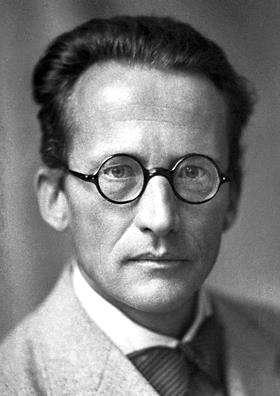


The scientist only imposes two things, namely truth and sincerity, imposes them upon himself and upon other scientists.
332
― Erwin Schrödinger
Zürich
8 April 1926
My dear Professor,
I was indescribably delighted by your kind card of April 2nd. I am especially happy that the basic idea seems plausible to you, and am now very confident that in the course of time it will be worked out in a way that is useable in all respects, no matter how imperfect it may be at present.
I am very ashamed about the dreadful "k", and immediately wrote to the printers; I hope it can still be changed. Many thanks the worst of it is the ironclad consistency with which I disfigured this hallowed name in five places; it would have been terribly distressing to me.
Thank you very much for kindly sending me your lecture, which I had already read with the greatest interest several days earlier. I was especially captivated by the dramatic force with which you sketch the status of the theory of relativity and the quantum theory in the third section and with the way you pick out the key difficulty and make it comprehensible without formulas. Just this difficulty concerning the energy unfortunately still persists, quite unimpaired.
If I did not answer your card, which gave me so much pleasure, at once, it was because I wanted to send along at least a little something that was new. Enclosed are the results for the Stark Effect in H. It seems that the intensities come out completely right. The assumption on which it is based is that the electrical charge density is given by the square of the wave function, and that the normalization integral has the same value for all the individual proper vibrations that belong to one coarse Balmer level. I cannot yet describe the numbers I am sending you as incontestable because the calculation is very involved
285
Schrödinger Letter to Planck [8 April 1926]
333
and I have not yet checked everything again. In any case Epstein’s formula for the splitting comes out completely unaltered (as I already said at the end of my "Second Paper"); also the "Selection Rule for the azimuthal quantum number". Moreover, the “exclusion of zero for the equatorial quantum number” also comes out quite automatically there is no proper vibration that would correspond to the quantum orbit that collides with the nucleus. It is also very gratifying that although the three unobserved components at relative distances of 5, 6, and 8, are not actually “forbidden” theoretically, they receive an intensity that is 80 to 700 times smaller than that of the weakest observed component, so that their non-appearance becomes very understandable.
I am now calculating Hα, Hβ, Hγ. The calculations are unfortunately terribly difficult to see through and I cannot manage to bring them into a simpler form.
With best compliments and greetings I remain, dear Professor, always
Yours faithfully,
E. Schrödinger
Planck Letter to Schrödinger [24 May 1926]
Berlin Grunewald
24 May 1926
Dear Colleague,
I have owed you my thanks for some time for your kindly having sent me your last Annalen article on quantization. You can imagine the interest and enthusiasm with which I plunge into the study of these epoch making works, although I now make very slow headway penetrating into this peculiar train of thought. In connection with that I have high hopes of the beneficial influence of a certain amount of familiarity which in
286
334
time facilitates the use of new concepts and ideas, as I have often found already. But what especially delights me, and the reason for my really writing you today, is the joyful hope that we may soon have the opportunity to hear you and to talk to you here. As my colleague Grüneisen tells me, your visit to a meeting of the Physical Society has not been cancelled but only somewhat postponed, and it may even still take place this semester. Let me tell you explicitly how much pleasure all of the physicists here would have in hearing you yourself present your new theory and in coming into contact with your ideas. And don’t be afraid that we will make too many demands on you and tire you out. I do not know if you are already familiar with Berlin. But I hope you will find that in certain respects life here is freer and more independent than in a smaller city where everyone checks on everyone else, and there is no possibility of completely withdrawing at some time without anybody noticing it.
I should like to express just one little selfish request. In case you can come in July, please not before the 11th. Because at the beginning of July I have to go to Bonn for a few lectures and I would be sad if I missed your visit here as a result. Above all, however, I wish you the relaxation that you need after your demanding labors, and the complete recovery of your powers. I should be especially grateful if, at your convenience, you would send me a brief card with a word about your travel plans.
In the meantime, with best regards,
Yours sincerely,
M. Planck
Schrödinger Letter to Planck [31 May 1926]
Zürich
287
31 May 1926 335
My dear Professor,
Thank you very much for your kind and extremely gracious letter of the 24th, which now has finally decided me to accept the attractive invitation for this semester, however things may go. I have just written to Mr. Grüneisen. It goes without saying that, so far as I am concerned, a date when you are absent from Berlin is out of the question. Now Mr. Grüneisen was kind enough to point out to me that it might also be possible to consider a slight postponement of the date of the meeting, and since a postponement of the July 9th meeting would surely come too near the end of the semester, as he himself thinks, I have allowed myself to suggest that perhaps the June 25th meeting could be put off until July 2nd. Would that still work out with your trip to Bonn? The 25th of June would not be acceptable to me because from the 21st to the 26th a number of foreign physicists (among them Sommerfeld, Langevin, Pauli, Stern, P. Weiss) are meeting here for lectures and discussions. Now the connections work out so badly that I would have to leave here on the afternoon of the 23rd at the latest, if I do not want to travel through the night directly before the Berlin meeting. And I should not like to do that because then I am often completely exhausted and may possibly speak very badly.
I should be very grateful if you would give me some hints, in just a few words, as to how I should plan my lecture. What I mean is, should I think more of the fact that you and Einstein and Laue are in the audience a thought without which I should feel uneasy or should I direct myself more to those gentlemen who are further removed from theoretical work; which would of course have as an inevitable result that those named above (and a considerable number of others) will be very bored. In other words: should I recapitulate in a simplified way what has already been published or, passing over that lightly, talk more about perturbation theory, the Stark effect, and general intensity formulas? (Otherwise I could only mention these latter things briefly at the end, or else it would get to be too long; it takes about an hour for a general survey of the fundamentals, for the purpose of orientation and without much calculation, as I know from our colloquium here).
288
336
Naturally I can also do both, if there is the opportunity, one in a general meeting and the other in a more restricted colloquium.
Today I received a very kind and very interesting letter of 13 closely written pages from H. A. Lorentz which I still have to study in detail, of course. He raises a good many interesting questions; however, he does not reject it at all, on the whole, but still appears to be very critical. Lorentz sees one of the chief difficulties in reinterpreting classical mechanics as “wave mechanics” to lie in the fact that the “wave packet” which is to replace the “representative point” of classical mechanics in macroscopic problems, (possibly also in the motion of the electron on paths of slight curvature), that, I say, this wave packet will not remain together, but, on the contrary, will gradually spread into larger volumes by “diffraction”, according to general theorems of wave theory. I felt that to be a serious point at first yet, strange to say, it seems not to be the case, at least not always. For the harmonic oscillator (which always remains the simplest typical example of a mechanical system which one can work with so easily and agreeably), I was able to produce a wave packet, by superposition of a large number of neighboring characteristic oscillations of high order (i.e. high quantum number), which is practically confined to a small spatial region, and which as a matter of fact revolves in precisely the harmonic ellipses described by classical mechanics for an arbitrarily long time without dispersing! I believe that it is only a question of computational skill to accomplish the same thing for the electron in the hydrogen atom. The transition from microscopic characteristic oscillations to the macroscopic “orbits” of classical mechanics will then be clearly visible, and valuable conclusions can be drawn about the phase relations of adjacent oscillations. For the present these phase relations and amplitude relations remain postulates, however; they can naturally also be so arranged that for large quantum numbers a “revolving” mass point does not result: e.g. since the structure is linear it can also be arranged so that two wave groups, revolving independently of one another, result perhaps the equations are only approximately linear.
289
337
A second very delicate question that concerns Lorentz is the energy that is to be assigned to a characteristic oscillation. It is quite certain that the Balmer-Bohr energy value is not to be ascribed to the characteristic oscillation. In general one should not consider the individual characteristic oscillation as the equivalent of the individual Bohr orbit; that is a mistaken parallel, as the above construction shows. The concept “energy” is something that we have derived from macroscopic experience and really only from macroscopic experience. I do not believe that it can be taken over into micro-mechanics just like that, so that one may speak of the energy of a single partial oscillation. The energetic property of the individual partial oscillation is its frequency. Its amplitude must be determined in quite another way I believe by normalizing the integral of the square of the total excitation to the value of the electronic charge.
Mr. Grüneisen was kind enough to hold out to me the prospect that either you or Mr. von Laue would offer me hospitality. If it doesn’t cause too much trouble I am naturally very pleased about it, and in any case I am very grateful for your kind offer. I would strive to give as little inconvenience as possible, and ask that it be so arranged that you are disturbed as little as possible; naturally any improvised lodging you choose is completely adequate for me.
Thank you once again for all the kindness that is always shown me by Berlin in general and by you especially, Professor Planck. With sincere respect, I remain
Yours faithfully,
E. Schrödinger
Planck Letter to Schrödinger [4 June 1926]
Berlin Grunewald 4 June 1926
290
338
Dear Colleague,
I am extremely pleased that you could make up your mind to visit Berlin before the end of this semester, and I know for certain that the rest of the physicists here think the same way.
My colleague Grüneisen informs me that he has some doubts with regard to July 2nd and suggests July 16th instead. I should just like to join him in this. The semester here lasts until the beginning of August so that things are still in full swing in the middle of July and we need not be afraid that many will have already gone away. Grüneisen himself is an exception, to be sure, but he has to set out so early that he would unfortunately miss your visit all the same. But the 16th of July would suit the rest of us very well, and the only question is whether it is suitable for you yourself.
My wife and I would be especially happy if you would stay with us. We hope very much that we will be able to make you comfortable in our house. I shall take care above all that you remain master of your own actions to the greatest possible extent, and especially that, at those times over and above the “official” periods dedicated to the Physical Society, you have the opportunity to withdraw and to occupy yourself as you see fit. I know from experience how pleasant it often is to have a possibility of this kind. Moreover, my house stands at your disposal night and day for as long as you are inclined to stay.
You also talk about the level at which your lecture should best be given, or rather at which it should begin. I would like to propose, in agreement with my colleagues, that you imagine your audience to be students in the upper classes who, therefore, have already had mechanics and geometrical optics, but who have not yet advanced into the higher realms; to whom, therefore, the Hamilton-Jacobi differential equation, if they are acquainted with it at all, signifies a difficult result of profound research, deserving of reverence, and not by any means something to be taken for granted. Under no circumstances, however, should you be afraid that any one of us will consider one
291
339
sentence of yours to be superfluous. For even if the sentence should not be necessary for an understanding of your train of thought, it would always offer the particular interest of seeing what special paths your thought takes and which particular forms your perception favors. For all of us the main point of your lecture will be what you yourself in your letter designated as a general survey of the fundamentals for the purpose of orientation without much calculation and without many individual problems. Perhaps it would be easier and more natural for you to carry this out, if on the other day, Saturday morning the 17th of July, you were to give a second lecture in our Colloquium, aimed at more special matters with supplements and continuations of the lines of thought you will have described at the more general meeting. I hope that this seems suitable to you, since you already indicated such a possibility yourself. That can very easily be arranged, and I ask you only to let me know so that we can take care of matters.
What a cross-fire of critical, enthusiastic, and questioning acclamations might now besiege you! But still, it is a thing with incredible prospects. I see that you have already energetically taken hold of the big question of whether and under what conditions a wave packet will remain intact. I have such a feeling that for closed systems it is the boundary conditions that take care of the conservation [of the wave packet], whereas a satisfactory solution for phenomena in an unbounded space seems to me to be possible only on the basis of new assumptions. That, however, is a cura posterior.
In the meantime my cordial greetings and the friendly request that you write me the day and hour that you arrive here.
Yours faithfully, Planck
The Gravitational acceleration is given by:
292
340
g = GM R2
The earth is not a perfect sphere. As the radius of the earth increases from the poles to the equator, the value of g = GM R2 becomes greater at the poles than at the equator. Therefore, for practical purposes we take acceleration due to gravity as a constant.
Weight of the object on the moon = 1 6 × its weight on the earth. Inside
N protons: N protons= massofthesun massoftheproton = 2×1030 1.7×10−27 ≈ 1.2 × 1057
number of nuclear fusion reactions inside the sun: N reactions ≈ 1.2×1057 4 = 3 × 1056
the sun, we have
The
341
If the nuclear fission chain reaction is not controlled, a nuclear explosion will occur.
Subdwarfs are a class of stars that are relatively low in mass and luminosity compared to main-sequence stars of the same spectral type. They are typically located near the bottom of the main sequence on a Hertzsprung-Russell diagram, which is a graph used to plot the luminosity of a star against its surface temperature. Subdwarfs are thought to have formed in the halo of the Milky Way, which is a vast and relatively sparse region that surrounds the main disk of the galaxy. The stars in the halo are old, metalpoor, and less densely concentrated than stars in the disk. This lack of metals and low density is thought to have prevented the formation of gas giants like Jupiter and Saturn in these stars' planetary systems.
There are two main types of subdwarfs: Population II subdwarfs and extreme subdwarfs Population II subdwarfs are metal-poor stars that are intermediate in mass between main-sequence stars and white dwarfs. Extreme subdwarfs are even lower in mass and luminosity than Population II subdwarfs and are thought to be the remnants of the first generation of stars to form in the universe.
Due to their low luminosity, subdwarfs are difficult to detect and study. However, they are of great interest to astronomers because they can provide important clues about the early history of the universe and the formation of galaxies. By studying subdwarfs, astronomers can learn about the conditions in the universe during its early stages, including the abundance of elements, the distribution of gas and dust, and the rate of star formation. In essence, subdwarfs are an important class of stars that can provide valuable insights into the early universe and the evolution of galaxies. Despite their low luminosity, astronomers continue to study these fascinating objects in order to better understand the universe and its history.
Subdwarfs
342
Supergiants
Supergiants are a class of stars that are much larger and more luminous than main-sequence stars of the same temperature and composition. They are typically located at the upper right corner of the Hertzsprung-Russell diagram, which is a graph used to plot the luminosity of a star against its surface temperature. Supergiants are thought to have formed from the evolution of massive main-sequence stars, which are stars that are more than eight times the mass of the sun. When these stars reach the end of their lifetimes, they experience a series of dramatic changes that can cause them to rapidly increase in size and luminosity. There are two main types of supergiants: red supergiants and yellow supergiants Red supergiants are relatively cool stars with temperatures ranging from 3,500 to 5,000 Kelvin. They are the largest and most luminous stars in the universe, with diameters that can be up to 1,500 times that of the sun and luminosities that can be 100,000 times greater. Yellow supergiants are warmer stars with temperatures ranging from 5,000 to 7,000 Kelvin. They are intermediate in size and luminosity between red supergiants and main-sequence stars
Supergiants play a crucial role in the evolution of galaxies because they are massive enough to trigger the formation of new generations of stars through their explosive deaths, which are known as supernovae. When a supergiant star explodes as a supernova, it releases a tremendous amount of energy and heavy elements into the interstellar medium, which can then be incorporated into new stars and planets. To sum up, supergiant stars are a significant type of stars that play a critical role in the development of galaxies and the emergence of new generations of stars and planets. Despite their extreme size and luminosity, they are relatively short-lived, with lifetimes of only a few million years, making them a valuable subject of study for astronomers seeking to better understand the life cycles of stars and the evolution of the universe.
343
Supernovae are extremely powerful explosions that occur when a star runs out of fuel and can no longer generate enough pressure to counteract the force of gravity. As a result, the star collapses in on itself, releasing a huge amount of energy in the process. Supernovae can be categorized into Type I and Type II. Type I supernovae occur in binary star systems where one star has evolved into a white dwarf, a compact and extremely dense star that is no longer capable of sustaining nuclear fusion. The white dwarf draws material from its companion star, increasing its mass until it reaches a critical point and explodes.
Type II supernovae occur in single massive stars that have exhausted the fuel in their cores and can no longer generate the pressure needed to counteract gravity. As a result, the core collapses in on itself, releasing a huge amount of energy and creating a shockwave that propels the outer layers of the star into space. Supernovae have a profound impact on the universe and the stars and galaxies around them. They release huge amounts of energy, heavy elements, and cosmic rays into the interstellar medium, which can then be incorporated into new stars and planets. They also play a crucial role in the evolution of galaxies by triggering the formation of new generations of stars and shaping the distribution of elements in the universe. To sum up, supernovae are an important aspect of the life cycles of stars and the evolution of the universe. They are powerful explosions that release large amounts of energy and heavy elements into the interstellar medium, and they play a crucial role in the creation of new stars and the shaping of
 Kepler's Supernova Remnant: Composite of X-ray, Optical, and Infrared Data
Kepler's Supernova Remnant: Composite of X-ray, Optical, and Infrared Data
344
galaxies. Despite their rarity, they are a fascinating subject of study for astronomers and a reminder of the incredible forces at work in the universe.
Cepheids are a type of variable star that are characterized by their bright, pulsating light. They are named after the first known Cepheid, Delta Cephei, which was discovered in the constellation Cepheus in the early 1700s. Cepheids are intermediate-mass stars, with masses ranging from several times that of the sun to around 20 solar masses. They are located in the yellow-giant region of the Hertzsprung-Russell diagram, which is a graph used to plot the luminosity of a star against its surface temperature.
Cepheids are known for their regular, pulsating light, which changes in brightness over a period of a few days to several weeks. This pulsation is caused by variations in the size and temperature of the star's outer layers, which leads to changes in its luminosity. The period of this pulsation is directly related to the star's intrinsic luminosity, which makes Cepheids useful tools for determining distances in the universe. In particular, the period-luminosity relationship of Cepheids has been used to establish the distances to nearby galaxies and to determine the size and expansion rate of the universe. This relationship has been confirmed through observations of Cepheids in the Milky Way and in other nearby galaxies, and it has been used to establish the cosmic distance ladder, a series of distance measurements that allows astronomers to determine the distances to galaxies and other objects in the universe.
To sum up, Cepheids are an important type of variable star that has played a crucial role in our understanding of the universe. Their regular, pulsating light and well-established periodluminosity relationship have made them valuable tools for determining distances and mapping the large-scale structure of the universe. Despite their relatively short lifetimes, Cepheids will continue to be a fascinating subject of study for astronomers for many years to come.
345
Galaxies visible with the naked eye in the Southern hemisphere
Galaxies do not exist in isolation
Gravity: everything in the Universe attracts everything else
The expansion of the Universe should slow down over time
When the universe was very dense and very hot, General Relativity and Quantum Mechanics were not applicable, but instead Quantum Gravity ruled the world.
Copernicus brought the idea of a Heliocentric world, and Kepler showed that planets move on ellipses around the sun.
In a flat universe the sum of all angles in a triangle is 180o, in a closed geometry it is larger than 180o, and an open geometry it is smaller than 180o
Karl Raimund Popper [Austrian-born British philosopher, academic and social commentator] mentions five things that are altogether unpredictable:
The production of heavier elements in the stars
The emergence of living organisms
The emergence of sentient animal life
The emergence of human consciousness and theories of self and death in humans
The emergence of explanatory myths, religions, scientific theories, and works of art.
If the universe expands, it was very dense and hot before Then there should be cold / low frequency light around us.
211
346
Radiation: w = 1 3
Cold matter: w = 0
Vacuum: w = −1
The universe, by Heaven's decree Was never formed in time gone by, But is, has been, shall ever be For so say Bondi, Gold and I. Stay, O Cosmos, O Cosmos, stay the same! We the Steady State proclaim!
George Gamow
Jupiter and its four planet-size moons - called the Galilean satellites
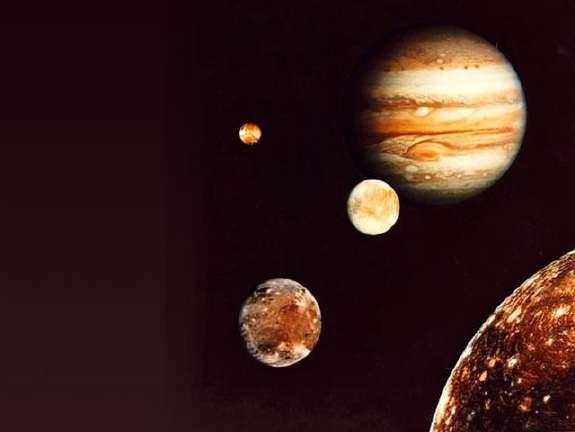
Where did the universe come from?
The ultimate mystery is inspiring new ideas and new experiments
Rayleigh scattering
The scattering intensity is proportional to 1 λ4
Aristotle (384−322 BC) said that the earth is spherical in shape.
Aristarchus (312−230 BC) speculated that the Universe is Sun-centered.
Eratosthenes (276−194 BC) found that the size of the Earth has some v ariations.
212 w = pressure energydensity
347
Quantum field theory is a theoretical framework for describing the behavior of particles and fields in the universe. It is a combination of quantum mechanics and special relativity, and provides a mathematical framework for understanding the behavior of particles on both small and large scales. In Quantum field theory, particles are treated as excitations of underlying quantum fields. For example, the photon field gives rise to photons; the electron field gives rise to electrons, and so on. The interactions between particles are described by the exchange of virtual particles, which are fluctuations in the underlying fields.
One of the key features of Quantum field theory is renormalization, a technique used to remove infinities that appear in calculations involving the interactions between particles. This allows for predictions of particle behavior and interactions to be made with high precision. Quantum field theory has been extremely successful in describing a wide range of phenomena, from the behavior of particles in particle accelerators to the behavior of the early universe. It is also the basis for the Standard Model of particle physics, which describes the interactions of all known elementary particles and has been confirmed by numerous experiments. However, like any theoretical framework, Quantum field theory has limitations. For example, it is not a fully consistent theory of quantum gravity, meaning it cannot describe the behavior of particles in the presence of very strong gravitational fields, such as those found in black holes. Additionally, it is not yet clear how to reconcile Quantum field theory with general relativity in a consistent and predictive manner. These limitations highlight areas where further research and development is needed to deepen our understanding of the universe.
348
Relativistic quantum mechanics is a theory that combines the principles of quantum mechanics with those of special relativity. Unlike non-relativistic quantum mechanics, which is based on the Galilean transformation, Relativistic quantum mechanics is based on the Lorentz transformation, which describes the behavior of particles traveling at speeds close to the speed of light. In Relativistic quantum mechanics, particles are described by wave functions, just as in non-relativistic quantum mechanics. However, the wave functions must be Lorentz-invariant, meaning they must have the same form in all reference frames. This leads to new and unique predictions for the behavior of particles, such as the spin-statistics theorem, which states that particles with half-integer spin (such as electrons) must obey Fermi-Dirac statistics, while particles with integer spin (such as photons) must obey Bose-Einstein statistics.
Relativistic quantum mechanics has been extremely successful in describing a wide range of phenomena, from the behavior of particles in particle accelerators to the behavior of particles in the early universe. It is also the basis for the theory of quantum field theory, which describes the interactions of particles on both small and large scales. However, like any theoretical framework, Relativistic quantum mechanics has limitations. For example, it does not incorporate the principles of general relativity, meaning it cannot describe the behavior of particles in strong gravitational fields. Additionally, it is not yet clear how to reconcile Relativistic quantum mechanics with general relativity in a consistent and predictive manner. These limitations highlight areas where further research and development is needed to deepen our understanding of the universe.
349
The pulsating Universe theory
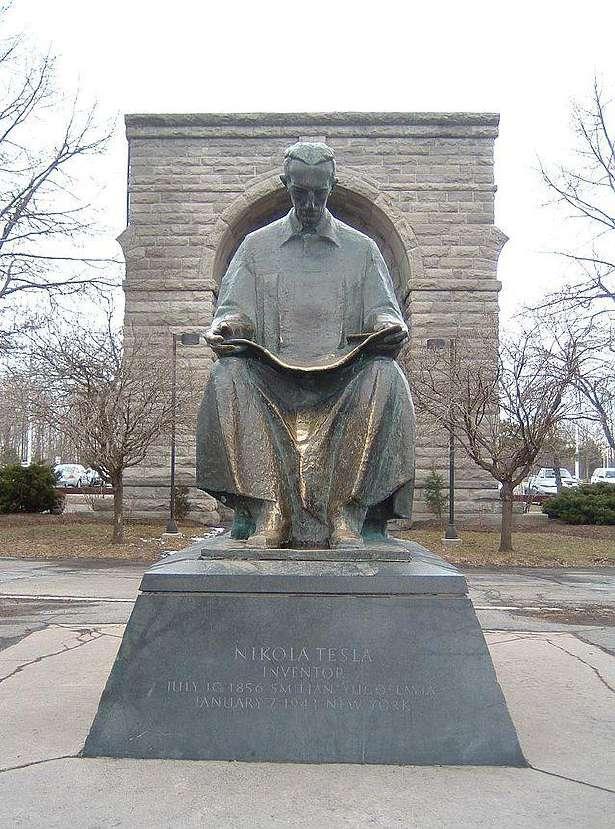
A Big Bang hypothesis variant that proposes that the universe experiences periodic cycles of expansion and contraction. There is likely to be an "explosion" of the universe, known as Big Bang, near the end of the compression stage, when the Universe is compressed in a small volume of high density.
 Statue of Nikola Tesla in the State Park of the Niagara Falls
Statue of Nikola Tesla in the State Park of the Niagara Falls
350
Ten most common elements in the Milky Way Galaxy estimated spectroscopically
The largest stars (eg: Betelgeuse, Antares) are over 400 million km across (more than 300 times the diameter of the Sun)
The brightest stars are over 10,000 times brighter than the sun.
Planck orbital momentum:
213
Z Element Mass fraction in parts per million 1 Hydrogen 739,000 2 Helium 240,000 8 Oxygen 10,400 6 Carbon 4,600 10 Neon 1,340 26 Iron 1,090 7 Nitrogen 960 14 Silicon 650 12 Magnesium 580 16 Sulfur 440
CP = ħ 351
CP = Planck mass × c × Planck length
When ρ ≈ 109 Kg/m3, the electrons become relativistic (pc >> m0c2). Soon thereafter, the energetic relativistic electrons convert protons in the iron nuclei into neutrons by process of electron capture:
proton + electron → neutron + neutrino
This reaction proceeds only if the kinetic energy of the electron:
The relativistic mass of the electron is given by:
��G is the gravitational coupling constant
v → velocity a electron must travel so that its relativistic mass to be equal to Planck mass
KE = (mnc2 − mpc2 − mec2) = 0.78 MeV mec2 √1 v2 c2 − mec2 = (mnc2 − mpc2 − mec2) ( me mn mp ) 2 = 1− v2 c2 v = c √1−( me mn−mp )2
m = me √1 v2 c2 1− v2 c2 = me 2 m2
√ℏc G
MPlanck
v = c √1 αG
If m =
=
:
352
Sir Isaac Newton (1642–1726) created most of his major discoveries in 1665–1667, shortly once receiving his Bachelor’s degree from the University of Cambridge. Though Newton earned backing for any study, the University closed as a result of the plague, and he had to come to his family range in Lincolnshire for eighteen months. it had been throughout this point that he discovered his theory of colours, the law of gravitation, and calculus. In later years, with the exception of following analysis in physics and arithmetic, Newton devoted a lot of effort to alchemy and to Scriptural studies.
Decay: XZ A (Parent nucleus) → Y Z 2 A 4 (daughter nucleus) + He2 4 (alpha particle)
capture: n0 1 (Neutron) + XZ A → X∗ Z A (excited state) gammadecay XZ A+1 + γ
Alpha
Neutron
"The true logic of this world is in the calculus of probabilities."
√ℏG c3
which quantumfluctuations
James Clerk Maxwell
→ The scale below
in the fabric of spacetime would become enormous.
353
Galileo (1564–1642) is usually referred to as the daddy of recent science. He experimented with balls rolling down inclined planes, that diode him to deduce the law of inertia, and conjointly the law of free fall, that states that each one objects, regardless of their mass, fall to the world with an equivalent acceleration. Galileo Galilei was conjointly the primary person to purpose a telescope to the sky, revealing that there square measure thousands of stars invisible to the naked eye; that four moons orbit Jupiter; which Venus goes through crescent and gibbous phases just like the moon. These astronomical observations provided proof for the Copernican heliocentric system, that he then endeavored to win over the globe of in his book Dialogue on the 2 Chief World Systems, Copernican and Ptolemaic (1632). The book ran contrary to the official dogma and was prohibited the subsequent year by the church (The church allowed discussion of the theoretical account, as long because it was bestowed as a theory, not as fact. Verity nature of the universe had to be deduced from Scriptures, not from astronomical observations). At age 70, Galileo Galilei was tried by the Inquisition, forced to forswear, and so spent the remainder of his life below confinement
Hermann Minkowski was the child of Lithuanian Jews; he changed over to Christianity to improve his occupation possibilities. He showed Einstein arithmetic at Zurich Polytechnic Institute. As an understudy, Einstein didn't appreciate Minkowski's talks, while Minkowski recollected Einstein as a "lethargic canine" and didn't anticipate that him should create anything advantageous. Amazingly, he adjusted his perspective rapidly subsequent to perusing Einstein's 1905 paper. He spearheaded the idea of a four-dimensional spacetime and utilized it to build up a mathematical detailing of extraordinary relativity. Einstein was as yet unmoved with his previous teacher and felt that Minkowski's numerical brilliance just darkened the actual importance of his hypothesis. Be that as it may, soon it was Einstein's chance to alter his perspective. Minkowski's four-dimensional spacetime was key for the development of Einstein's hypothesis of attractive energy
(M1) + Nuclei (M2) → Larger Nuclei (M3 < M1 + M2) + heat (and light energy)
Nuclei
354
Stellar dynamics is the study of the motion and evolution of stars within a celestial system, such as a star cluster or a galaxy. It encompasses both the mathematical models that describe the motion of stars, as well as the physical processes that drive their evolution. The basic principles of stellar dynamics are based on Newton's laws of motion, which describe how the force of gravity affects the motion of celestial bodies. In a star cluster or galaxy, the mutual gravitational attraction between stars creates complex patterns of motion that can be modeled using numerical simulations. Stellar dynamics plays a crucial role in our understanding of the evolution of galaxies and the distribution of dark matter within them. By observing the motion of stars and gas within a galaxy, astronomers can infer the presence of invisible matter and study its effects on the visible components of the galaxy. Additionally, the study of stellar dynamics has important implications for a range of astrophysical phenomena, such as the formation and evolution of star clusters, the dynamics of binary star systems, and the dynamics of supermassive black holes in the centers of galaxies.
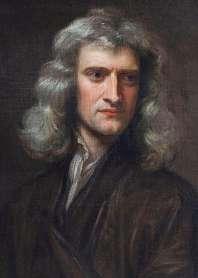
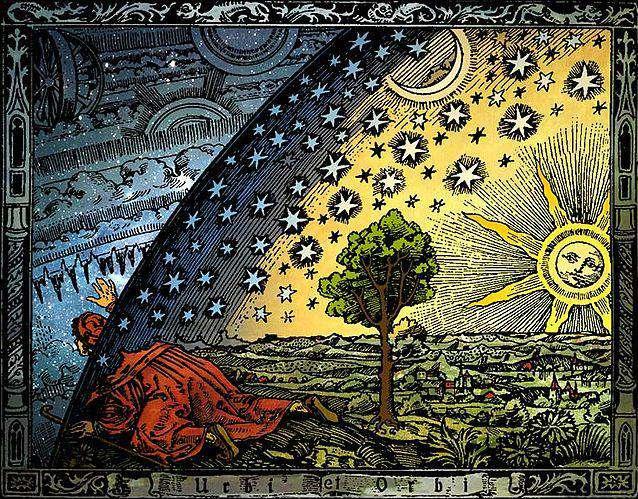
"No great discovery was ever made without a bold guess."
355
― Isaac Newton
General theory of relativity is a highly successful theory of gravity that has been confirmed by numerous experiments and observations. However, like any scientific theory, it is not without its problems and limitations. Some of the problems with general relativity are:
1. Dark Matter and Dark Energy: Despite being one of the most successful theories of gravity, general relativity cannot explain the observed motions of galaxies and the large scale structure of the universe, which require the presence of a large amount of dark matter and dark energy.
2. Singularities: General relativity predicts the existence of singularities, regions of infinite density and zero size, at the centers of black holes and the beginning of the universe. These singularities are beyond the reach of current scientific understanding and are seen as a limitation of the theory.
3. Quantum Mechanics: General relativity is a classical theory and is incompatible with quantum mechanics, the theory of the subatomic world. A successful theory of quantum gravity, which would combine the principles of general relativity and quantum mechanics, has not yet been developed.
4. Predictions for gravitational waves: General relativity predicts the existence of gravitational waves, ripples in the fabric of spacetime caused by the acceleration of massive objects. While gravitational waves have been directly detected, their behavior is not in agreement with the predictions of general relativity, leading to the suggestion that the theory may need to be modified or extended.
5. Black Hole Information Paradox: General relativity also predicts that information about objects that fall into a black hole is lost forever, which contradicts the principles of quantum mechanics. This paradox remains one of the most important unresolved issues in theoretical physics.
Despite these problems, general theory of relativity continues to be a fundamental part of our understanding of gravity and the universe. Researchers are actively working on finding solutions to these problems and developing a more complete theory of gravity.
356
Special theory of relativity is a highly successful theory that has been confirmed by numerous experiments and observations. However, like any scientific theory, it is not without its limitations and problems. Some of the problems with special relativity are:
1. Incompatibility with Quantum Mechanics: Special relativity is a classical theory that is incompatible with quantum mechanics, the theory of the subatomic world. A successful theory of quantum field theory, which would combine the principles of special relativity and quantum mechanics, has not yet been developed.
2. Problem of Unification: Special relativity is a theory of space and time, but it does not include a theory of gravity. In order to unify all of the fundamental forces of nature, a theory of quantum gravity that incorporates special relativity and a theory of gravity is needed.
3. Limitations of Non-Inertial Frames: Special relativity assumes that all frames of reference are equivalent and that the laws of physics are the same in all inertial frames. However, this assumption is not applicable in non-inertial frames, such as those in strong gravitational fields or those accelerating through space.
4. Infinite Energy Densities: Special relativity predicts that the energy density of a particle traveling at the speed of light would be infinite, which is not observed in nature.
5. Limitations of Relativistic Mass: The concept of relativistic mass, which increases as an object approaches the speed of light, has been criticized for being non-physical and for not providing a consistent description of particle behavior.
Despite these limitations, special theory of relativity remains a fundamental part of our understanding of the nature of space and time. Its predictions have been confirmed by numerous experiments, and it continues to be an important part of our understanding of the universe.
357
A star is a massive, luminous ball of plasma that is sustained by nuclear fusion reactions in its core. Stars come in a wide range of sizes, masses, and temperatures and they play a crucial role in shaping the universe we observe today. Here are some of the key features and characteristics of stars:
Formation: Stars form from clouds of gas and dust known as molecular clouds. Gravity causes these clouds to collapse and the center becomes so dense and hot that nuclear fusion reactions are triggered, resulting in the formation of a star.
Structure: The internal structure of a star can be divided into several distinct layers, including the core, radiative zone, convective zone, and outer atmosphere. The core is the hottest and densest part of the star and is where most of the fusion reactions occur.
Nuclear Fusion: Nuclear fusion is the process by which two atomic nuclei combine to form a heavier nucleus, releasing a large amount of energy in the process. This is the source of a star's energy and the key to its stability.
Types: Stars come in a range of types, including main sequence stars, giants, supergiants, and white dwarfs. These different types are determined by the star's mass, temperature, luminosity, and stage of evolution.
Evolution: Stars evolve over time, with the most massive stars evolving the quickest. The final stage of a star's evolution depends on its mass, with less massive stars evolving into white dwarfs and more massive stars becoming neutron stars or black holes.
Light: Stars emit light and other forms of electromagnetic radiation as a result of their high temperatures and the nuclear fusion reactions taking place in their cores. The light emitted by a star can reveal important information about its composition, temperature, and surface conditions.
Planetary Systems: Many stars have planetary systems, with planets orbiting around them. The study of these planetary systems provides important insights into the formation and evolution of planets, as well as the conditions necessary for life to exist.
Overall, stars play a crucial role in the universe, providing the energy and elements necessary for the formation of other celestial objects and supporting the evolution of life on planets. Understanding the properties and behavior of stars is an ongoing area of research in astrophysics.
358
Astrobiology is a multidisciplinary field of study that seeks to understand the origin, evolution, and distribution of life in the universe. It combines the knowledge and methods from astronomy, biology, chemistry, geology, and other sciences to answer questions about life in the universe.
Here are some of the key topics and questions addressed by astrobiology:
1. The origin of life: One of the main questions in astrobiology is how life first emerged on Earth. Scientists study the conditions that existed on the early Earth and other potentially habitable environments in the universe to understand the conditions necessary for the emergence of life.
2. The search for extraterrestrial life: Another central theme in astrobiology is the search for life beyond our solar system. Scientists use various techniques, such as the study of exoplanet atmospheres and the analysis of microbial signatures in meteorites, to search for evidence of extraterrestrial life.
3. The study of habitable environments: Astrobiology also involves the study of habitable environments in the universe, including exoplanets, moons, and asteroids. Scientists are searching for environments that could support life and are using this information to identify the best targets for future missions to search for life.
4. The evolution of life: Astrobiology also studies the evolution of life on Earth and how it has been shaped by environmental conditions, such as changes in climate, atmospheric composition, and the presence of other life forms.
5. The future of life: Finally, astrobiology also considers the future of life on Earth and in the universe. Scientists study the potential for life to survive and evolve in extreme environments, such as in the deep subsurface of other planets or in the presence of hazardous events like large impacts or supernovae.
Overall, astrobiology is a rapidly growing field that is providing new insights into the origin and evolution of life in the universe. It holds the potential to answer some of the most fundamental questions about our place in the universe and the nature of life itself.
359

360
Astrochemistry is the study of the chemical composition and processes in astronomical objects, including stars, planets, moons, comets, asteroids, and interstellar and intergalactic environments. It is an interdisciplinary field that combines chemistry, physics, and astronomy to understand the formation and evolution of these objects. Here are some of the key topics and questions addressed by astrochemistry:
Interstellar and intergalactic chemistry: Astrochemists study the chemical composition of the gas and dust in interstellar and intergalactic space, including molecular clouds, nebulae, and galaxies. They use observations of molecular and atomic spectra to identify and quantify the presence of different chemicals in these environments.
Star and planet formation: Astrochemists also study the chemical processes that occur during the formation of stars and planets, including the formation of complex organic molecules and the formation of planetary atmospheres.
Comets and asteroids: The study of comets and asteroids is also an important part of astrochemistry. Scientists use observations of these objects to understand their composition and the processes that took place during the early solar system.
Extraterrestrial life: Astrochemistry plays a crucial role in the search for extraterrestrial life. Scientists use spectroscopic techniques to analyze the atmospheres of exoplanets and search for signatures of biologically important compounds, such as oxygen and methane.
Prebiotic chemistry: Astrochemistry also explores the origin and evolution of prebiotic chemistry, which is the set of chemical reactions that led to the formation of the first living organisms on Earth. Scientists study the formation and behavior of complex organic molecules in different astronomical environments to understand how life may have arisen in the universe.
Overall, astrochemistry is an important field that provides insights into the chemical composition and processes in astronomical objects. It holds the potential to answer fundamental questions about the formation and evolution of the universe, as well as the potential for life elsewhere in the cosmos.
361
A Plasmon is a quantized electro-magnetic wave propagating in dense dielectric plasma. It behaves like a relativistic Bose particle with energy = ℏѡp where ѡp is the Plasmon frequency.
energetically unstable
Plasmon neutrino-antineutrino pair
"A world where only a tiny super-elite are capable of understanding advanced science and technology and its applications would be, to my mind, a dangerous and limited one. I seriously doubt whether long-range beneficial projects such as cleaning up the oceans or curing diseases in the developing world would be given priority. Worse, we could find that technology is used against us and that we might have no power to stop it. I don’t believe in boundaries, either for what we can do in our personal lives or for what life and intelligence can accomplish in our universe. We stand at a threshold of important discoveries in all areas of science. Without doubt, our world will change enormously in the next fifty years. We will find out what happened at the Big Bang. We will come to understand how life began on Earth. We may even discover whether life exists elsewhere in the universe. While the chances of communicating with an intelligent extra-terrestrial species may be slim, the importance of such a discovery means we must not give up trying. We will continue to explore our cosmic habitat, sending robots and humans into space. We cannot continue to look inwards at ourselves on a small and increasingly polluted and overcrowded planet. Through scientific endeavour and technological innovation, we must look outwards to the wider universe, while also striving to fix the problems on Earth. And I am optimistic that we will ultimately create viable habitats for the human race on other planets. We will transcend the Earth and learn to exist in space. This is not the end of the story, but just the beginning of what I hope will be billions of years of life flourishing in the cosmos. And one final point we never really know where the next great scientific discovery will come from, nor who will make it. Opening up the thrill and wonder of scientific discovery, creating innovative and accessible ways to reach out to the widest young audience possible, greatly increases the chances of finding and inspiring the new Einstein. Wherever she might be. So remember to look up at the stars and not down at your feet. Try to make sense of what you see and wonder about what makes the universe exist. Be curious. And however difficult life may seem, there is always something you can do and succeed at. It matters that you don’t just give up. Unleash your imagination. Shape the future."
Stephen Hawking, Brief Answers to the Big Questions
362
Quarks are the building blocks of matter. They are the smallest units of matter that have properties of both particles and waves, making them an important part of quantum mechanics. Quarks are not found freely in nature, but are instead found inside particles called hadrons. The two main types of hadrons are baryons (such as protons and neutrons) and mesons. Quarks come in six different "flavors": up, down, charm, strange, top, and bottom. Up and down quarks are the lightest and make up the bulk of matter in the universe, including protons and neutrons. The other four flavors of quarks are much heavier and are not found in everyday matter.
Quarks also carry a fractional electric charge, unlike electrons which carry a whole electric charge. Up quarks have a charge of +2/3, down quarks have a charge of 1/3, and the other four flavors of quarks have charges of either +2/3 or −1/3. Quarks are held together by the strong force, one of the four fundamental forces of nature. This force is what binds quarks together to form protons and neutrons, and holds protons and neutrons together to form atomic nuclei. The strong force is much stronger than the electromagnetic force, which is responsible for holding electrons in orbit around the nucleus.
Quarks are not observed as individual units, but instead are always found inside particles. This is due to the confinement property of the strong force, which means that quarks are always bound together and cannot be separated from each other. This makes it difficult to study quarks directly, but their properties can be inferred from the properties of particles that contain them. Overall, quarks play a critical role in our understanding of the nature of matter and the universe. Their unique properties and behavior under the strong force help explain the structure and stability of matter, and are essential for understanding many phenomena in physics and cosmology.
363
"The laws of physics demand the existence of something called 'negative energy'."
Stephen Hawking, Brief Answers to the Big Questions
222 Quarks Generation Name Symbol Antiparticle Spin Charge (e) Mass (MeV/c2) 1 up u u 1 2 + 2 3 2.2 04 +06 down d d 1 2 1 3 4.6 04 +05 2 charm c c 1 2 + 2 3 1,280±30 strange s s 1 2 1 3 96 4 +8 3 top t t 1 2 + 2 3 173,100±600 bottom b b 1 2 1 3 4,180 30 +40
364
Leptons are another type of fundamental particle that make up the matter in the universe. Unlike quarks, leptons do not experience the strong force, and are not found inside hadrons. Leptons are lighter than quarks and are characterized by their lack of strong interaction.
There are six different types of leptons, known as flavors: electron, electron neutrino, muon, muon neutrino, tau, and tau neutrino. The electron and muon are charged particles with a negative electric charge, while the tau is also charged but has a positive charge. The neutrinos, on the other hand, are neutral particles that have a very small or zero mass.
The electrons and neutrinos play important roles in a variety of physical processes, such as chemical reactions, beta decay, and the creation and destruction of light elements in the early universe. Muons and taus are similar to electrons but much heavier, and they also play a role in a variety of physical processes, including cosmic rays and high-energy particle interactions.
Leptons also participate in weak interactions, which are one of the four fundamental forces of nature. These interactions are responsible for phenomena such as beta decay, where a neutron decays into a proton, electron, and electron antineutrino.
Overall, leptons are fundamental particles that make up the matter in the universe and play important roles in a variety of physical processes. They are distinct from quarks in that they do not experience the strong force, are lighter, and participate in weak interactions.
365
Leptons
"If one neglected pressure, a uniform spherically systematic symmetric star would contract to a single point of infinite density. Such a point is called a singularity."
Stephen Hawking, Brief Answers to the Big Questions
223
Generation Name Symbol Antiparticle Spin Charge (e) Mass (MeV/c2) 1 Electron e e+ 1 2 1 0.511 Electron neutrino νe νe 1 2 0 < 0.0000022 2 Muon μ μ + 1 2 1 105.7 Muon neutrino νμ νμ 1 2 0 < 0.170 3 Tau τ τ + 1 2 1 1,776.86±0.12 Tau neutrino ντ ντ 1 2 0 < 15.5
366
Bosons are a type of elementary particle that carries the force between other particles. They are named after the Indian physicist Satyendra Nath Bose, who first described them in the early 20th century. Unlike fermions, which are the building blocks of matter and include electrons, quarks, and leptons, bosons do not make up matter themselves but are instead responsible for mediating the forces between particles.
There are several different types of bosons, each of which is associated with a different fundamental force:
Photons: Photons are bosons that mediate the electromagnetic force, which is responsible for interactions between charged particles. Since they have no mass, photons move at the speed of light. They are also responsible for carrying light and other forms of electromagnetic radiation.
W and Z bosons: These bosons mediate the weak force, which is responsible for processes such as beta decay. The weak force is one of the four fundamental forces of nature, and the W and Z bosons play a crucial role in this force.
Gluons: Gluons are bosons that mediate the strong force, which is responsible for binding quarks together to form protons and neutrons and holding protons and neutrons together to form atomic nuclei.
Higgs boson: The Higgs boson is a boson that was discovered at the Large Hadron Collider (LHC) in 2012. It is associated with the Higgs field, which is responsible for giving particles mass. The Higgs boson is thought to play a crucial role in explaining why some particles have mass and others do not.
Overall, bosons are particles that mediate the forces between other particles, including the electromagnetic force, the weak force, the strong force, and the Higgs field. They are an important part of our understanding of the fundamental forces of nature and the structure of matter.
367
224 Bosons Name Symbol Antiparticle Spin Charge (e) Mass (GeV/c2) Interaction mediated Observed Photon γ Self 1 0 0 Electromagnetism Yes W boson W W+ 1 1 80.385±0.015 Weak interaction Yes Z boson Z Self 1 0 91.1875±0.0021 Weak interaction Yes Gluon g Self 1 0 0 Strong interaction Yes Higgs boson H0 Self 0 0 125.09±0.24 Mass Yes Graviton G Self 2 2 0 Gravitation No
"Black hole has a boundary called the event horizon. It is where gravity is just strong enough to drag light back and prevent it from escaping."
368
Stephen Hawking, Brief Answers to the Big Questions
Lyrae stars
Lyrae stars are a type of variable star that is named after the constellation Lyra, where the first known Lyrae star, Delta Lyrae, was discovered. They are also commonly known as RR Lyrae stars, where the "RR" stands for "RR Lyrae type". Lyrae stars are low-mass, old stars that are located in the halo of our Milky Way galaxy and in other nearby galaxies. They have masses ranging from about 0.5 to 1 solar mass and are typically metal-poor, meaning they contain fewer elements heavier than helium than do the sun and other stars in the Milky Way. What sets Lyrae stars apart from other types of stars is their variability. They are pulsating variable stars, which means that their brightness changes over a regular period of time, ranging from about 12 hours to several days. This variability is caused by changes in the size and temperature of the star's outer layers, which results in changes in its luminosity.
Lyrae stars are important tools for astronomers because they are useful for studying the structure and evolution of our Milky Way and other nearby galaxies. Their metal-poor nature makes them valuable tracers of the early history of these galaxies, and their well-defined pulsation periods allow astronomers to use them to determine the distances to these galaxies. In addition, Lyrae stars have been used to study the nature of dark matter, the mysterious substance that makes up most of the matter in the universe. By measuring the distribution of Lyrae stars in the Milky Way and other galaxies, astronomers can gain insight into the distribution of dark matter and how it affects the evolution of these galaxies. Essentially, Lyrae stars are a fascinating subtype of variable star that provide crucial insights into the development and structure of the Milky Way and other nearby galaxies. Their pulsating nature and metal-poor characteristics make them valuable tracers of the early history of these galaxies, and their welldefined pulsation periods make them useful for determining distances. They will continue to be a subject of study for astronomers for many years to come.
369
T Tauri stars
T Tauri stars are a class of young, pre-main-sequence stars that are named after the prototype T Tauri, a star located in the constellation Taurus. These stars are typically less than 10 million years old and are still in the process of contracting and heating up as they approach the main sequence, the stage in a star's life when it begins to shine through nuclear fusion. T Tauri stars are generally low-mass stars, with masses ranging from 0.1 to 2 times that of the sun. They are characterized by their variability, which is caused by changes in the amount of material falling onto the star from its surrounding disk. This material can cause the star to vary in brightness over a period of a few hours to several days.
T Tauri stars are also surrounded by a disk of gas and dust, known as a protoplanetary disk, which is the birthplace of planets. By studying T Tauri stars and their disks, astronomers can learn about the early stages of planet formation and gain insight into the processes that lead to the formation of planetary systems. In addition, T Tauri stars are useful for studying the star formation process itself. By observing the characteristics of these young stars and their disks, astronomers can learn about the conditions that lead to star formation and the mechanisms that drive the early stages of star and planet formation. To sum up, T Tauri stars are a valuable type of young, pre-main-sequence star that play a crucial role in our understanding of the star formation process and the formation of planetary systems. Their variability and the presence of protoplanetary disks around them make them fascinating subjects of study for astronomers, and they will continue to be a source of new discoveries for many years to come.
"I'm sure the universe is full of intelligent life. It's just been too intelligent to come here. "
370
― Arthur C. Clarke
White dwarfs are the remnants of low- to intermediate-mass stars that have exhausted the nuclear fuel in their cores. They are among the most common types of stars in our Milky Way galaxy, and are of great interest to astronomers because they offer insight into the later stages of a star's life and the evolution of the universe. White dwarfs are extremely dense stars, with a typical size similar to that of Earth but with a mass similar to that of the sun. They are composed mainly of carbon and oxygen, which have been compressed by the force of gravity as the star has cooled and shrunk. Because of their small size and high density, white dwarfs have very weak luminosities and are difficult to detect.
One of the most interesting features of white dwarfs is that they are a source of extreme pressure and temperature. These conditions, along with the presence of heavy elements in the star's interior, make them ideal laboratories for the study of matter at extreme densities and temperatures. White dwarfs are also of great interest to astronomers because they play a role in several important astronomical processes. For example, some white dwarfs are part of binary star systems, and they can accrete matter from their companion stars, leading to interesting and sometimes explosive phenomena such as novae and Type Ia supernovae
Type Ia supernovae, in particular, are important because they are used as "standard candles" to measure distances in the universe. By studying the characteristics of these explosions, astronomers have been able to make some of the most important discoveries about the expansion and age of the universe. To sum up, white dwarfs are an important and fascinating class of stars that offer a unique window into the later stages of a star's life and the evolution of the universe. Their extreme densities, temperatures, and the presence of heavy elements make them ideal laboratories for the study of matter at extreme conditions, and their role in important astronomical processes such as novae and Type Ia supernovae make them valuable tools for astronomers.
371
This is how the length of a spaceship changes at different speeds.
According to theory of relativity:
v = 0
When you sit with a nice girl for two hours you think it's only a minute. But when you sit on a hot stove for a minute you think it's two hours. That's relativity.
−Albert Einstein
v = 0.87c
For massive stars:
v = 0.99c
Luminosity ∝(mass)4
Luminosity=solarluminosity× (mass)4 (solarmass)4
while for less massive stars:
Luminosity ∝(mass)3
Luminosity=solarluminosity× (mass)3 (solarmass)3
372
Photons quanta of the electromagnetic field
Gluons quanta of the strong interaction field
Intermediate bosons quanta of the weak force field
near the earth's surface
between particles
A spaceship of length L0 is moving with respect to a space station with a speed v. The length L of the spaceship as measured by the space station is:
The length L of the spaceship as measured by the space station decreases in proportion to its total energy.
Force Potential Energy Gravity
mg mgh Gravity
GMm r2 GMm r Electric Charge q1q2 4πε0r2 q1q2 4πε0r Electric Field qE qV Ideal Spring kx 1 2 kx2 Friction μN
L = L0 × √1 v2 c2 L = L0 × m0c2 mc2
KE = m0c2 × L0 L L 373
The Kinetic energy of the spaceship as measured by the space station increases in proportion to the fractional change in the length L of the spaceship as measured by the space station.
The radiation of the early universe consisted of high-energy photons, whose average energy E at the temperature T was roughly estimated as kBT, where kB denoted the Boltzmann constant. The interaction between the radiation and the matter was represented by two processes:
KE ∝ ΔL L
Photons → particle + antiparticle γ + γ → p + p γ + γ → e +e γ + γ → n + n Particle + antiparticle → photons p + p → γ + γ n + n → γ + γ e + e → γ + γ 374
In general, white dwarfs are the dying members of stars that have stopped burning. They are compact and therefore very dense. This leads to degeneracy pressure, which is due to quantum mechanical effect. It is this degeneracy pressure which prevents the total collapse of the dead star and gives it a finite radius. Unlike gas pressure, degeneracy pressure can exist even at absolute zero of temperature.
Pulsars are nothing but rotating neutron stars
The size of each is around 10 km
The rotational period of a pulsar is comparable with that of a neutron star
They both result from supernova explosions
There is a mass limit to neutron stars. It is approximately about 4 solar mass. Beyond this limit the degenerate neutron pressure will not be sufficient to overcome the gravitational contraction and the star collapses.
If photons were emitted from a black body of temperature T, then the average photon energy is:
375
where: c2 denoted the second radiation constant.
When a beam of light from a star passes close to the Sun, it gets deflected from its original direction. The star appears to be displaced from its true position by an angle θ (in radians):
where M is the mass of the Sun and R is its radius.
E= hυ = kBT
λ × T = c2
θ = 2GM Rc2
θ = 2GM Rc2
Einstein's
θ = 4GM Rc2 = 1.74" 376
Mc2 = Planckforce 2 × θ × R Newton's view
= 0.87"
view
Gravitons + Bosons have been hypothesized but never observed experimentally.
Hydrogen (H) and helium (He) were found in large quantities in the early Universe while all elements up to iron (Fe) were synthesized in stars and other elements were born in the explosive deaths of massive stars (M > 1.4 solar masses).
Electron chargeinversion antielectron
Opposite electric charges attract
Photon
Same electric charges repel
Photon
377
Top quark
The most massive fundamental particle and interacts with the Higgs boson the most
Massless bosons
Gluons + gravitons + photons
Plasma → Hot mixture of positive and negative electrically charged particles with interacting photons.
Proton-proton chain and the CNO cycle fusion processes
Increase the amount of helium-4
Reduce the number of protons in the core of the star
378
Electromagnetism → combined force of electricity and magnetism
Low-energy cosmic rays are mainly protons (90%) and helium-4 nuclei (9%) thrown out by the Sun
Feynman diagrams are pictorial representation of the mathematical expressions which sketch out possible interactions between particles. Time passes along the horizontal axis and the vertical axis represents space.
Things with energy >
, or taking place in spaces <
3 fall outside of the explanation of the Standard Model.
Double-beta decay is the simultaneous beta decays of two neutrons inside an atomic nucleus, emitting two electrons and two electron antineutrinos.
Total energy of a molecule = electronic energy + translational energy + rotational energy + vibrational energy
G
√ℏG c
379
√ℏc5
Centripetal acceleration:
In the time interval T, the particle moves a distance of 2πr, which is equal to the circumference of the particle's circular path. Therefore, because its speed is equal to the circumference of the circular path divided by the period, or v = 2πr
, it follows that
Hund's rule:
When an atom has orbitals of equal energy, the order in which they are filled by electrons is such that a maximum number of electrons have unpaired spins.
a = v2 r
T
r = vT 2π a = 2πv T Since: v = p m : pω = ma
380
Hubble's law ( dR dt = HR) does not apply to galaxies bound together by gravitational forces, like the colliding galaxies
Newtonian gravity is a good approximation to General Theory of Relativity when
The gravitational field is weak
The velocities are small compared to the speed of light.
The angular momentum J of the black hole cannot exceed the critical value
J∗ = GM2 c . J∗ = G c5 ×M2c4 Mc2
√Planckpower ×J∗ Black Holes Mass stellar-mass black holes 3 – 30Msun super massive black holes 105 − 109Msun intermediate-mass black holes 103Msun primordial black holes Msun micro-black holes Planck mass 381
=
Hagedorn temperature
(Boiling point of hadronic matter)
Temperature at which hadronic matter (i.e. ordinary matter) is no longer stable − it either "evaporate" or convert into quark matter.
The thermal de Broglie wavelength of an electron:
c2 → second radiation constant
λC → reduced Compton wavelength of the electron
T → temperature
Density parameter of the universe:
If ρ = Planck density = c5 ℏG2:
λD = √ h2 2πmekBT λD = √c2 ×λC T
Ω = 8πG 3H2 × ρ
382
"The role played by time at the beginning of the universe is, I believe, the final key to removing the need for a Grand Designer, and revealing how the universe created itself. … Time itself must come to a stop. You can’t get to a time before the big bang, because there was no time before the big bang. We have finally found something that does not have a cause because there was no time for a cause to exist in. For me this means there is no possibility of a creator because there is no time for a creator to have existed. Since time itself began at the moment of the Big Bang, it was an event that could not have been caused or created by anyone or anything. … So when people ask me if a god created the universe, I tell them the question itself makes no sense. Time didn’t exist before the Big Bang, so there is no time for God to make the universe in. It’s like asking for directions to the edge of the Earth. The Earth is a sphere. It does not have an edge, so looking for it is a futile exercise."
― Stephen W. Hawking
Ω = 8π 3 × [ Hubblelength Plancklength ] 2
383
Inverse beta decay
electron + proton → neutron + neutrino
Takes place in stars of extremely high density.
Induced fission
Thermal neutron + Uranium 235 → Uranium 236 → X + Y
X and Y denote the fragments from the fission process.
At the range of 10 15 m, the strong force is approximately 137 times as strong as electromagnetism, a million times as strong as the weak interaction, and 1038 times as strong as gravitation.
Quarks → Hadron particles (protons + neutrons)
Electron capture
Z X A + electron → Z 1 X A + electron neutrino
The Planck scale → the scale at which the quantum effects of gravity become important.
Triple α process
299
384
This process provides the opportunity to produce heavier elements than 8Be
Variation of Mass with Velocity
300 4He + 4He + 4He → 12C + γ
m = m0 √1 v2 c2 For relativistic
v × vP = c2 Thus: m = m0 √1 v vP If m = Planck mass = mPlanck: mPlanck 2 m0 2 = vP (vP –v) v = vP (1− αG) αG is the Gravitational Coupling constant 385
particle:
The probability of two nuclear particles overcoming the Coulomb barrier in order to undergo nuclear fusion reactions is given by the equation:
where E is the kinetic energy of the particles and EG is the Gamow energy:
is the reduced mass of the two particles,
constant, c is the speed of light, and Z1 and Z2 are the respective atomic numbers of each particle.
For two protons,
Temperature at which recombination occurs Redshift at which recombination occurs
Temperature of cosmic microwave background
Uncertainty principle:
P = �� √EG E
EG = 2μc2 × (π�� Z1Z2) 2
μ = m1m2 m1+m2
�� = e2 4πε0ℏc
the fine structure
where
is
EG = 2 × mp 2 × c2 × (π × �� × 1 × 1) 2 = 8.01088 × 10−14 J Tcmb = Trec 1+zrec
386
If the pions which mediate the proton-proton force − travels at the maximum possible speed of c, its range is roughly
For pions, ∆E = 135 MeV or 140 MeV depending on whether they are neutral or charged. Plugging this in for ∆E gives r ∼ 1 fm. Thus the nuclear force is negligible at distances greater than ∼ 1 fm.
If the mass of the core of the white dwarf exceeds 1.44 solar mass, electrons are captured by the nuclei to avoid the violation of the Pauli principle:
e + (Z, A) → (Z − 1, A) + νe
The neutrinos escape the core taking away energy. Considering a mass m falling in from infinity, we can write:
mvfree fall 2 2 = GMm r
When the mass m reaches the surface of the star at r =R, the kinetic energy of the free-fall radiates away as heat.
∆E × ∆t ≥ ℏ 2
r ∼ c × ∆t ∼ ℏc ∆E
387
A protostar is formed by the gravitational collapse of a huge mass of hydrogen gas. The collapse is halted when the nuclear fusion reaction starts and the star becomes stable. Once the fusion process is stopped the star again undergoes collapse. In small star, this collapse is halted by the degenerate electrons (white dwarf). If the mass is high, once again the star collapse and is halted by degenerate neutrons (neutron star). If the mass is still higher, then it collapses to the volume of space where gravity is extreme enough to prevent the escape of even the fastest moving photons (black hole).
In a white dwarf, the electron density is found to be:
which leads to a Fermi kinetic energy:
But T = 107 Kelvin inside a white dwarf so that
Therefore, the electron gas inside the white dwarf is fully degenerate.
P
ne ≈ 1036 per m3 pFc = hc √3ne 8π 3 ≈ 1 2 MeV
kBT = 0.01 MeV pFc >> kBT
388
Bremsstrahlung radiation is the radiation given off by a charged particle (most often an electron) due to its acceleration caused by an electric field of another charged particle (most often a proton or an atomic nucleus).
The Einsteinian special theory of relativity rests on 2 postulates:
• The laws of physics take the same form in all inertial frames.
• The velocity of light in vacuum (c) is a universal constant, which has the same value (∼ 3 ×
108 m/s) in all inertial frames and independent of the motion of the light source.
The electromagnetic energy of a photon:
E = hc λ
where h is the Planck constant, c is the speed of light, λ is the photon wavelength.
The gravitational potential energy between two electrons is given by:
UG = Gme 2 r
where G is the gravitational constant, me is the electron mass, r is the distance between the electrons' centers.
If we assume that the distance r and the electromagnetic photon wavelength λ are related by the formula λ =2πr, then the ratio
389
Gravitational coupling constant characterizing the gravitational attraction between 2 electrons
The electrostatic potential energy between two electrons is given by:
where e is the electron charge, ε0 is the electric constant. If we assume that the distance r and the electromagnetic photon wavelength λ are related by the formula λ =2πr, then the ratio
Fine-structure constant characterizing the strength of the electromagnetic interaction between 2 electrons
• The matter antimatter asymmetry of the Universe is of order 10−10
• Li, Be, B, and Sc, Ti, V, Cr, Mn is significantly more abundant in cosmic rays.
UG E = Gme 2 ℏc = ��G
UE = e2 4πε0r
UE E = e2 4πε0ℏc = �� ��G × ��= Conductancequantum (Planckcharge)2 × π × (Electronrestmassenergy)2 Planckpower
390
To read more: https://g.co/kgs/JMx6qs
Conclusion
Since the beginning of human civilization, one question that has baffled us is: What makes the universe what it is? More than 2000 years ago, Greek philosophers specifically raised this question. Many distinct individuals and groups have posed this question in various locations and at various times. Each group has come up with its own answers, which have taken the form of myths, prophecies, divine revelations, and accumulated histories. To address this question, which appears to be as old as human civilization itself, ancient civilisations all around the world recounted creation tales. The question is not just relevant to cosmology; in fact, it offers potential avenues for deciphering the underlying physics of our universe. Despite some significant achievements, not all problems have been resolved. The whole form of the laws of nature is not yet well understood. Without this knowledge, we are unsure of how far we can advance in our quest to comprehend the universe's future. Will it keep growing indefinitely? Is inflation a natural law? Are the electrons indivisible? Or will the universe eventually collapse? From where did we originate? When did we get here? What was the mechanism that led to the unusual and quick expansion of the human brain? Whether a neutrino is massive; if so, how much mass does it have? Does the success of the standard model indicate that we have finally discovered the most comprehensive theory to explain the universe? Theoretical developments and new observational findings are pouring in quickly. Dr. Science uses its laws, theories, and hypotheses to describe the universe. We'll be able to create more precise models of the universe's evolution as time goes on and our telescopes will discover more about the universe's nature as they advance.
Accepting that 99 percent of the universe cannot be observed is a bit challenging. In order to explain their cosmological observations over the past decades, astronomers and cosmologists have been forced to assume the existence of significant amounts of "dark matter." As to whether it is made up of neutrinos or other unusual exotic particles, scientists are still in the dark. What is dark matter, then? There are many researchers looking for answers, but none has found one yet. Understanding how everything came into being and how it acquired its current
elemental makeup is a fundamental problem in cosmology. The universe is a curious place, brimming with wonder and magnificence as well as a myriad of questions left unanswered and unexplained mysteries. No theory in science has ever been proven. Making disprovable predictions is where its power rests. Cosmology is a very dynamic and intriguing field that involves the scientific study of the big-scale characteristics of the universe as a whole. New understandings of the huge universe emerged at the beginning of the 20th century. The answers to the ages-old queries are nearing completion through observations of outer space. What brings us here? What is our origin? Are space and time fundamental or emergent? Is there a beginning to the cosmos, or is it eternal?
The Big Bang theory is a common name for the currently preferred explanation for the universe's creation. The Big Bang theory, according to which the known Universe is thought to have originated from a highly dense, extremely hot initial state is based on general relativity equations that pertain to an expanding, homogeneous, and isotropic universe. This hypothesis additionally explains why galaxies recede according to Hubble's law and why the cosmic microwave background radiation (whose spectrum is a perfect example of the black body spectrum) is nearly homogeneous, with a black body temperature of 2.7 Kelvin. However, the Big Bang hypothesis is unable to explain certain issues: Initial density perturbation, or monopole, horizon, or flatness problems. The theory of general relativity, which views gravity as a manifestation of space-time geometry rather than a force, is universally acknowledged as the most magnificent of all scientific works. Quantum Mechanics and General Relativity do not work together. What about: Before the Big Bang? Neither theory can predict what happened. The unification of so called weak nuclear forces with the Maxwell equations is what known as the Electroweak theory. And the electroweak theory and quantum chromodynamics together constitutes the so called Standard Model of particle physics, which describes everything except gravity. The quest for a theory that can account for all elementary particle events, including their gravitational interaction, continues to be an uphill battle. It has been exciting to see progress made in this approach based on string theory. By considering an elementary particle as a little one-dimensional loop of vibrating string instead of a tiny point like objects, the string theory seeks to provide a more comprehensive explanation of nature. However, it is hard
to observe the strings with the available technology because they are so tiny about 10 33 cm As a result of the microscopic size of the strings, it is essentially impossible to test the theory's underlying assumptions or the math it explains. So far, string theory – which is regarded as the final theory of nature − has not been supported by any direct experimental data. Many physicists and scientists think it is an unsuccessful theory because of this. Even hundreds of years later, the desire to comprehend the interconnected nature of the universe and how we fit within it is still intense. In some ways, the universe does prove to be much bigger and more magnificent than our progenitors could have ever imagined, which makes puzzles about its beginnings and design much more appealing to research.
What about the quarks' substructure? Quarks also appear to be indivisible, like the electron. In fact, no current experiment has been able to show any evidence of the quarks' substructure. Trying to understand what is visible to us while pondering the nature of the cosmos. We are interested in discovering a comprehensive theory of everything that encompasses gravity, quantum mechanics, and all other physical interactions. If we succeed in this, we will truly comprehend the universe and our place in it. Questions abound in cosmology. There is always something new to learn in cosmology, even if it's just answering a question we've never thought to ask before. This is what keeps cosmology so exciting and intriguing.
Famous Michio Kaku quotations that will broaden your cosmic outlook

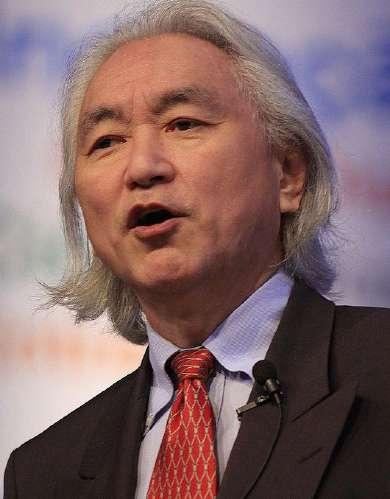
Michio Kaku's name must have come up at least once in your life if you are a fan of modern astronomy. Michio Kaku is a co-founder of the string field theory and the author of several bestselling books, including Parallel Worlds, Beyond Einstein, and Hyperspace. He is currently pursuing the goal of unifying the four basic forces of nature into a single, comprehensive theory. At the moment, he is a lecturer at the CUNY Graduate Center and City College of New York. Therefore, if you enjoy popular science, you must respect this man. There is much to be learned from him and from his knowledge and wisdom. Here are some of the thinker's most insightful quotes that will motivate you to learn more about the universe's creation and functioning.
The human brain has 100 billion neurons, each neuron connected to 10 thousand other neurons. Sitting on your shoulders is the most complicated object in the known universe.
In string theory, all particles are vibrations on a tiny rubber band; physics is the harmonies on the string; chemistry is the melodies we play on vibrating strings; the
universe is a symphony of strings, and the 'Mind of God' is cosmic music resonating in 11 dimensional hyperspace.
One in 200 stars has habitable Earth-like planets surrounding it – in the galaxy, half a billion stars have Earth-like planets going around them – that's huge, half a billion. So when we look at the night sky, it makes sense that someone is looking back at us.
No one knows who wrote the laws of physics or where they come from. Science is based on testable, reproducible evidence, and so far we cannot test the universe before the Big Bang.
In some sense, gravity does not exist; what moves the planets and the stars is the distortion of space and time.
String theory is based on the simple idea that all the four forces of the universe: gravity, the electromagnetic force and the two nuclear forces, can be viewed, as music.
The most complex object in the known universe: brain, only uses 20 watts of power. It would require a nuclear power plant to energize a computer the size of a city block to mimic your brain, and your brain does it with just 20 watts. So if someone calls you a dim bulb, that's a compliment.
Math is discovered. To be invented requires an inventor, but math exists outside of humanity. But ultimately, the laws of the universe will be reduced down to a single equation, perhaps no more than one inch long. But leaves the final question, where did that one inch equation come from?
It is often stated that of all the theories proposed in this century, the silliest is quantum theory. In fact, some say that the only thing that quantum theory has going for it is that it is unquestionably correct.
When you come up with a theory, you fall in love with the beauty the simplicity and elegance of it. But then you have to get a sheet of paper and pencil and crack out all the details. Hundreds and hundreds of pages. Because you have to prove it.
I began to realize something – to understand the future you have to understand physics. Physics of the last century gave us television, radio, microwaves, gave us the Internet, lasers, transistors, computers – all of that from physics.
The idea that excites me the most concerns the two greatest puzzles in science: the origin of the universe, and the origin of consciousness. The origin of the universe is what I do for a living, working on string theory. But I am also fascinated by consciousness.
Science is about principles. It's about concepts. It’s not about memorizing the parts of a flower. It helps to know some of these things, but if that’s all you do that’s not science, science is about principles and concepts.
When we're born, we want to know why the stars shine. We want to know why the sun rises.
Quantum entanglement allows you to send information faster than light, which upset Einstein. But Einstein has the last laugh. The information you send on quantum entanglement is random, useless information. So Einstein still has the last laugh.
However, one new theory says that dark matter may be ordinary matter in a parallel universe. If a galaxy is hovering above in another dimension, we would not be able to see it. It would be invisible, yet we would feel its gravity. Hence, it might explain dark matter.
Technologies that may be realized in centuries or millennium include: warp drive, traveling faster than the speed of light, parallel universes; are there other parallel dimensions and parallel realities? Time travel that we mentioned and going to the stars.
Our best shot at finding life in our solar system might be to look at the moons of Jupiter and Saturn. Mars, increasingly, looks like a dead planet. But the oceans beneath the ice cover of the moons of Jupiter and Saturn may actually have more liquid water than the oceans of Earth.
An event horizon, or the point of no return, is only a byproduct of the bending of space. However, electricity and magnetism, by themselves, have no event horizon. It gets complicated, however, if a black hole has charge, and then this new solution does have an event horizon.
I agree, along with Carl Sagan, that we should eventually become a two planet species. Life is too precious to place on a single planet.
We physicists know that the brain is a milliwatt transmitter of radio. We have computers that can decipher much of this gibberish coming from our brain and we could then use that to control computers.
Sooner or later, we will face a catastrophic threat from space. Of all the possible threats, only a gigantic asteroid hit can destroy the entire planet. If we prepare now, we better our odds of survival. The dinosaurs never knew what hit them.
A hydrogen bomb, for me, was puny compared to the Big Bang – the creation of the universe. That's what I really wanted to work on – the nature of the universe itself, and that’s what I do for a living.
No matter how beautiful the theory, one irritating fact can dismiss the entire formulism, so it has to be proven.
I hope we find evidence of dark matter in the lab and in outer space. This would go a long way to proving the correctness of string theory, which is what I do for a living. That is my day job. So string theory is a potentially experimentally verifiable theory.
We believe that black holes collapse to rings hitting very fast. If you follow through the ring you don't die. The mathematics says you fall straight through, perhaps to another universe.
We are not at the end but at the beginning of a new physics. But whatever we find, there will always be new horizons continually awaiting us.
Physics is often stranger than science fiction, and I think science fiction takes its cues from physics: higher dimensions, wormholes, the warping of space and time, stuff like that.
I think a colony in space will take much longer than sci fiction writers think. It costs $10,000 to put a pound of anything into near earth orbit. That is your weight in gold. It costs about $100,000 a pound to put you on the moon. And it costs $1,000,000 a pound to put you on Mars.
You cannot create new science unless you realise where the old science leaves off and new science begins, and science fiction forces us to confront this.
Chances are, when we meet intelligent life forms in outer space they're going to be descended from predators.
The best theory comes from string theory, which states that dark matter is nothing but a higher vibration of the string. We are, in some sense, the lowest octave of a vibrating string.
According to Einstein, there is no gravitational pull. The earth warps the space-time continuum around our bodies, so space itself pushes us down to the floor. Thus, it is the presence of matter that warps space around it, giving us the illusion that there is a gravitational force pulling on neighboring objects.
These parallel universes are not ghost worlds with an ephemeral existence; within each universe, we have the appearance of solid objects and concrete events as real and as objective as any.
The quantum theory is based on the idea that there is a probability that all possible events, no matter how fantastic or silly, might occur.
Because both quantum theory and Einstein's theory of gravity are united in tendimensional space, we expect that the question of time travel will be settled decisively by the hyperspace theory. As in the case of wormholes and dimensional windows, the final chapter will be written when we incorporate the full power of the hyperspace theory.
Max Planck once remarked, "Science cannot solve the ultimate mystery of Nature." And it is because in the last analysis we ourselves are part of the mystery we are trying to solve.
We have not yet figured out why there is more matter than antimatter in the universe. Only one ten-billionth of the original matter in the early universe survived this explosion, and we are part of it. The leading theory is that something violated the perfect symmetry between matter and antimatter at the Big Bang, but we don't know what it is. There is a Nobel Prize waiting for the enterprising individual who can solve this problem.
One consequence of this formulation is that a physical principle that unites many smaller physical theories must automatically unite many seemingly unrelated branches of mathematics. This is precisely what string theory accomplishes. In fact, of all physical theories, string theory unites by far the largest number of branches of mathematics into a single coherent picture. Perhaps one of the by-products of the physicists' quest for unification will be the unification of mathematics as well.
As all matter is crushed in the final moments before doomsday, intelligent life forms may be able to tunnel into higher-dimensional space or an alternative universe, avoiding the seemingly inevitable death of our universe.
Physicists believe that at the instant of the Big Bang, the universe was in perfect symmetry and there was an equal amount of matter and antimatter. If so, the annihilation between the two would have been perfect and complete, and the universe should be made of pure radiation. Yet here we are, made of matter, which should not be around anymore. Our very existence defies modern physics.
Nobel laureate Richard Feynman was fond of saying that no one really understands the quantum theory. Ironically, although the quantum theory is the most successful theory ever proposed by the human mind.
Given that humanity must one day flee the solar system to the nearby stars to survive, or perish, the question is: how will we get there? The nearest star system, Alpha Centauri, is over 4 light-years away. Conventional chemical propulsion rockets, the workhorses of the current space program, barely reach 40,000 miles per hour. At that speed it would take 70,000 years just to visit the nearest star.
And at the speed of light, you have taken the fastest possible journey to the stars. From your point of view, the trip is instantaneous.
For the ten-dimensional universe, however, there are apparently millions of ways in which to curl up. To calculate which state the ten-dimensional universe prefers, we need to solve the field theory of strings using the theory of phase transitions, the most difficult problem in quantum theory.
In other words, positive matter and energy that we see in stars can warp space-time so that it perfectly describes the motion of heavenly bodies. But negative matter and energy warp space-time in bizarre ways, creating an antigravitational force that can stabilize wormholes and prevent them from collapsing and propel warp bubbles to faster-thanlight velocities by compressing space-time in front of them.
Stephen Hawking has proven a general theorem stating that all solutions of Einstein's equations that allow faster-than-light travel must involve negative matter or energy.
Best Cosmology Books of All Time:
A Brief History of Time
Book by Stephen Hawking
Cosmos
Book by Carl Sagan
The Fabric of the Cosmos
Book by Brian Greene
The Elegant Universe
Book by Brian Greene
The Big Picture: On the Origins of Life, Meaning, and the Universe Itself
Book by Sean Carroll
A Universe from Nothing: Why There Is Something Rather Than Nothing?
Book by Lawrence M. Krauss
The First Three Minutes: A Modern View of the Origin of the Universe
Book by Steven Weinberg
A Short History of Nearly Everything
Book by Bill Bryson
The Grand Design
Book by Stephen Hawking
Death by Black Hole: And Other Cosmic Quandaries
Book by Neil deGrasse Tyson
Pale Blue Dot: A Vision of the Human Future in Space
Book by Carl Sagan
The Hidden Reality: Parallel Universes and the Deep Laws of the Cosmos
Book by Brian Greene
The Universe in a Nutshell
Book by Stephen Hawking
Astrophysics for People in a Hurry
Book by Neil deGrasse Tyson
Parallel Worlds: A Journey through Creation, Higher Dimensions, and the Future of the Cosmos
Book by Michio Kaku
Big Bang: The Origin of the Universe
Book by Simon Singh
Our Mathematical Universe: My Quest for the Ultimate Nature of Reality
Book by Max Tegmark
A Briefer History of Time
Book by Stephen Hawking, Leonard
Mlodinow
Reality Is Not What It Seems: The Journey to Quantum Gravity
Book by Carlo Rovelli, Simon Carnell, Erica Segre
Einstein: His Life and Universe
Book by Walter Isaacson
Black Holes and Time Warps: Einstein's Outrageous Legacy
Book by Kip S. Thorne, Stephen Hawking
The Demon-haunted World: Science As a Candle in the Dark
Book by Carl Sagan
Origins: Fourteen Billion Years of Cosmic Evolution
Book by Neil deGrasse Tyson, Vikas Adam, et al
The Theory of Everything: The Origin and Fate of the Universe
Book by Stephen Hawking
Brief Answers to the Big Questions
Book by Stephen Hawking
Black Holes and Baby Universes
Book by Stephen Hawking
The Black Hole War: My Battle with Stephen Hawking to Make the World Safe for Quantum Mechanics
Book by Leonard Susskind
The Varieties of Scientific Experience: A Personal View of the Search for God
Book by Carl Sagan, Ann Druyan
Hyperspace: A Scientific Odyssey Through Parallel Universes, Time Warps, and the Tenth Dimension
Book by Michio Kaku
Just Six Numbers: The Deep Forces That Shape the Universe
Book by Martin Rees
The Inflationary Universe: The Quest for a New Theory of Cosmic Origins
Book by Alan Guth
Coming of Age in the Milky Way
Book by Timothy Ferris
From Eternity to Here: The Quest for the Ultimate Theory of Time
Book by Sean Carroll
Seven Brief Lessons on Physics
Book by Carlo Rovelli
Billions and Billions: Thoughts on Life and Death at the Brink of the Millennium
Book by Carl Sagan
The Life of the Cosmos
Book by Lee Smolin
The 4% Universe: Dark Matter, Dark Energy, and the Race to Discover the Rest of Reality
Book by Richard Panek
Welcome to the Universe: An Astrophysical Tour
Book by Neil deGrasse Tyson
The Holographic Universe: The Revolutionary Theory of Reality
Book by Michael Talbot
The Road to Reality: A Complete Guide to the Laws of the Universe
Book by Roger Penrose
The Structure of Scientific Revolutions
Book by Thomas S. Kuhn and Ian Hacking
Contact
Book by Carl Sagan
Three Roads To Quantum Gravity
Book by Lee Smolin
The Illustrated A Brief History of Time and The Universe in a Nutshell
Book by Stephen Hawking
The Fabric of Reality: The Science of Parallel Universes--and Its Implications
Book by David Deutsch
Relativity: The Special and the General Theory
Book by Albert Einstein, Nigel Calder
The Goldilocks Enigma: Why Is the Universe Just Right for Life?
Book by Paul Davies
The Whole Shebang: A State-of-the-Universe[s] Report
Book by Timothy Ferris
The Cosmic Landscape: String Theory and the Illusion of Intelligent Design
Book by Leonard Susskind
Cycles of Time: An Extraordinary New View of the Universe
Book by Roger Penrose
Warped Passages: Unraveling the Mysteries of the Universe's Hidden Dimensions
Book by Lisa Randall
The Sleepwalkers: A History of Man's Changing Vision of the Universe
Book by Arthur Koestler, Herbert Butterfield
Einstein's Dreams
Book by Alan Lightman
Why Does E=mc²? (And Why Should We Care?)
Book by Brian Cox, Jeff Forshaw
How the Universe Got Its Spots: Diary of a Finite Time in a Finite Space
Book by Janna Levin
Time Reborn: From the Crisis in Physics to the Future of the Universe
Book by Lee Smolin, Henry Reich
Until the End of Time: Mind, Matter, and Our Search for Meaning in an Evolving Universe
Book by Brian Greene
Physics of the Impossible
Book by Michio Kaku
The Feynman Lectures on Physics
Book by Richard P. Feynman
The Accidental Universe: The World You Thought You Knew
Book by Alan Lightman
Why Does the World Exist? An Existential Detective Story
Book by Jim Holt
The Beginning of Infinity: Explanations That Transform the World
Book by David Deutsch
The Science of Interstellar
Book by Kip Thorne and Christopher Nolan
An Introduction to Modern Cosmology
Book by Andrew Liddle
The Edge of Physics: A Journey to Earth's Extremes to Unlock the Secrets of the Universe
Book by Anil Ananthaswamy
Something Deeply Hidden: Quantum Worlds and the Emergence of Spacetime
Book by Sean Carroll
Black Holes: The Reith Lectures
Book by Stephen Hawking
The Trouble with Physics: The Rise of String Theory, the Fall of a Science and What Comes Next
Book by Lee Smolin
We Have No Idea: A Guide to the Unknown Universe
Book by Jorge Cham, Daniel Whiteson
The Lost World of Genesis One: Ancient Cosmology and the Origins Debate
Book by John H. Walton
How I Killed Pluto and Why It Had It Coming
Book by Mike Brown
Universe: The Definitive Visual Guide
Book by Martin Rees
Origin Story: A Big History of Everything
Book by David Christian
The Particle at the End of the Universe: How the Hunt for the Higgs Boson Leads
Us to the Edge of a New World
Book by Sean Carroll
The Magic of Reality: How We Know What's Really True
Book by Richard Dawkins
Rare Earth: Why Complex Life Is Uncommon in the Universe
Book by Peter D. Ward, Donald Brownlee
The Greatest Story Ever Told So Far: Why Are We Here?
Book by Lawrence M. Krauss
The Universe in Your Hand: A Journey Through Space, Time, and Beyond
Book by Christophe Galfard, Ray Chase, et al
The Case for a Creator: A Journalist Investigates Scientific Evidence That Points Toward God
Book by Lee Strobel
Astrophysics and the Evolution of the Universe (Second Edition)
Book by Leonard S Kisslinger
Cosmology
Book by Steven Weinberg
Wonders of the Universe
Book by Brian Cox
Degree in a Book: Cosmology: Everything You Need to Know to Master the Subject - in One Book!
Book by Dr Sten Odenwald
Programming the Universe: A Quantum Computer Scientist Takes on the Cosmos
Book by Seth Lloyd
Higher Speculations: Grand Theories and Failed Revolutions in Physics and Cosmology
Book by Helge Kragh
Einstein's Cosmos: How Albert Einstein's Vision Transformed Our Understanding of Space and Time
Book by Michio Kaku
Human Universe
Book by Professor Brian Cox, Andrew Cohen
Six Easy Pieces: Essentials of Physics By Its Most Brilliant Teacher
Book by Richard P. Feynman
Broca's Brain: Reflections on the Romance of Science
Book by Carl Sagan
The Universe Within: Discovering the Common History of Rocks, Planets, and People
Book by Neil Shubin
The Last Three Minutes: Conjectures About The Ultimate Fate Of The Universe
Book by Paul Davies
The Quantum Universe: Everything That Can Happen Does Happen
Book by Brian Cox
Cosmic Connection: An Extraterrestrial Perspective
Book by Carl Sagan, Jerome Agel
The Day We Found the Universe
Book by Marcia Bartusiak
Wrinkles in Time
Book by George Smoot, Keay Davidson
Beyond Einstein: The Cosmic Quest for the Theory of the Universe
Book by Michio Kaku, Jennifer Trainer Thompson
The Kemetic Tree of Life Ancient Egyptian Metaphysics and Cosmology for Higher Consciousness
Book by Muata Ashby
The Tao of Physics: An Exploration of the Parallels between Modern Physics and Eastern Mysticism
Book by Fritjof Capra
Cosmicomics
Book by Italo Calvino, William Weaver
One final thought:
If you feel that this information has been useful to you, please take a moment to share it with your friends on LinkedIn, Facebook and Twitter. Think about leaving a quick review on Google Play Books if you think this book has given you insight into the grand narrative of the cosmos from a fresh, inspired perspective and you have learnt something valuable.
Cosmology is a study area that combines the astronomy and physics in an endeavour to comprehend the physical universe as a cohesive whole. It is both incredibly fun and fascinating. I want to spread my passion to as many individuals as I can. I also hope that this isn't the end of your quest for solutions to the mysteries that have plagued mankind since its beginning.
What role does humanity have in the universe's 14 billion year history? What role does humanity play in the history of this planet? How does humanity participate in the complex chain of life here on Earth? Thank you!
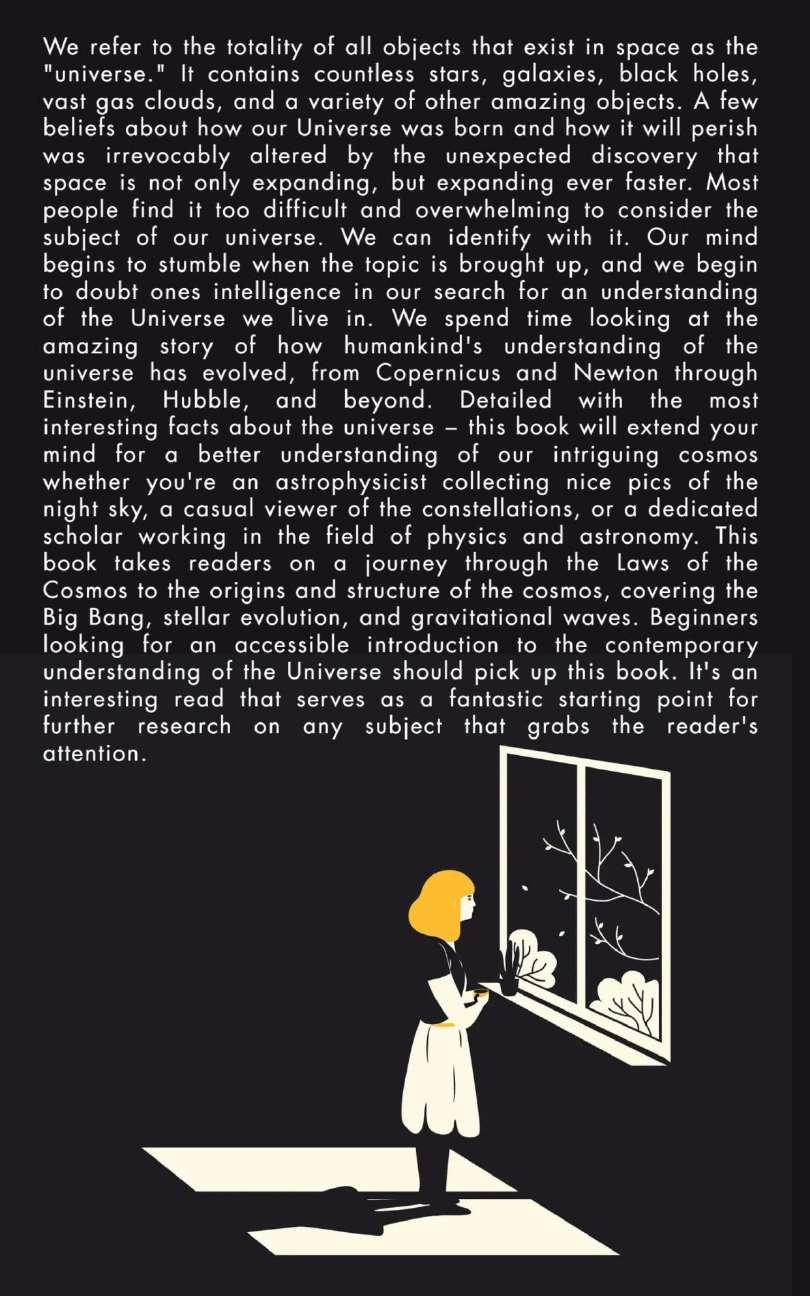
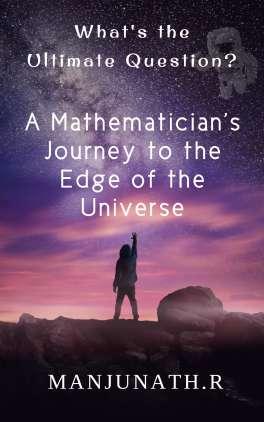















































 Louis Pasteur
Louis Pasteur



























































 [53] Alfred Lothar Wegener
[53] Alfred Lothar Wegener



































 [84] Leonardo da Vinci
[84] Leonardo da Vinci






















 Karl Schwarzschild
Karl Schwarzschild



 Sir Arthur Stanley Eddington
Subrahmanyan Chandrasekhar
Sir Arthur Stanley Eddington
Subrahmanyan Chandrasekhar



























 Einstein in 1893 (age 14)
Einstein in 1893 (age 14)



 Kepler's Supernova Remnant: Composite of X-ray, Optical, and Infrared Data
Kepler's Supernova Remnant: Composite of X-ray, Optical, and Infrared Data


 Statue of Nikola Tesla in the State Park of the Niagara Falls
Statue of Nikola Tesla in the State Park of the Niagara Falls






